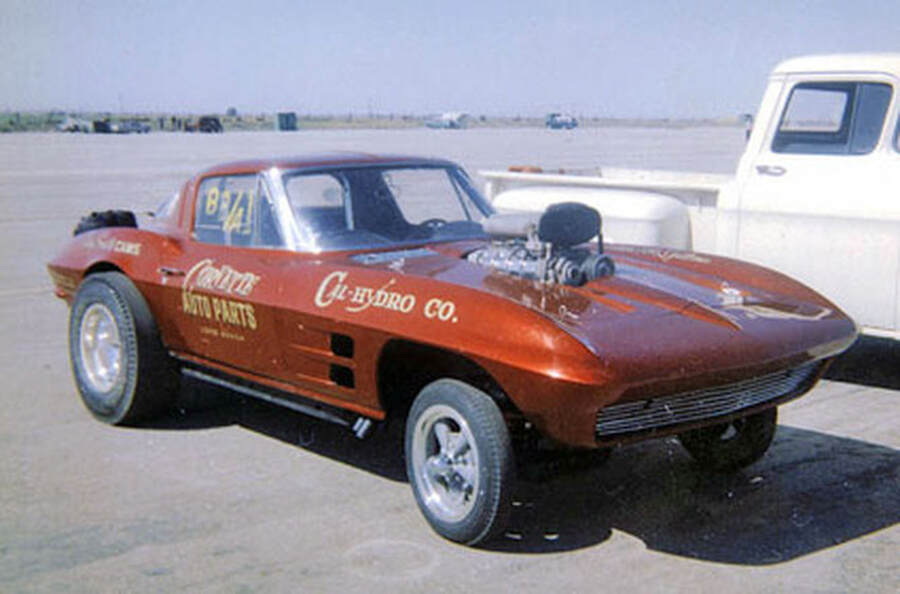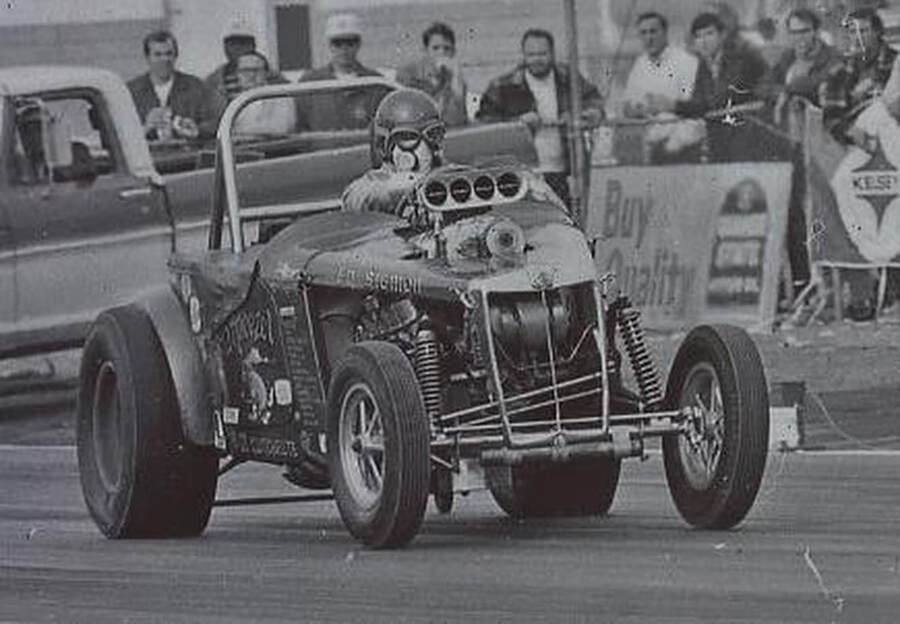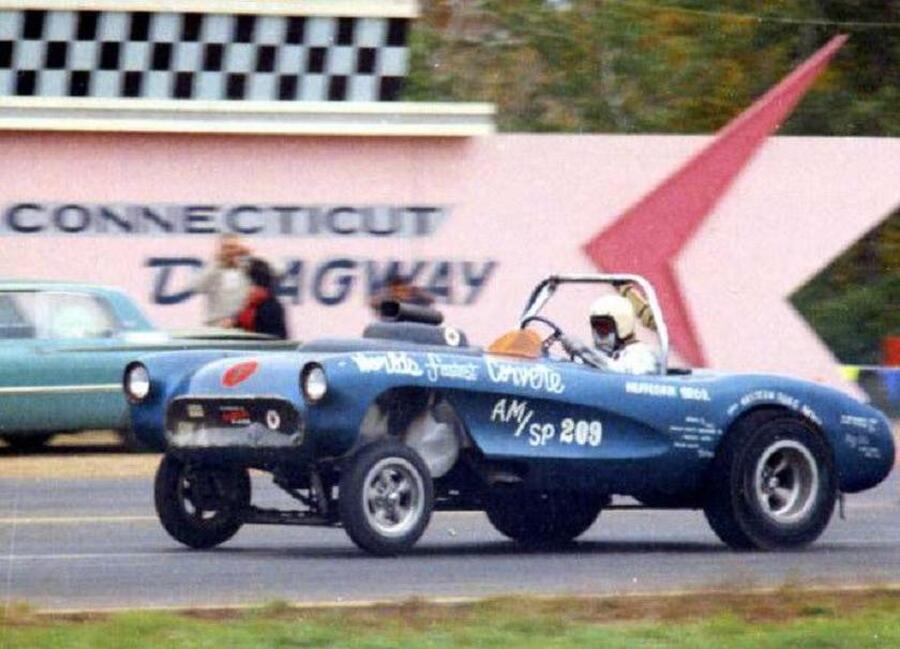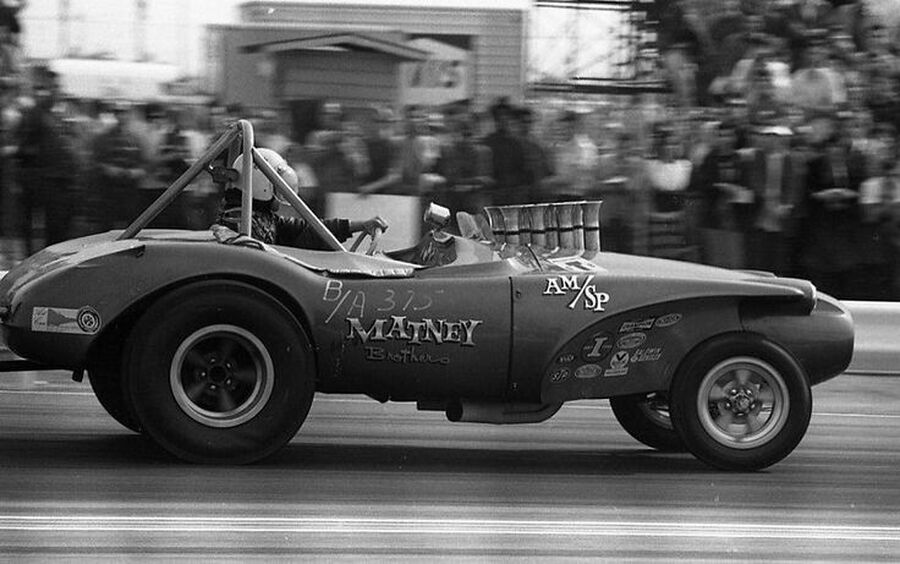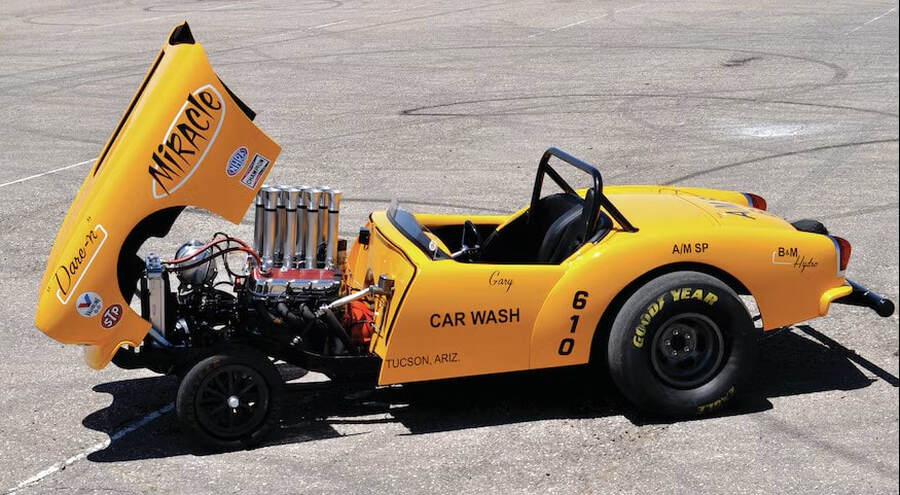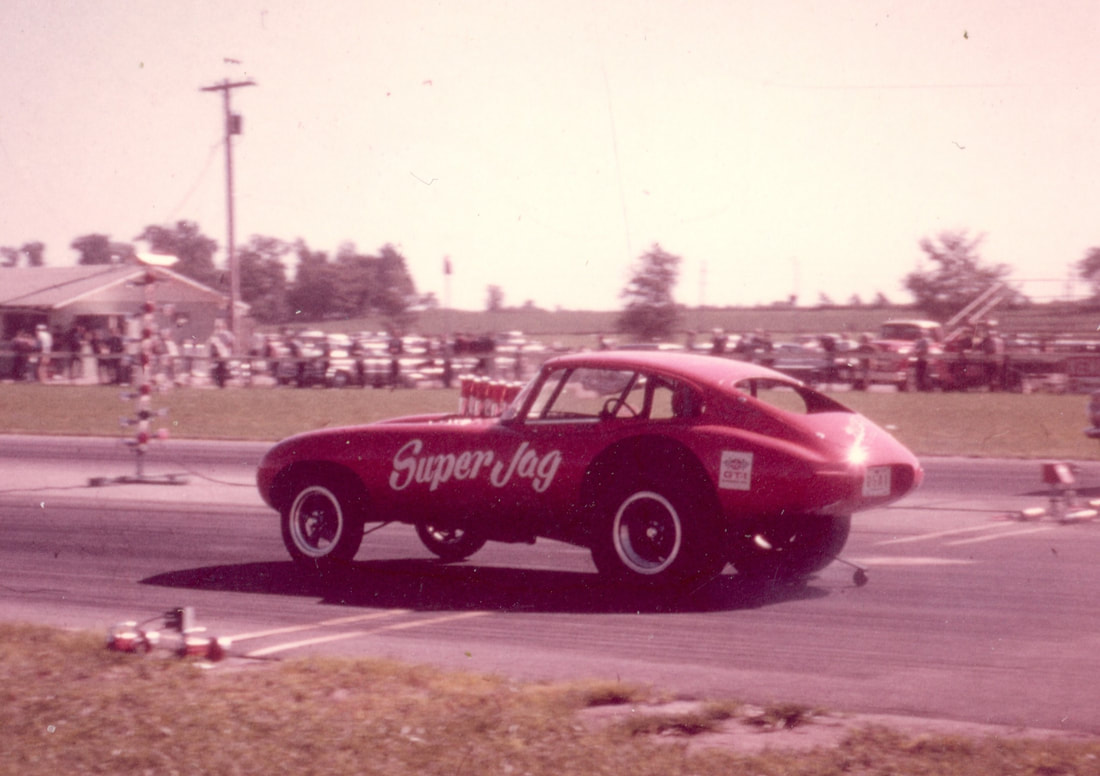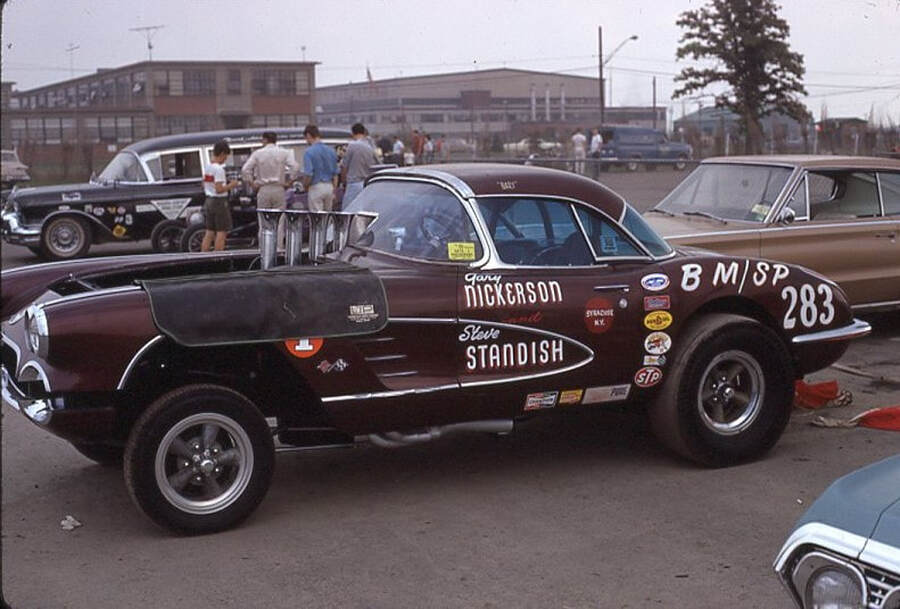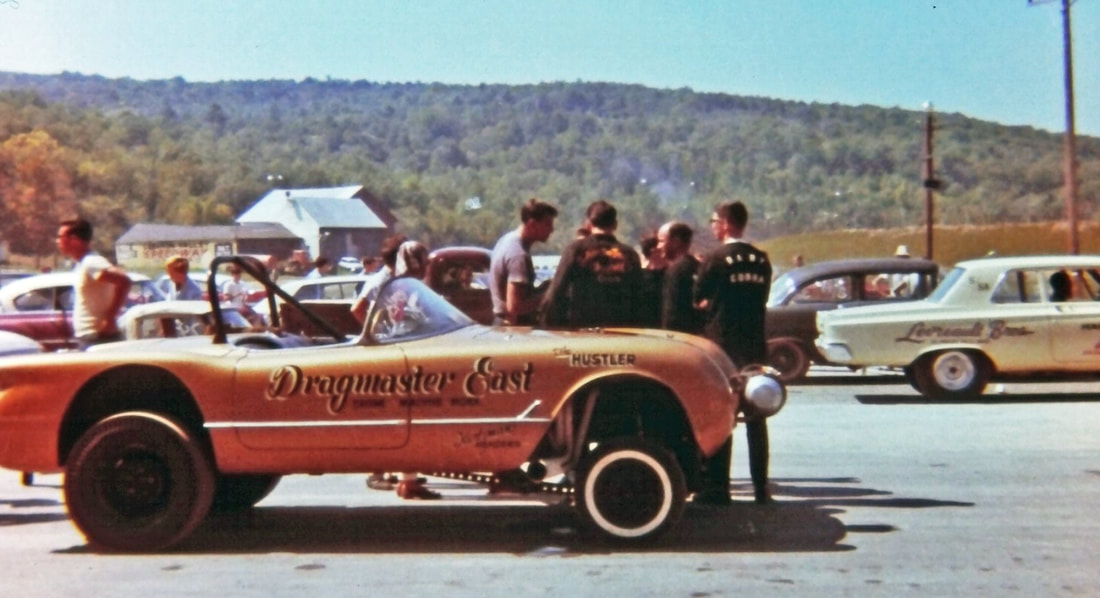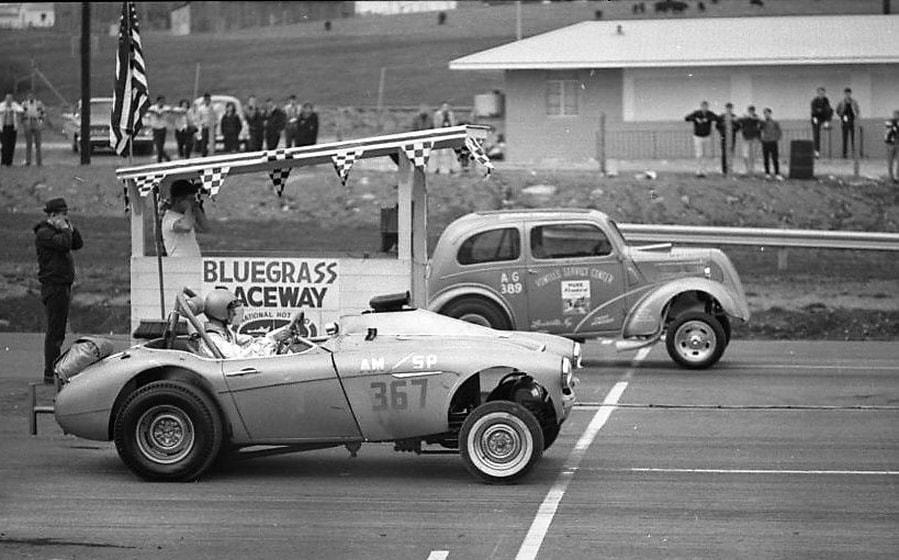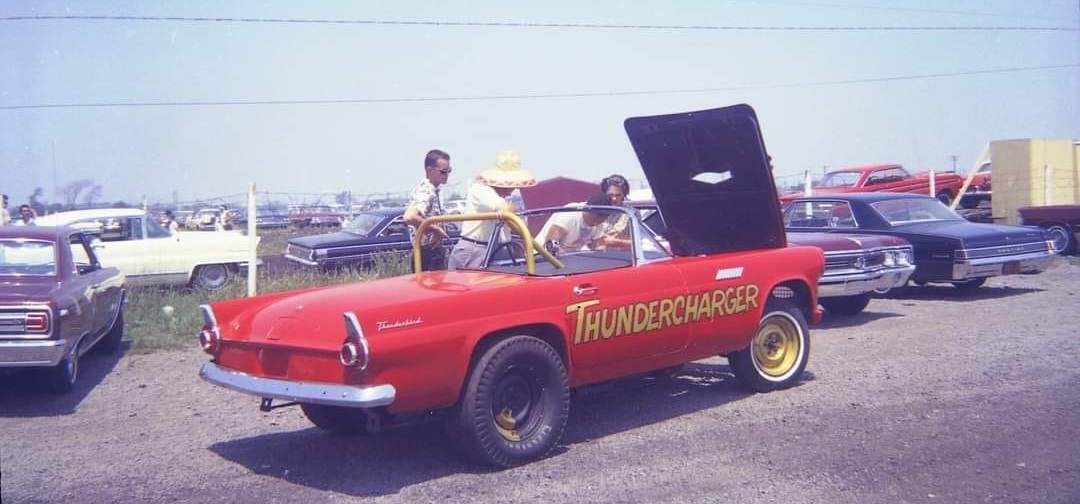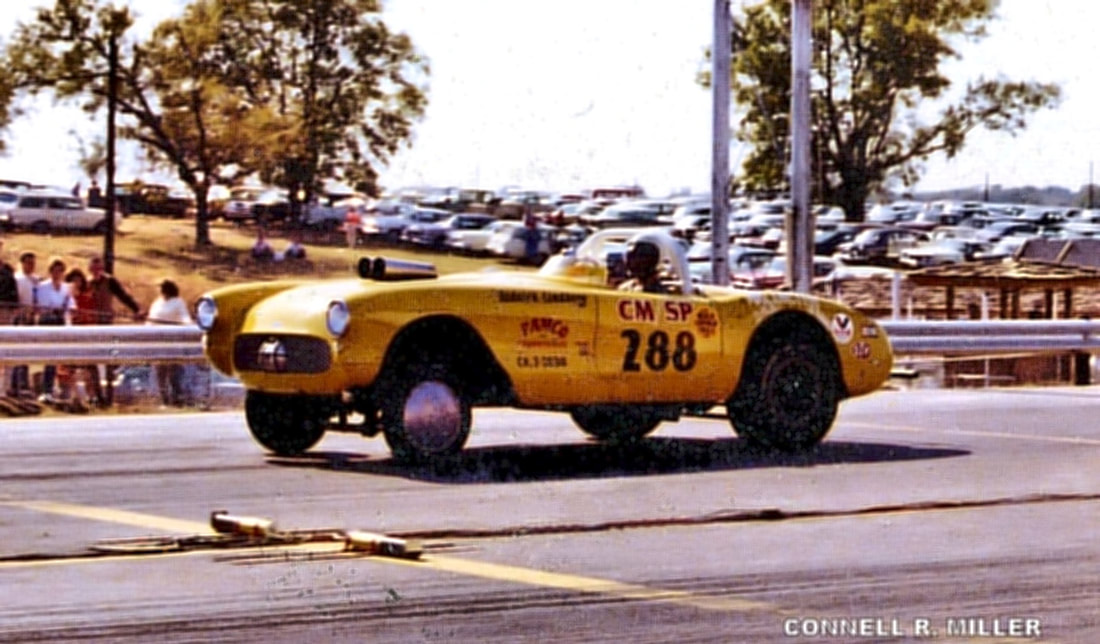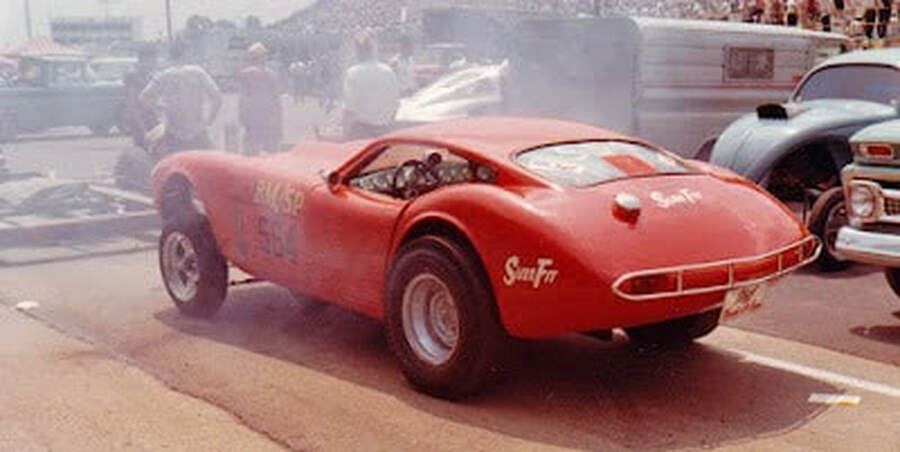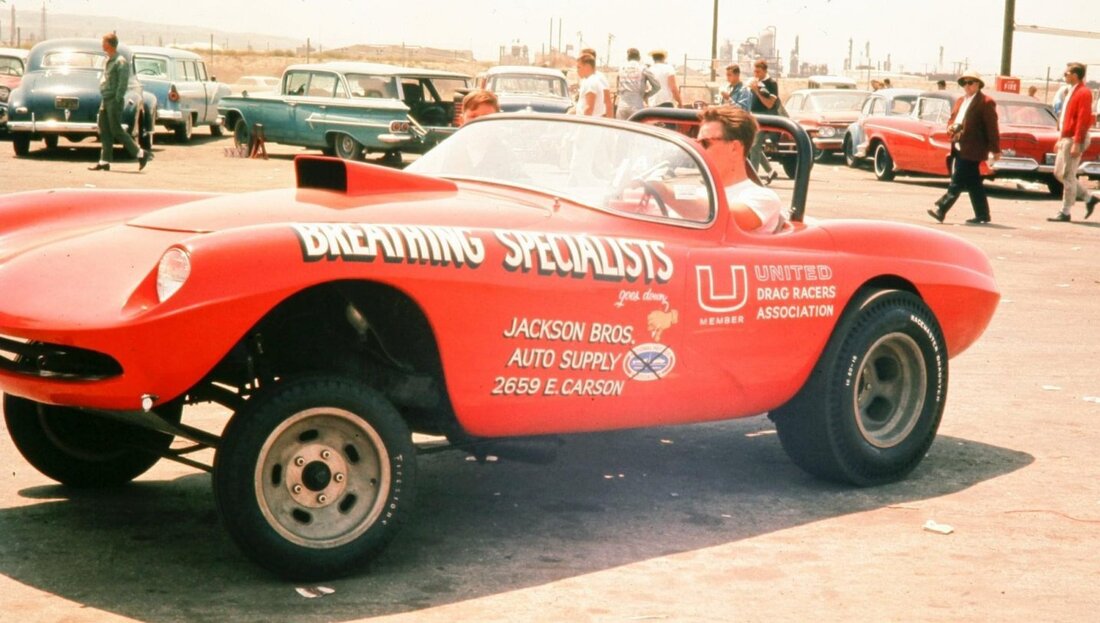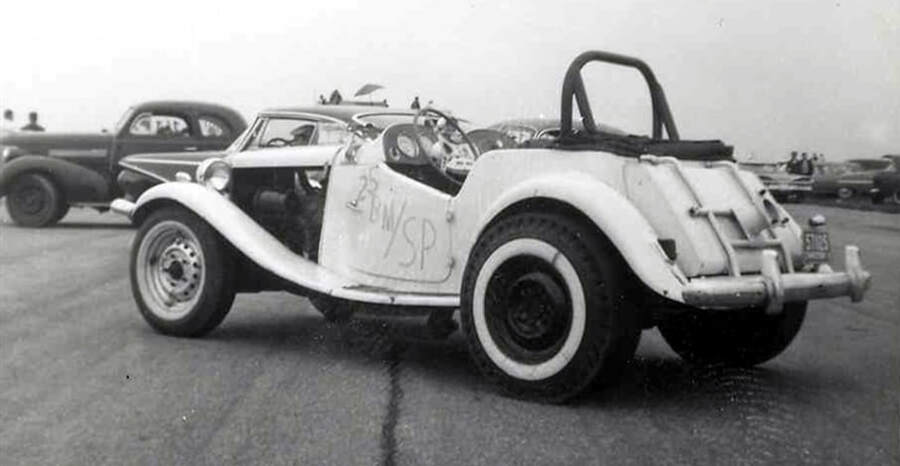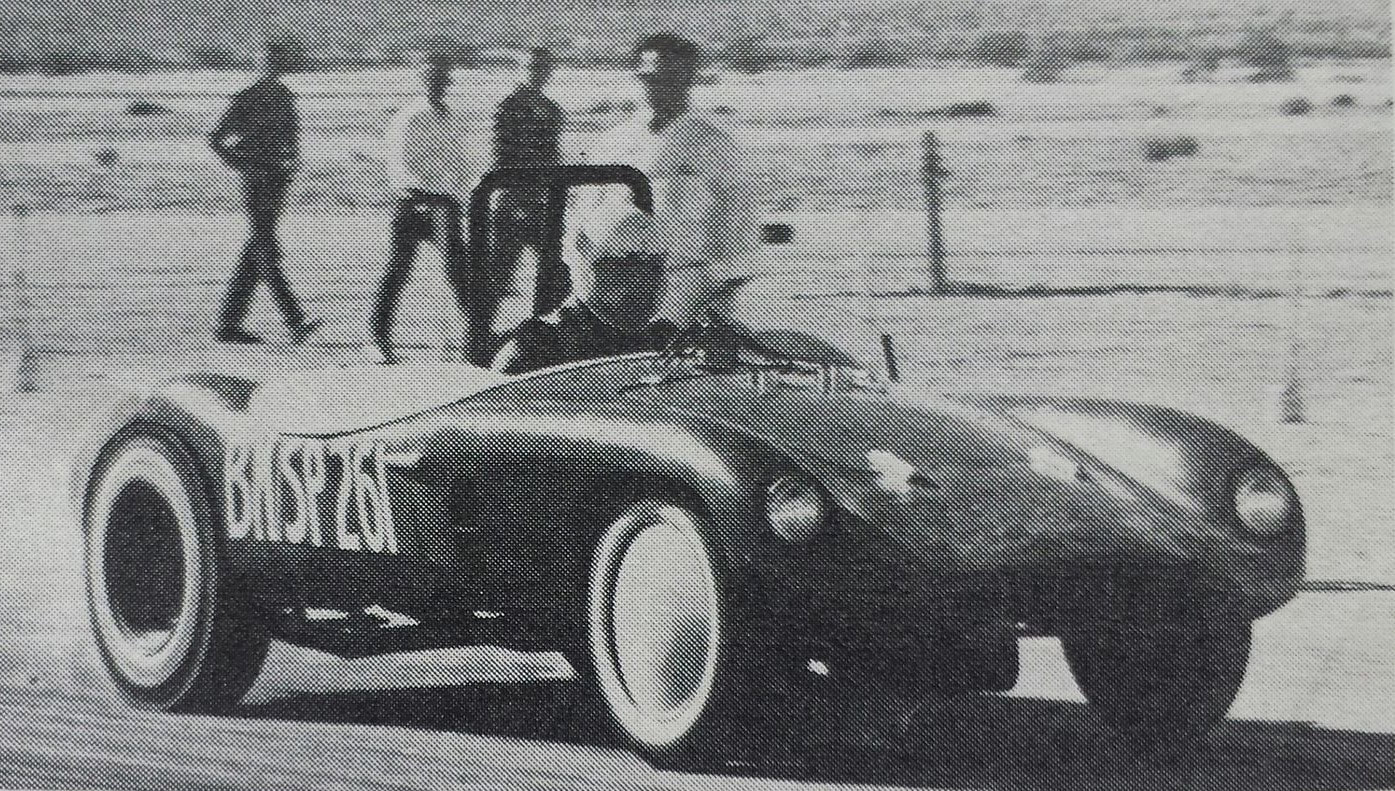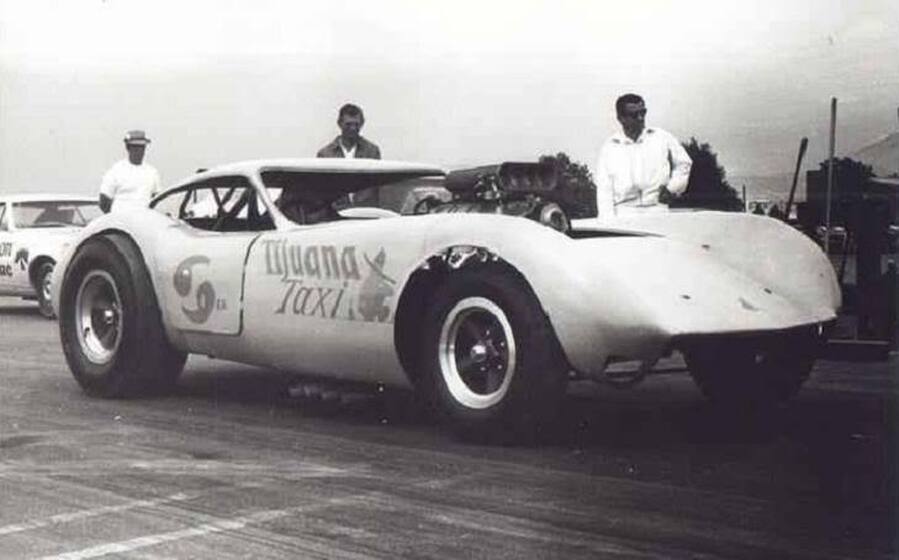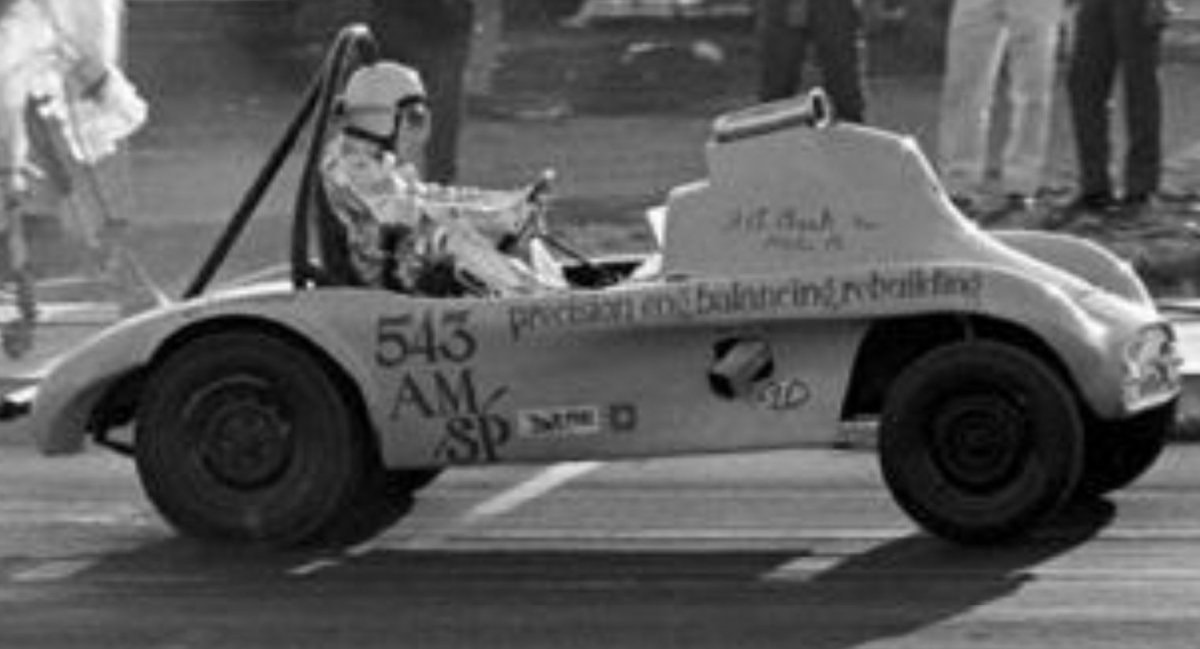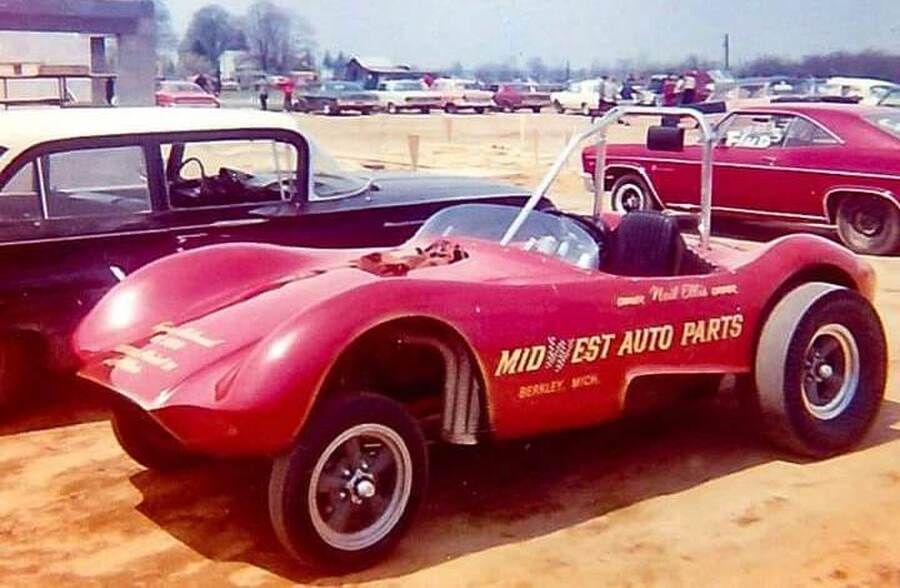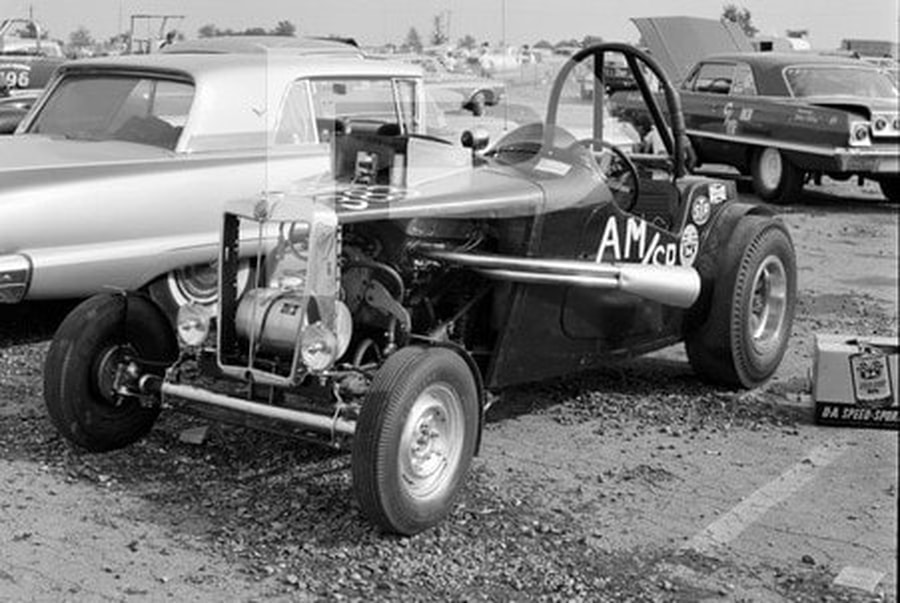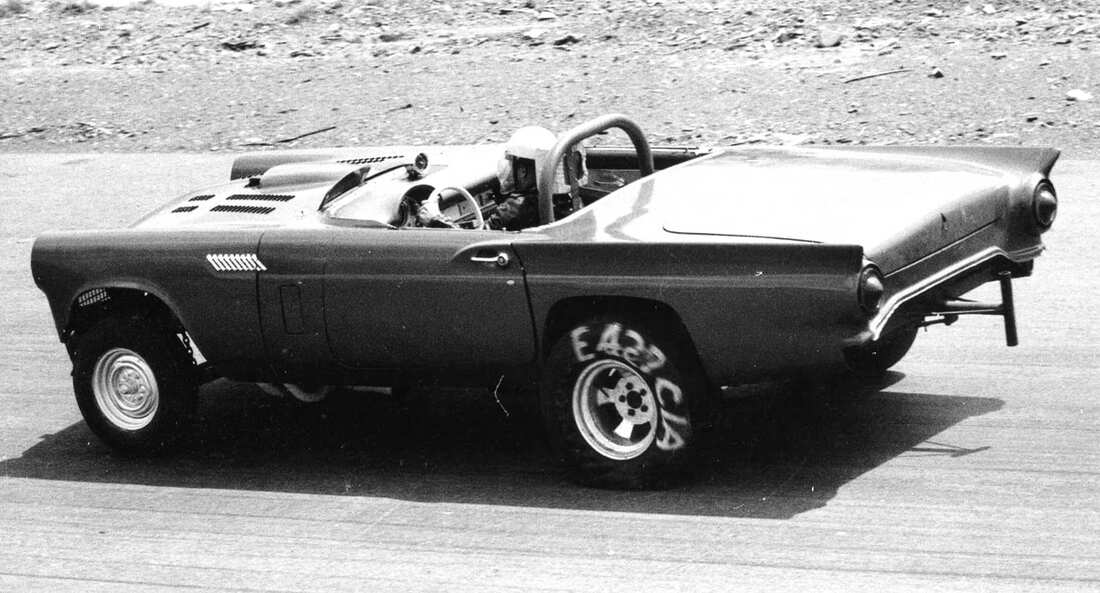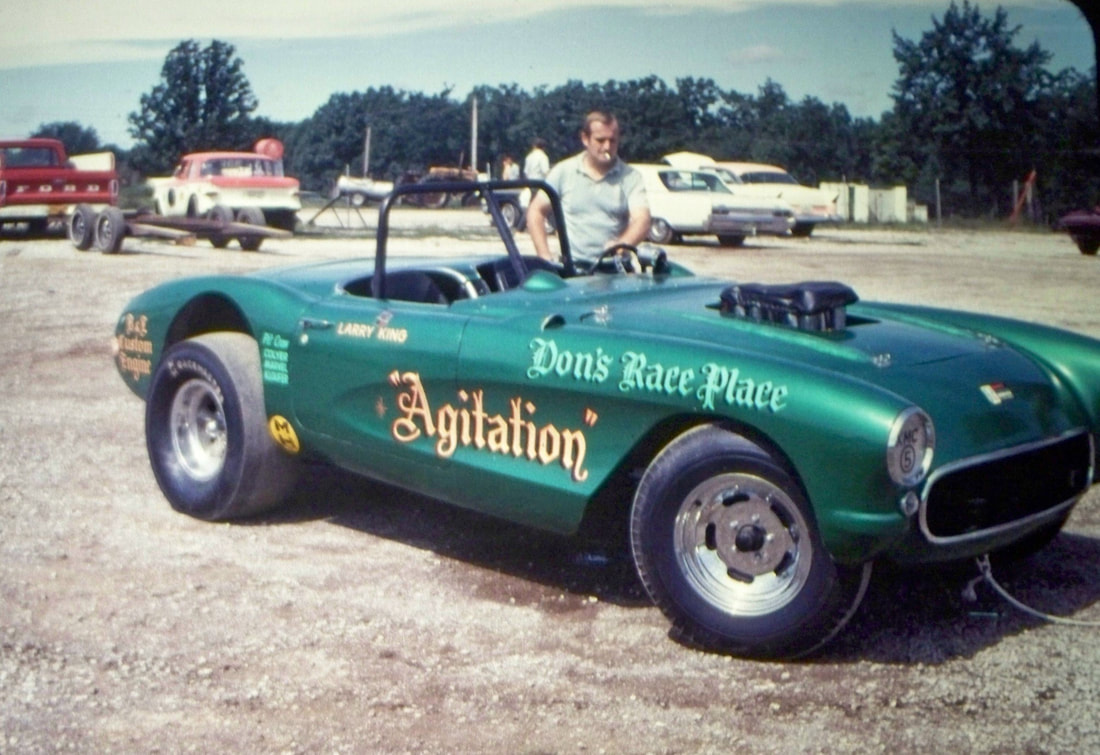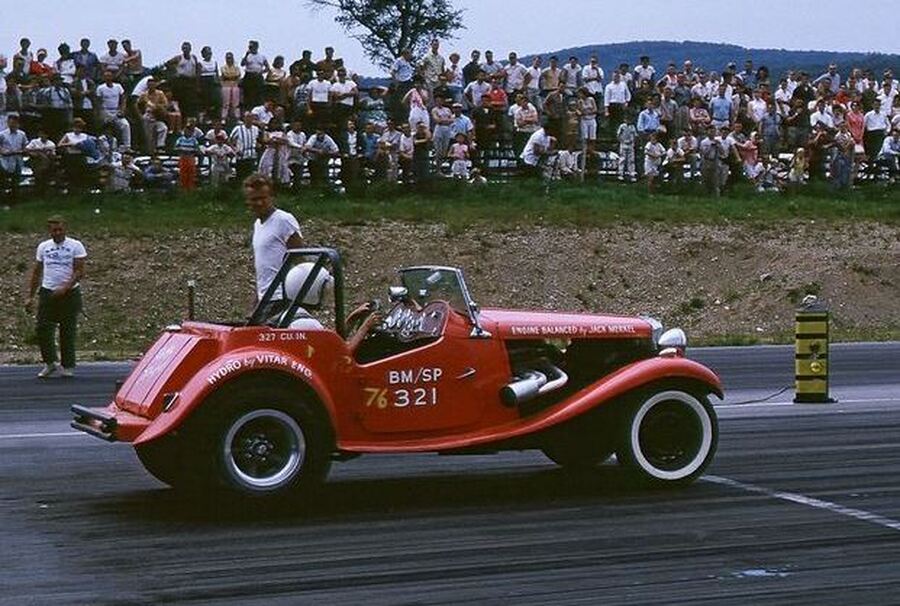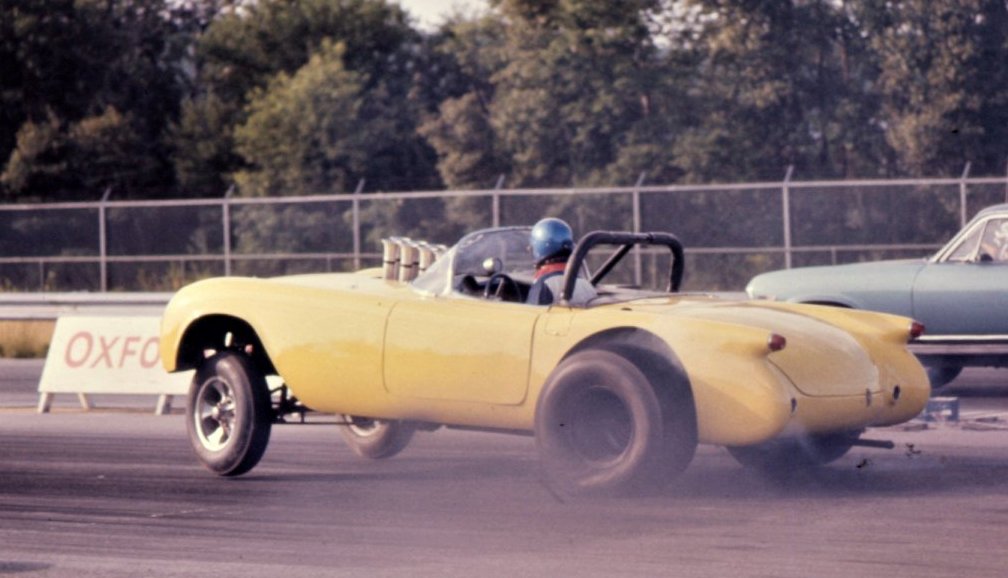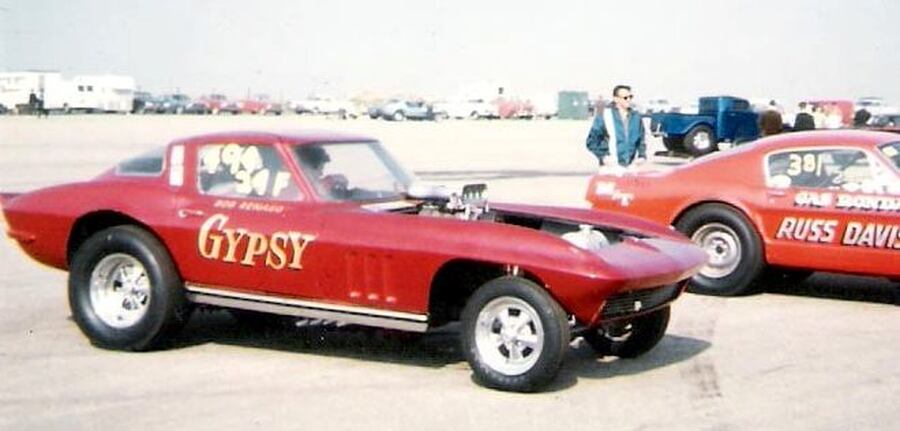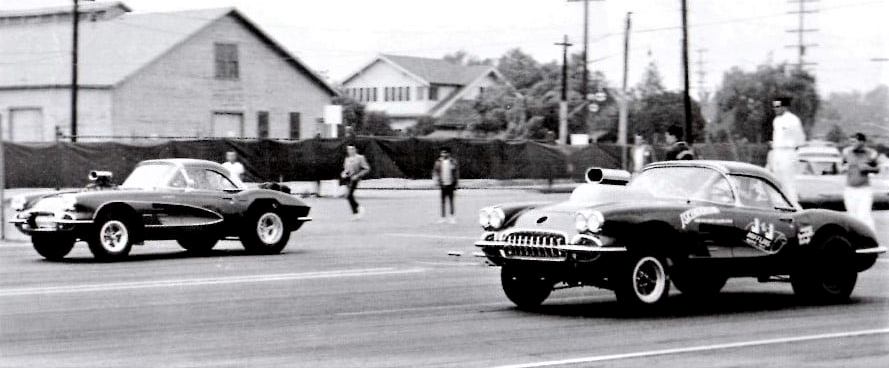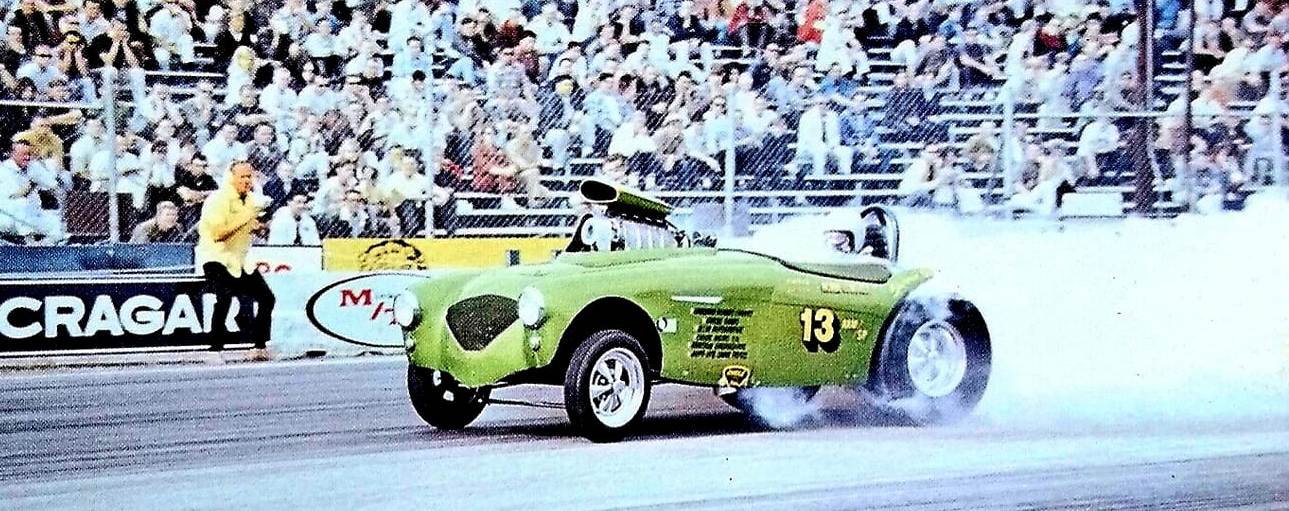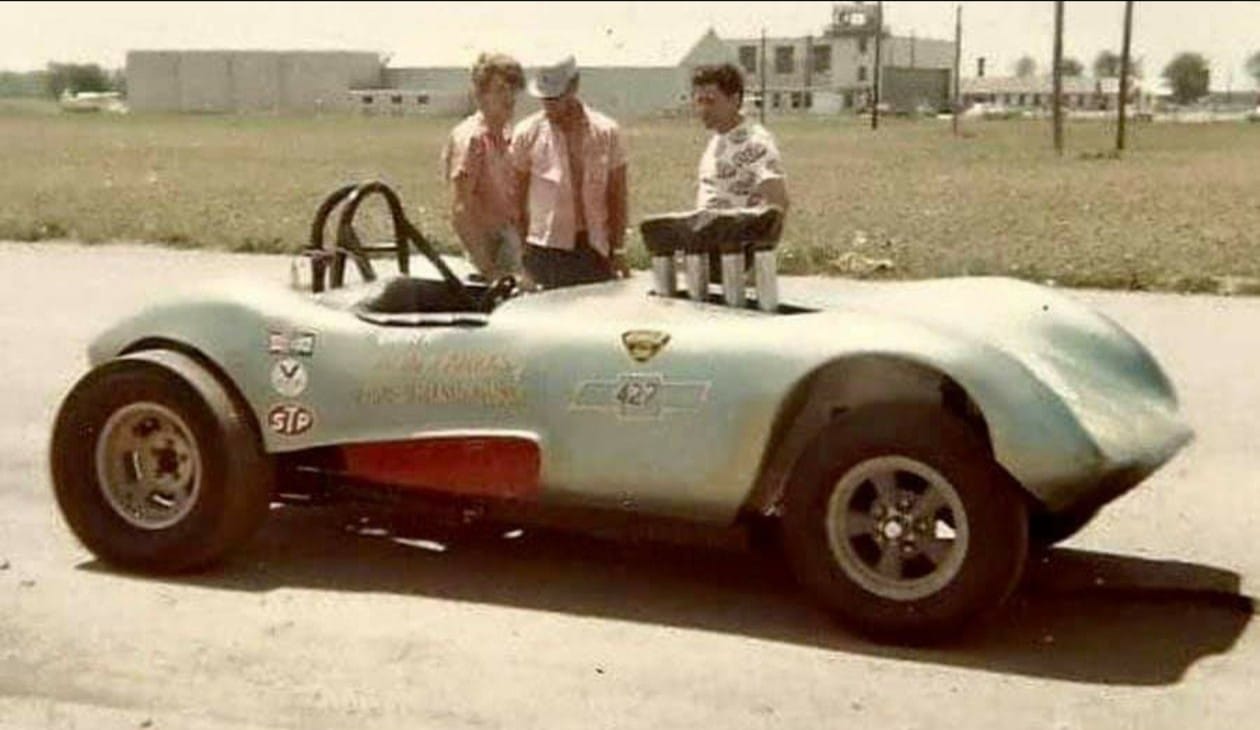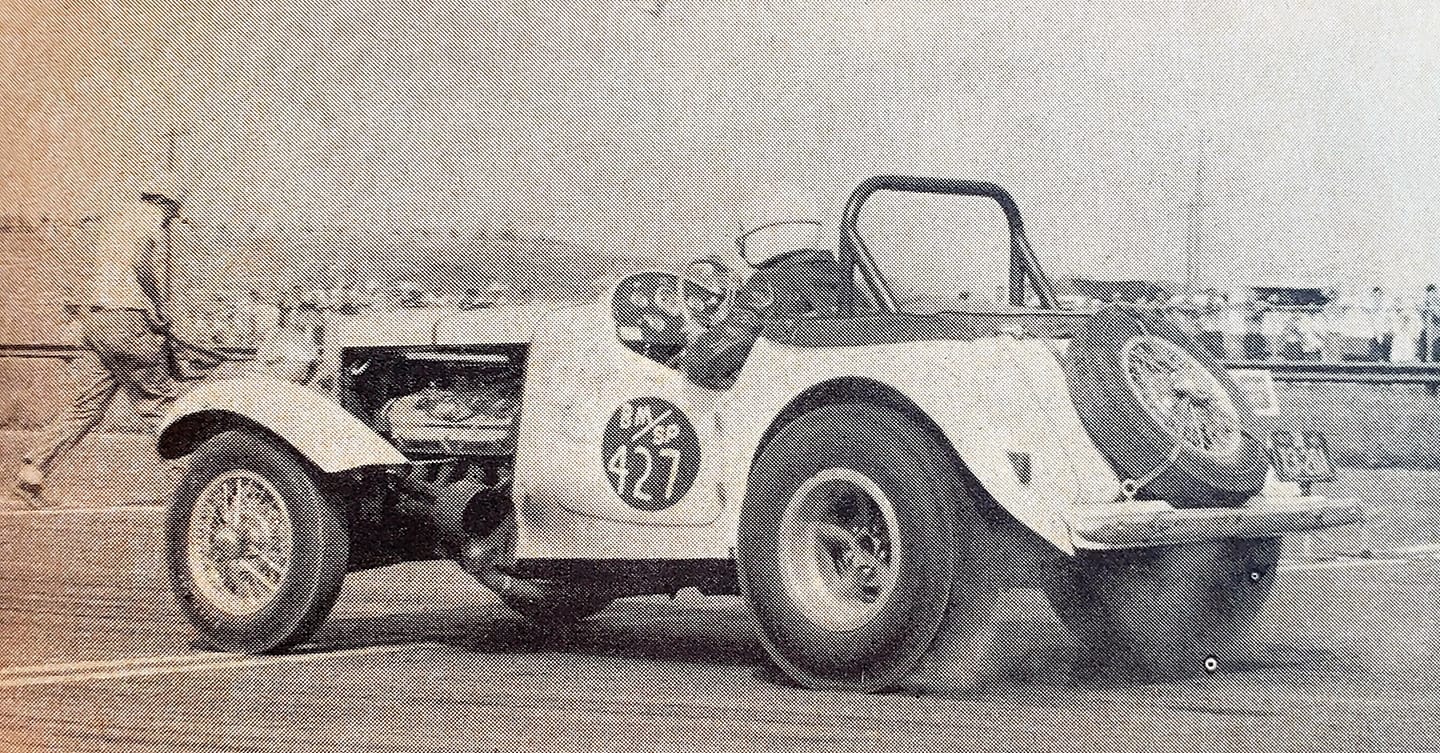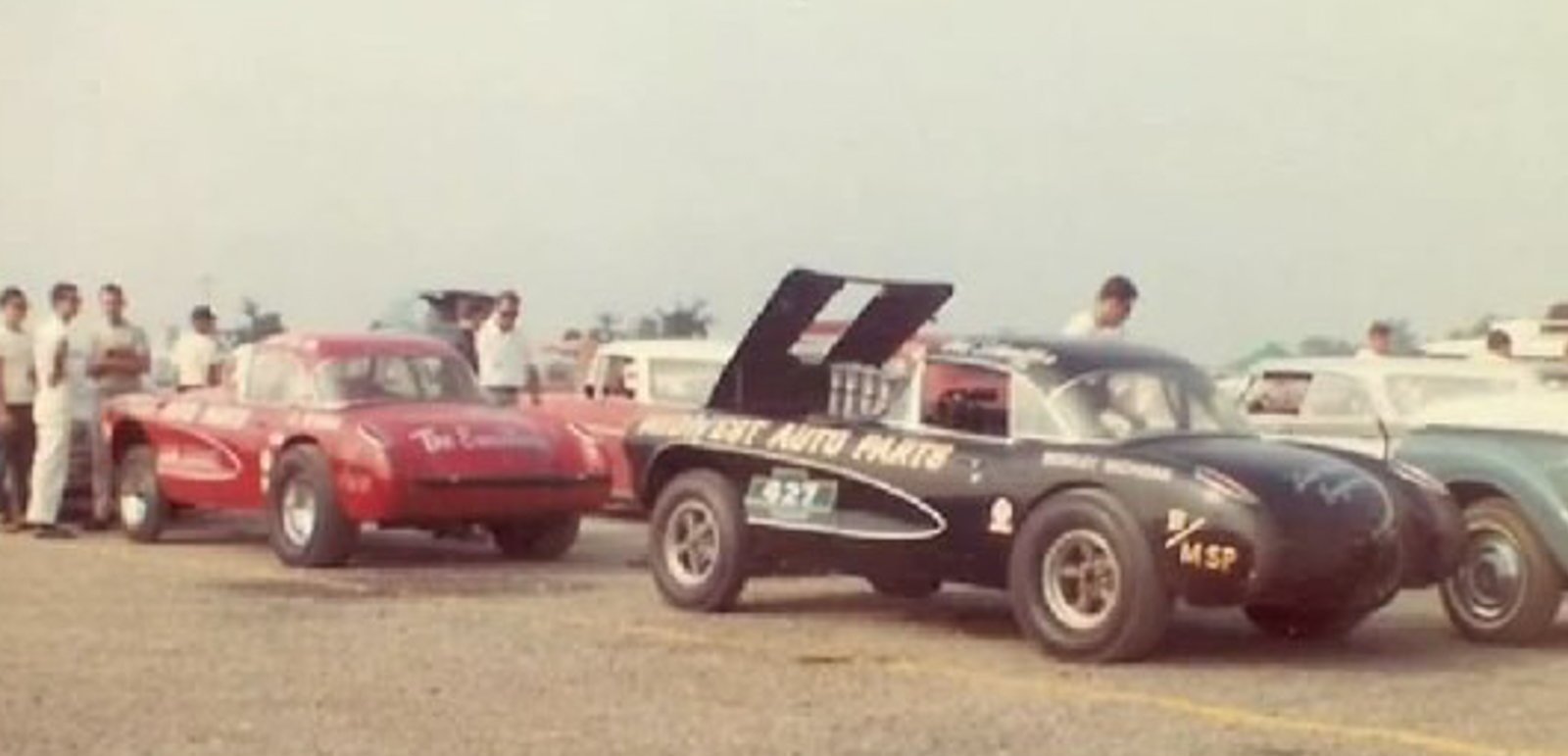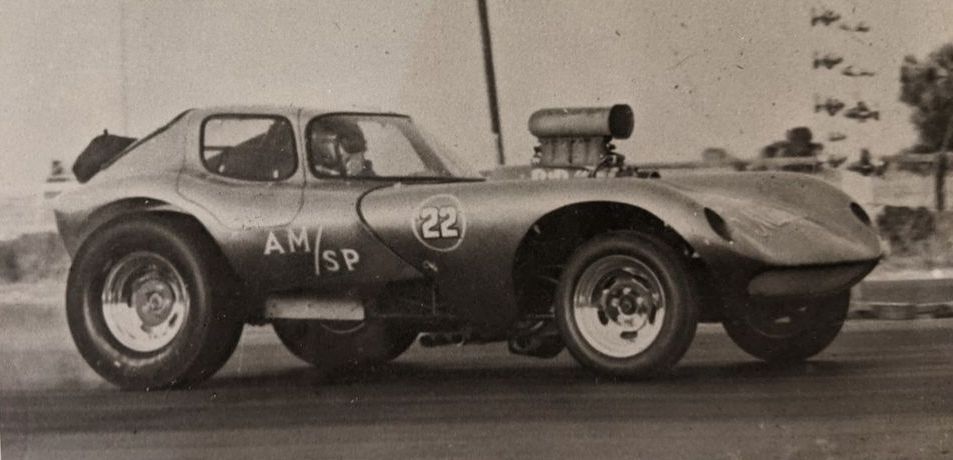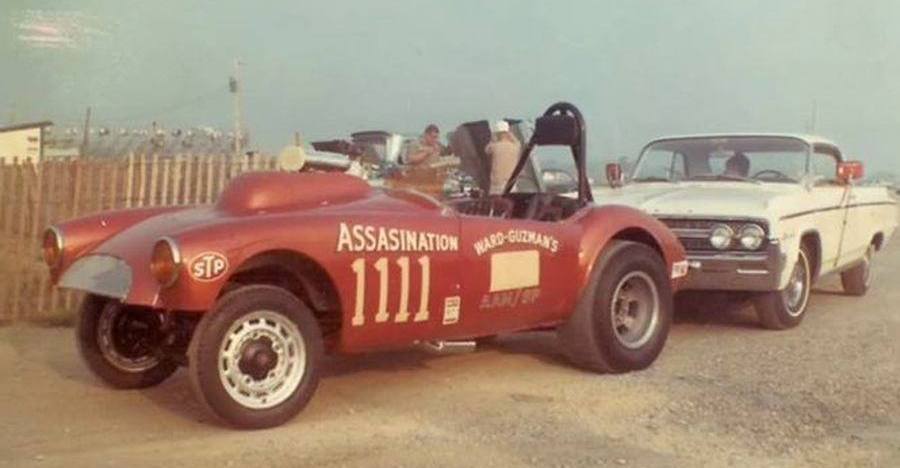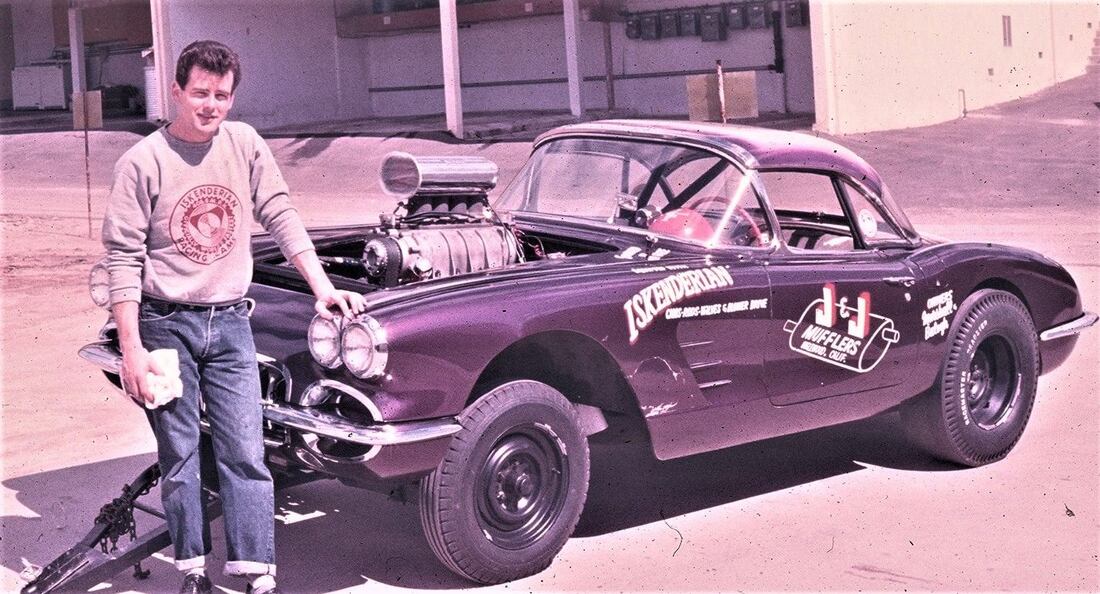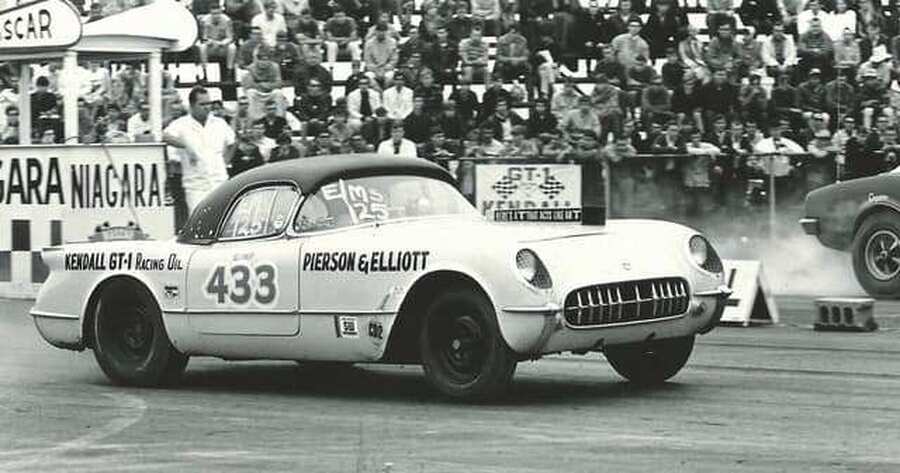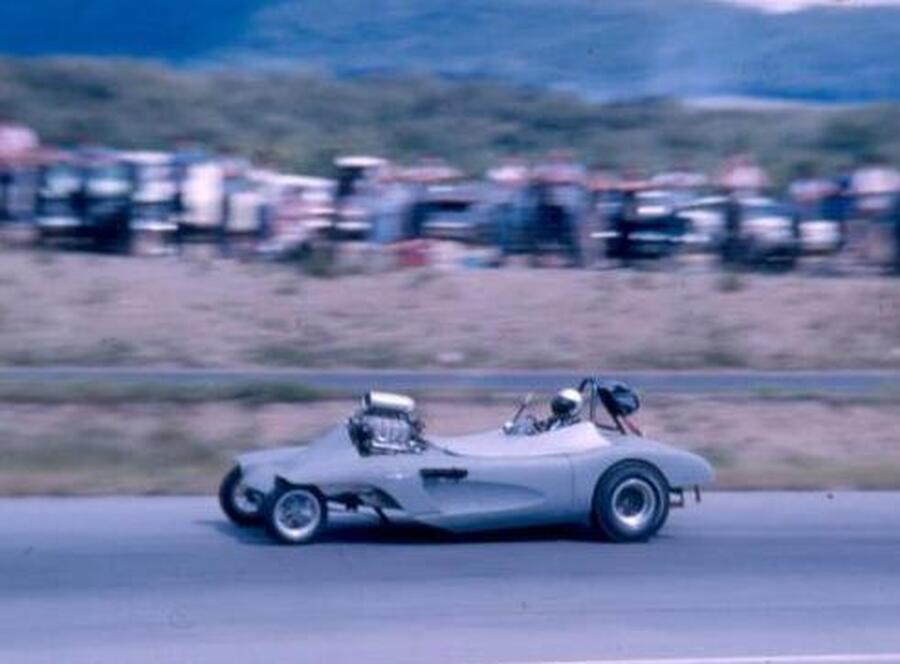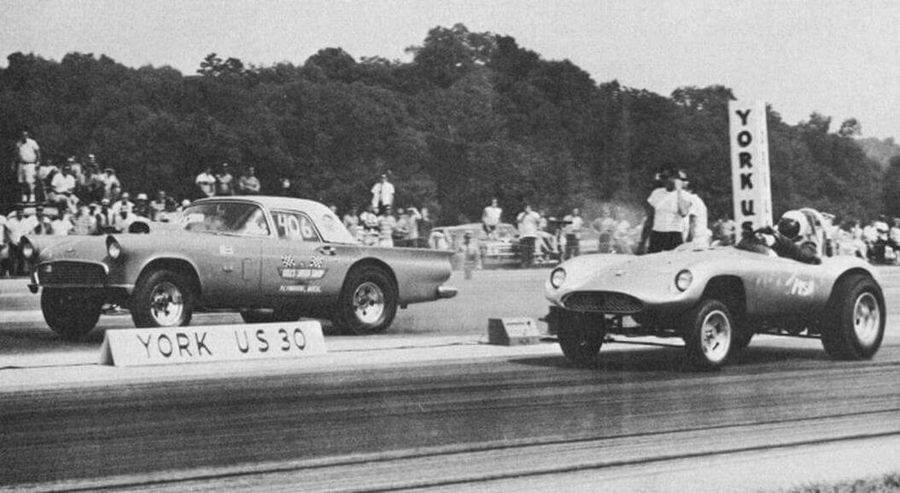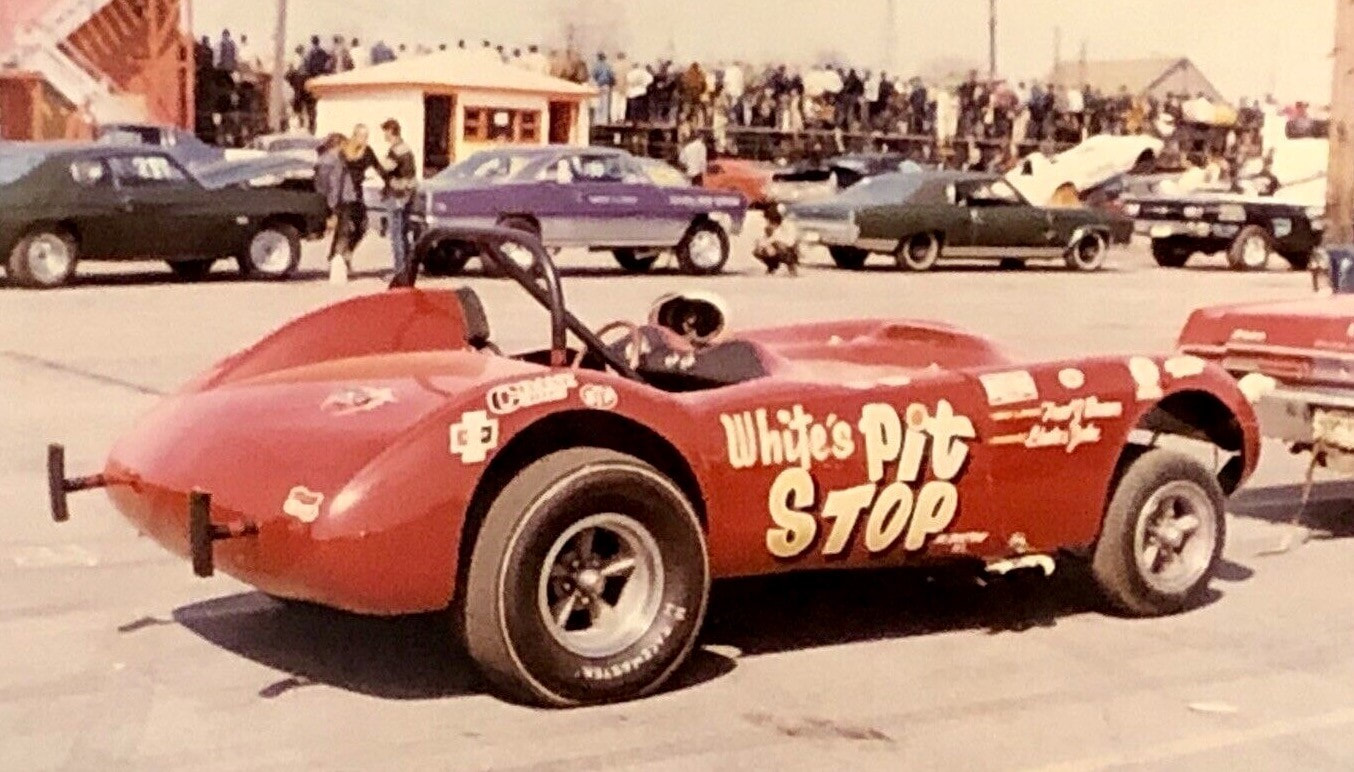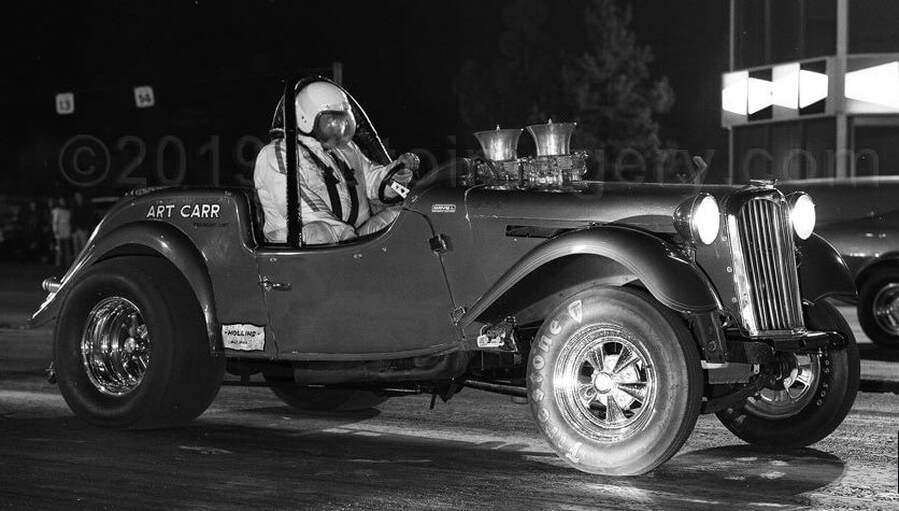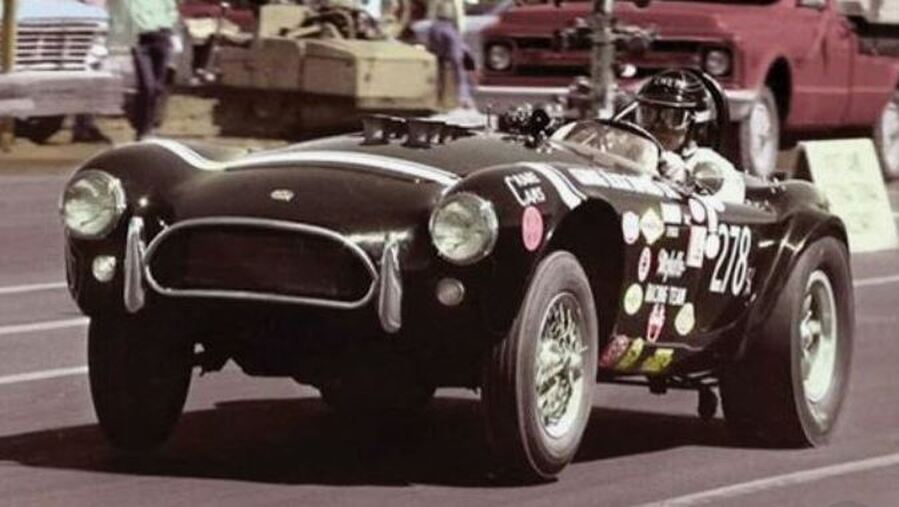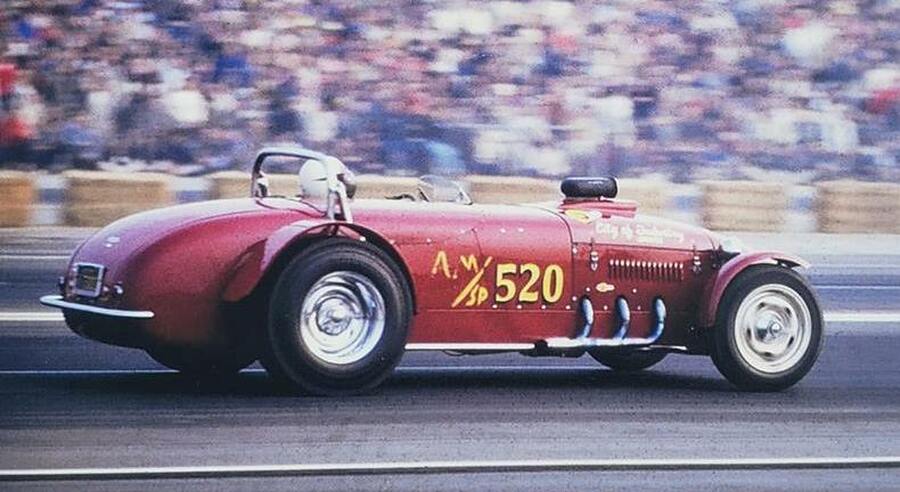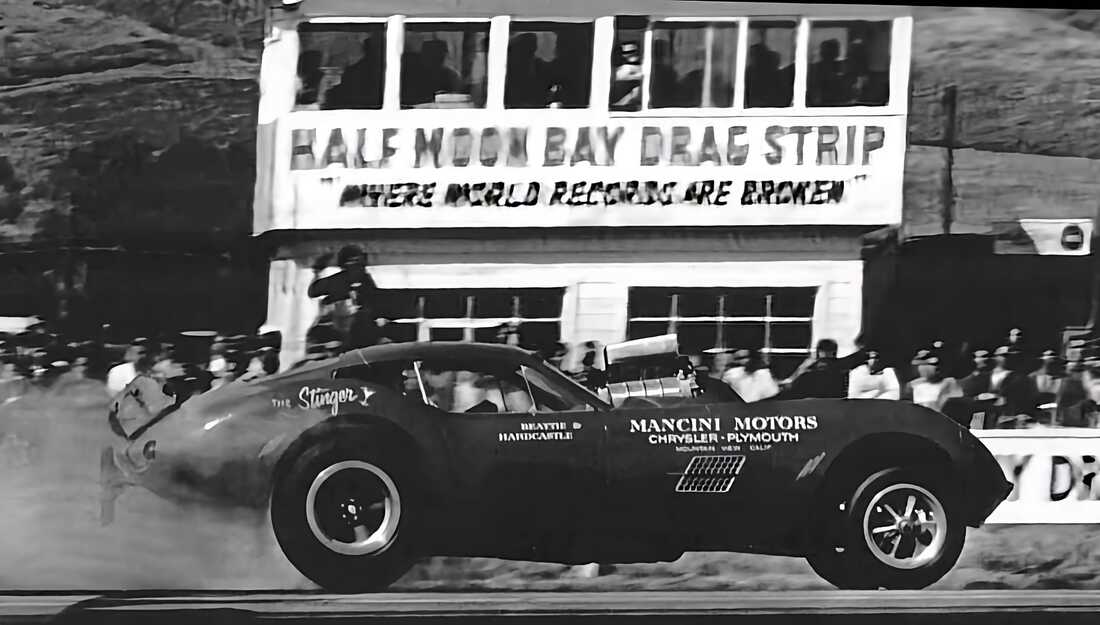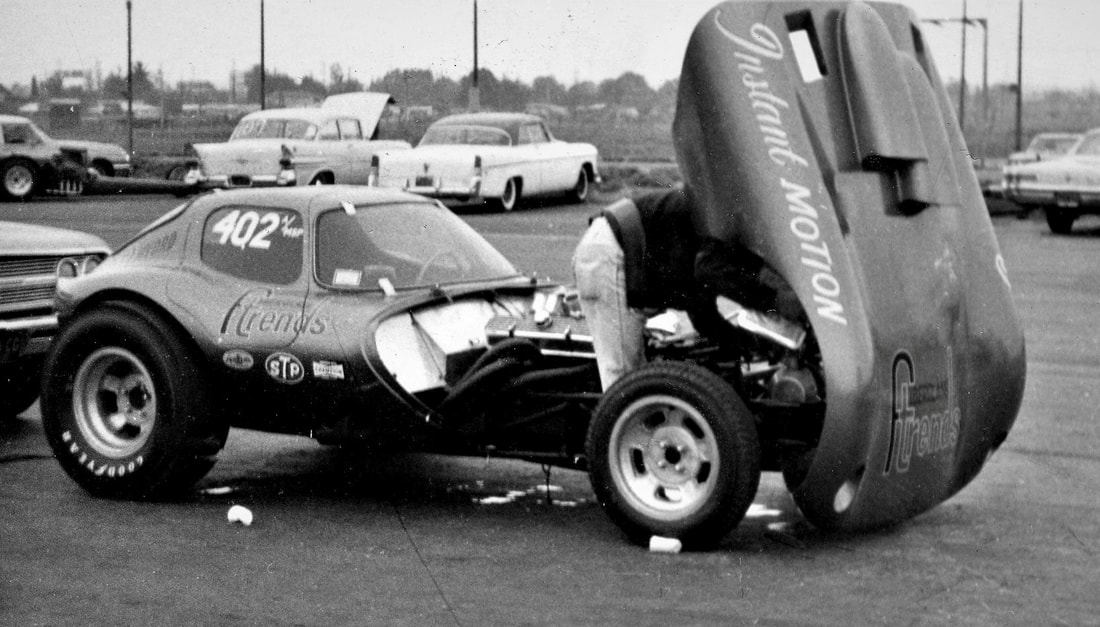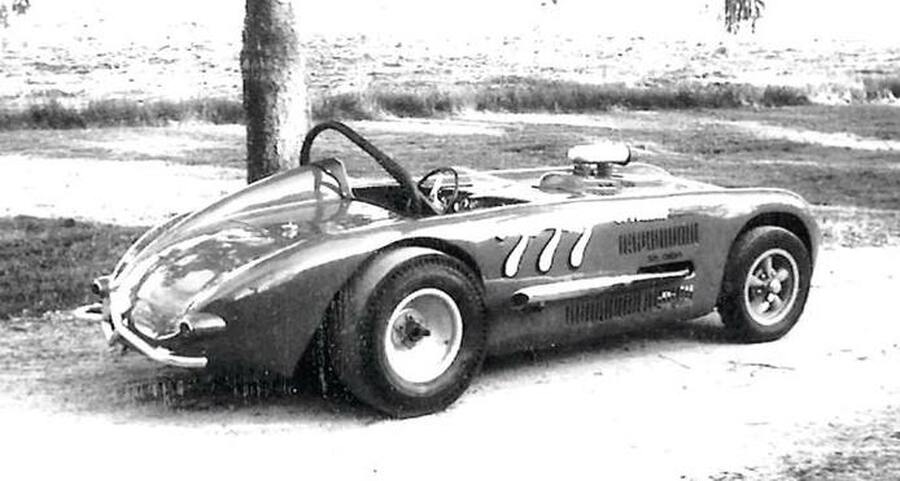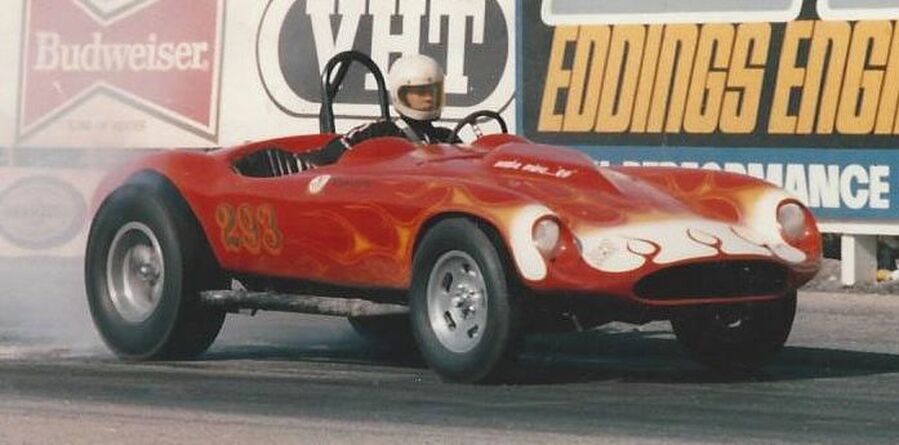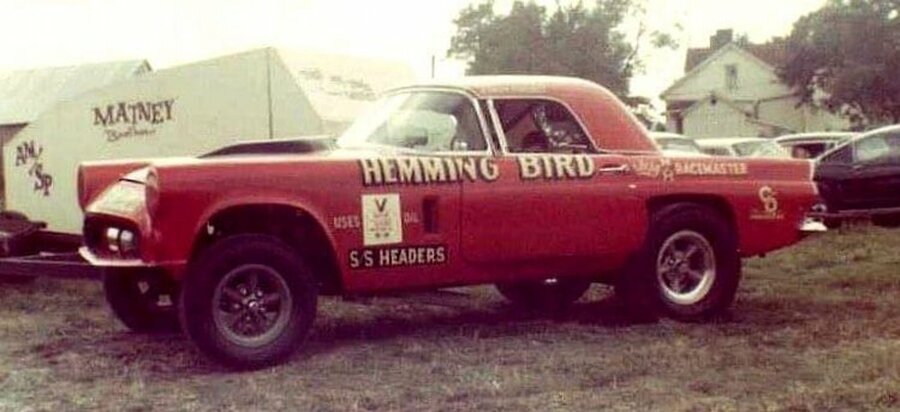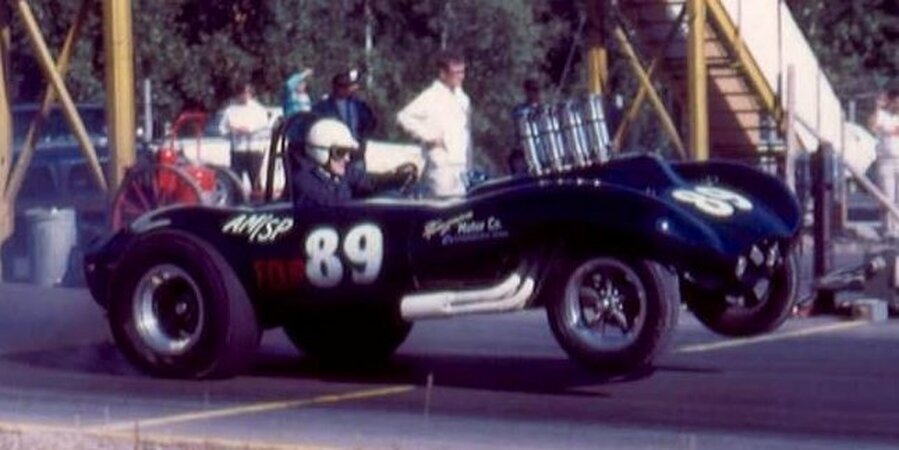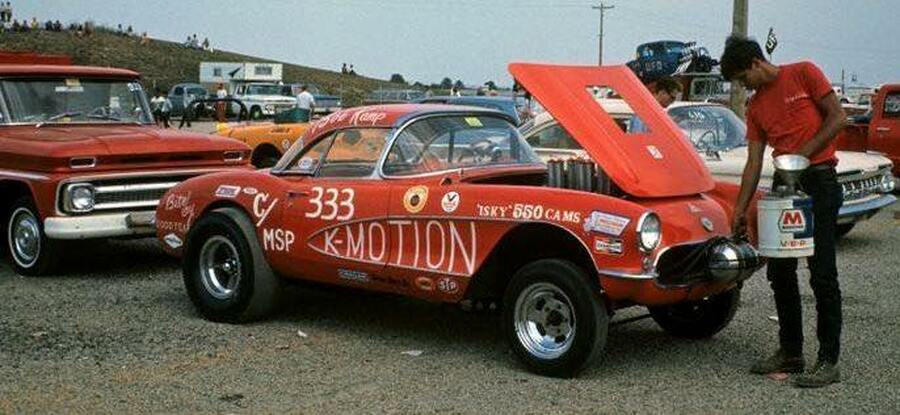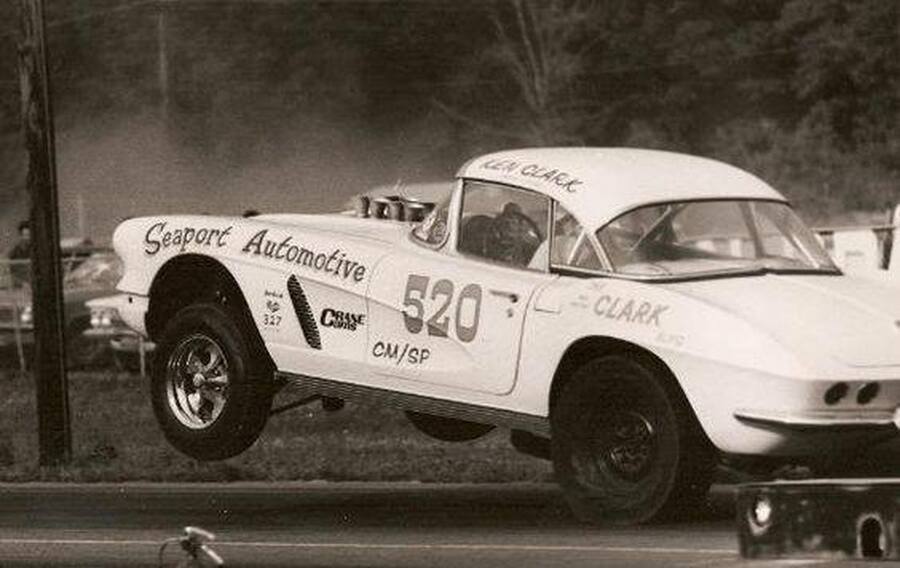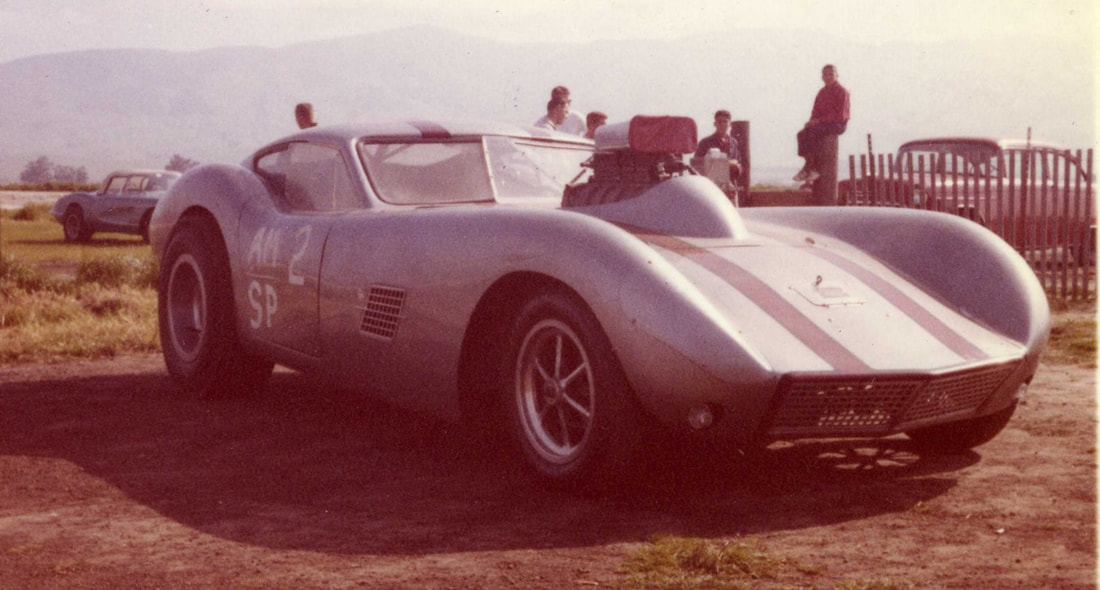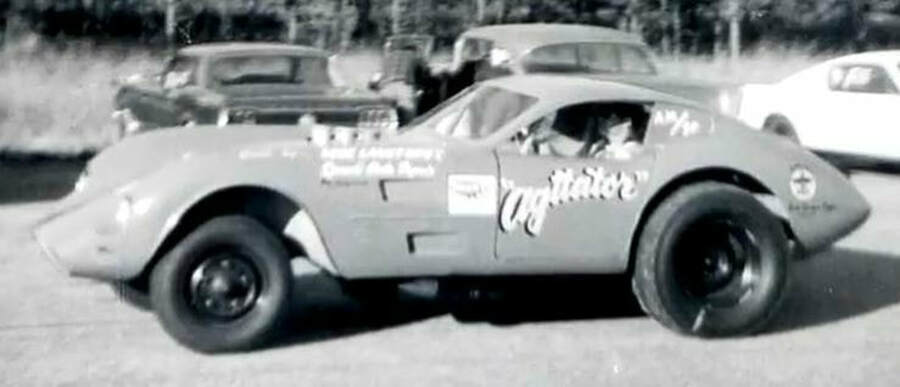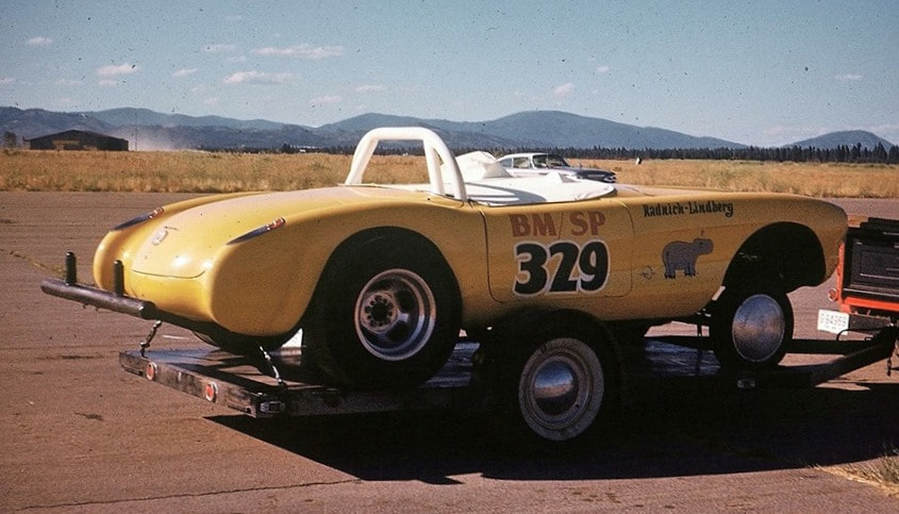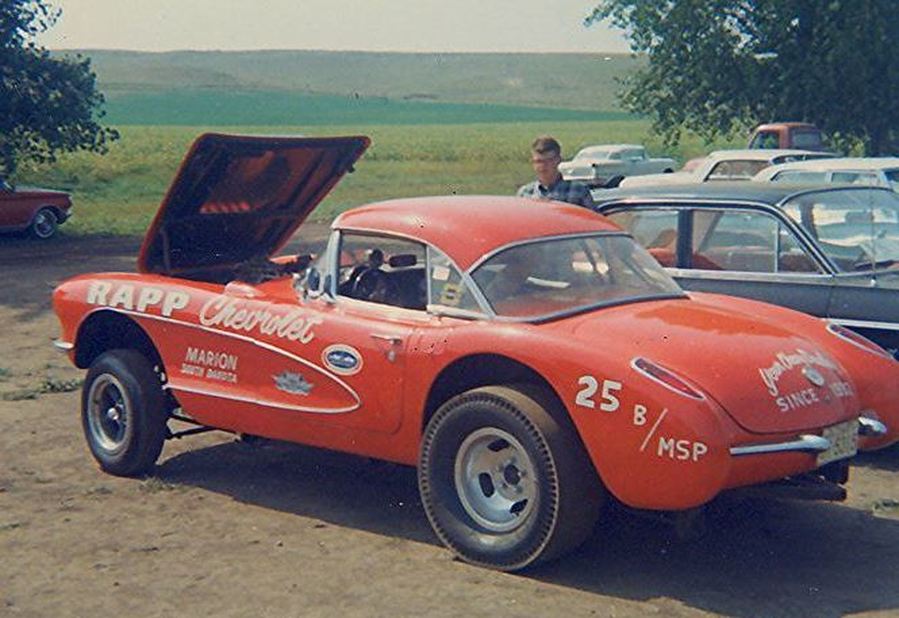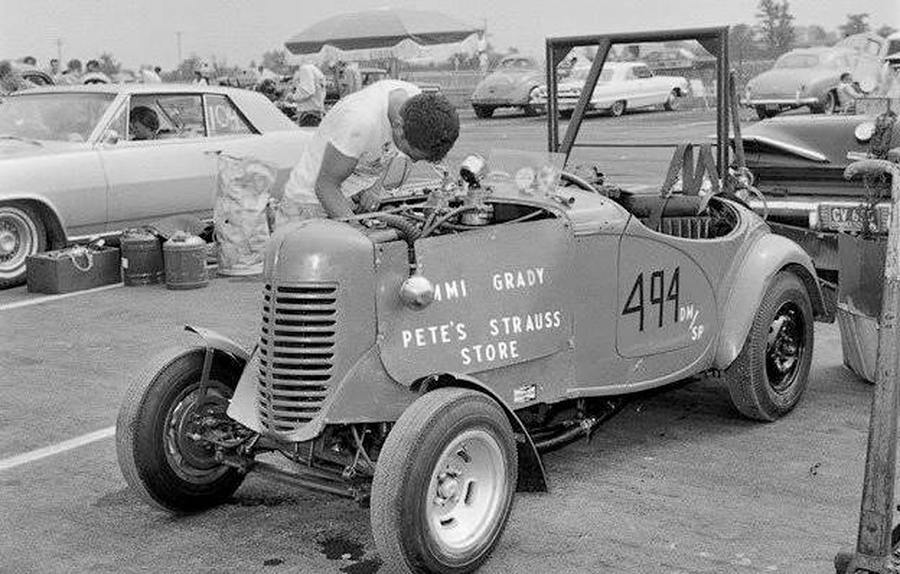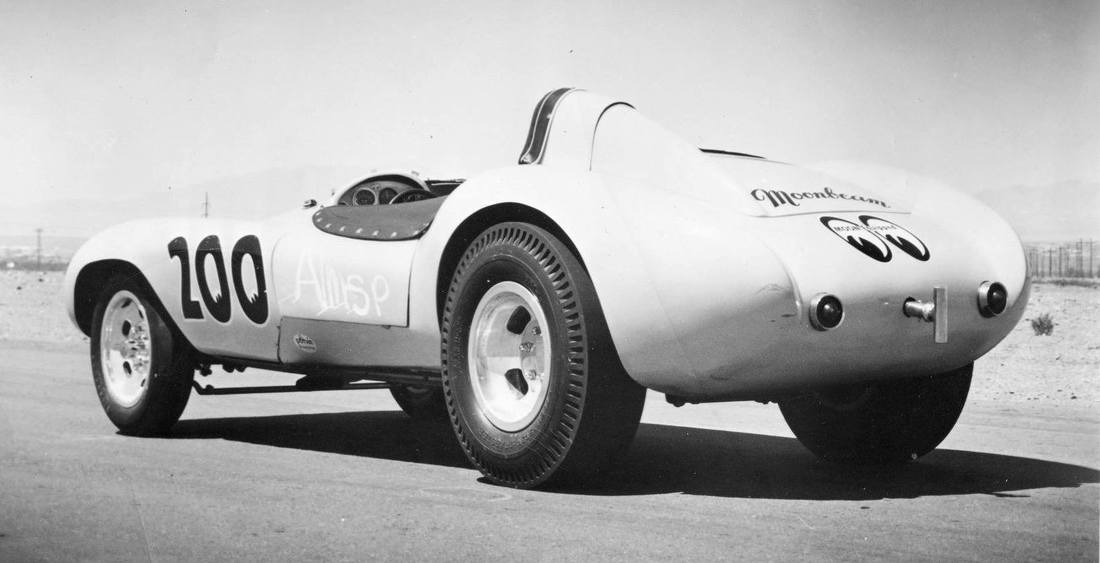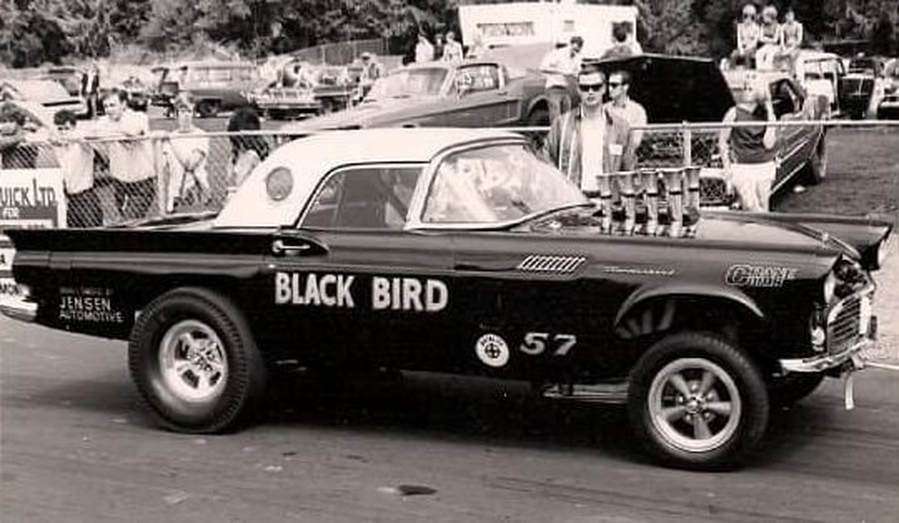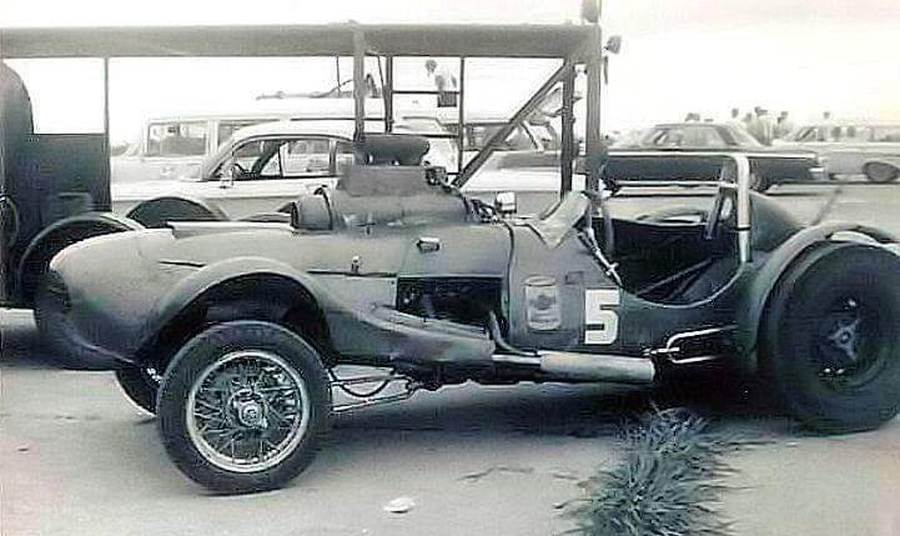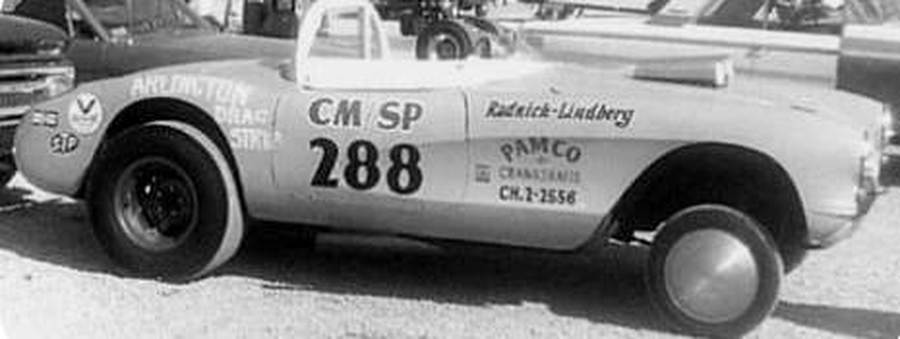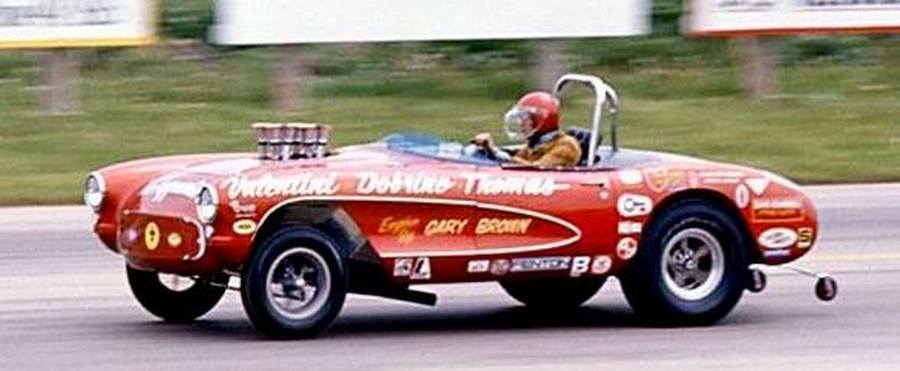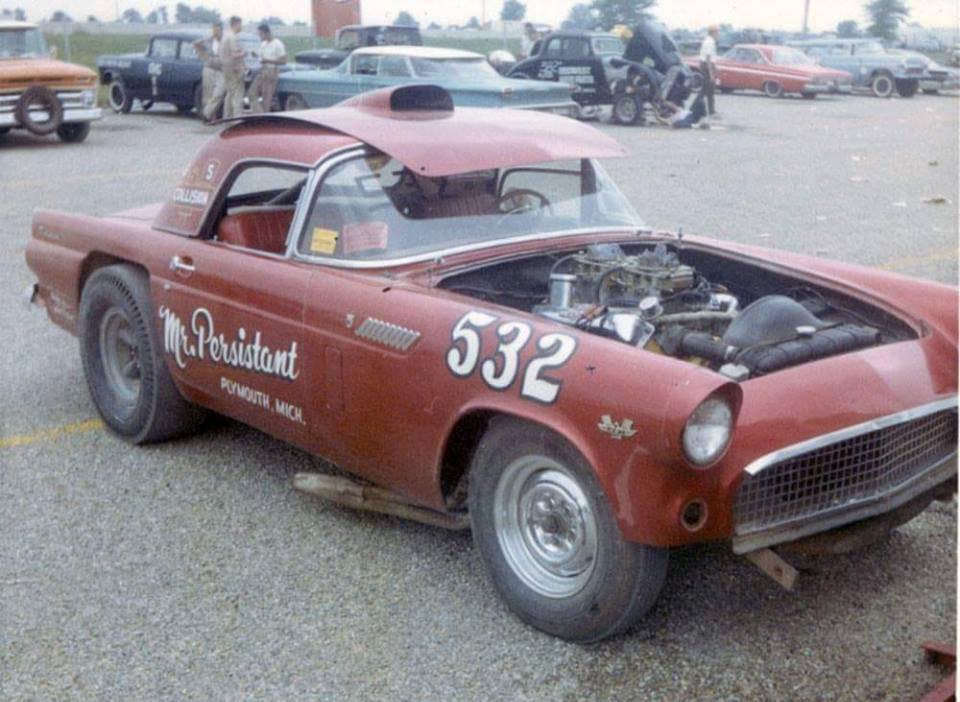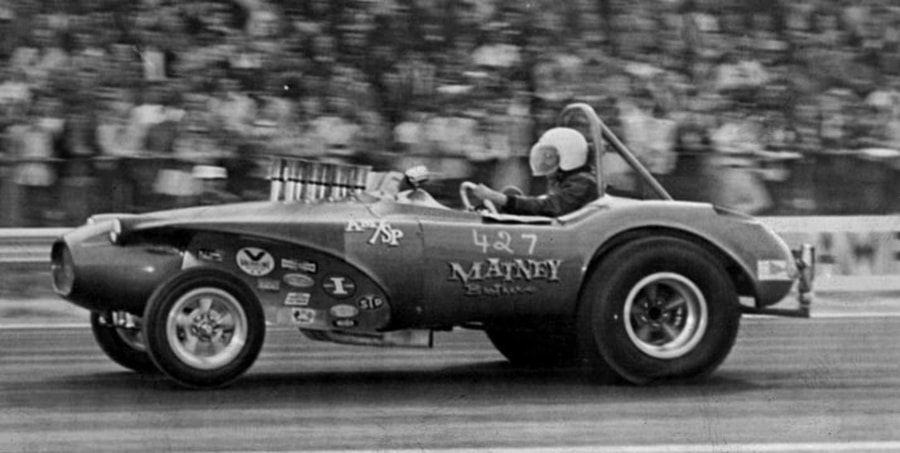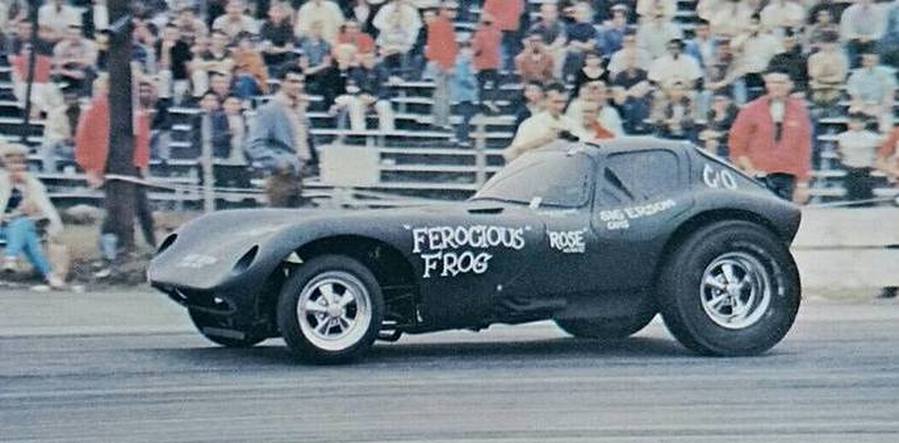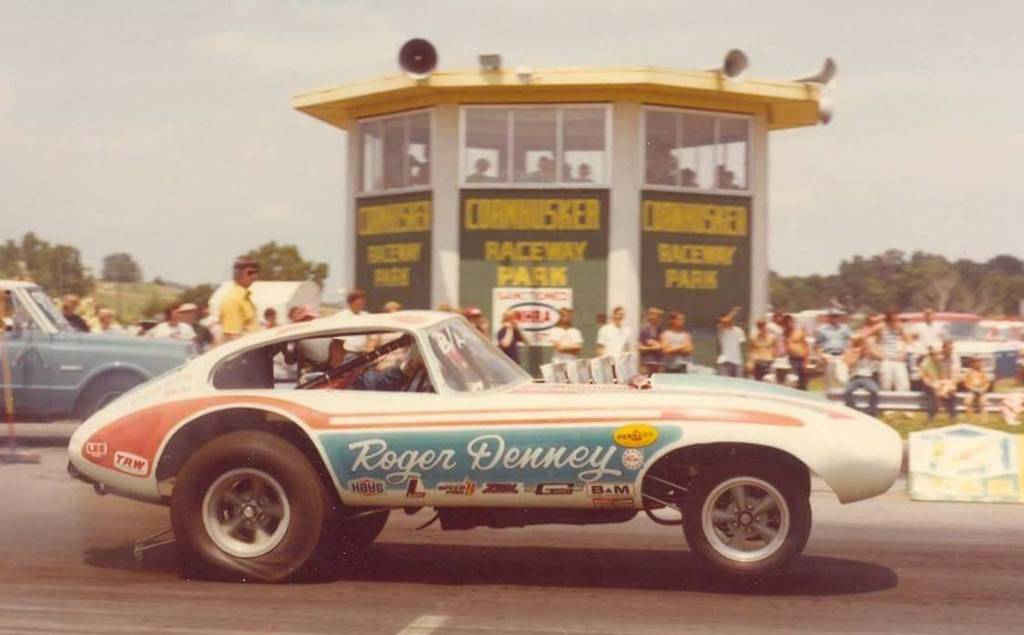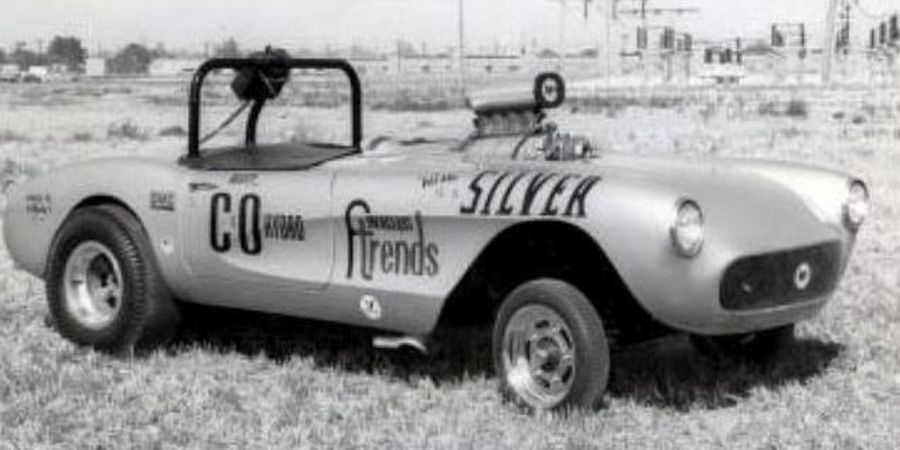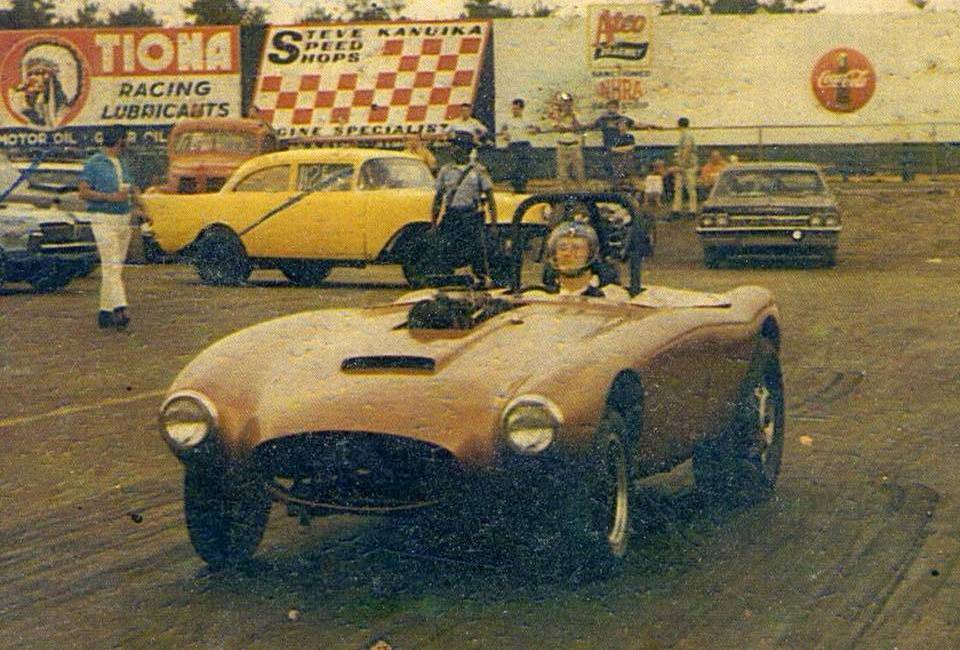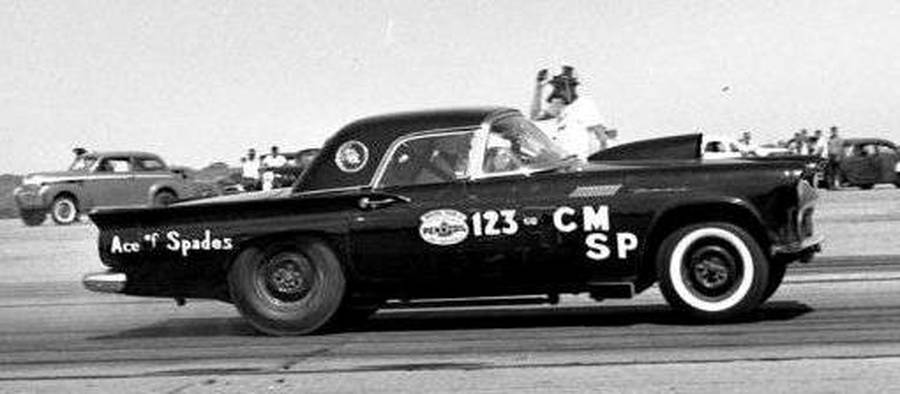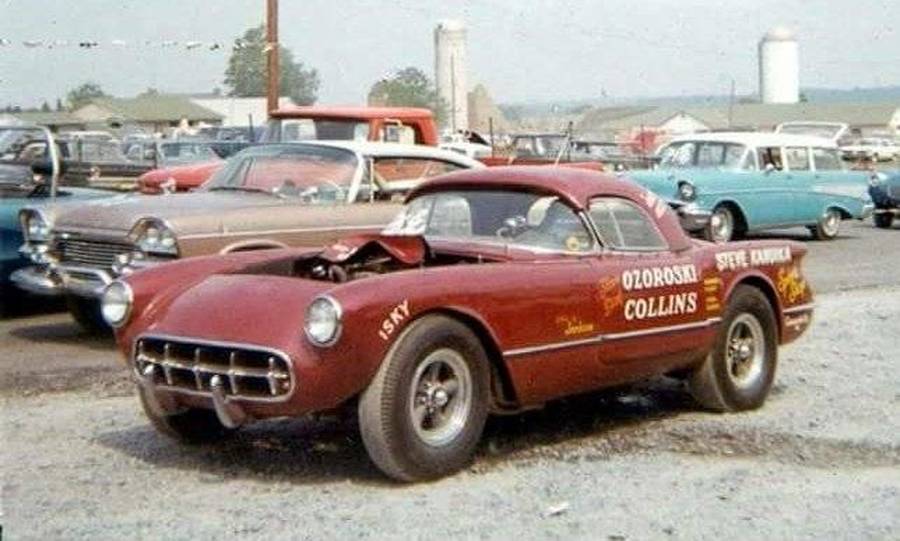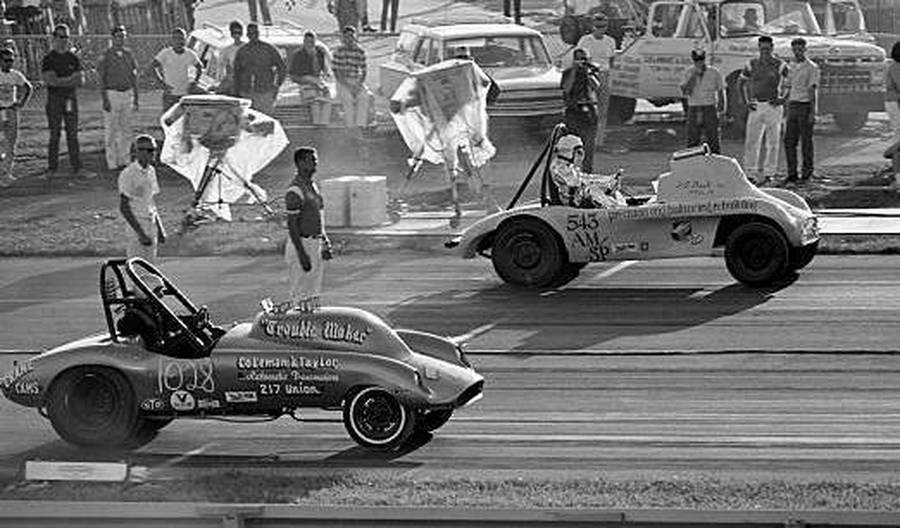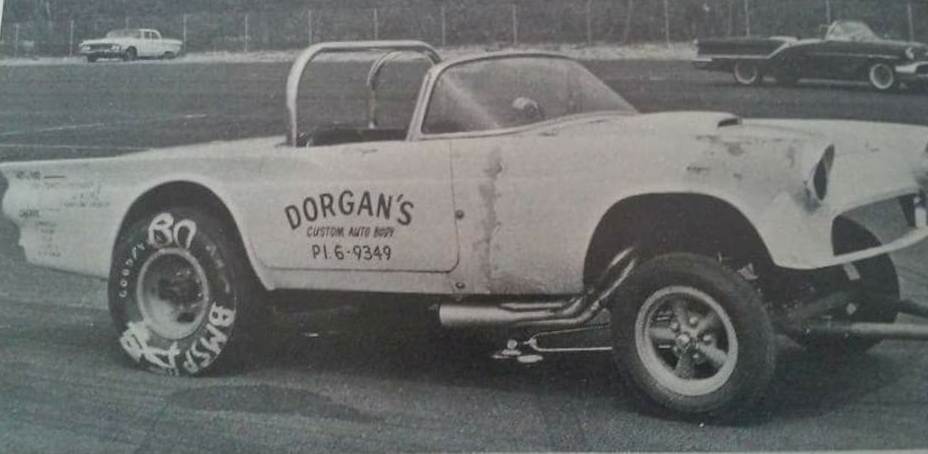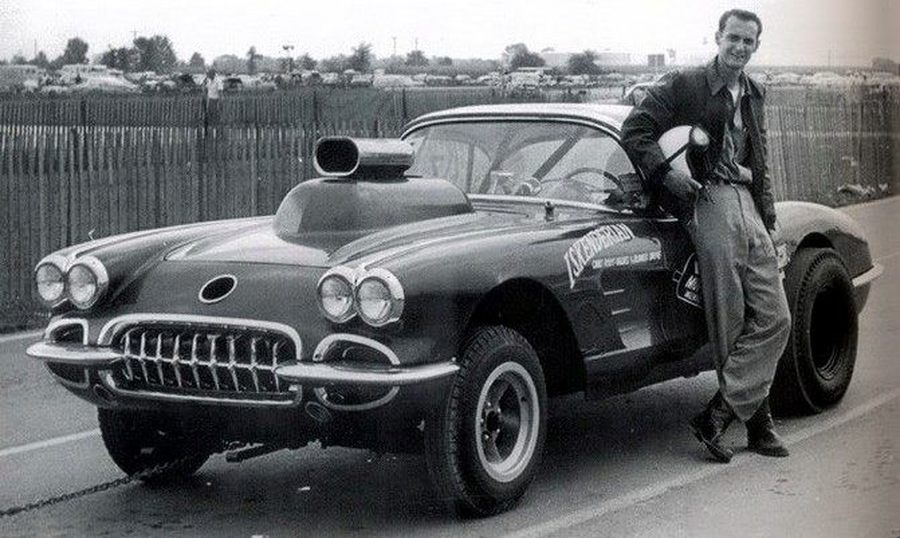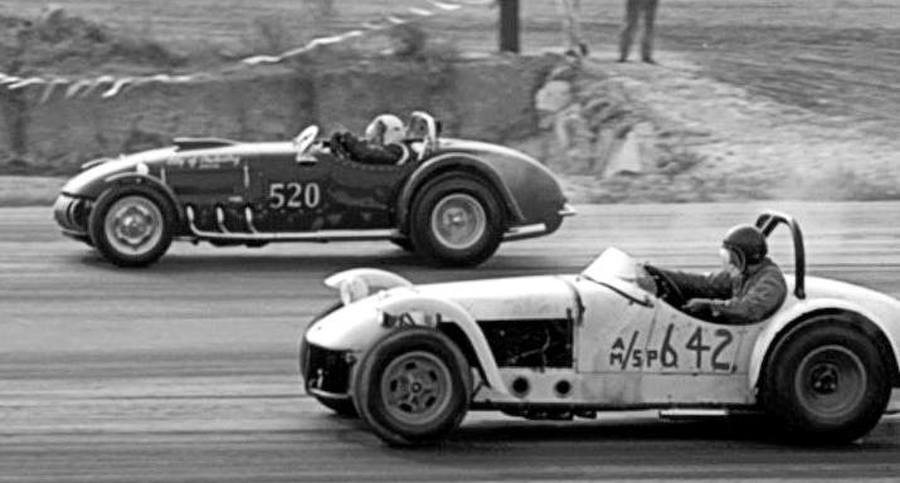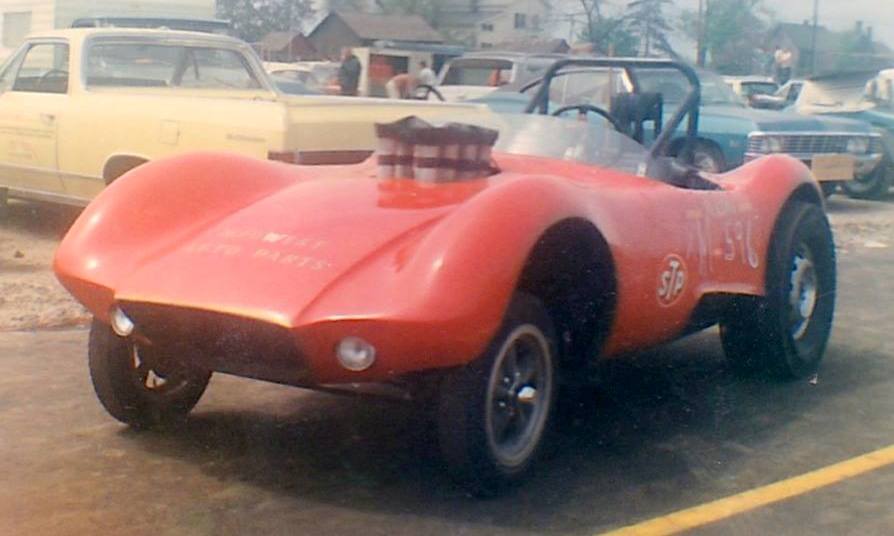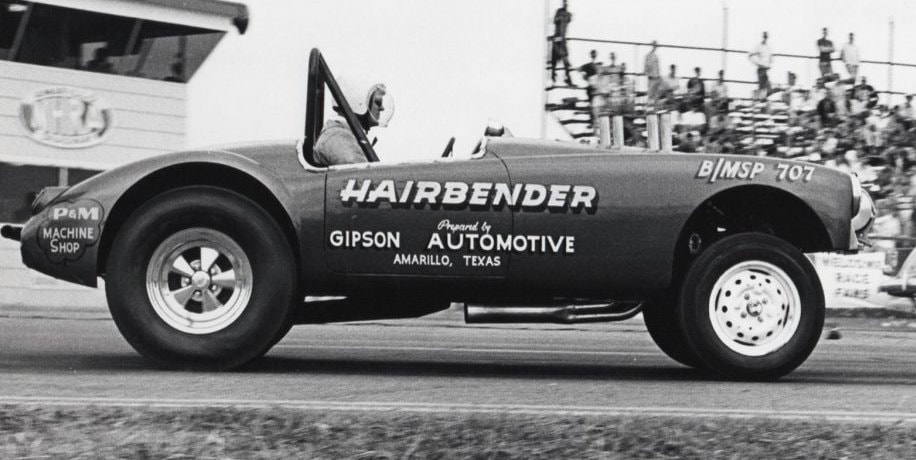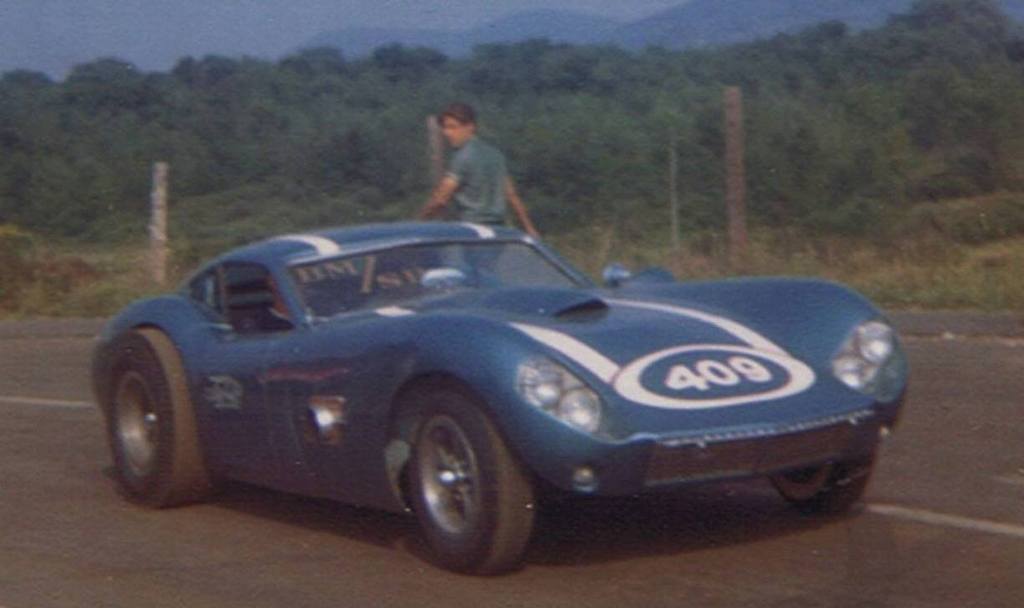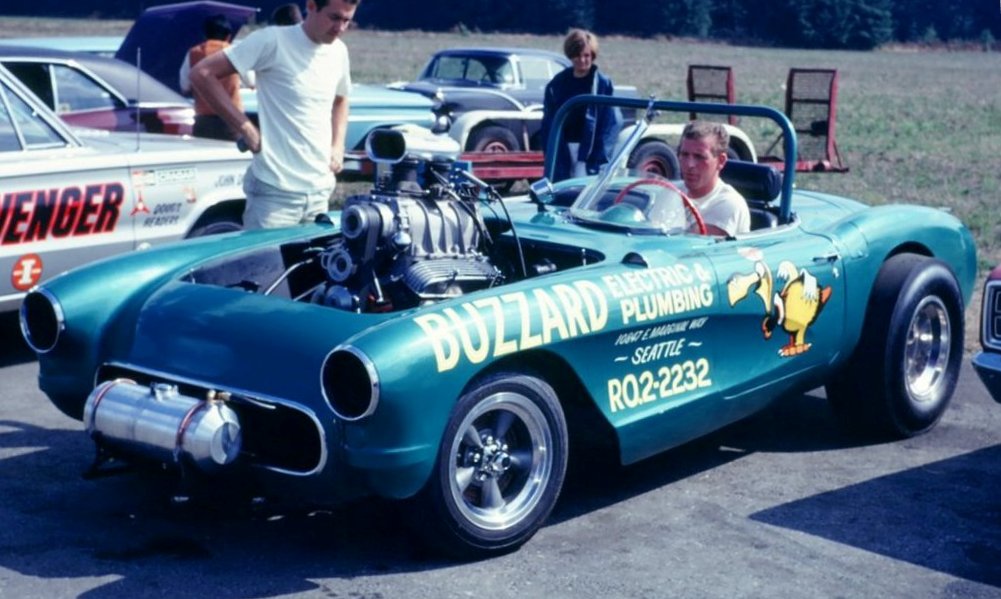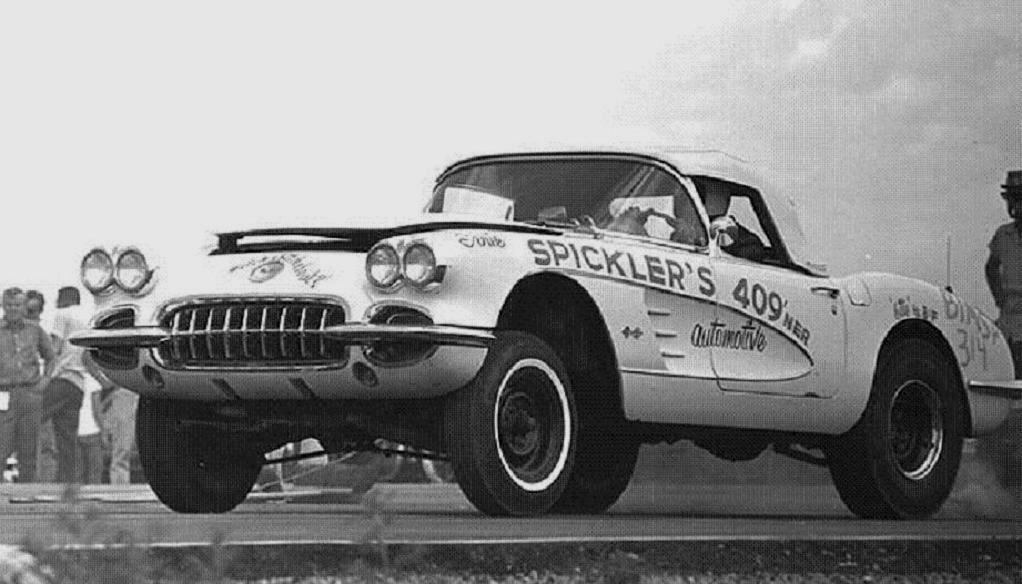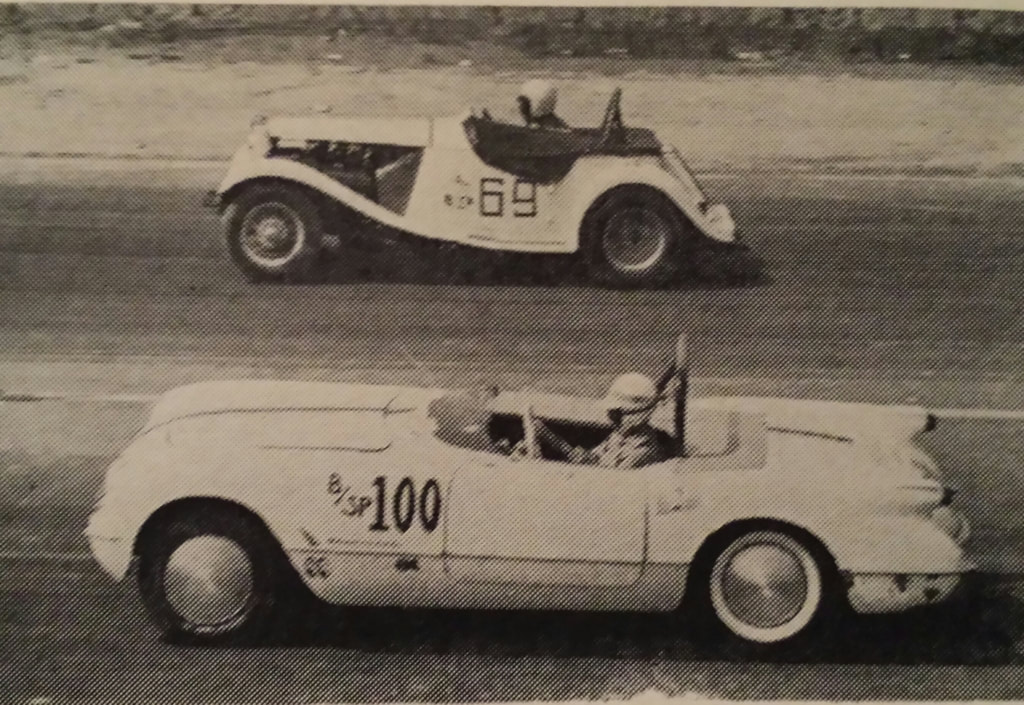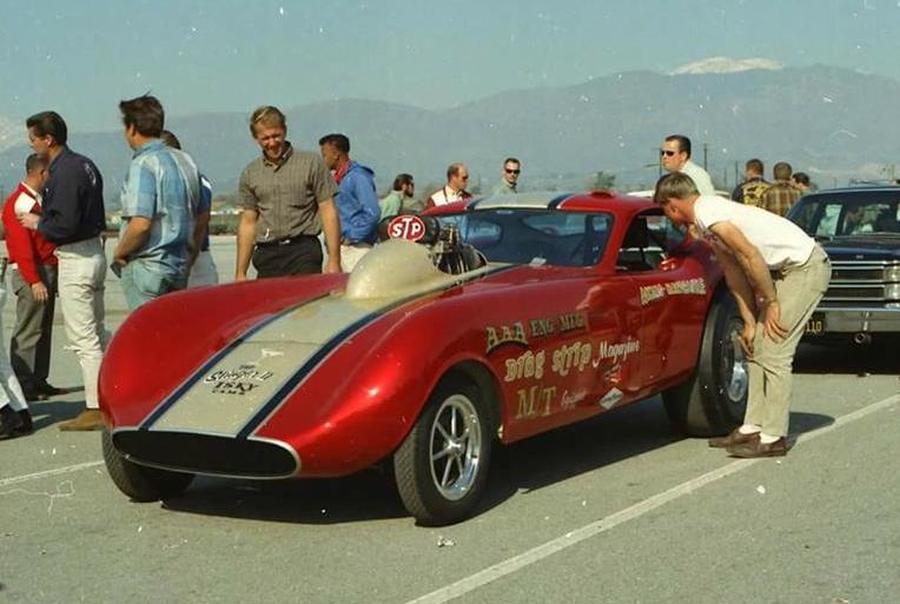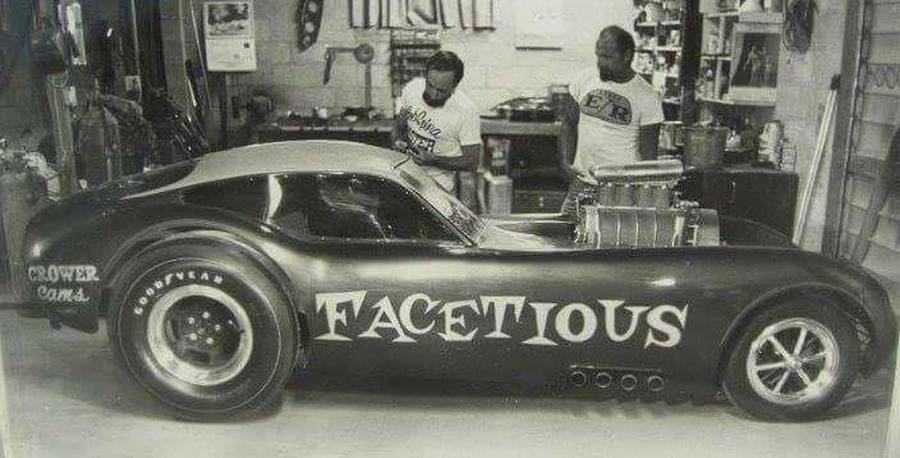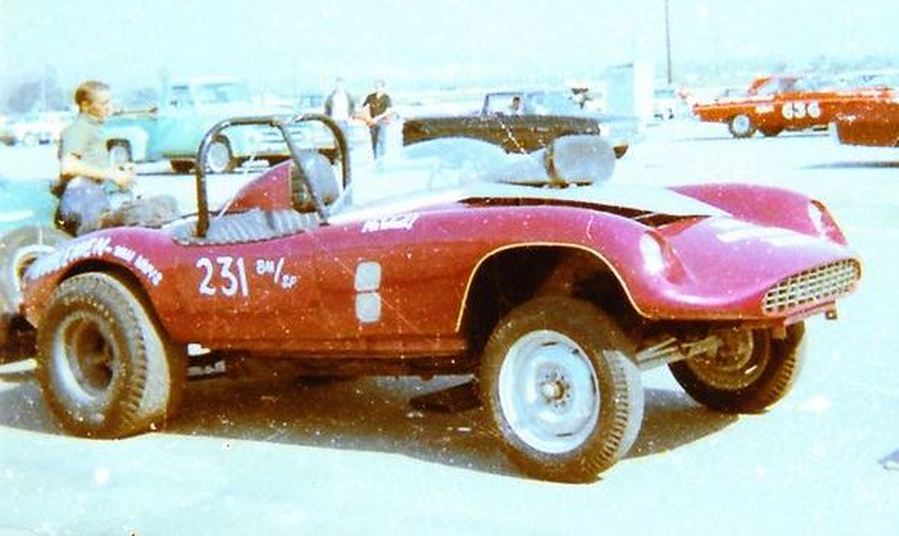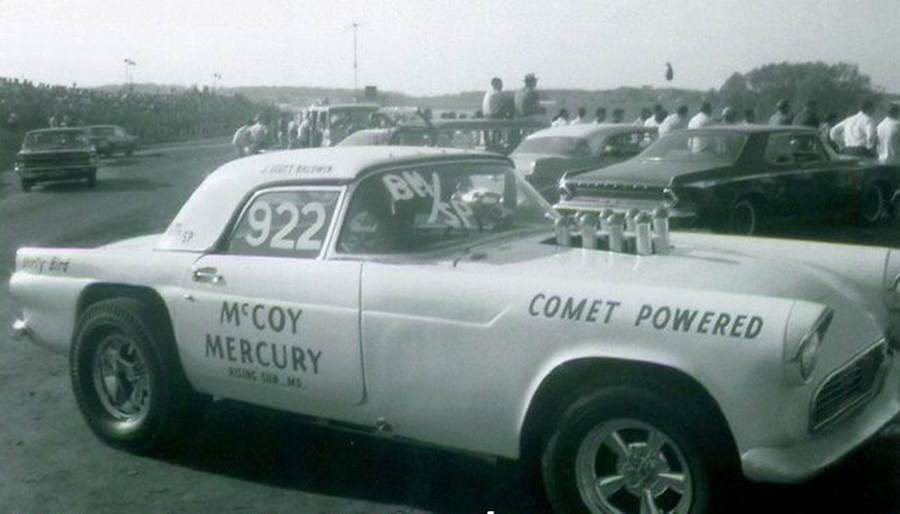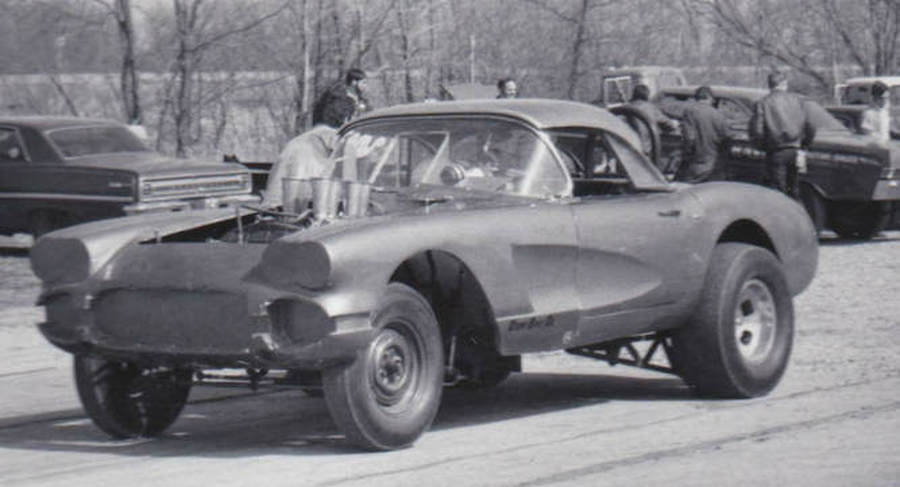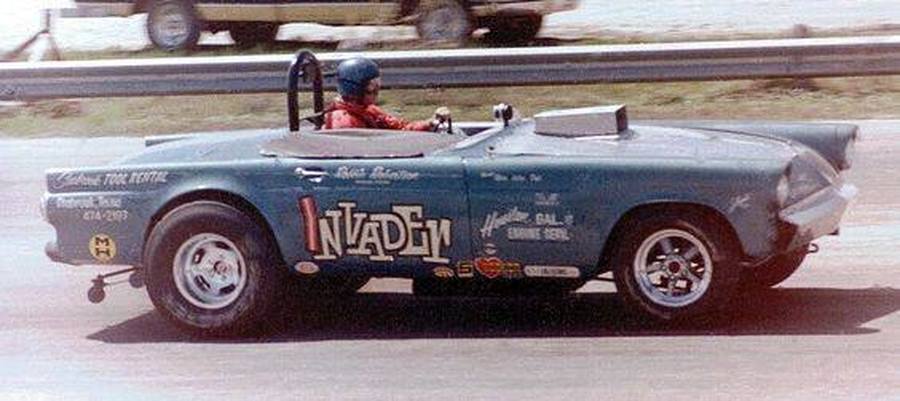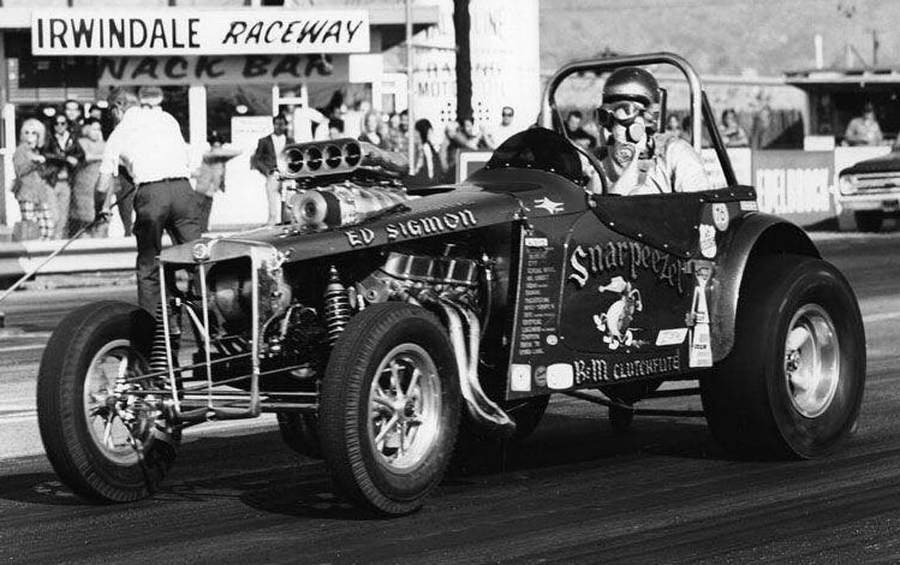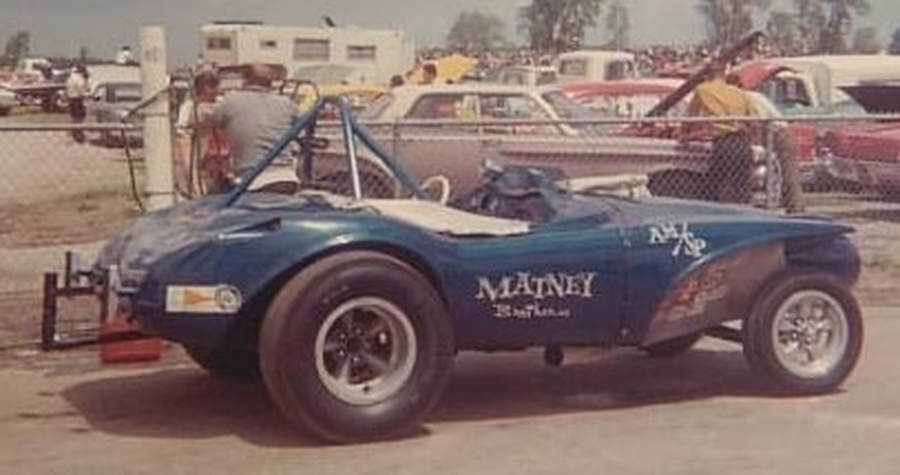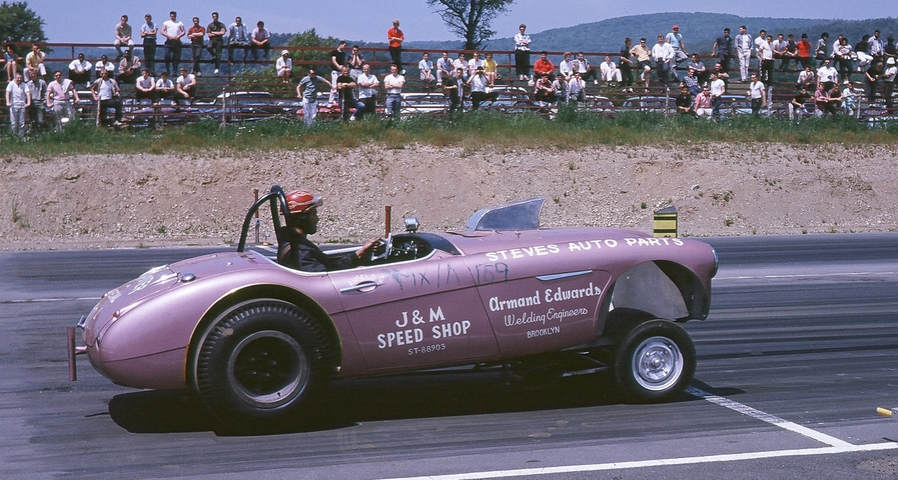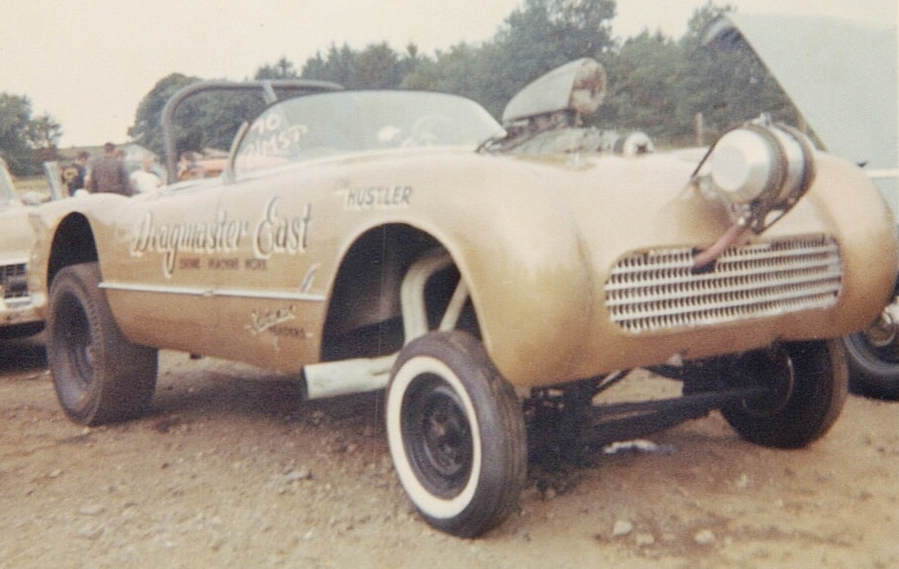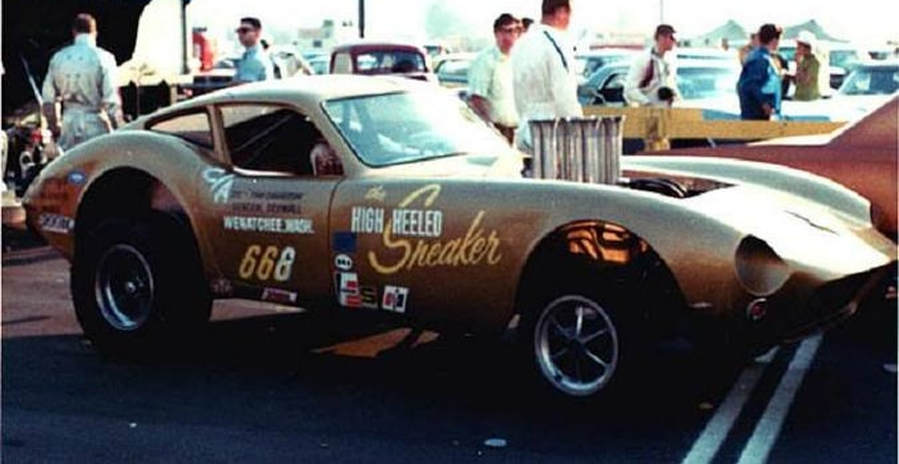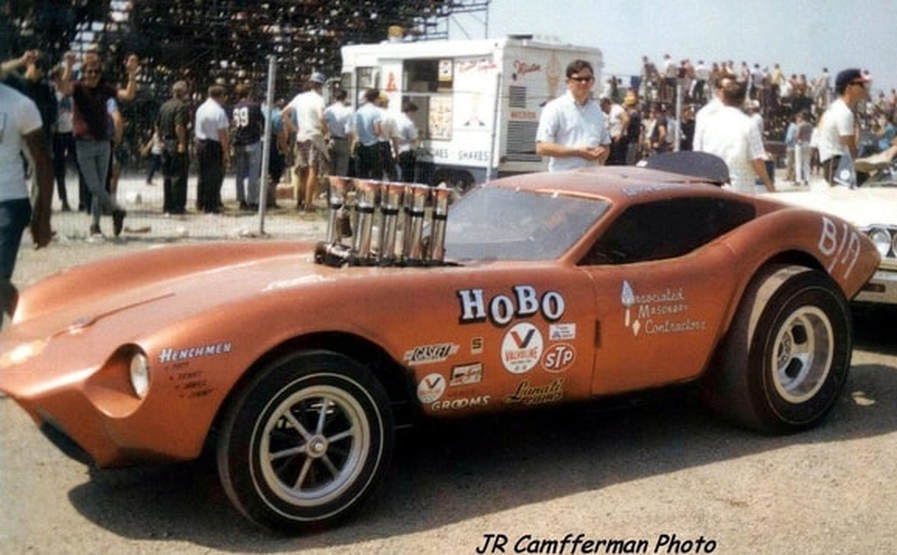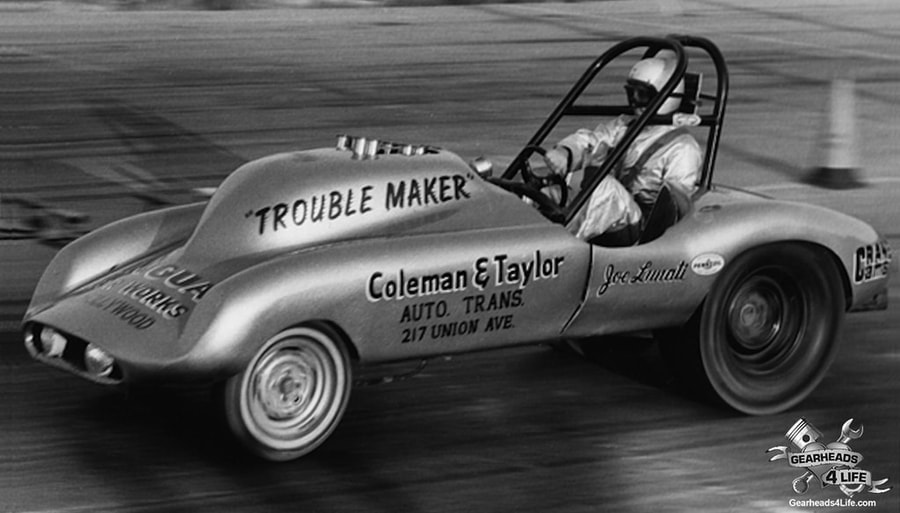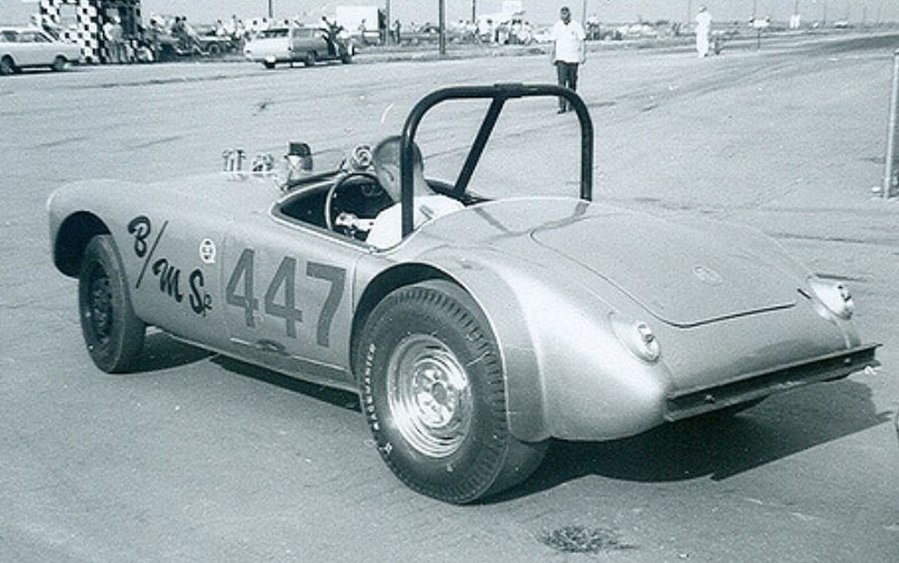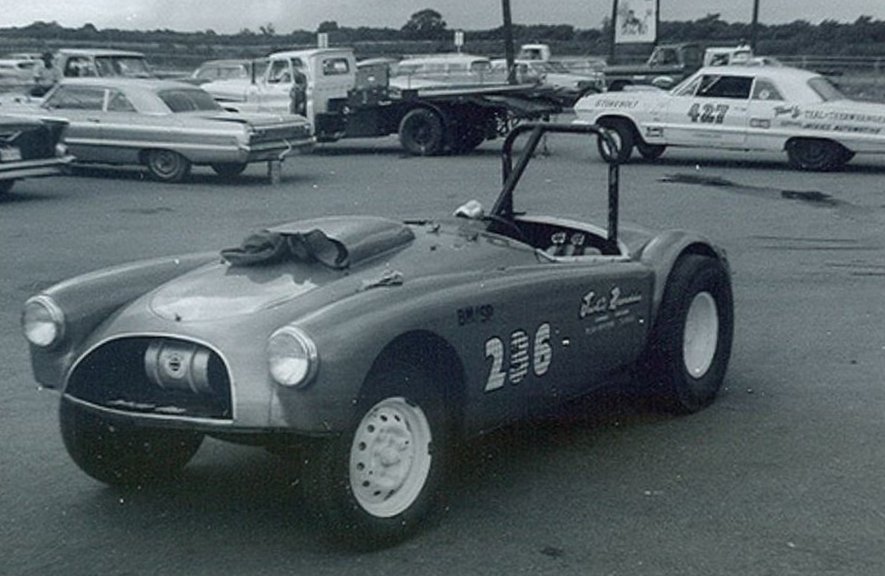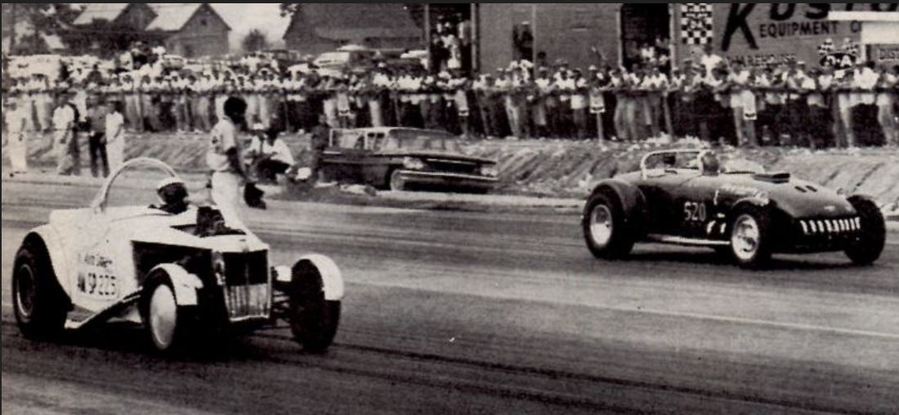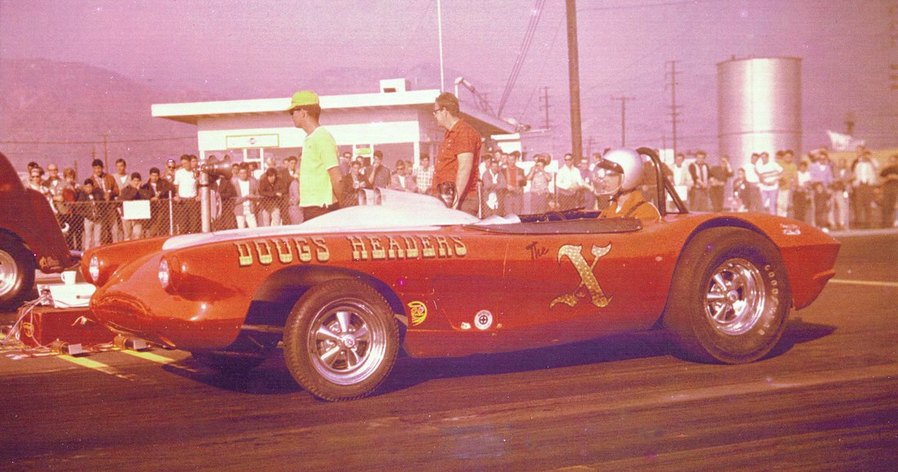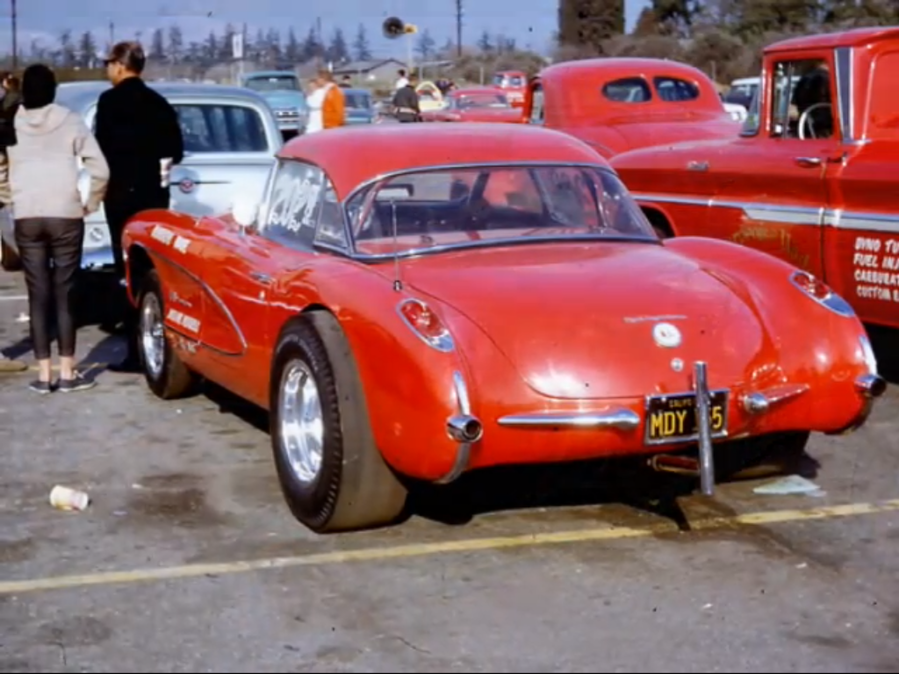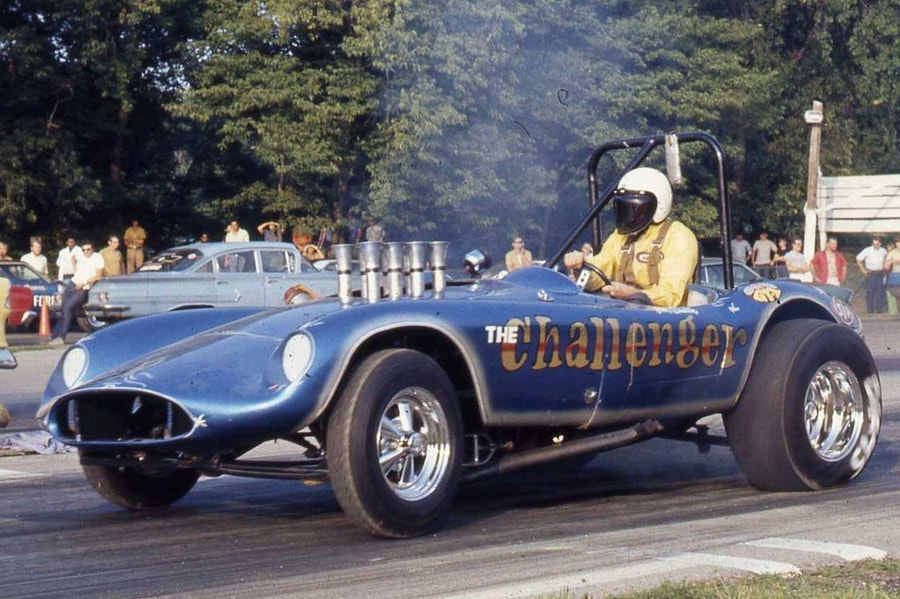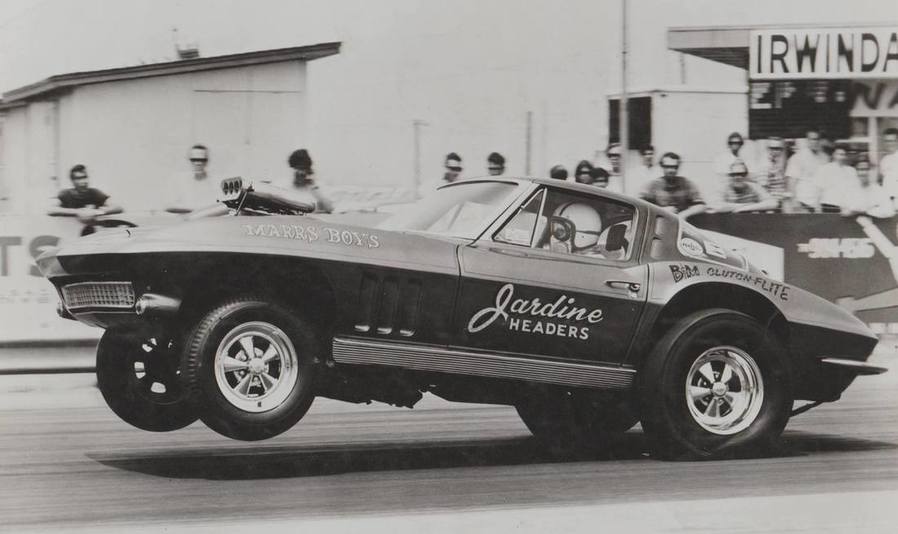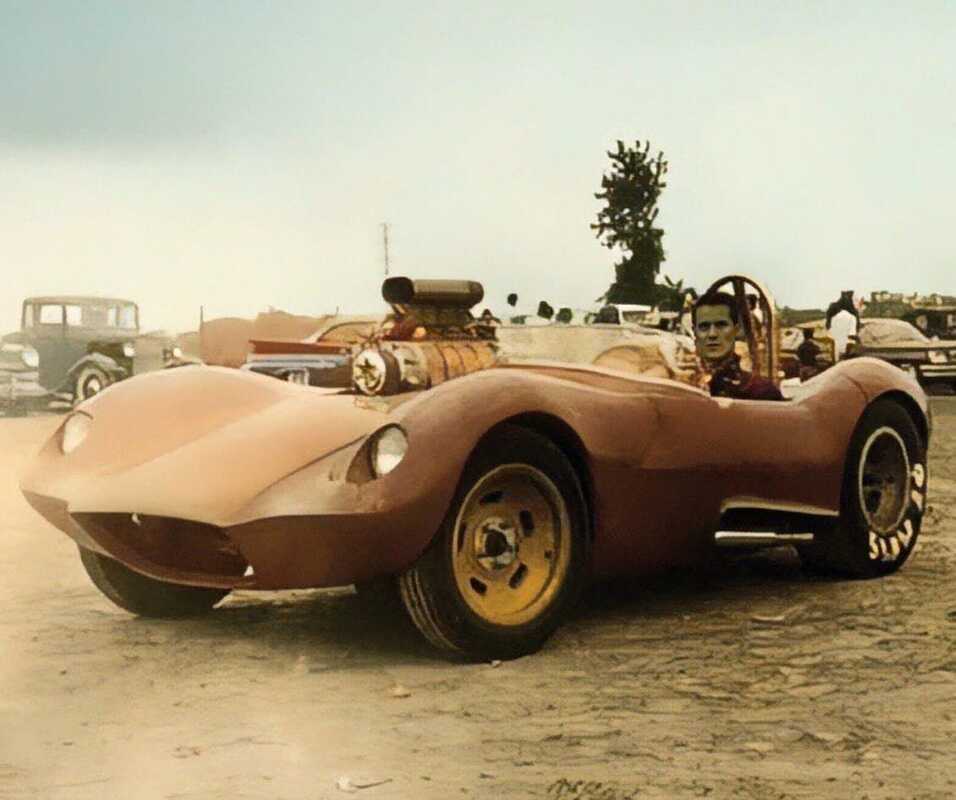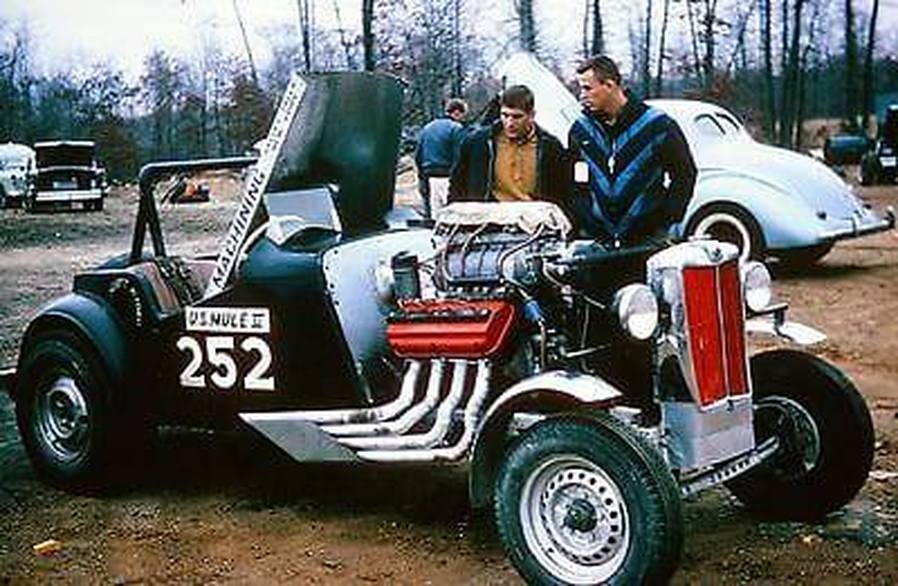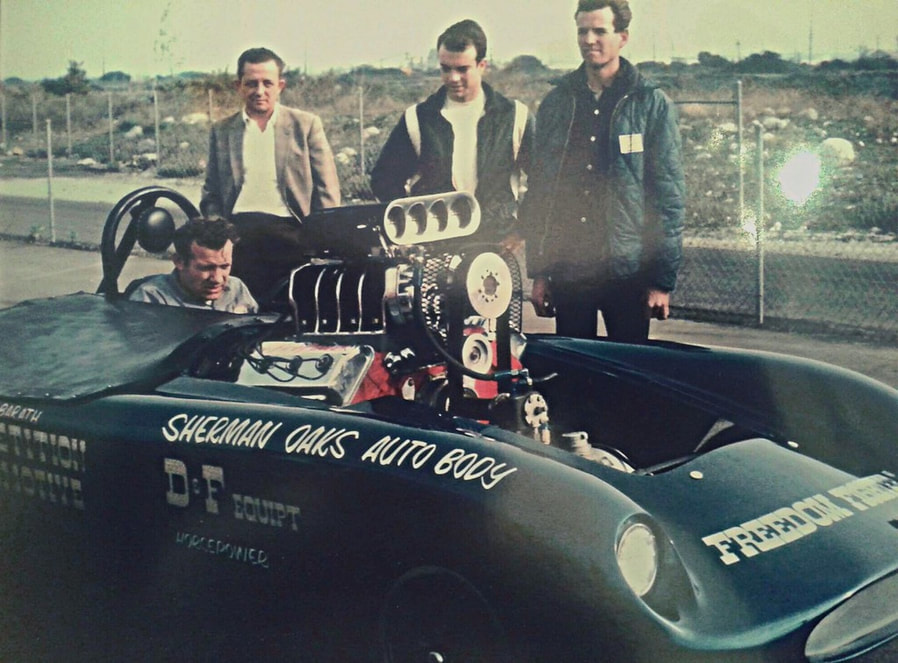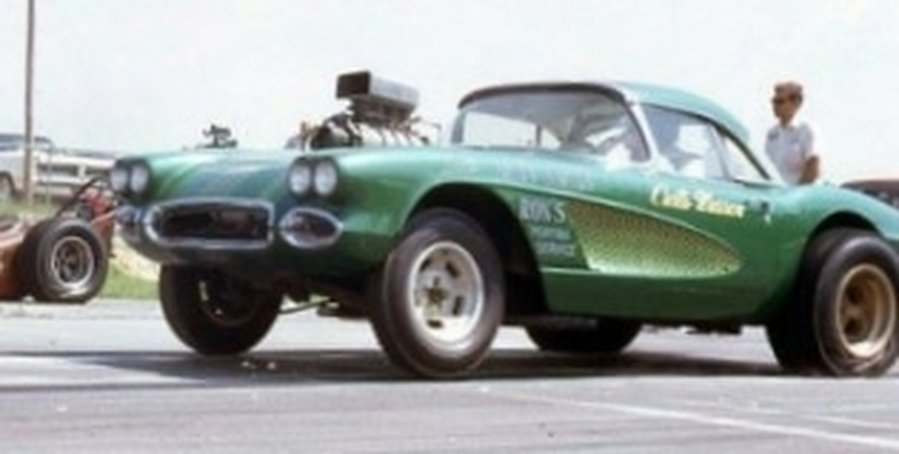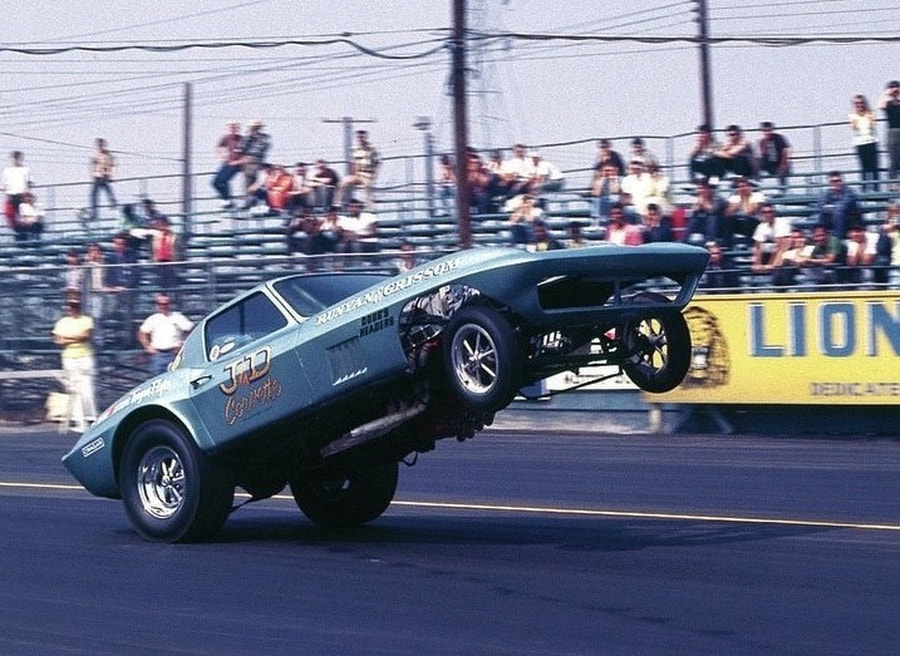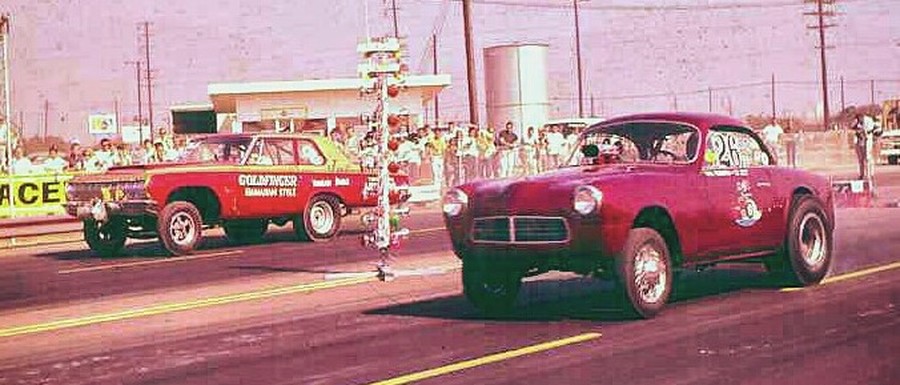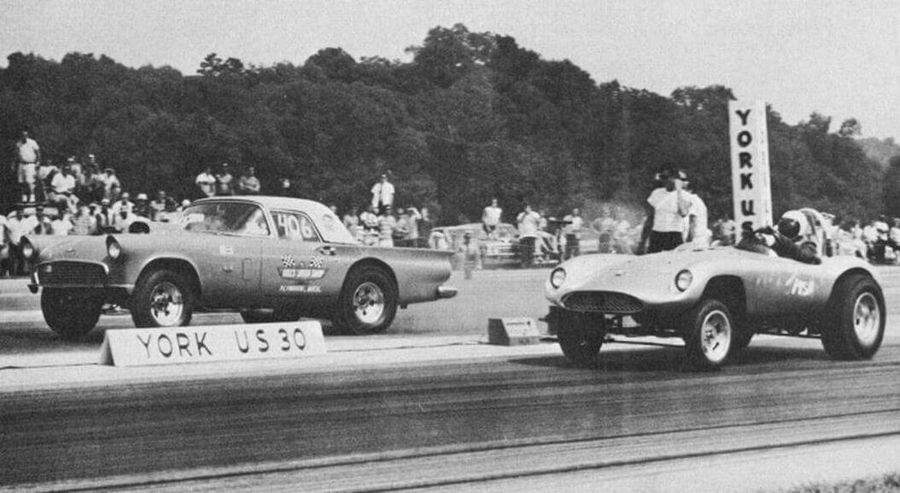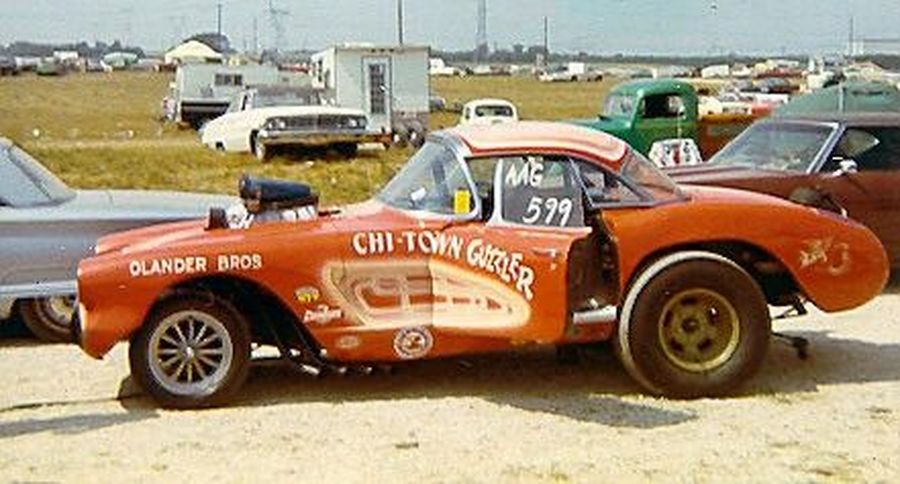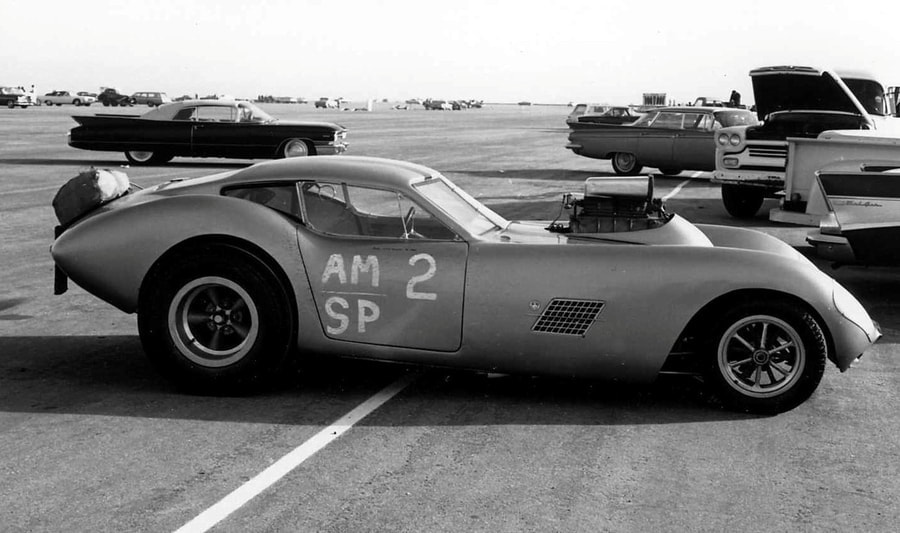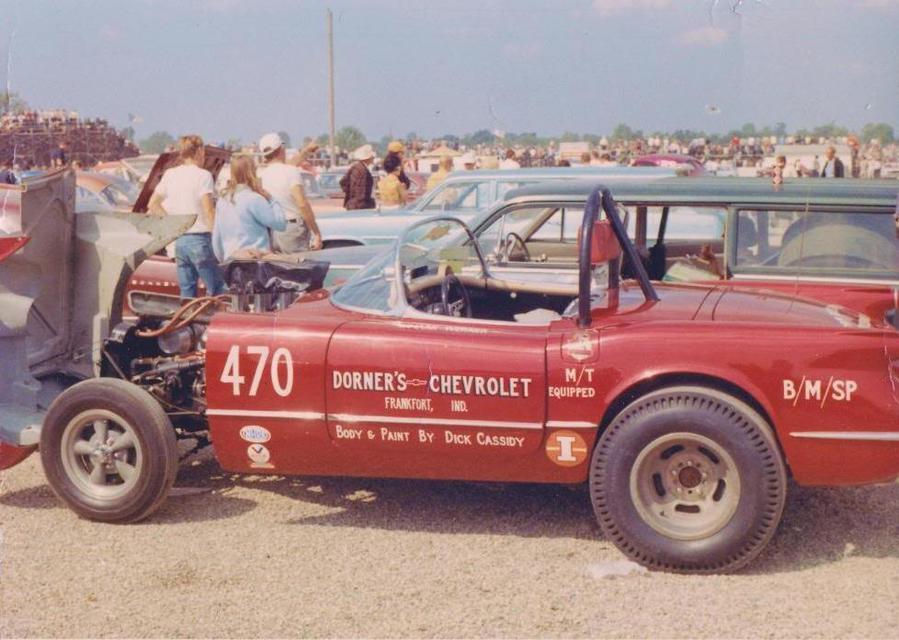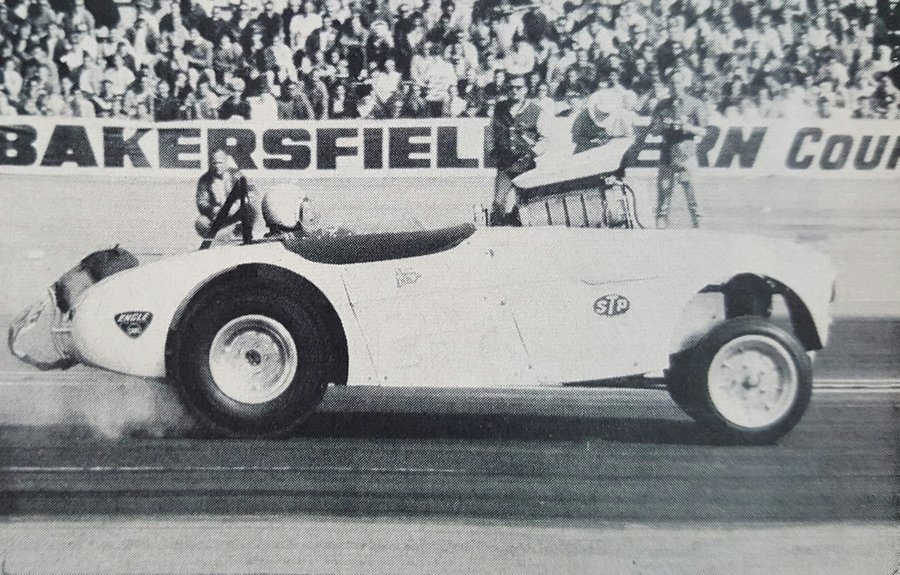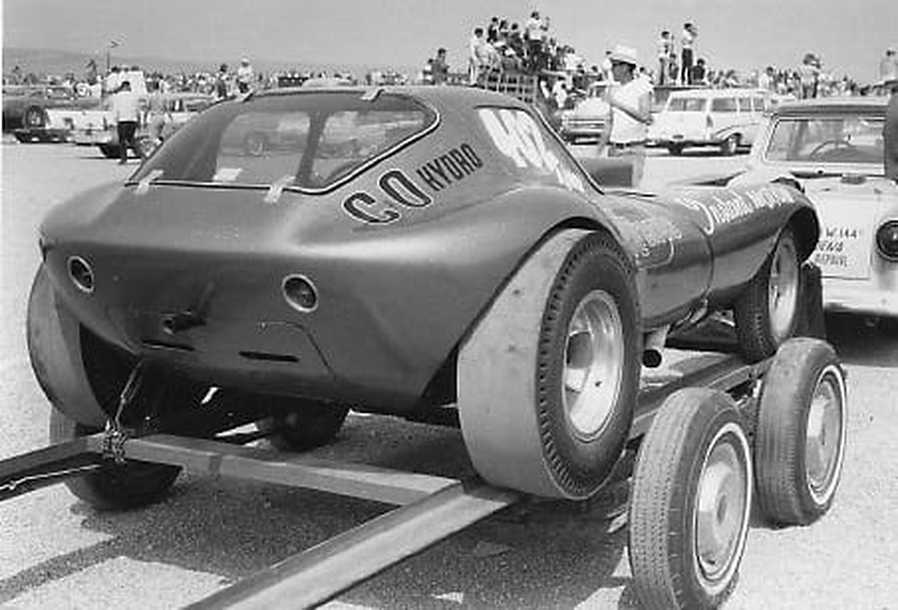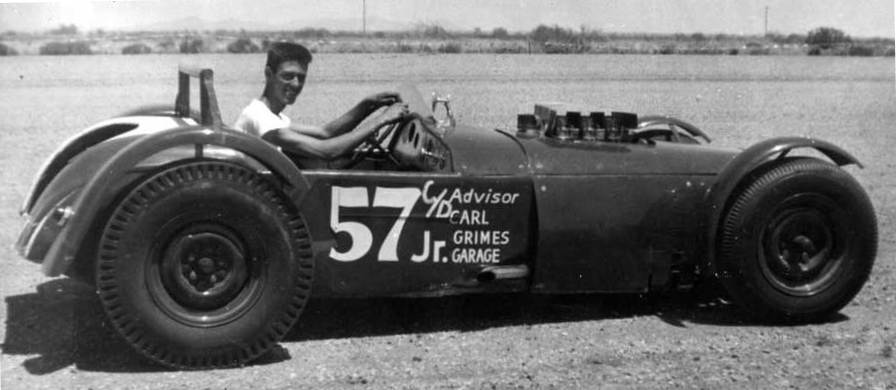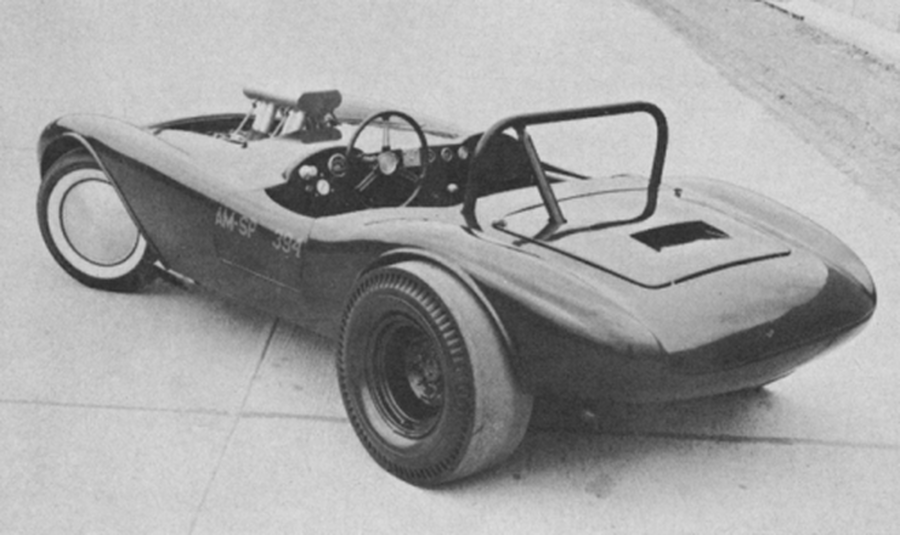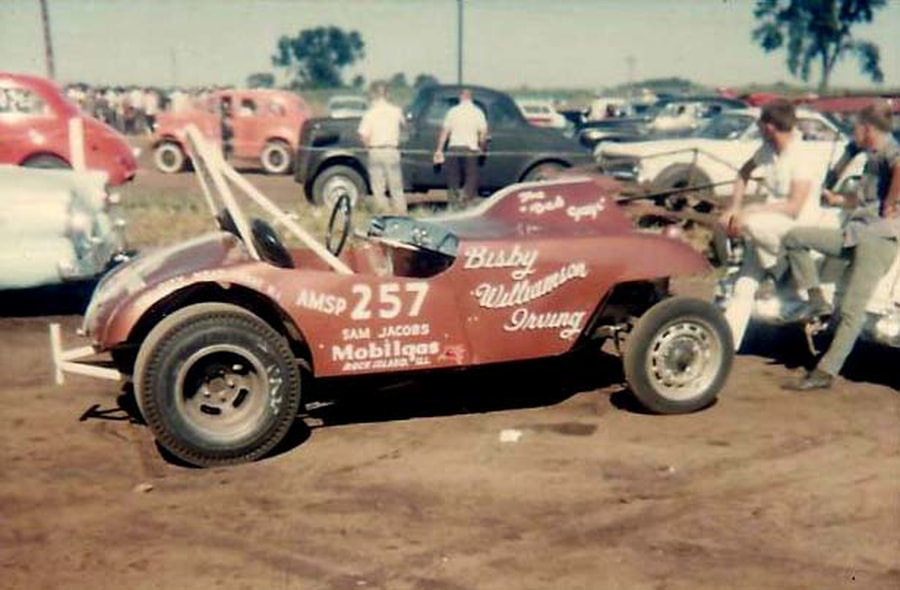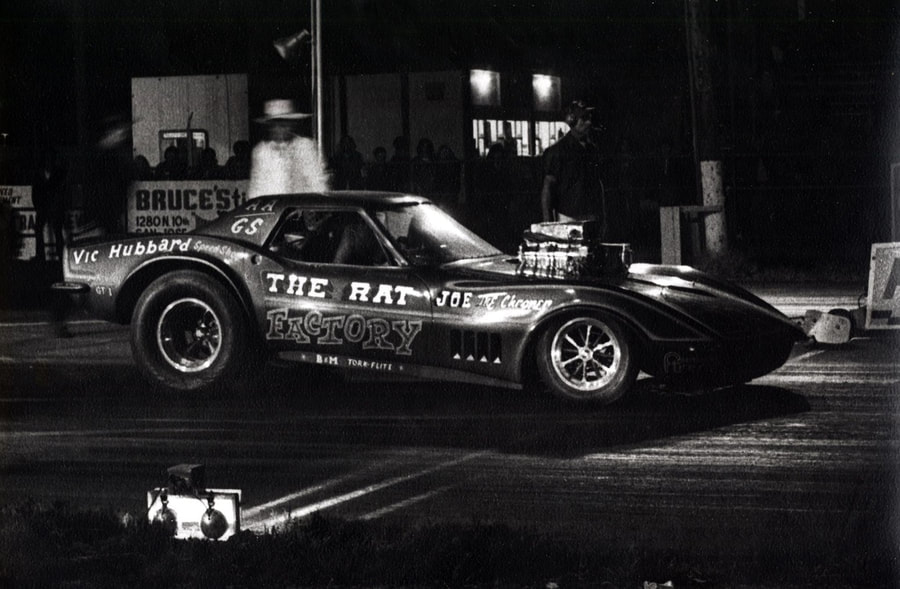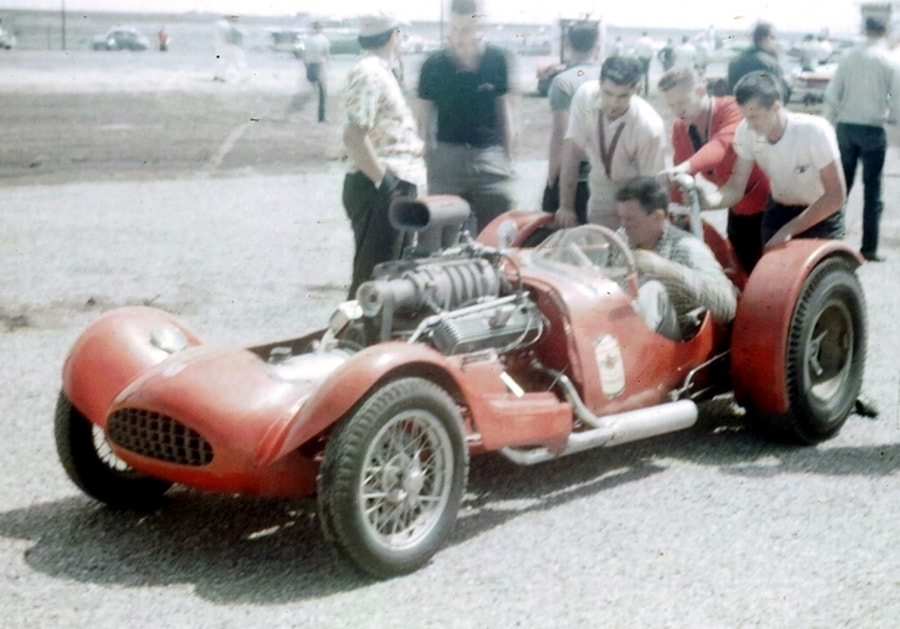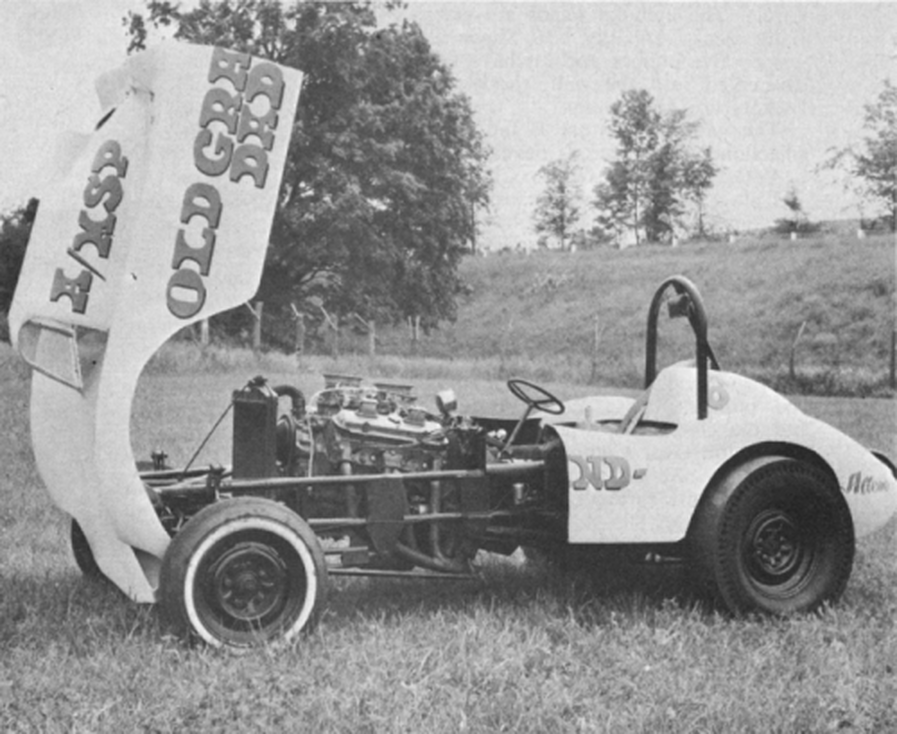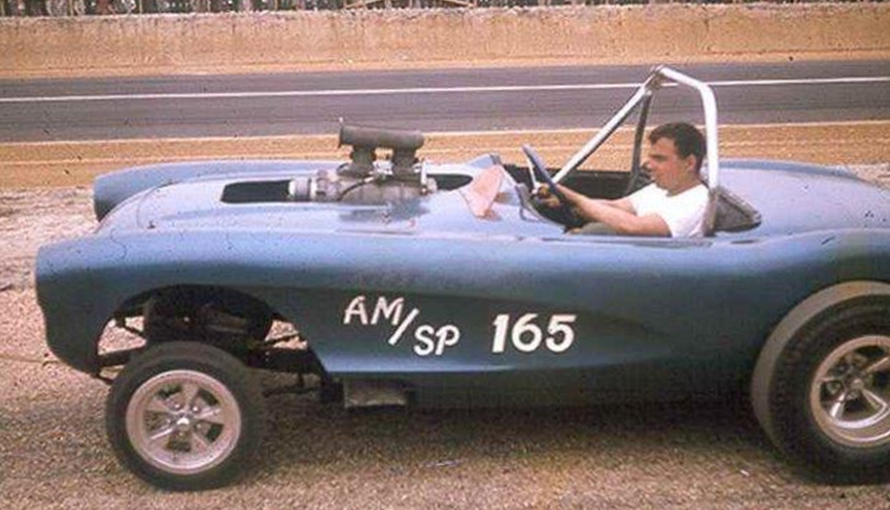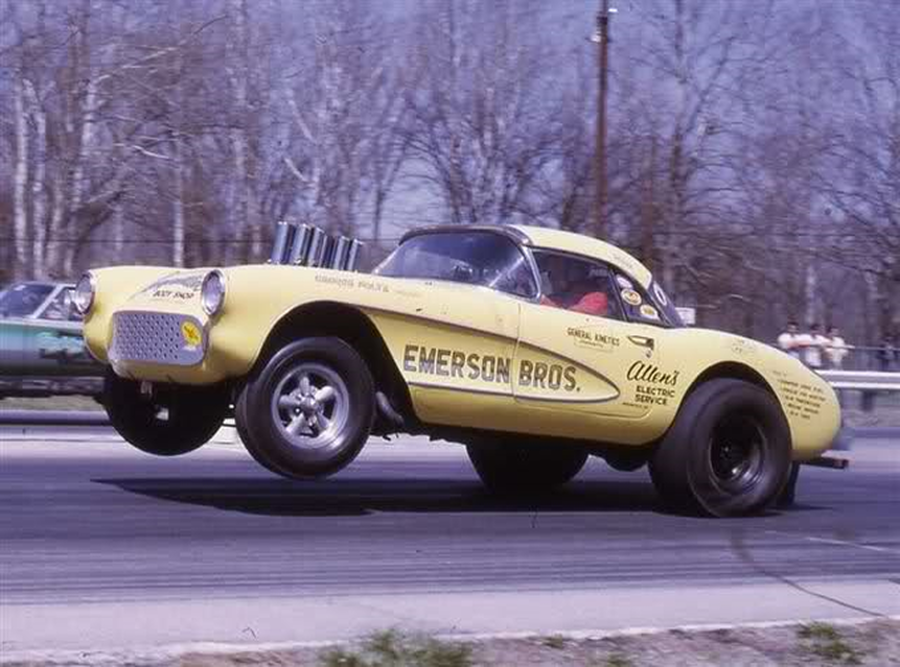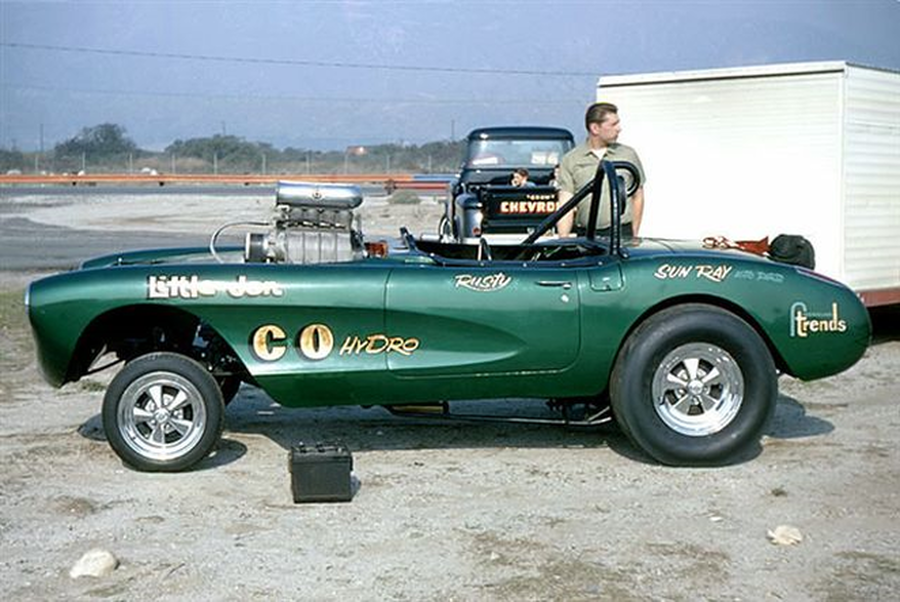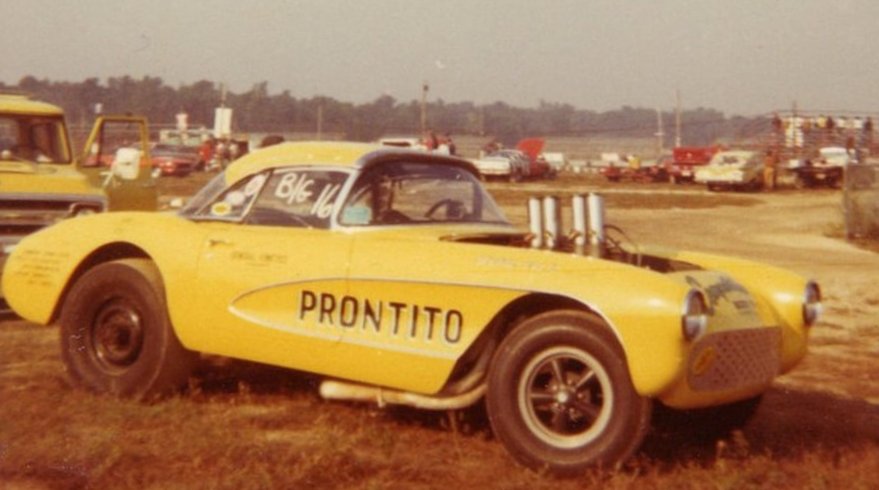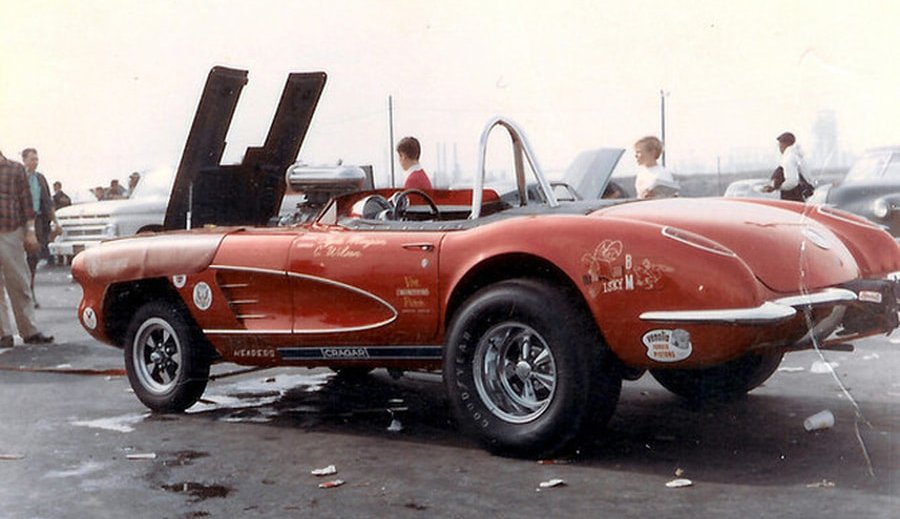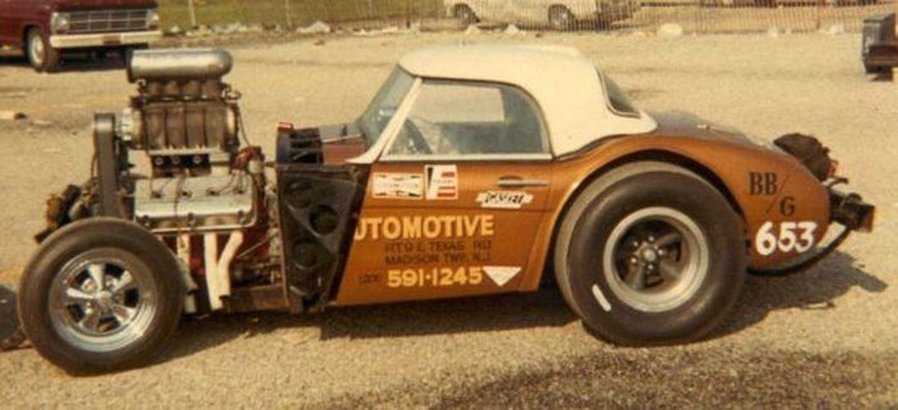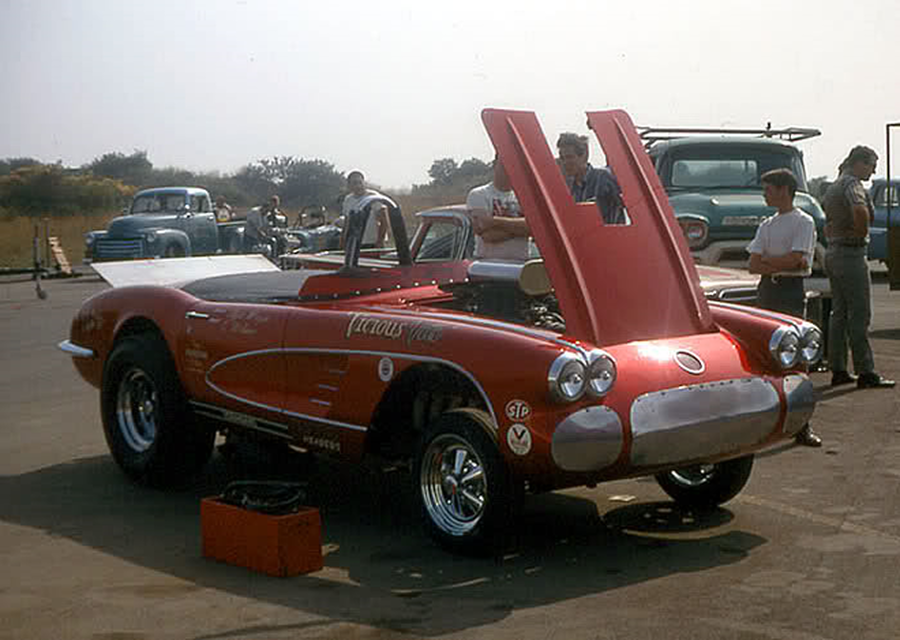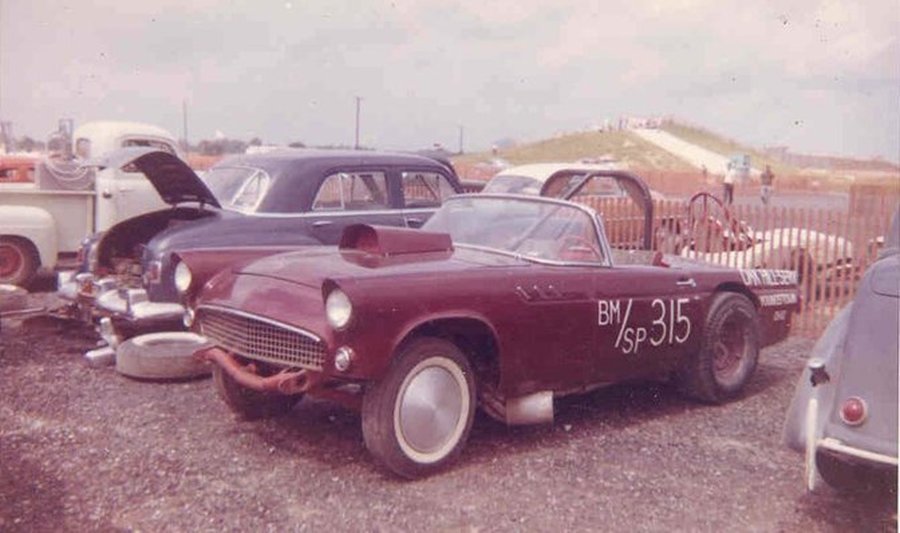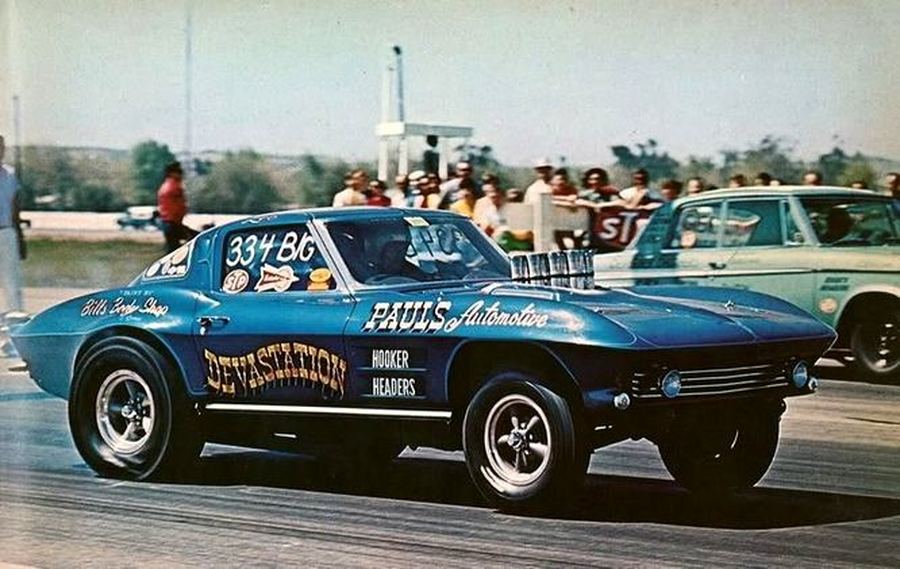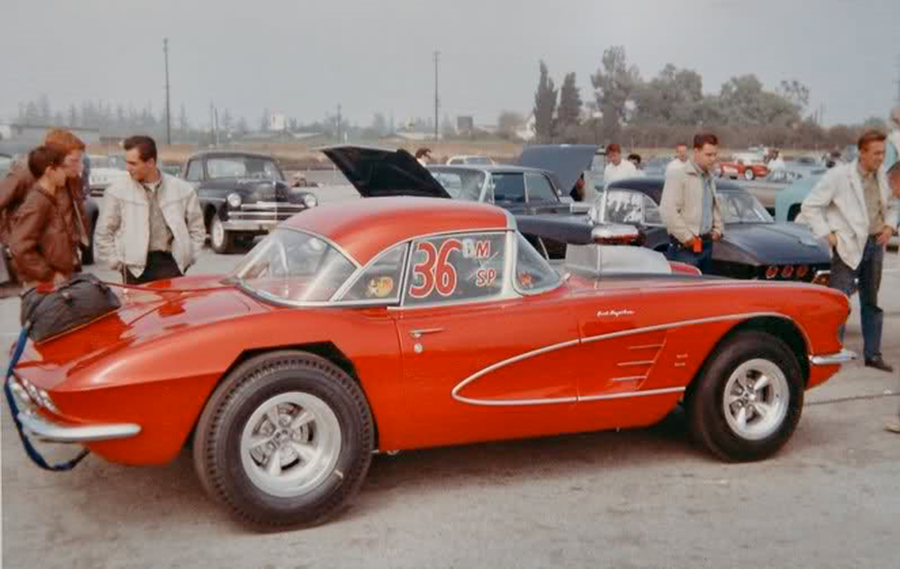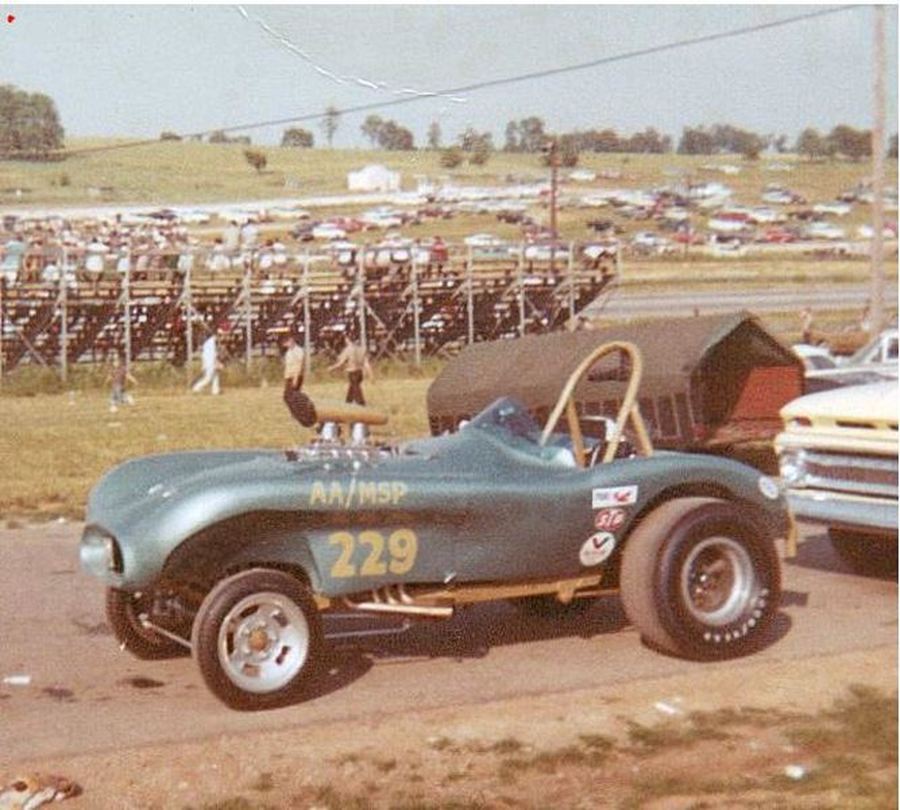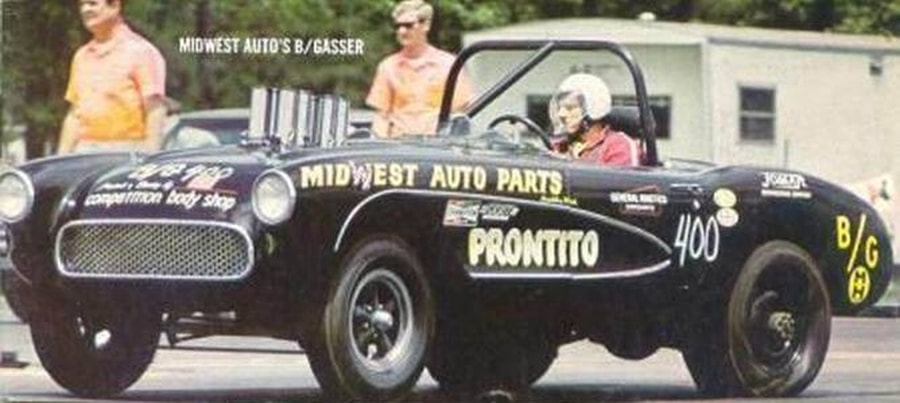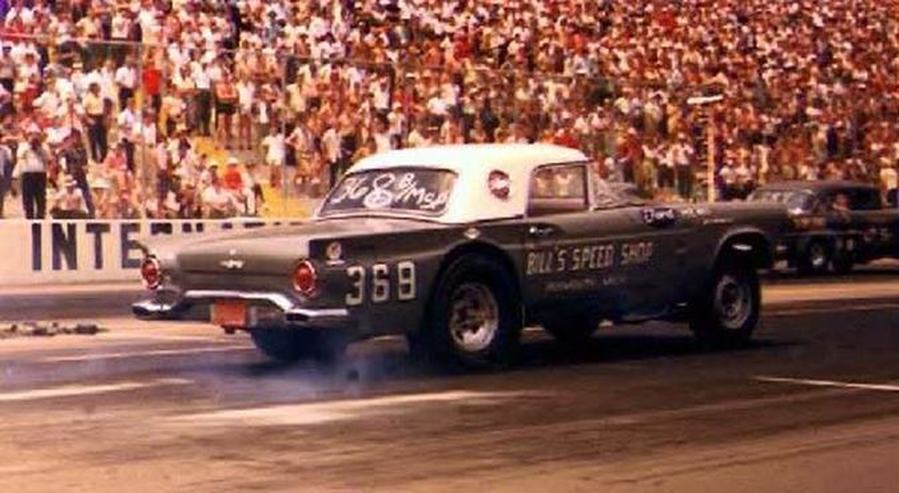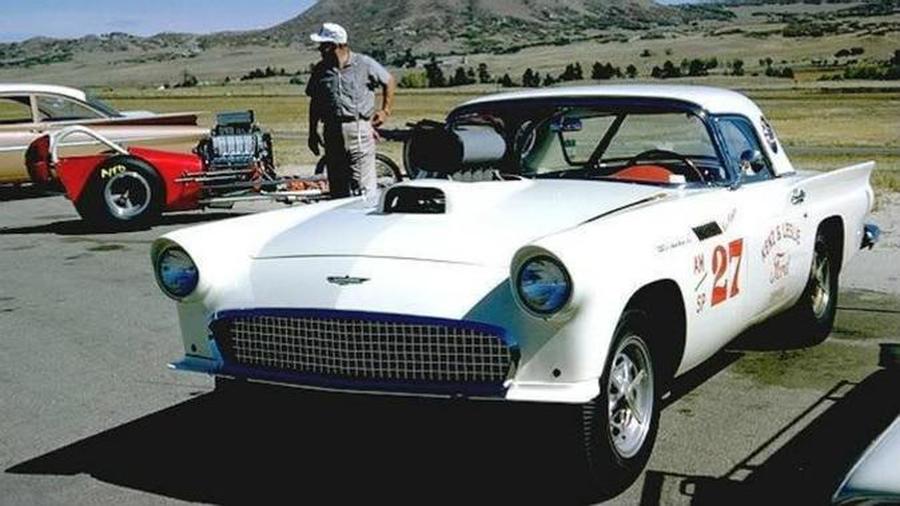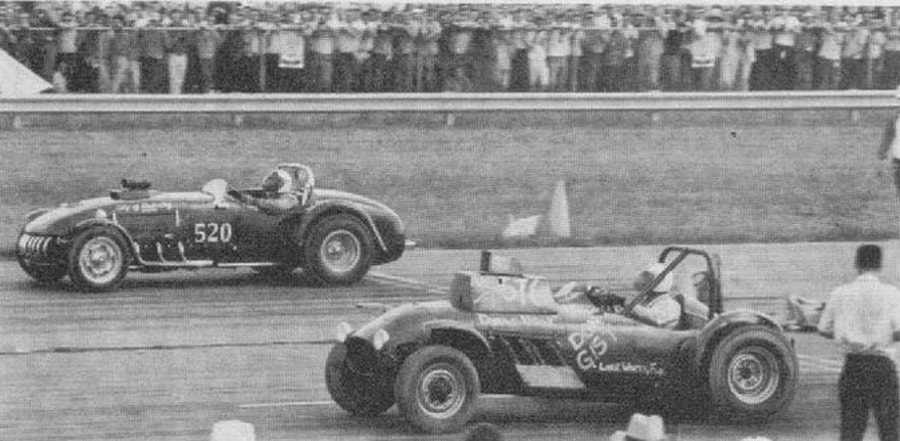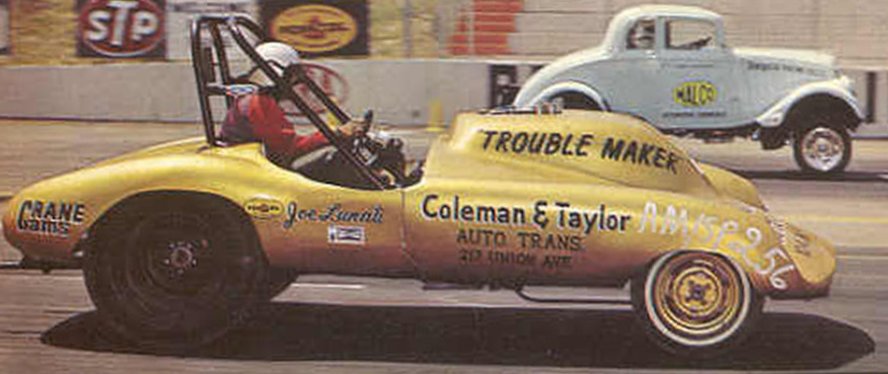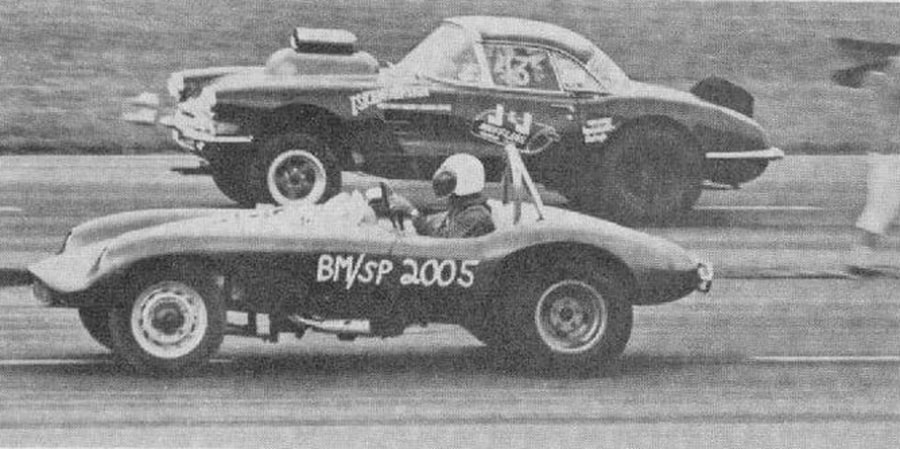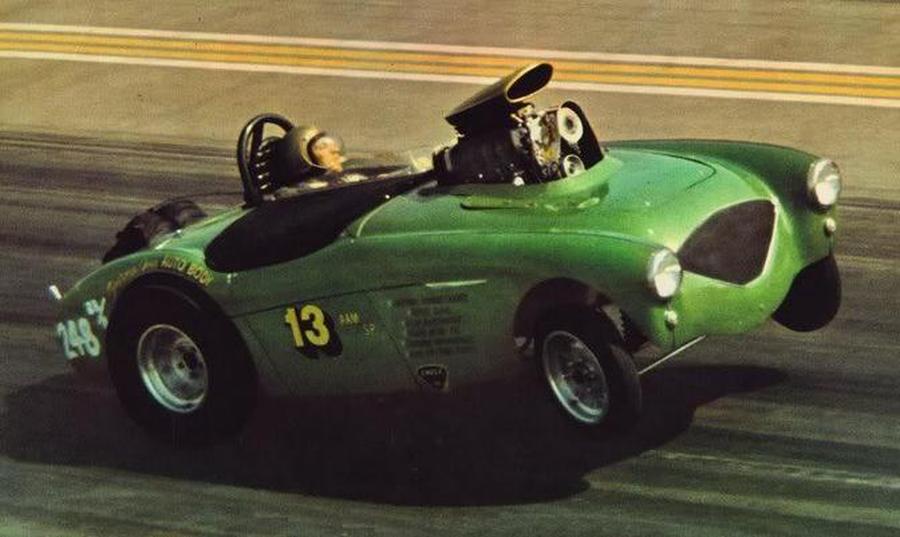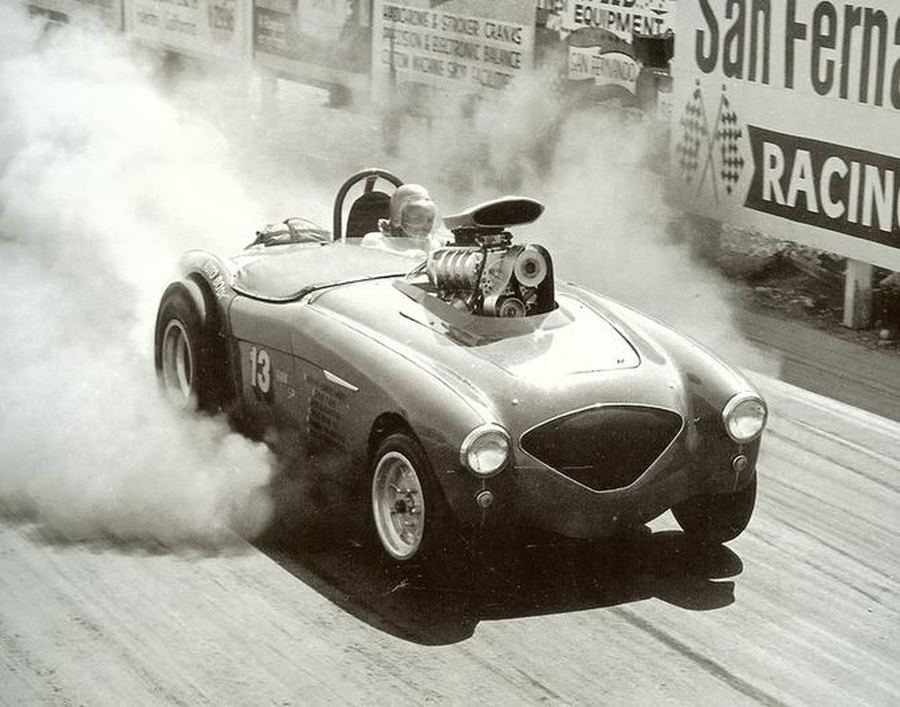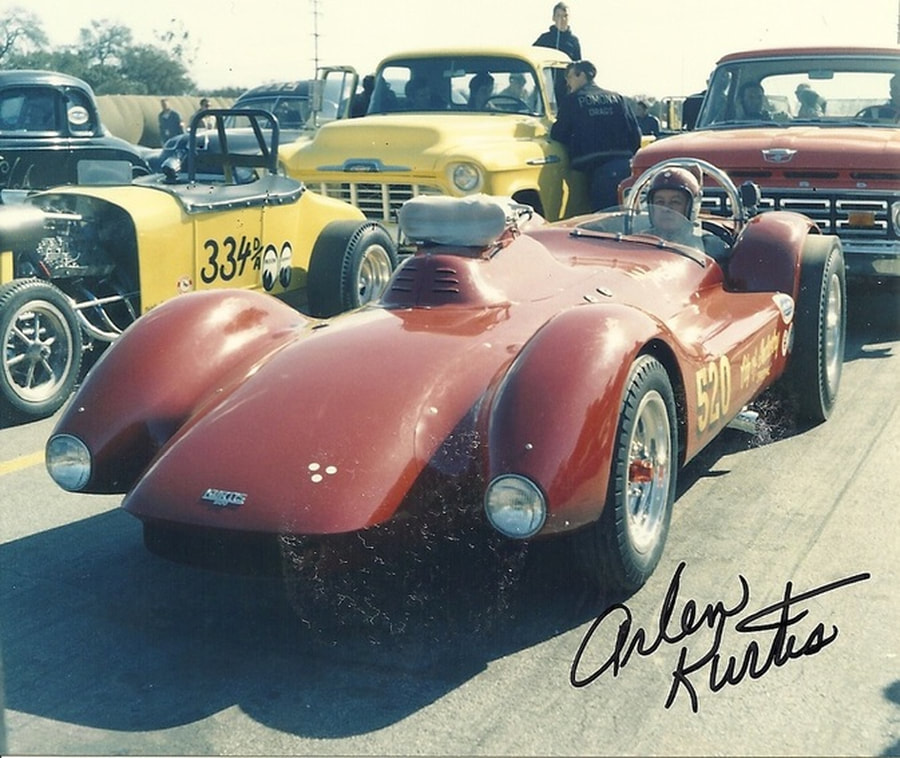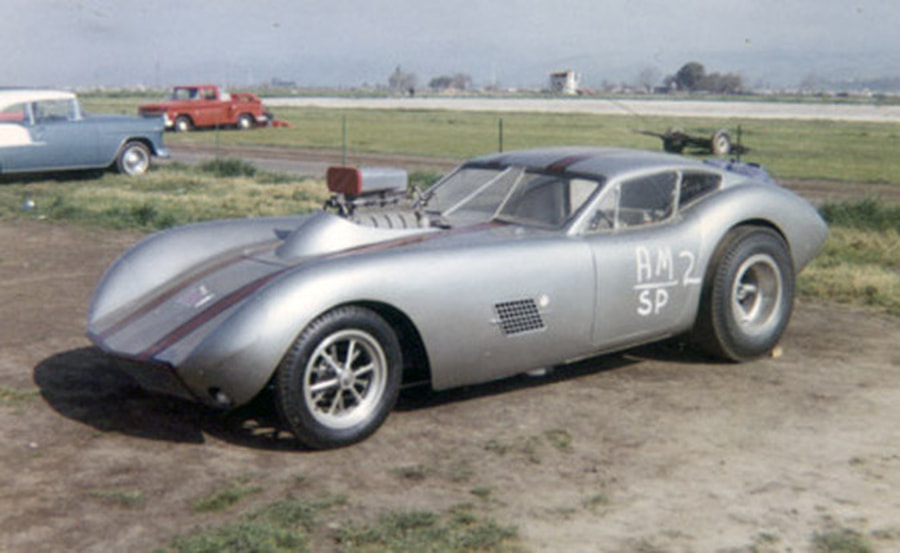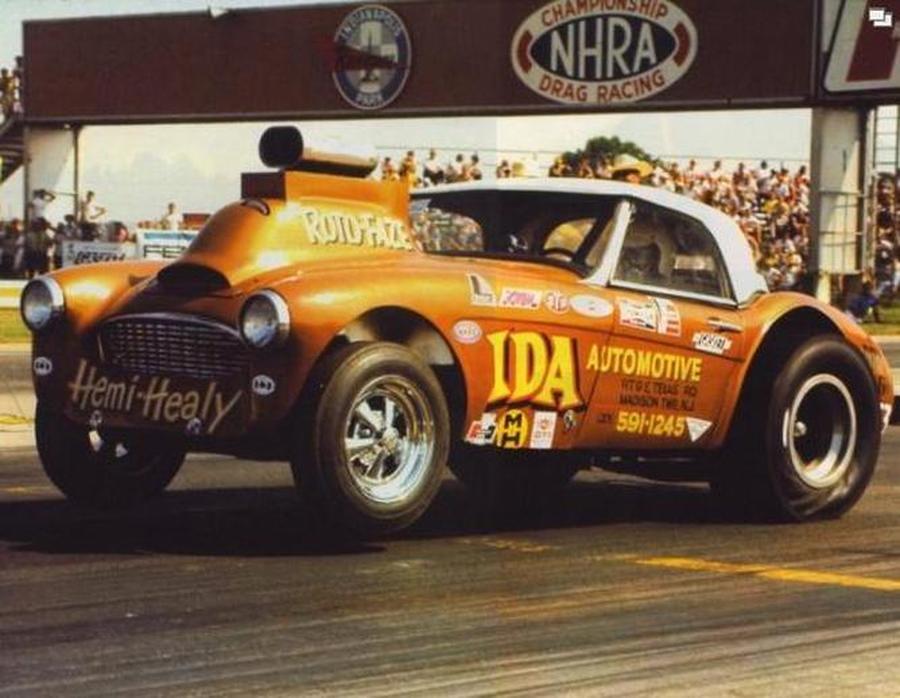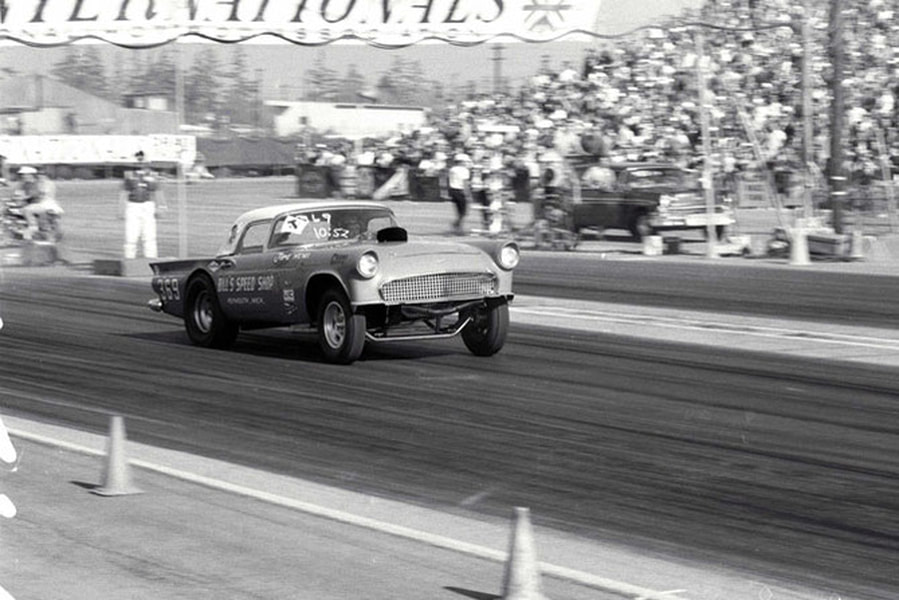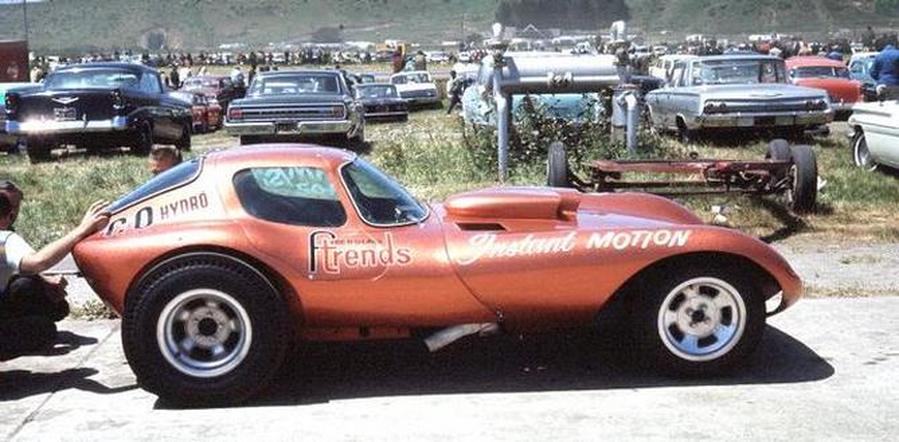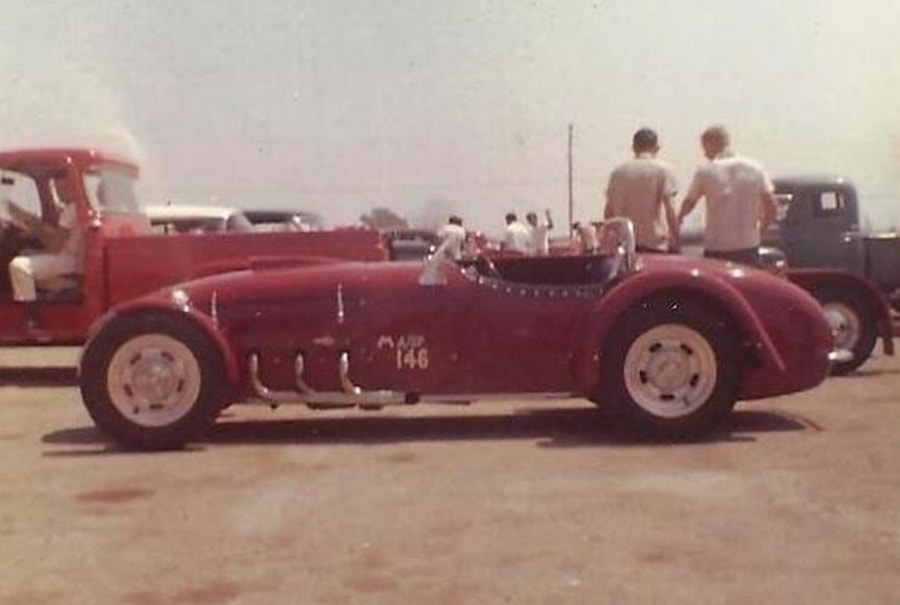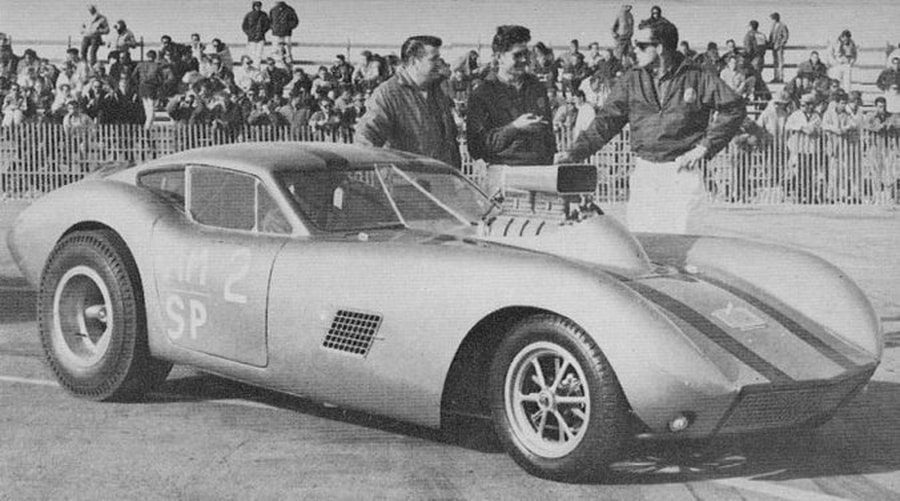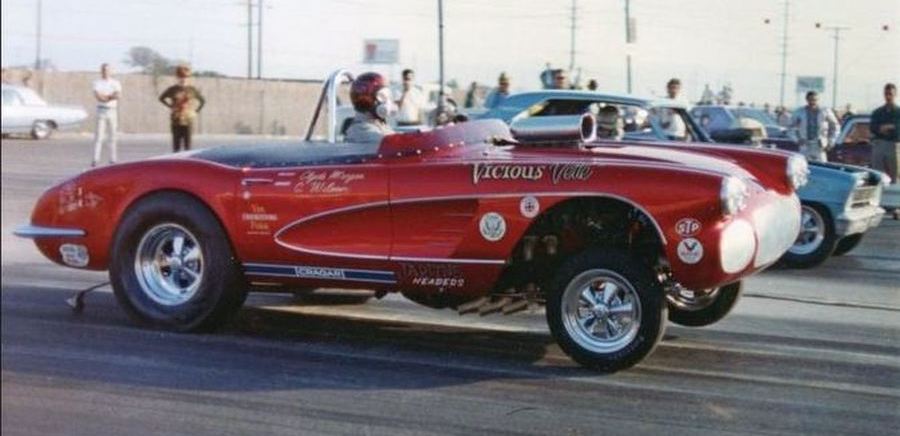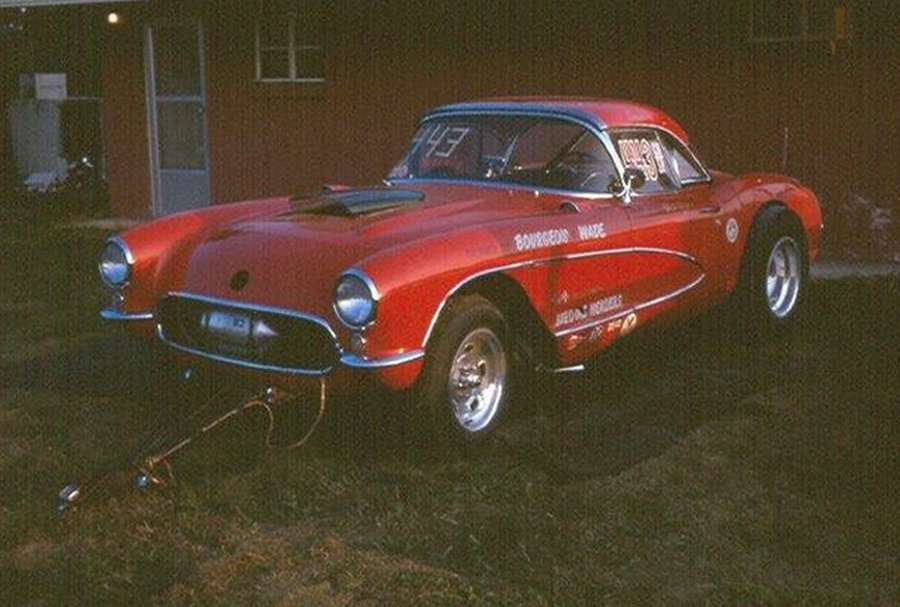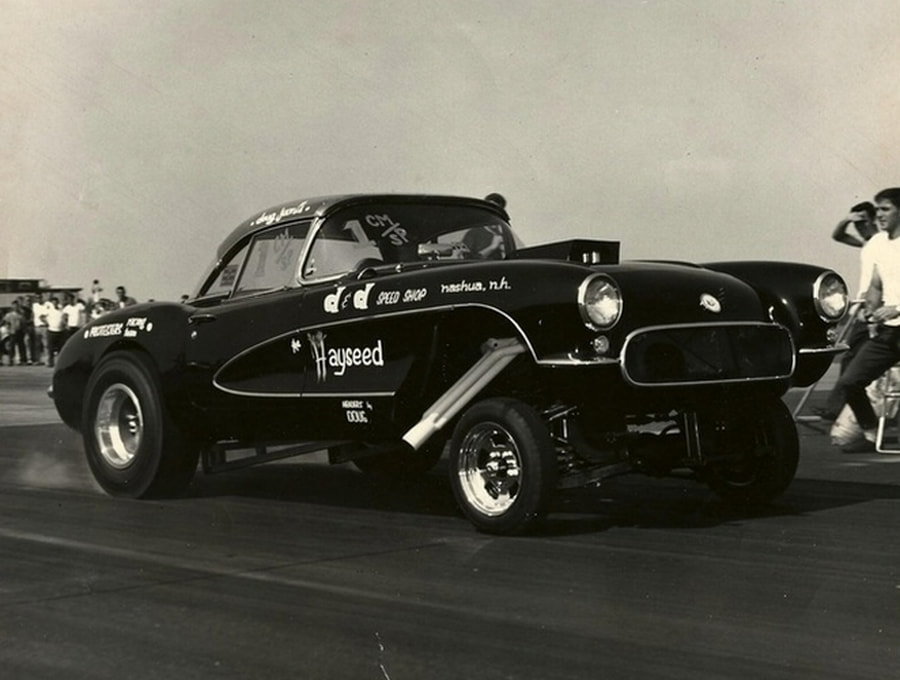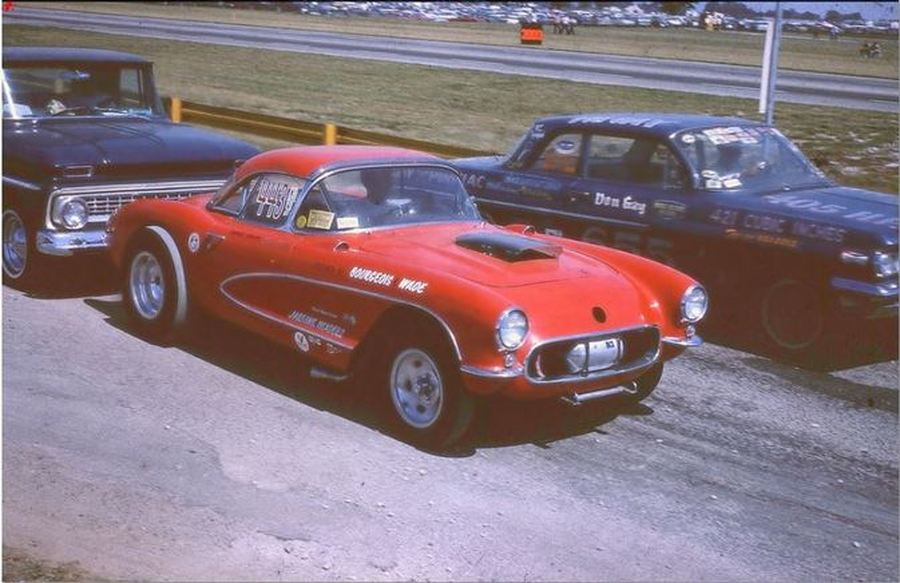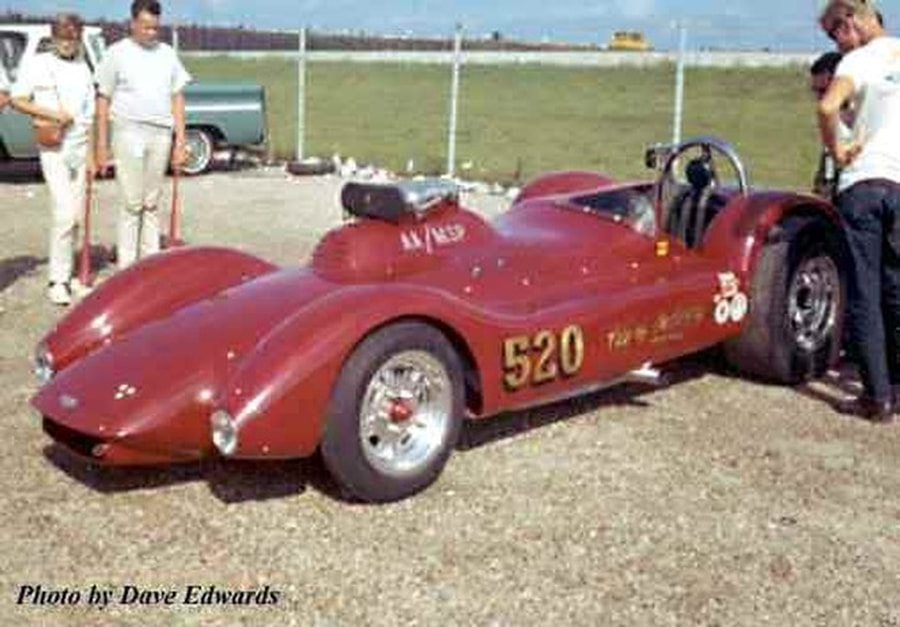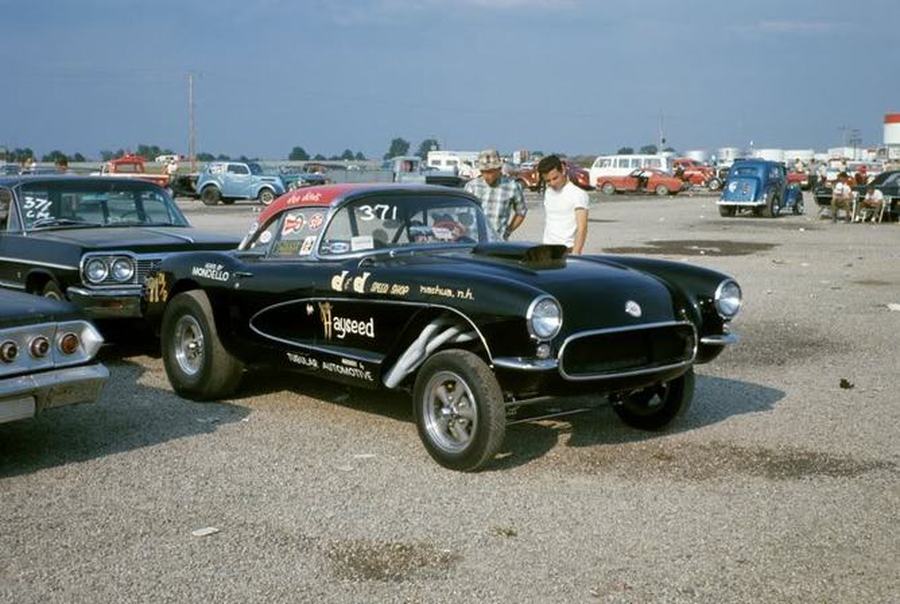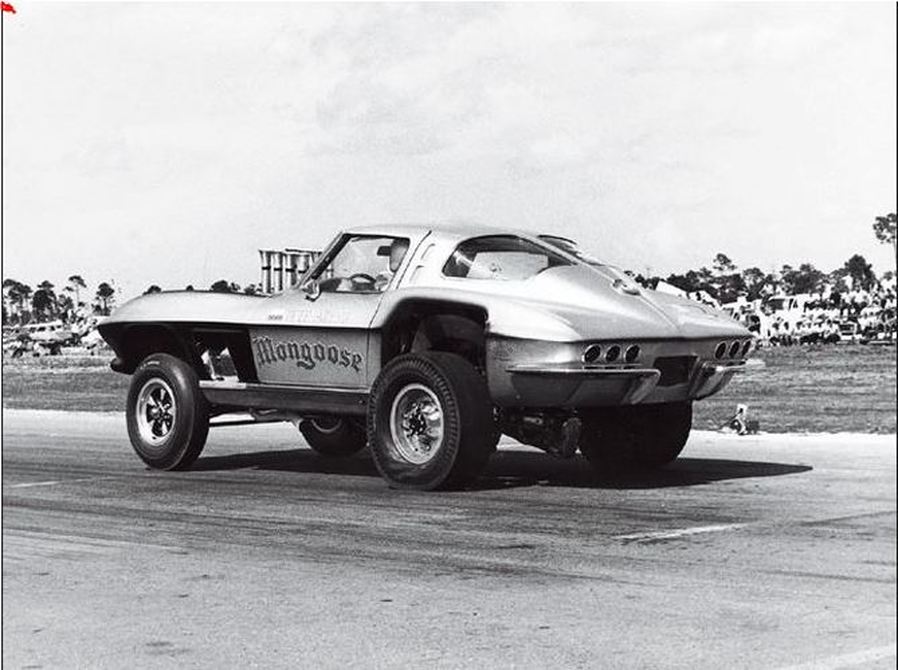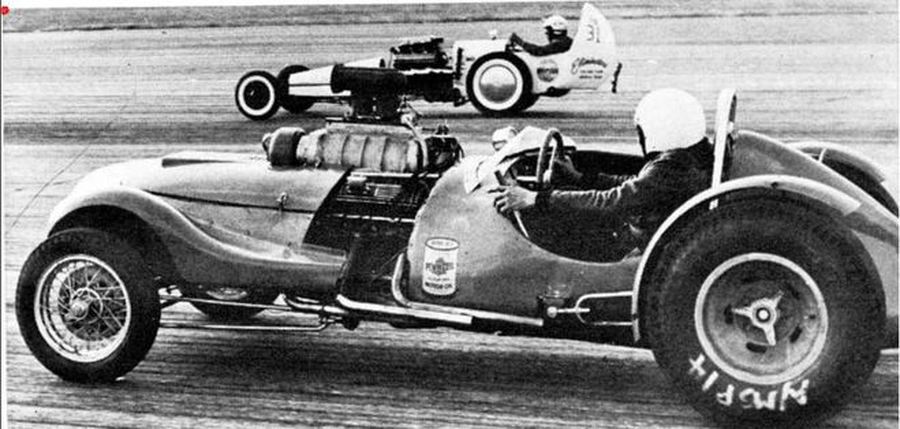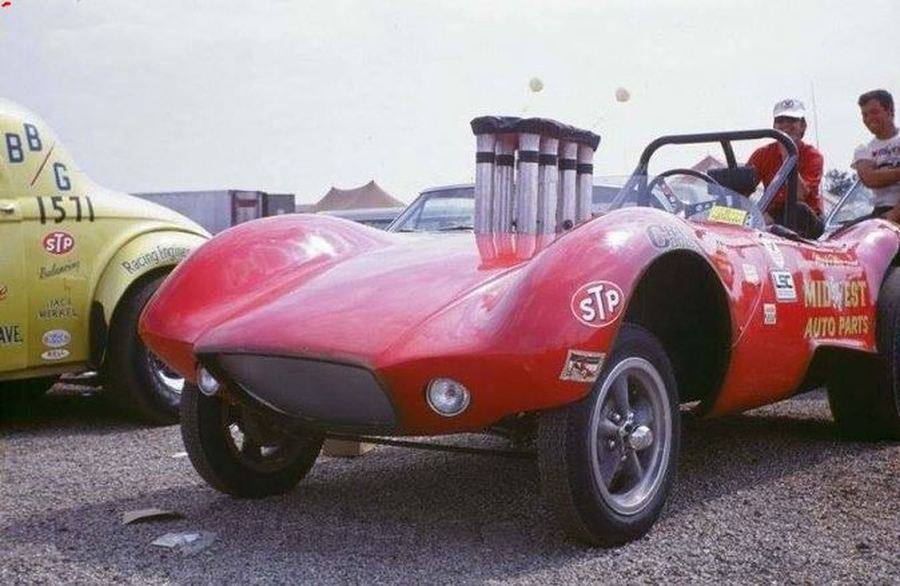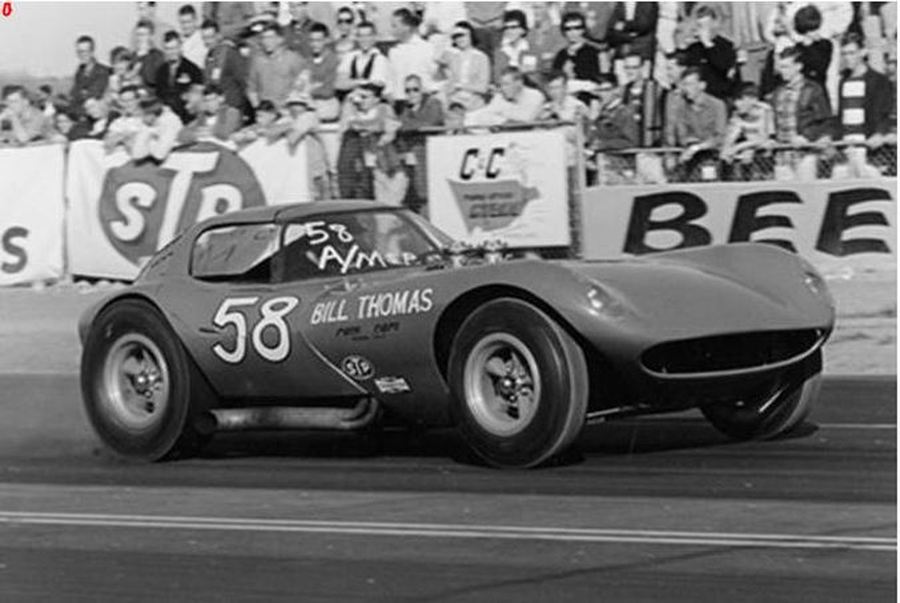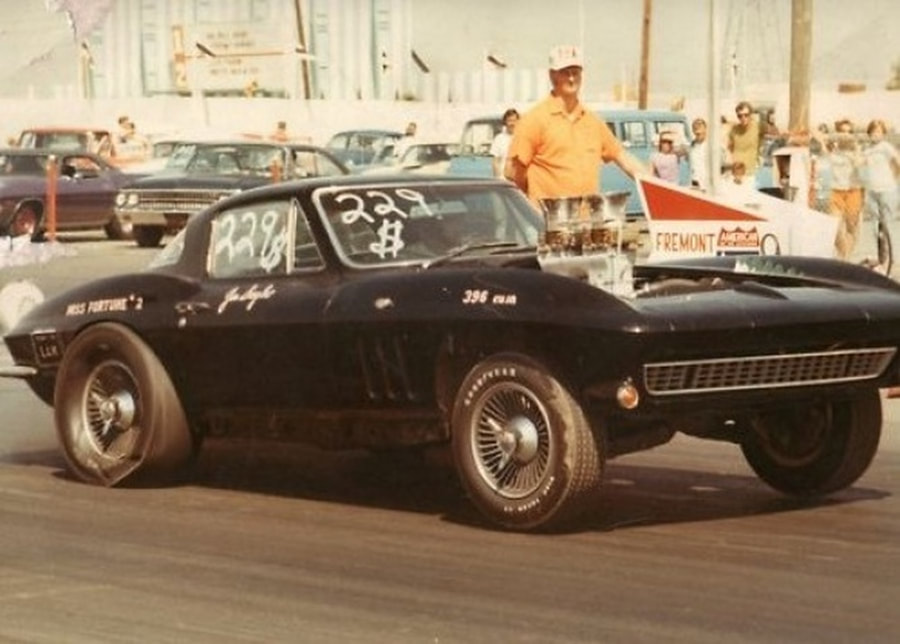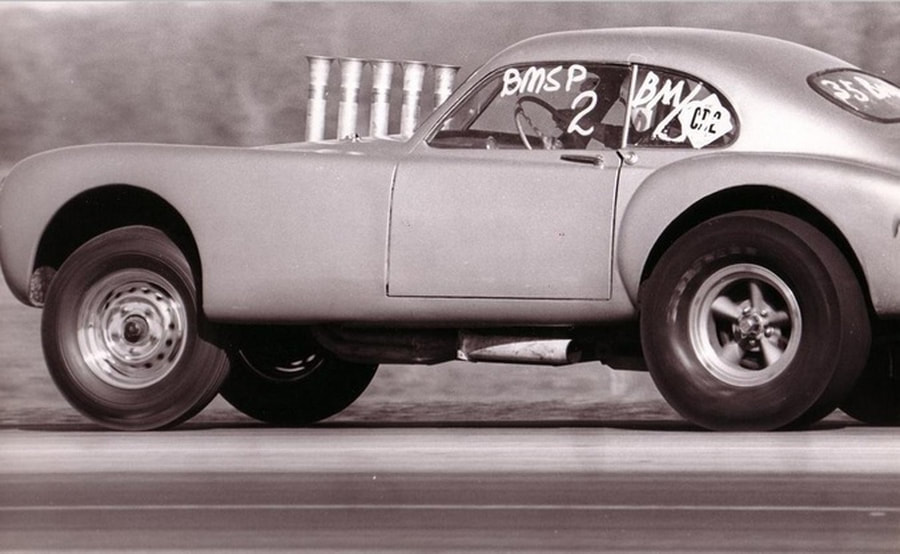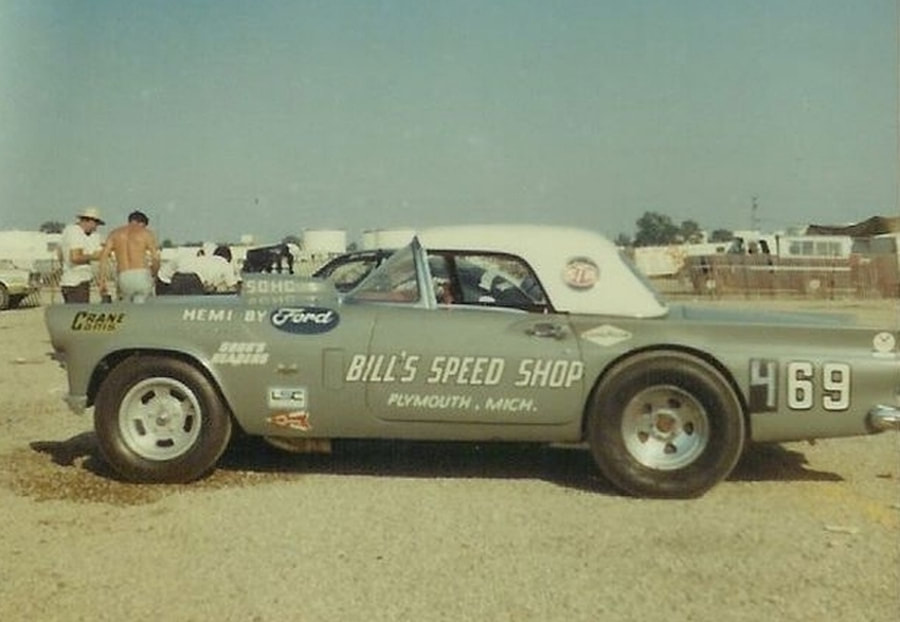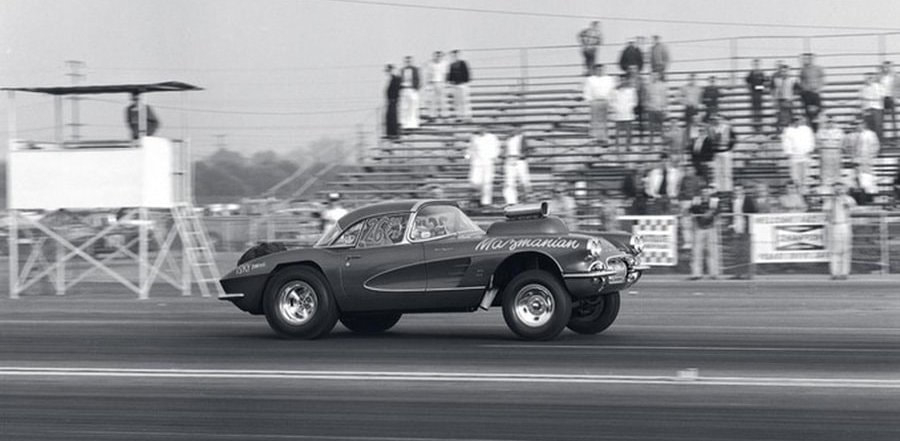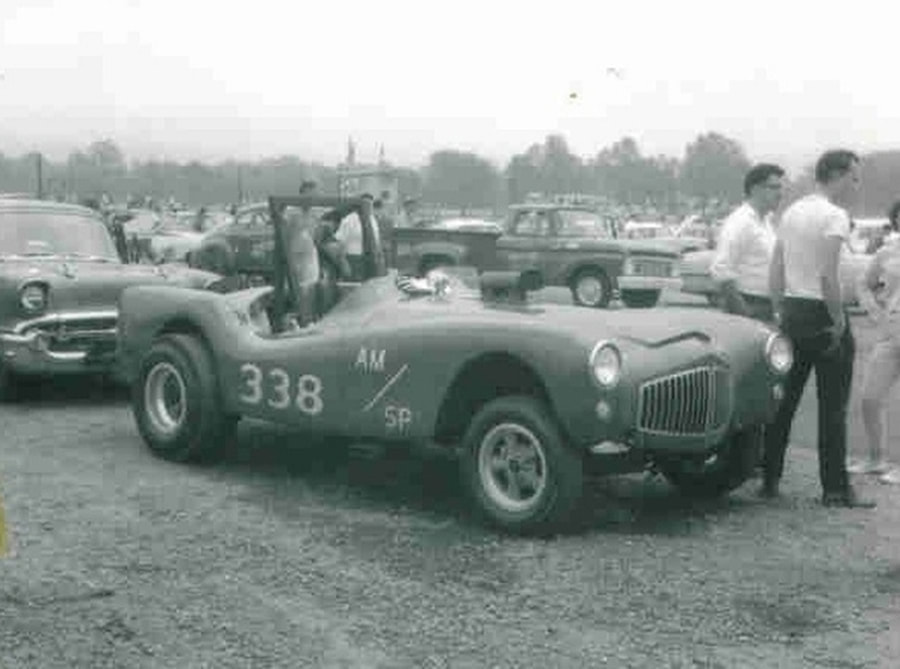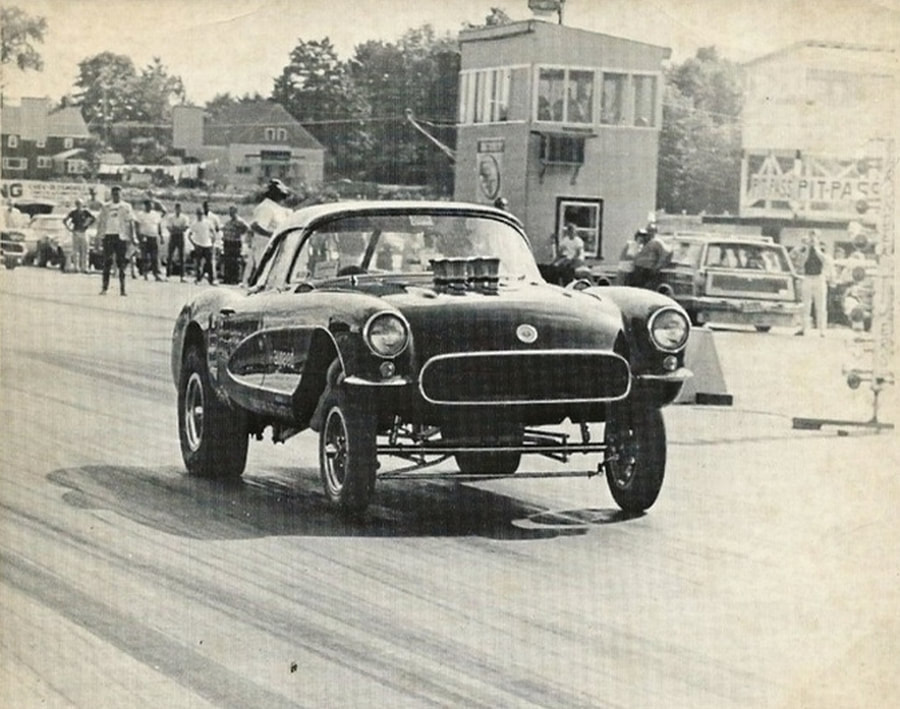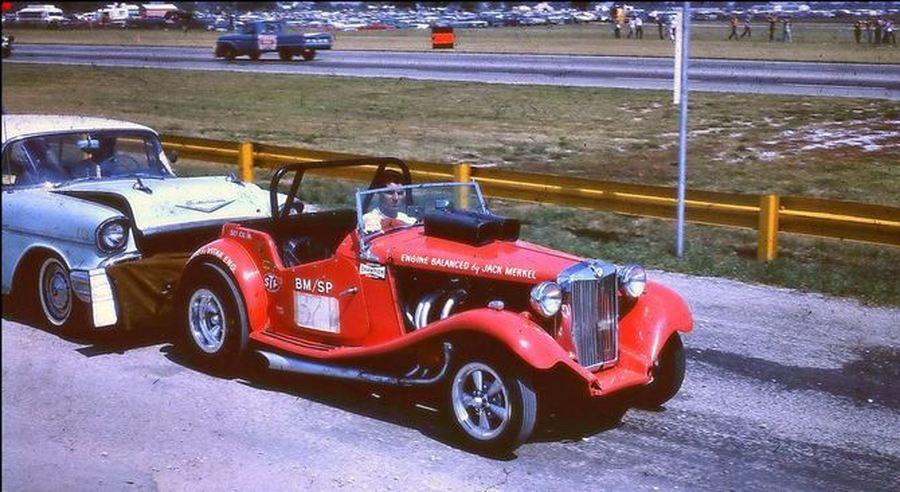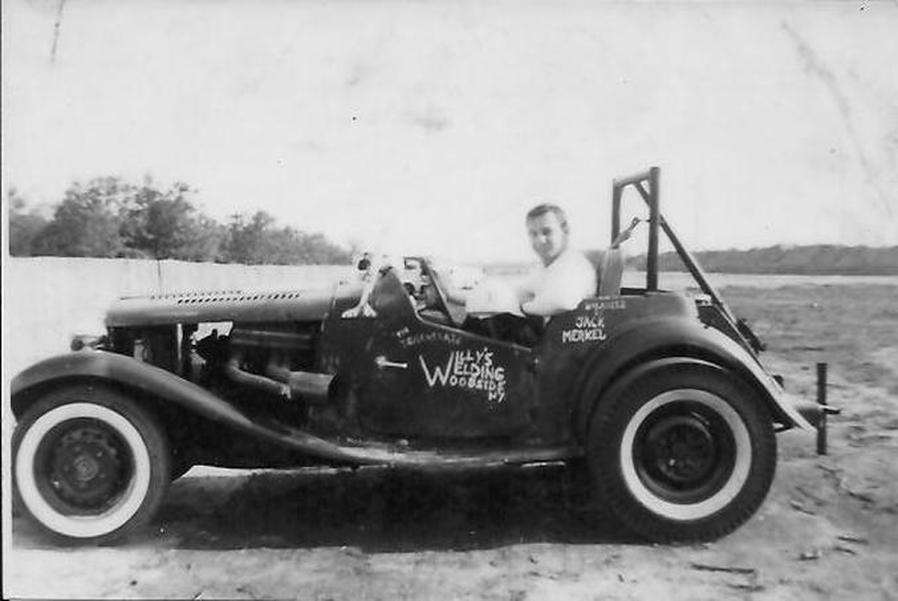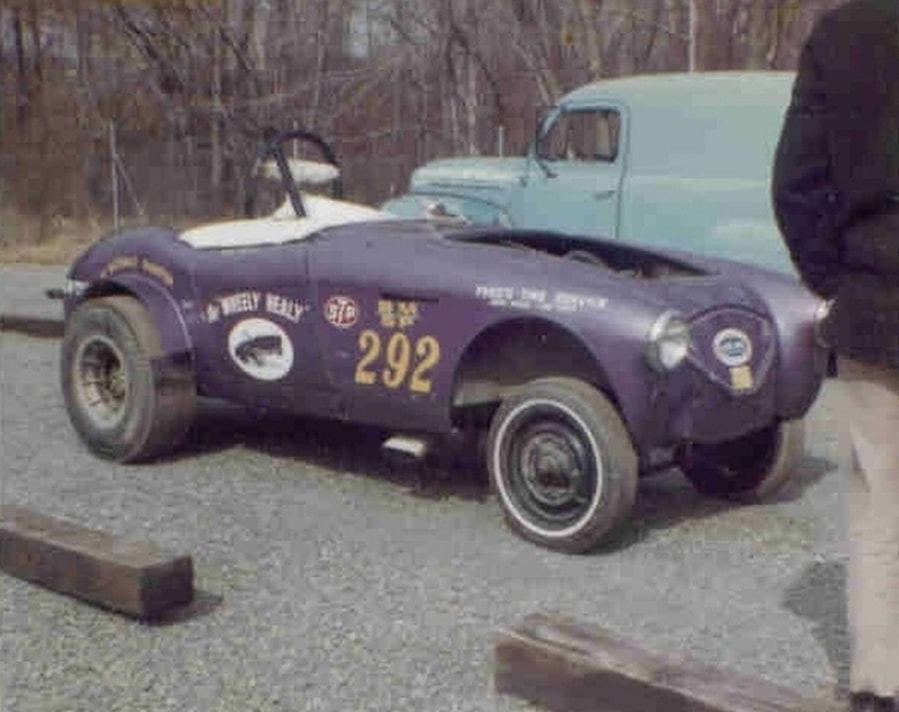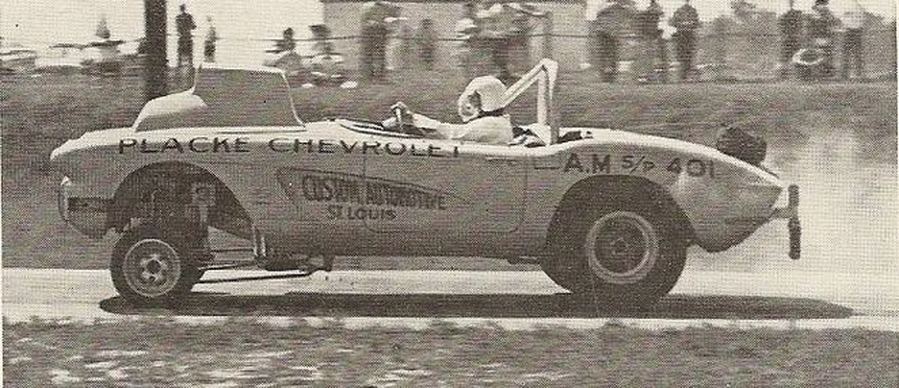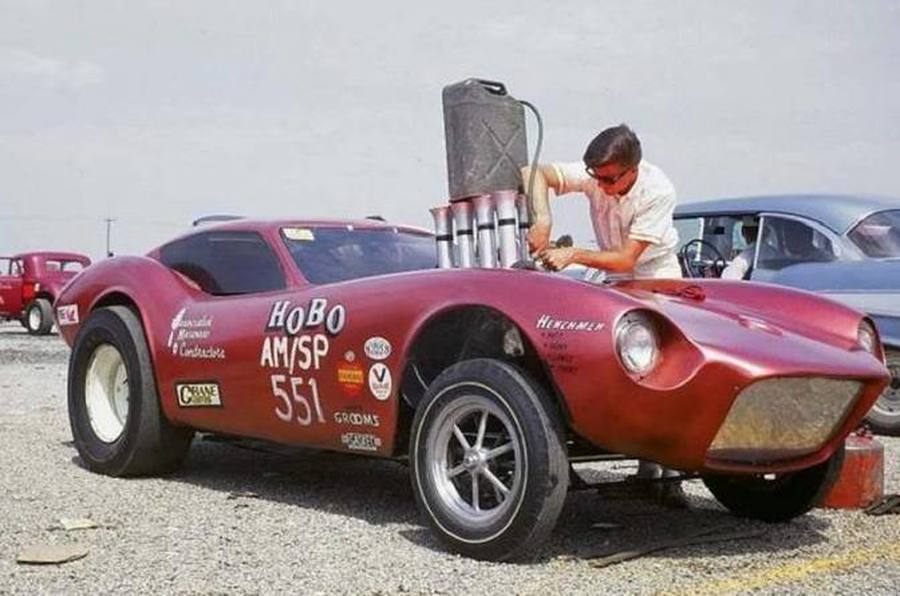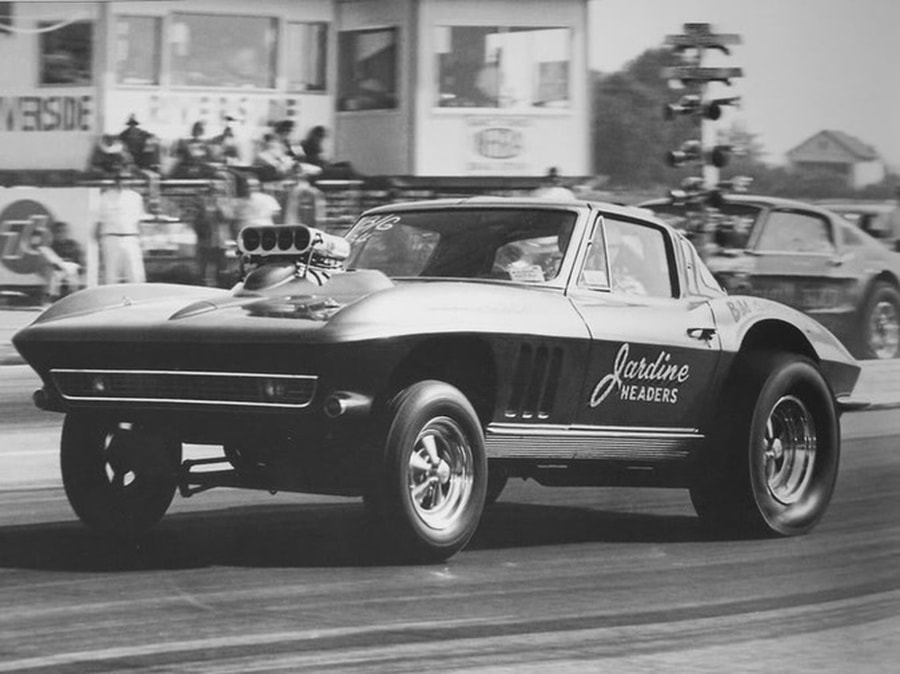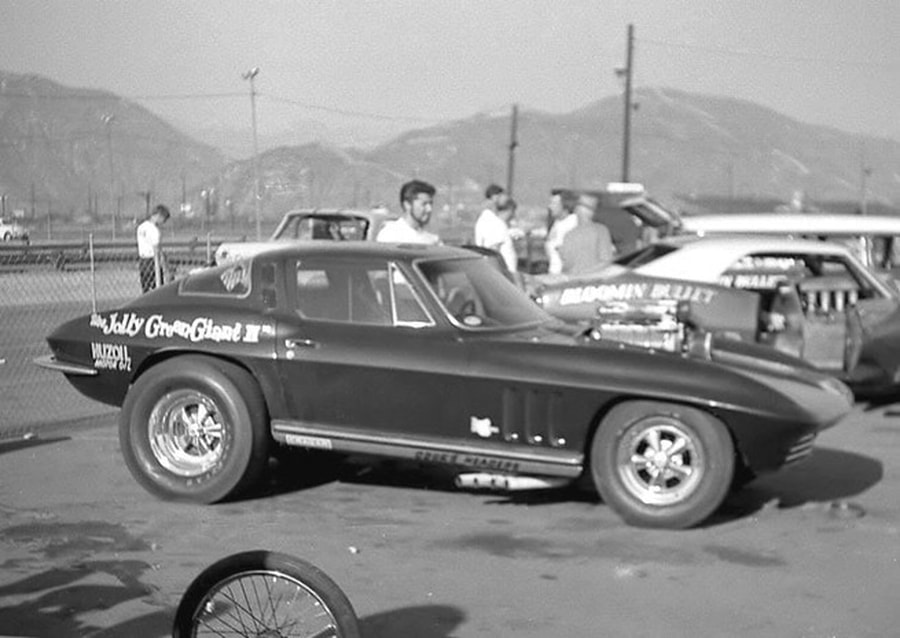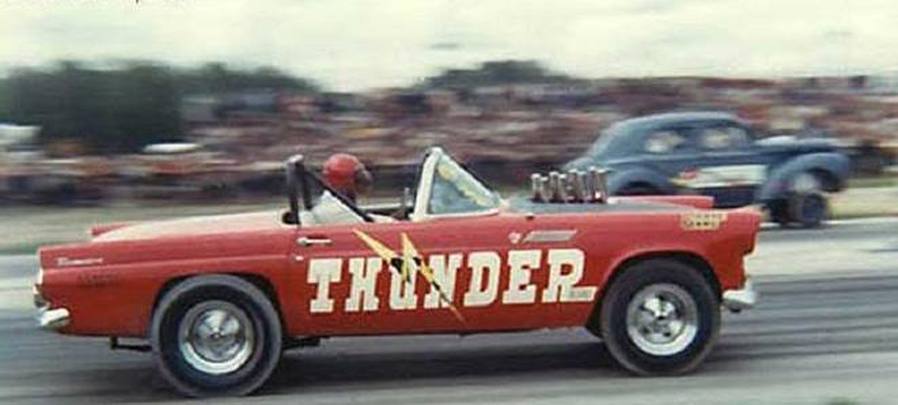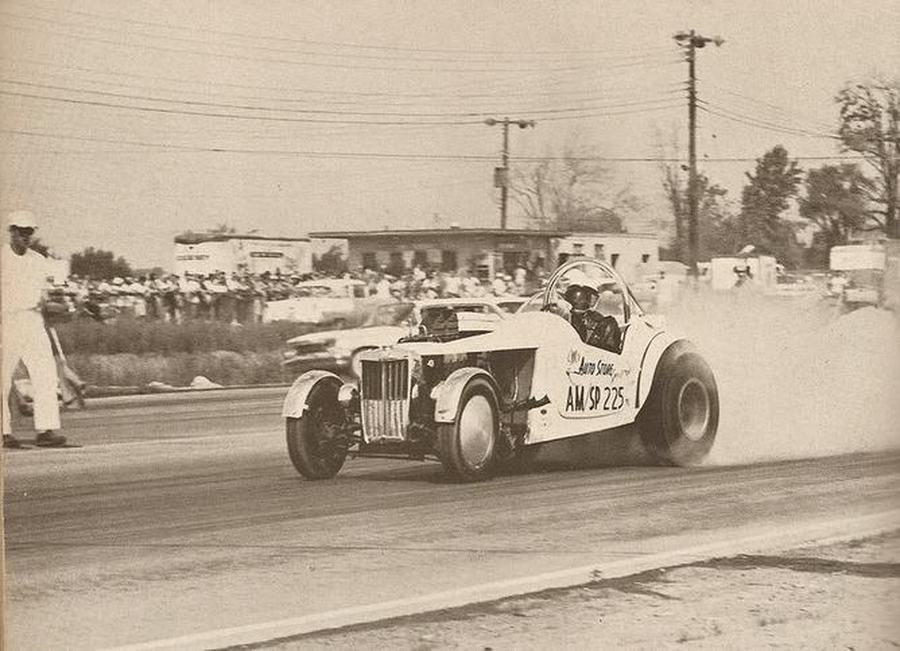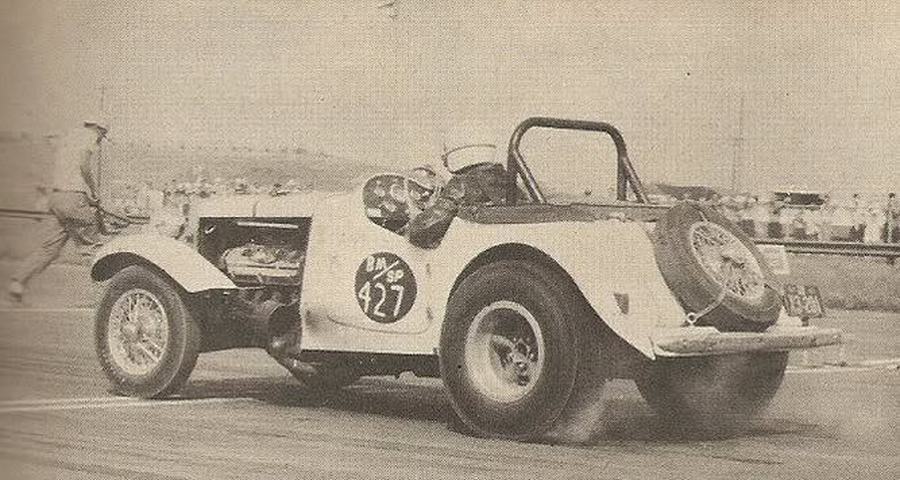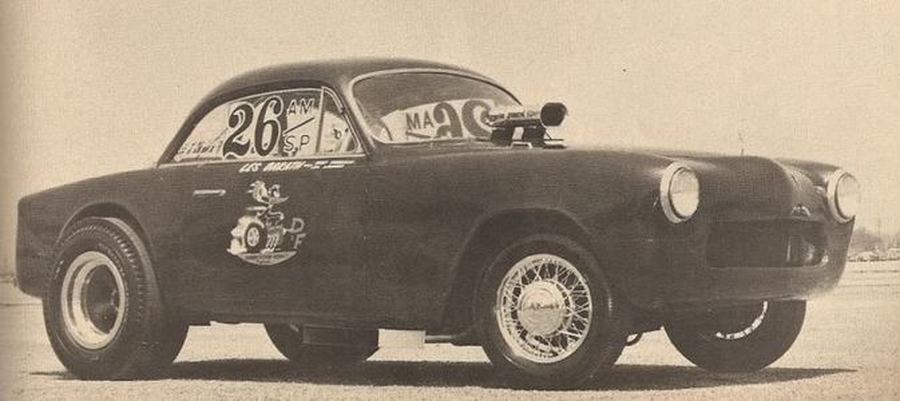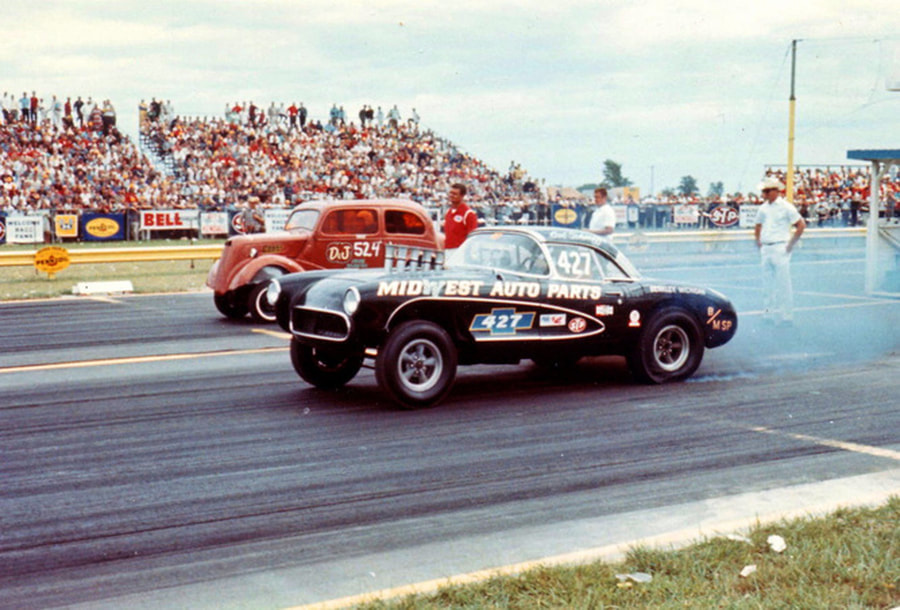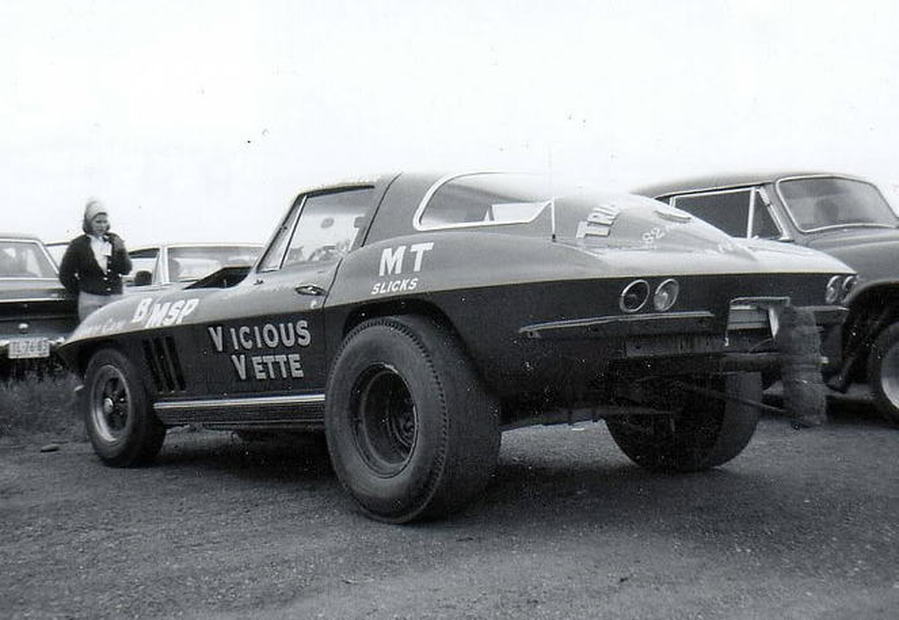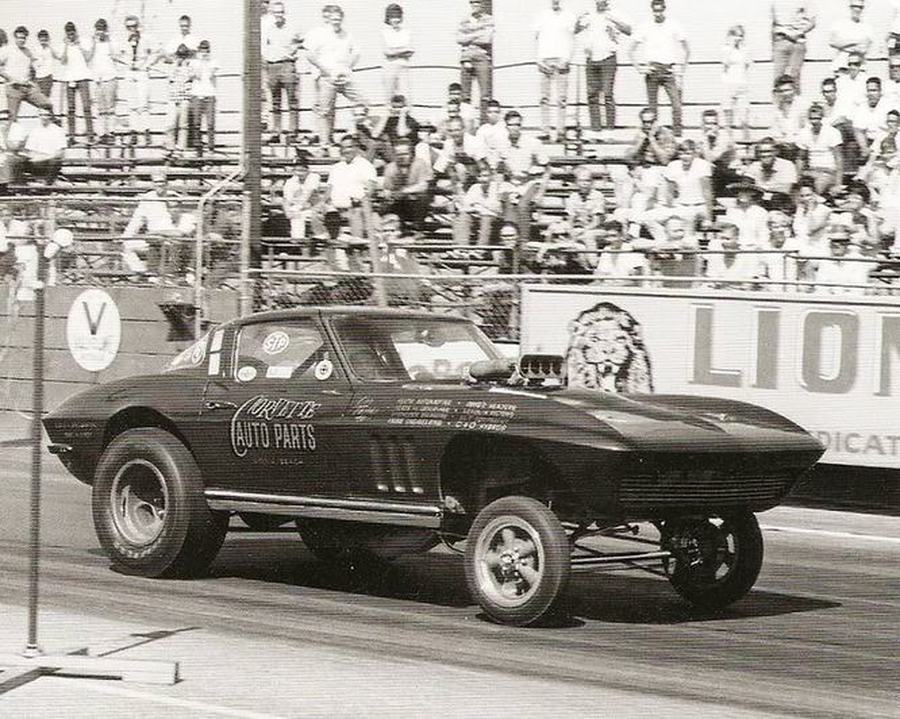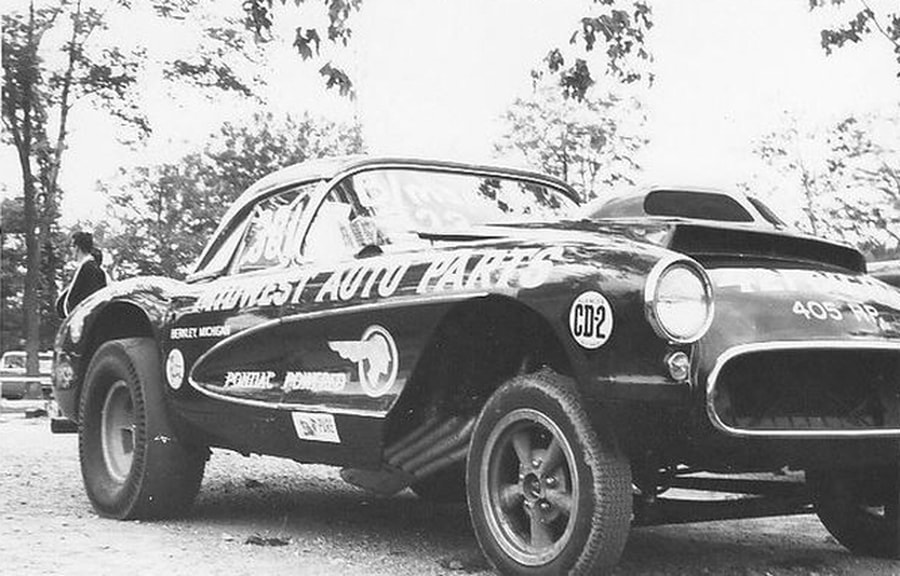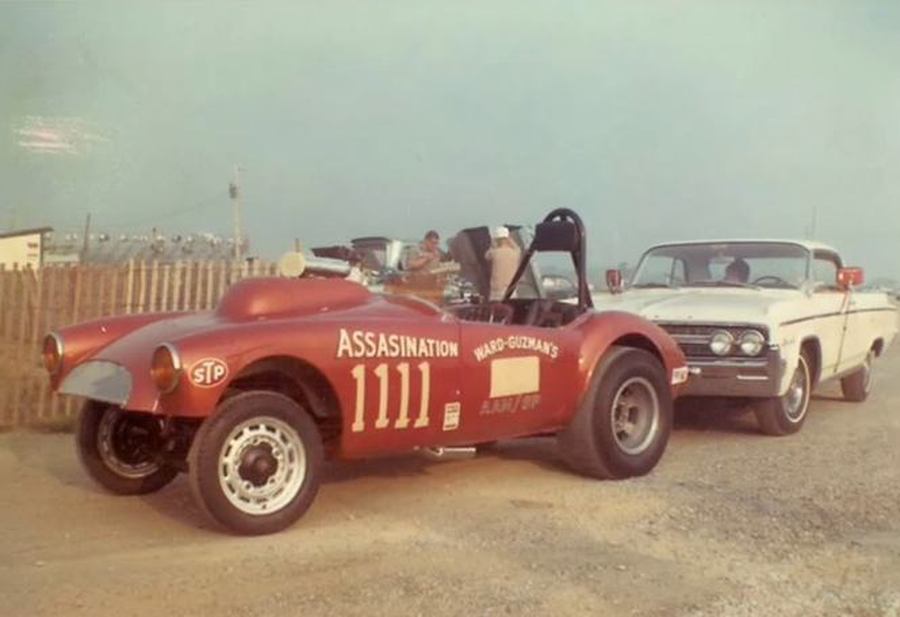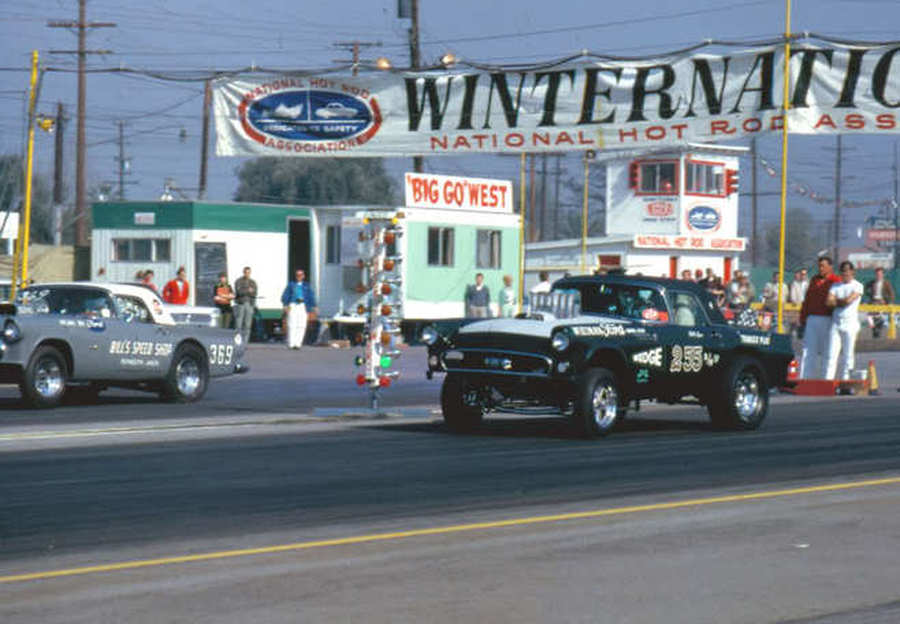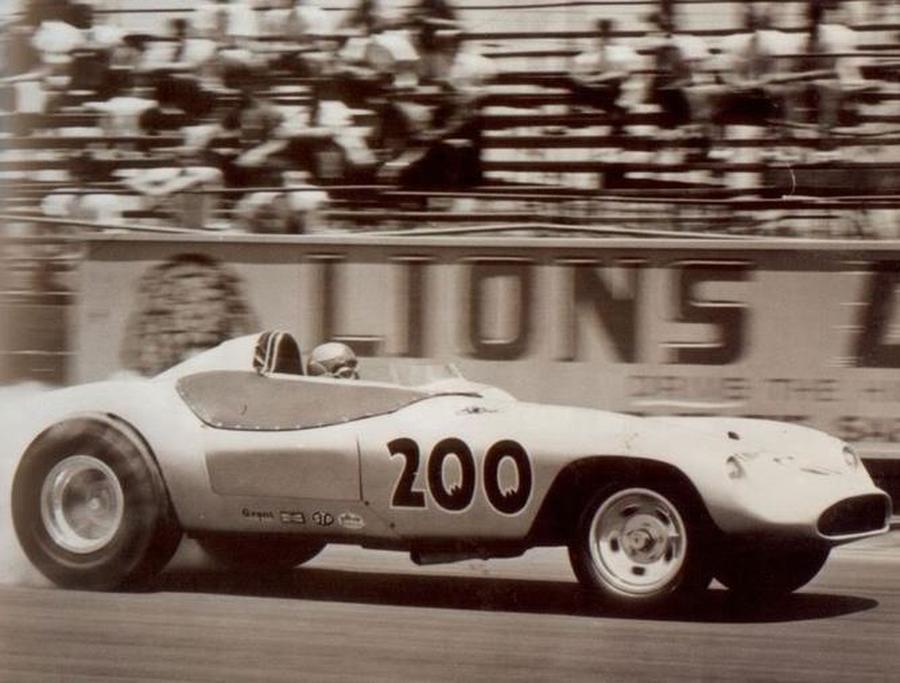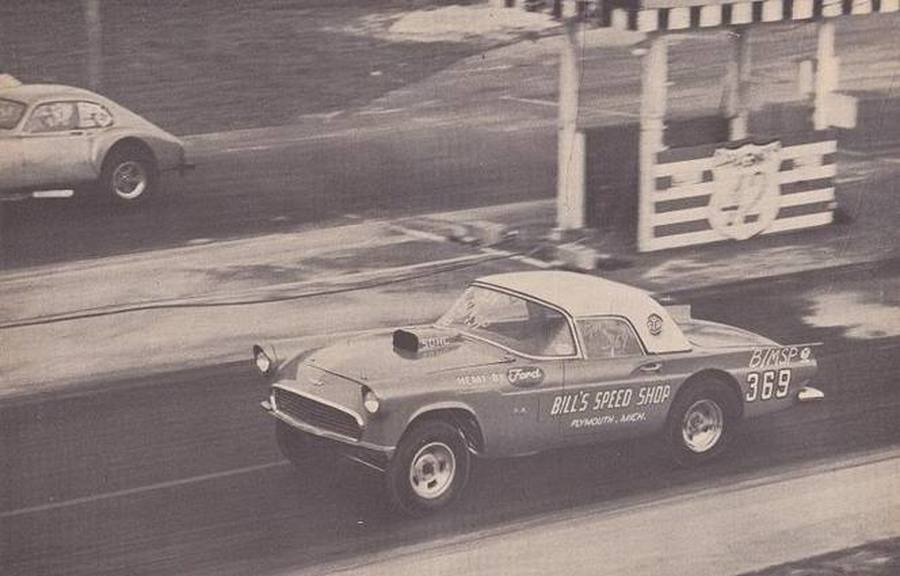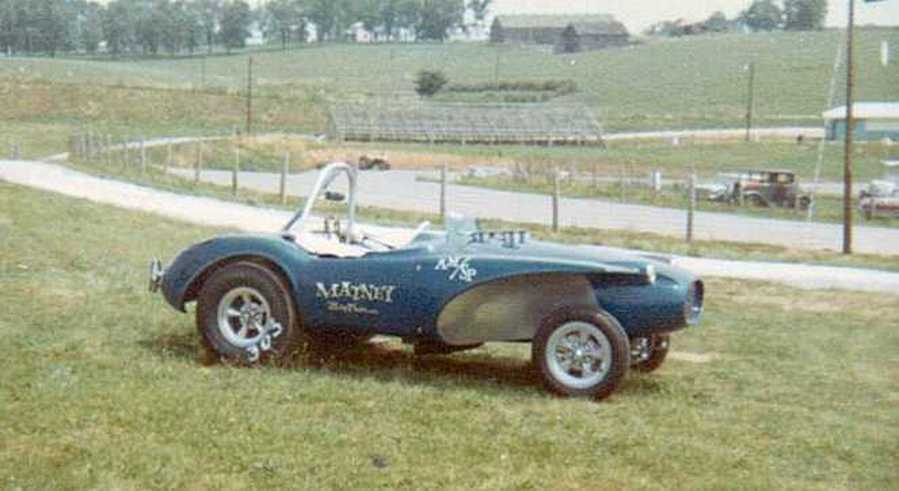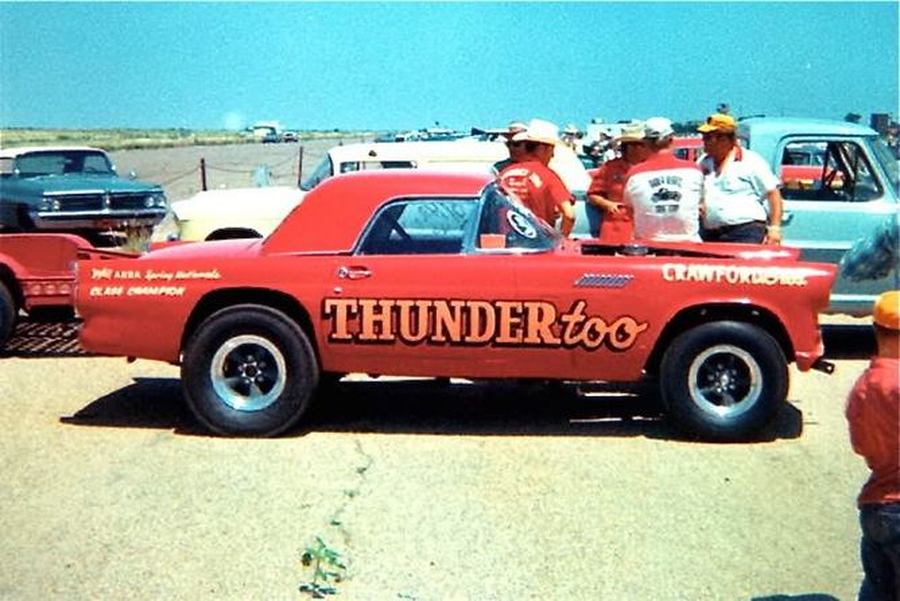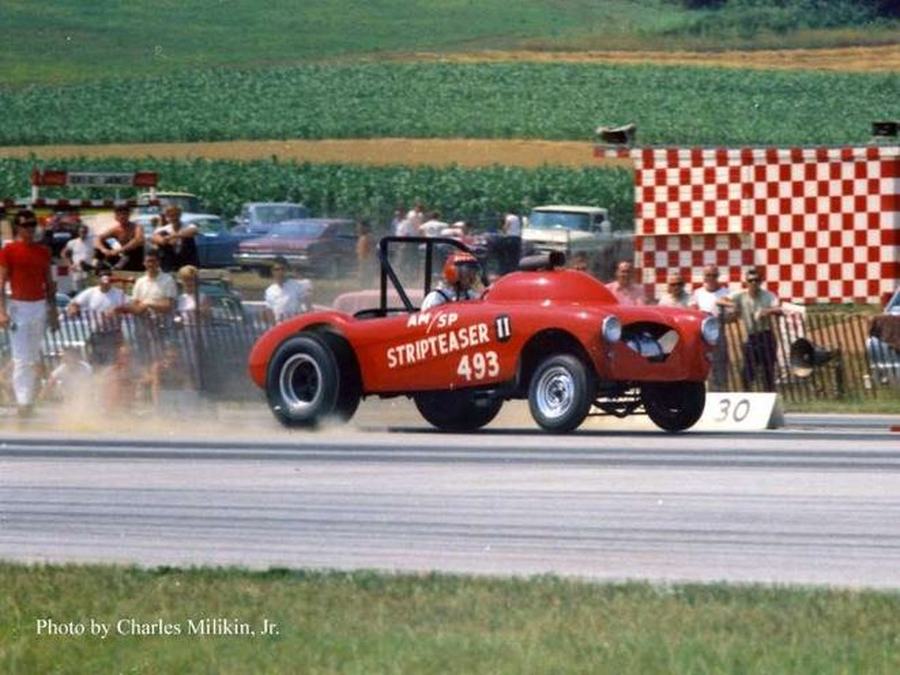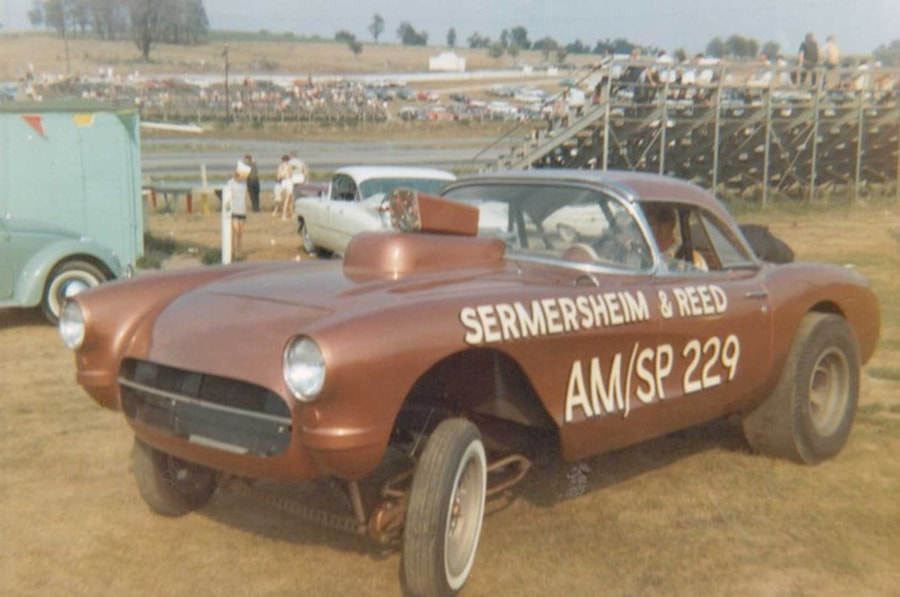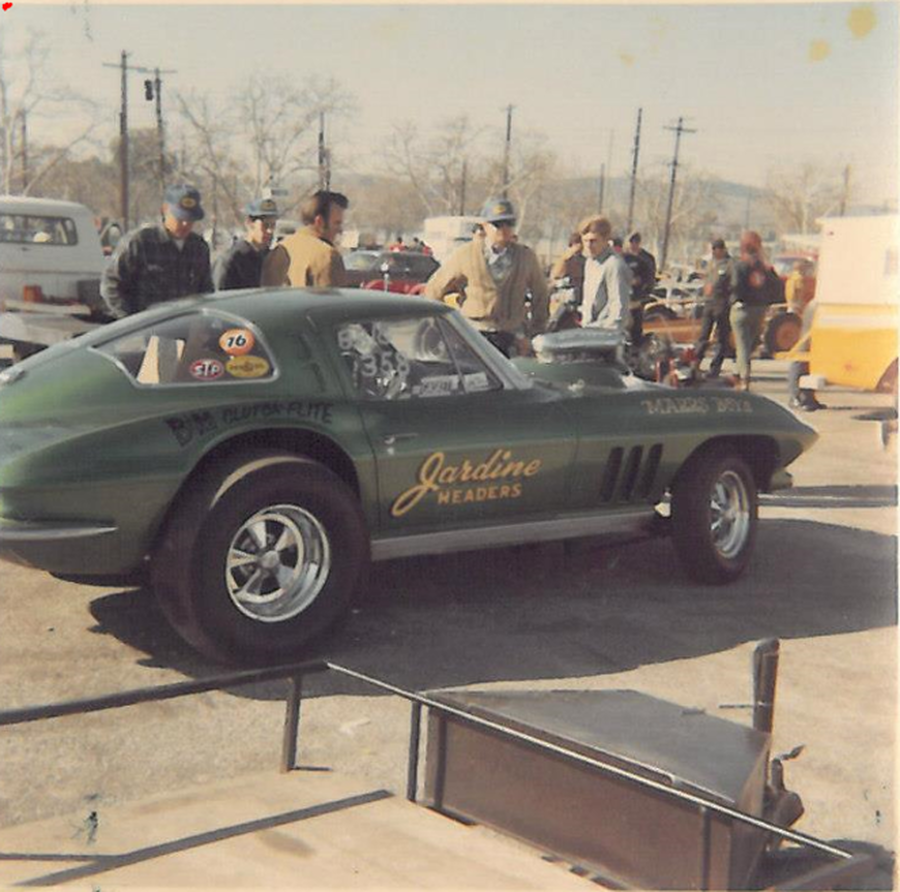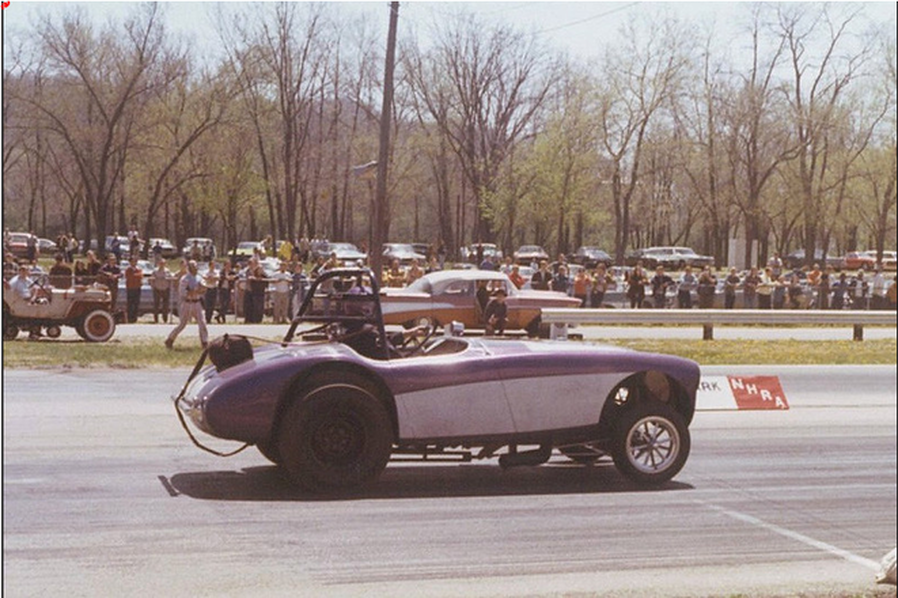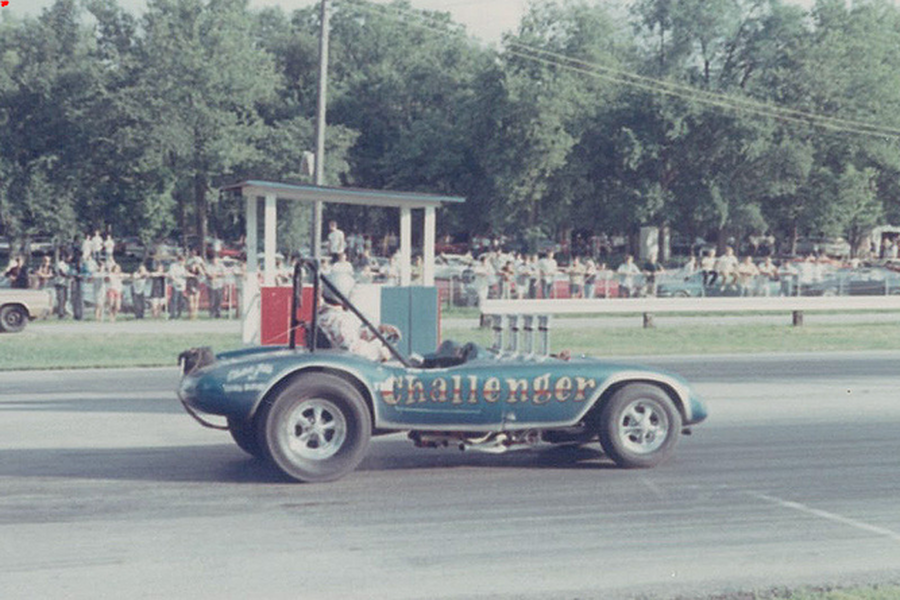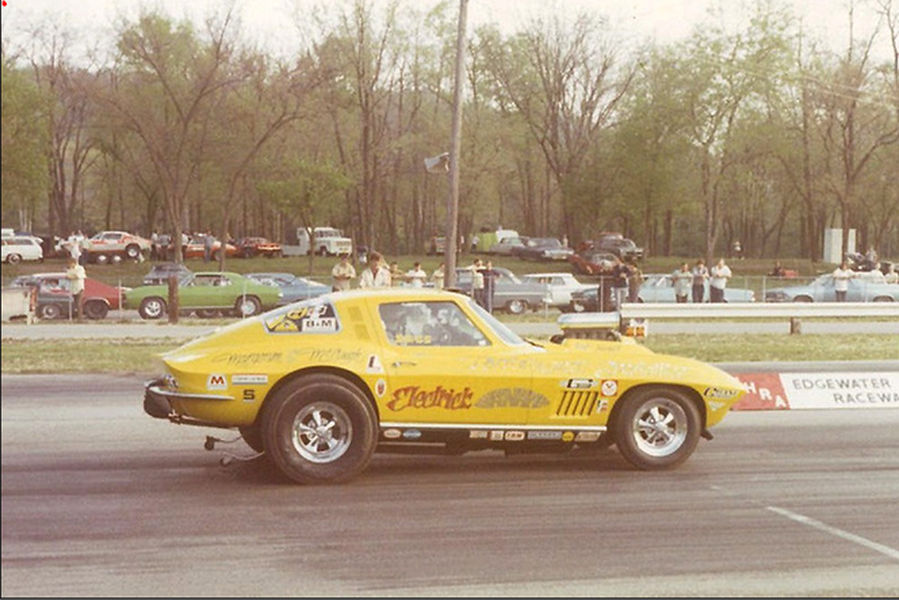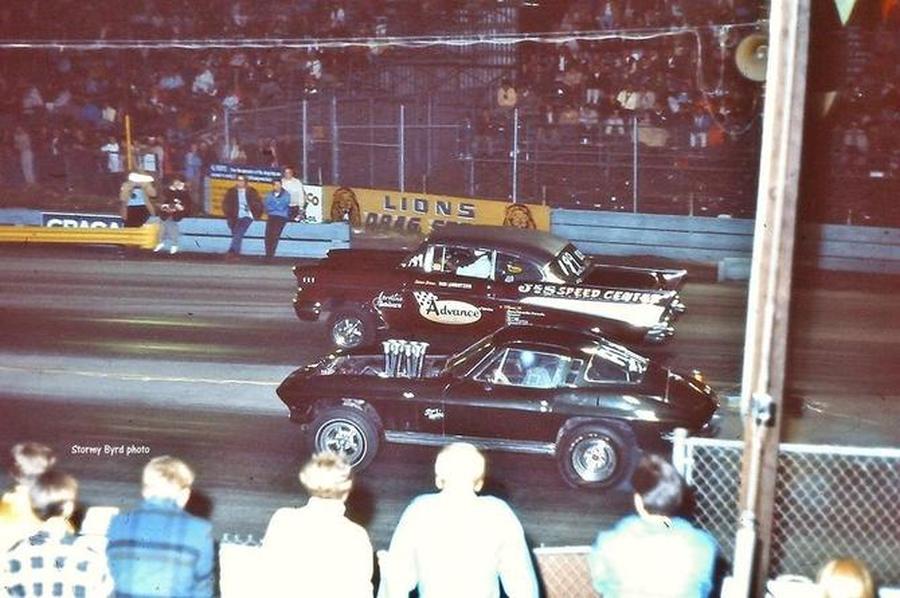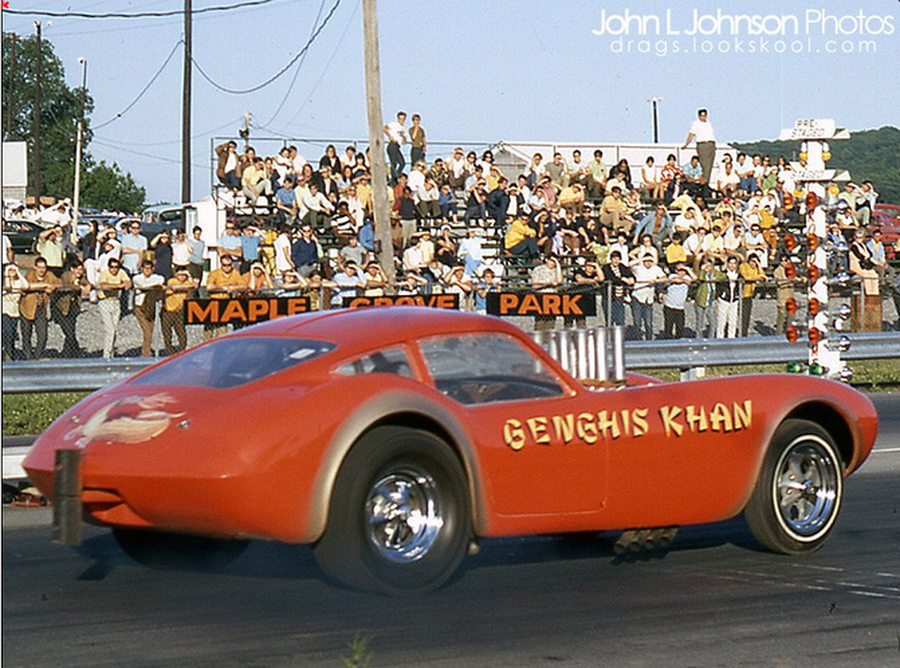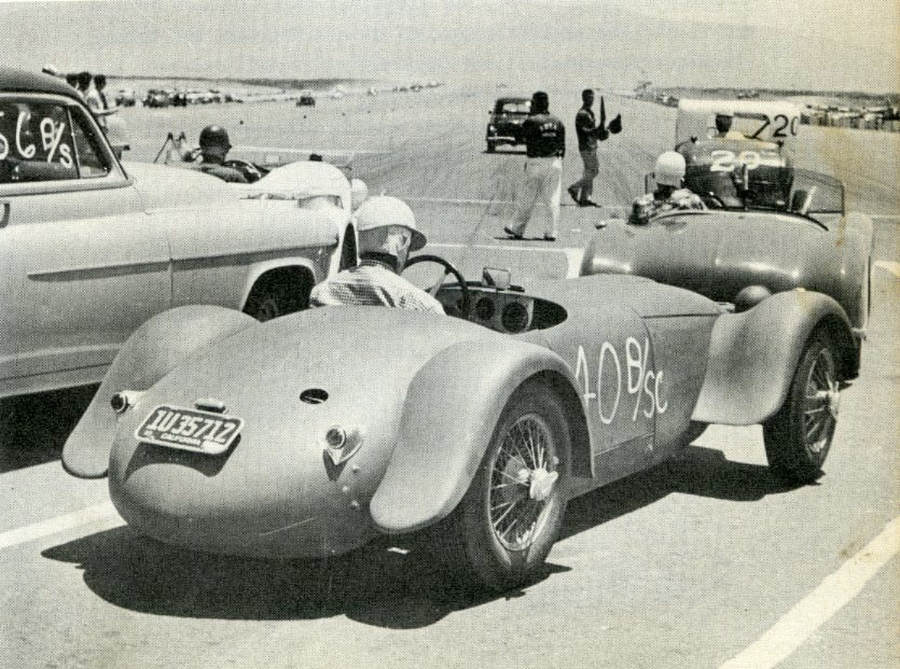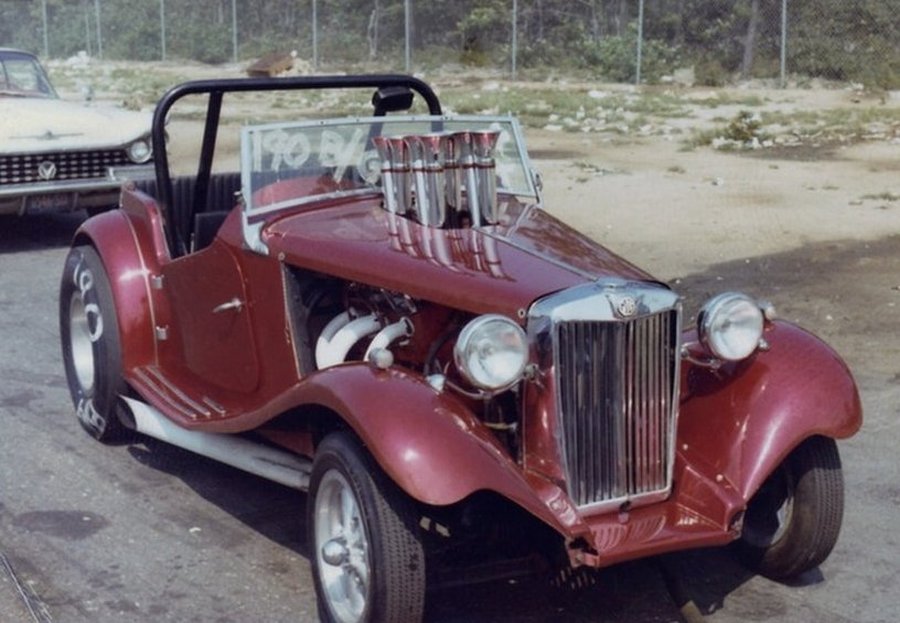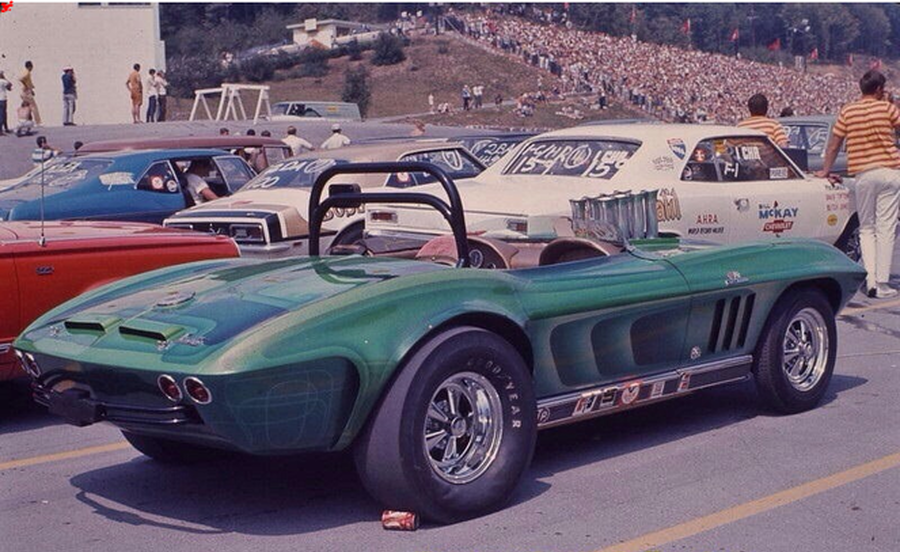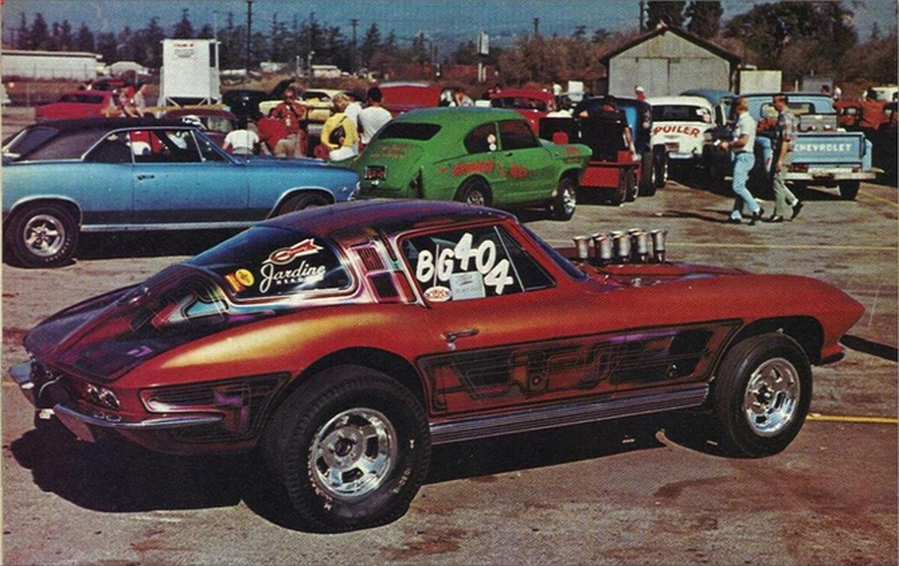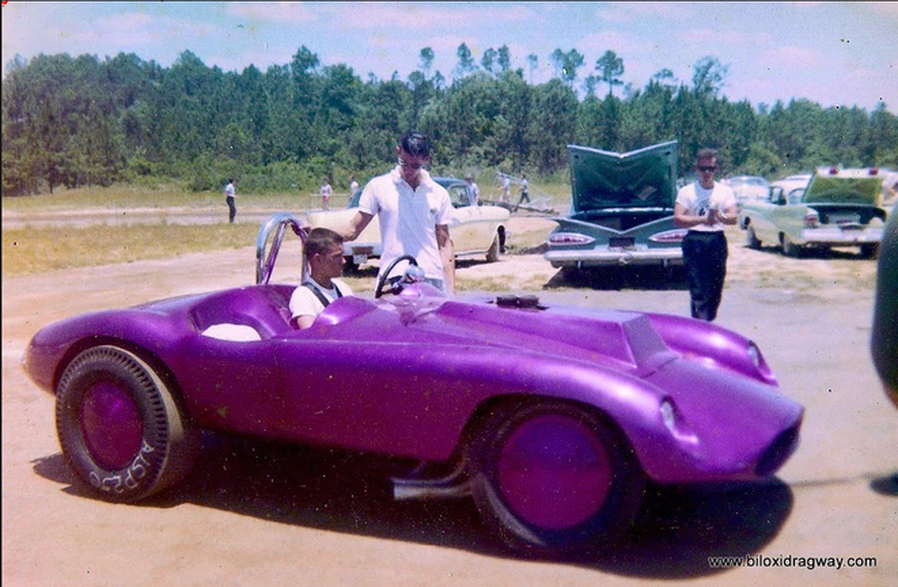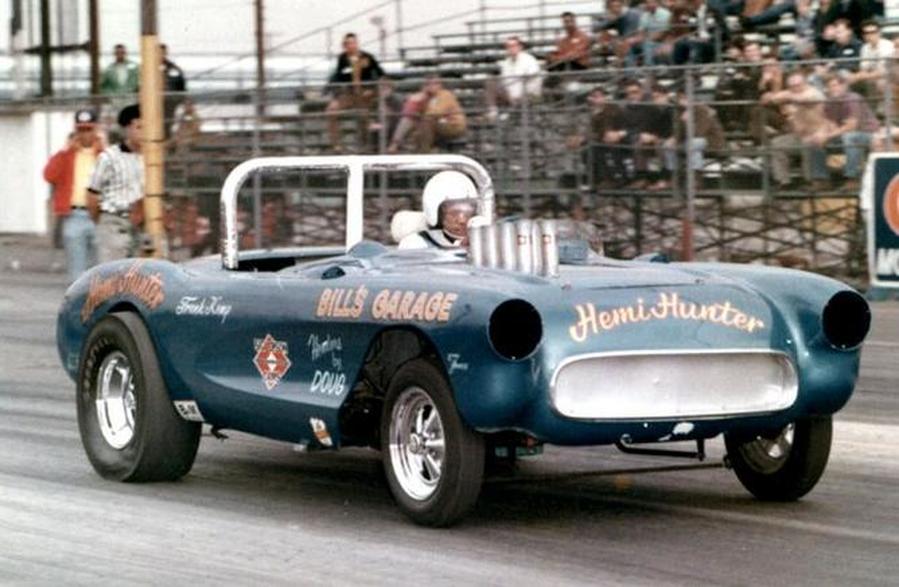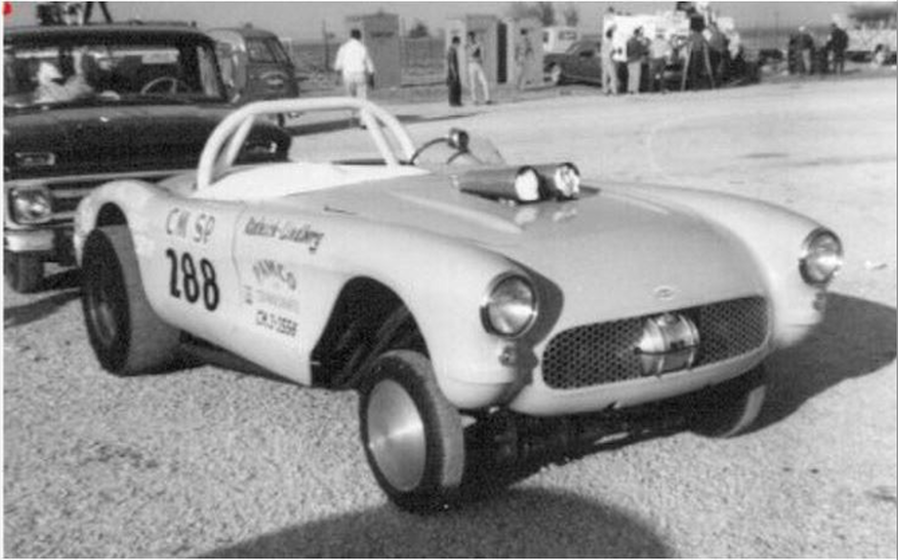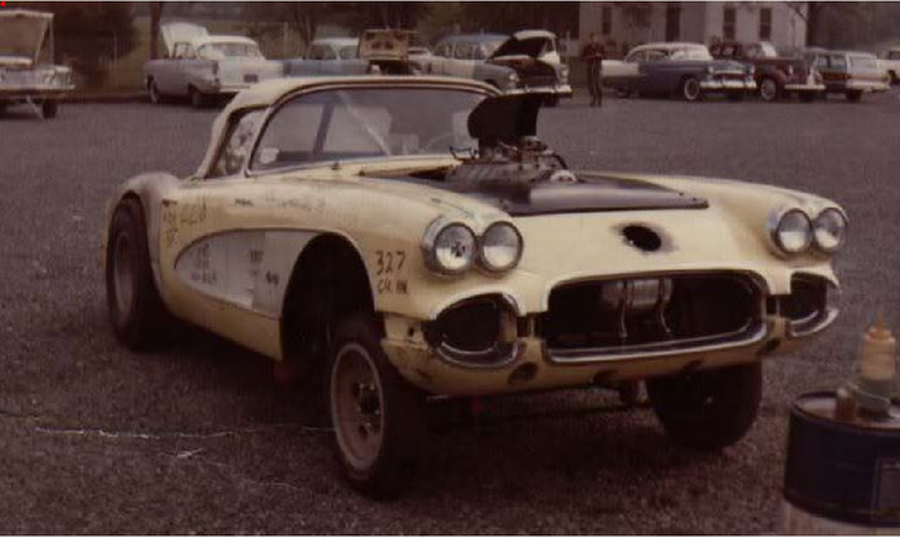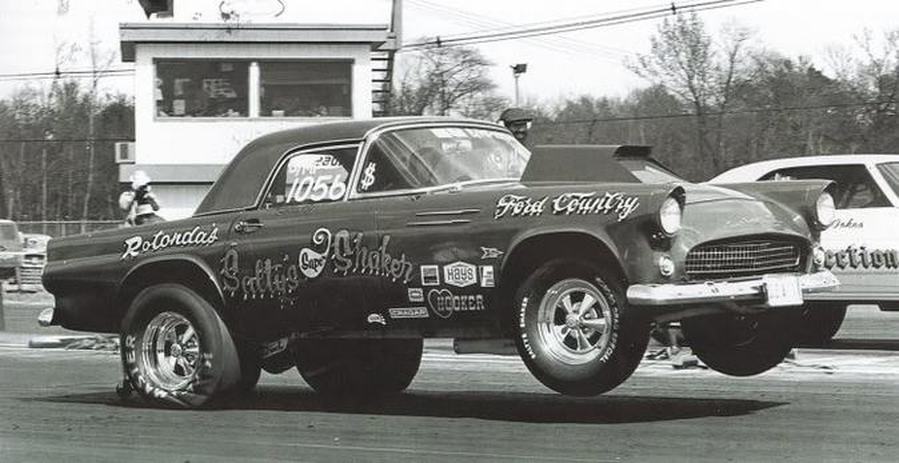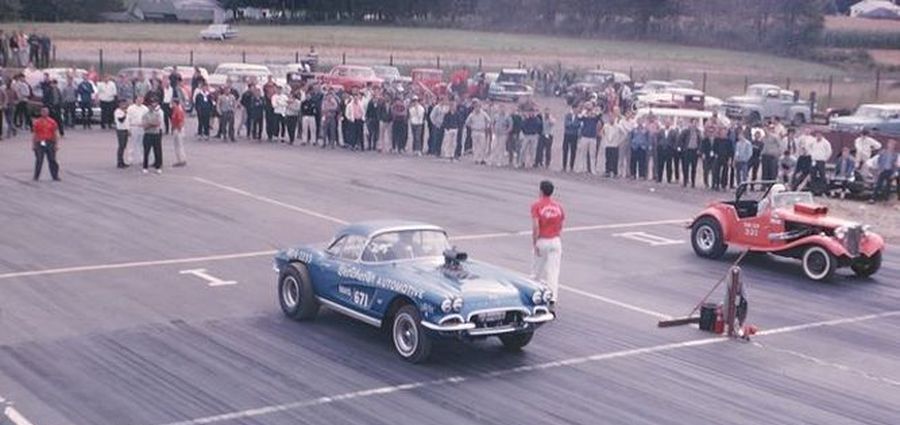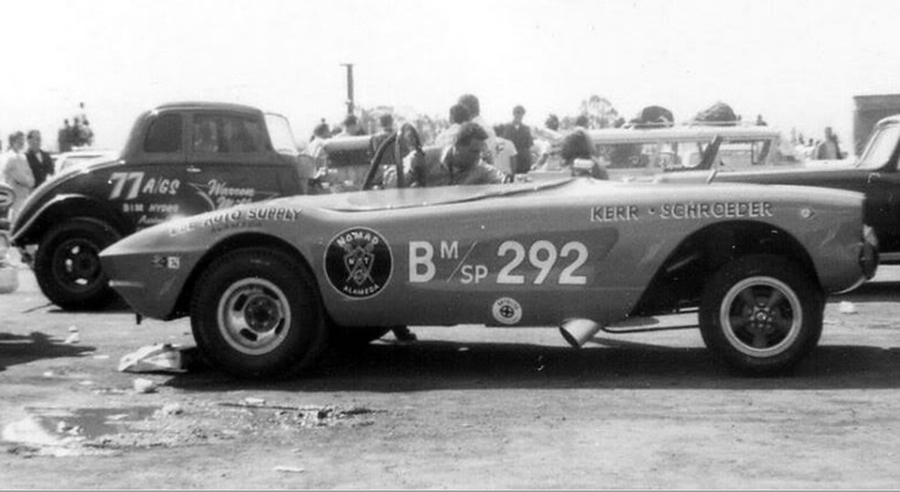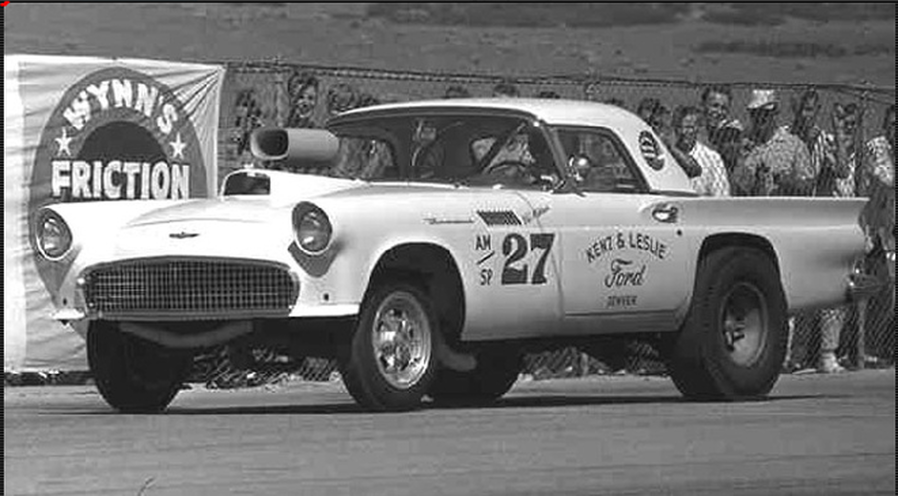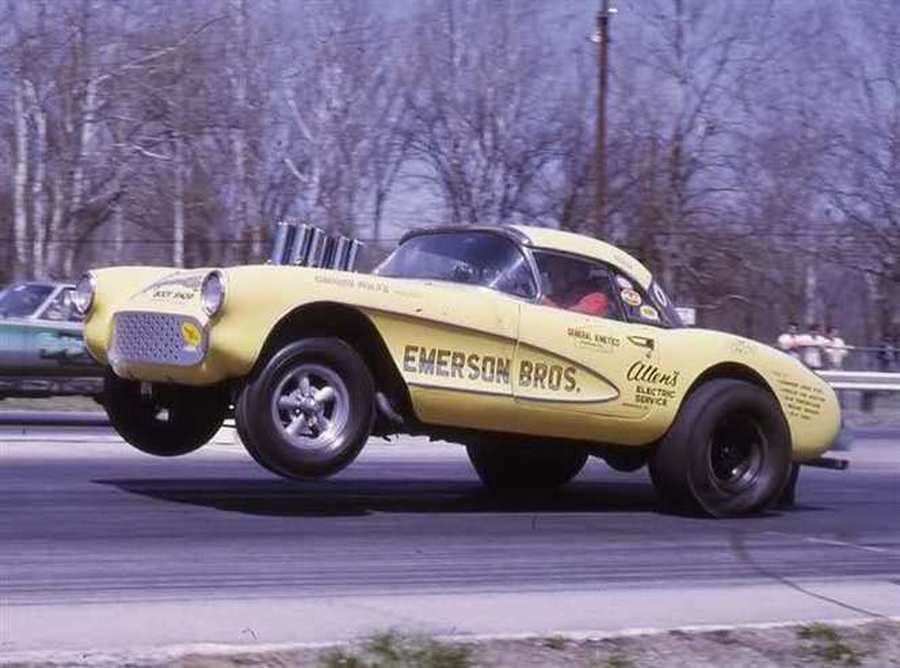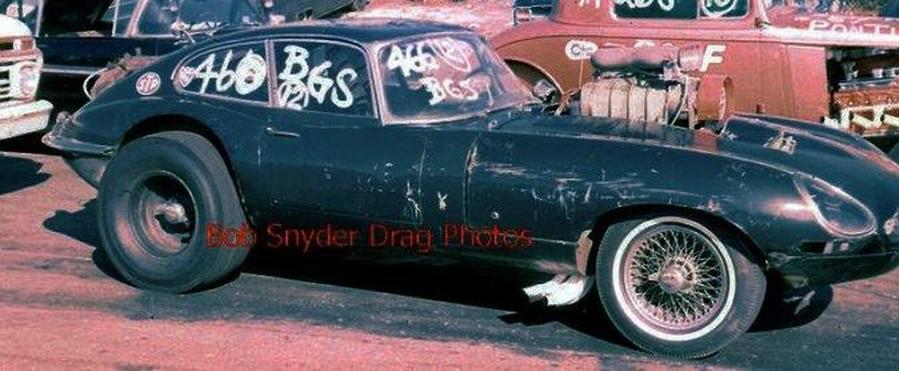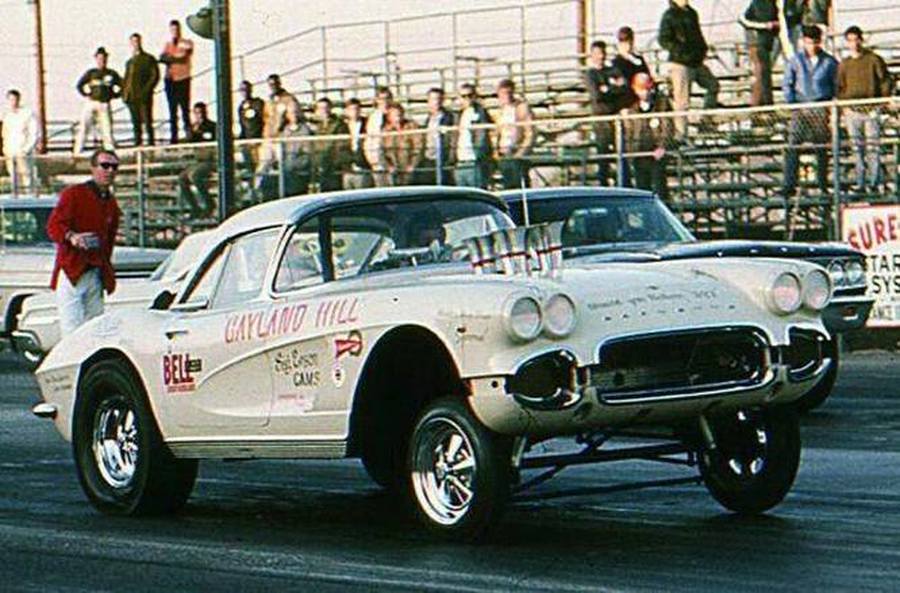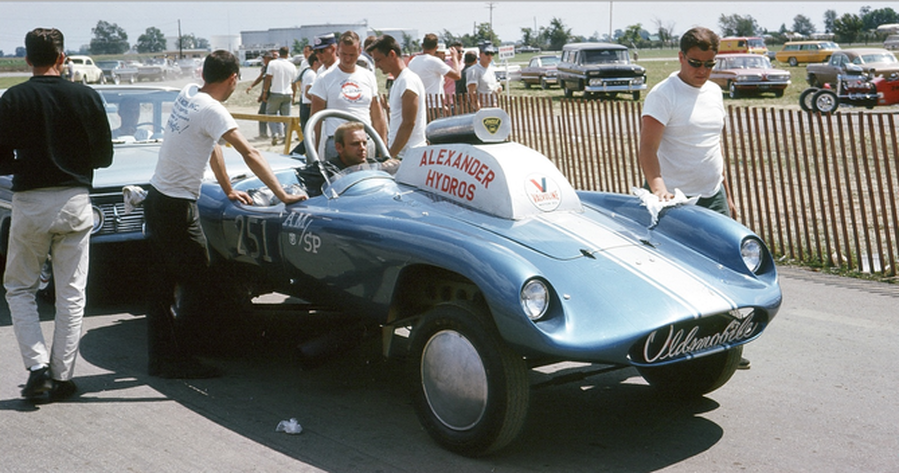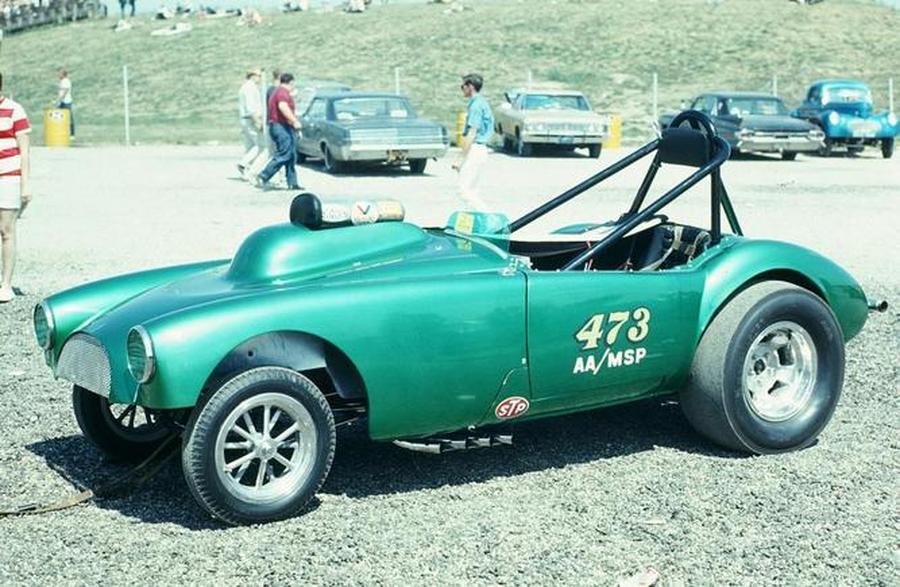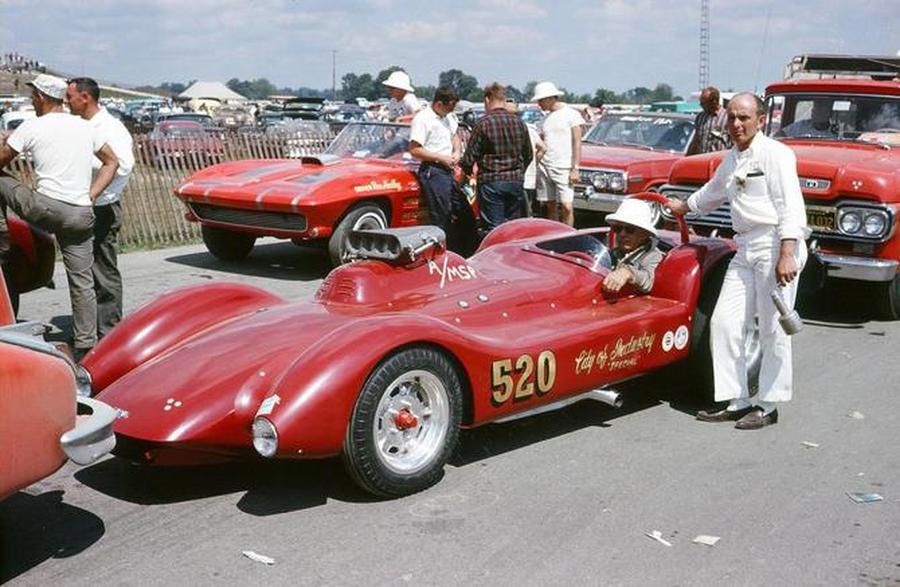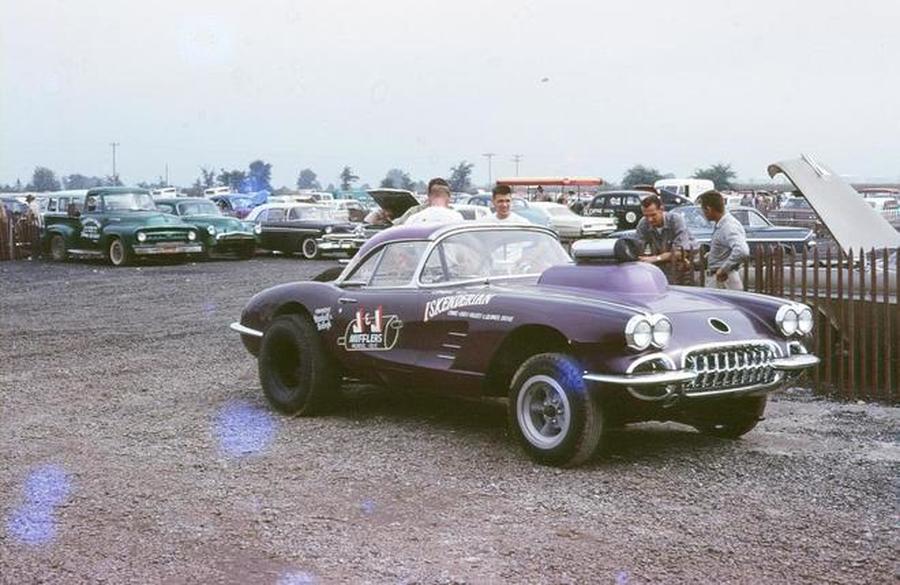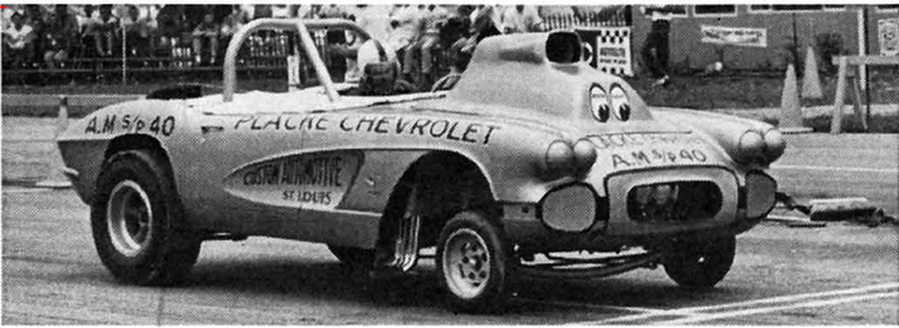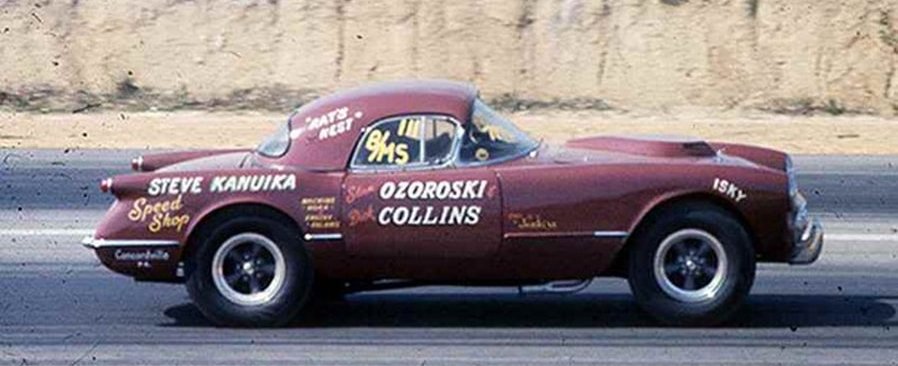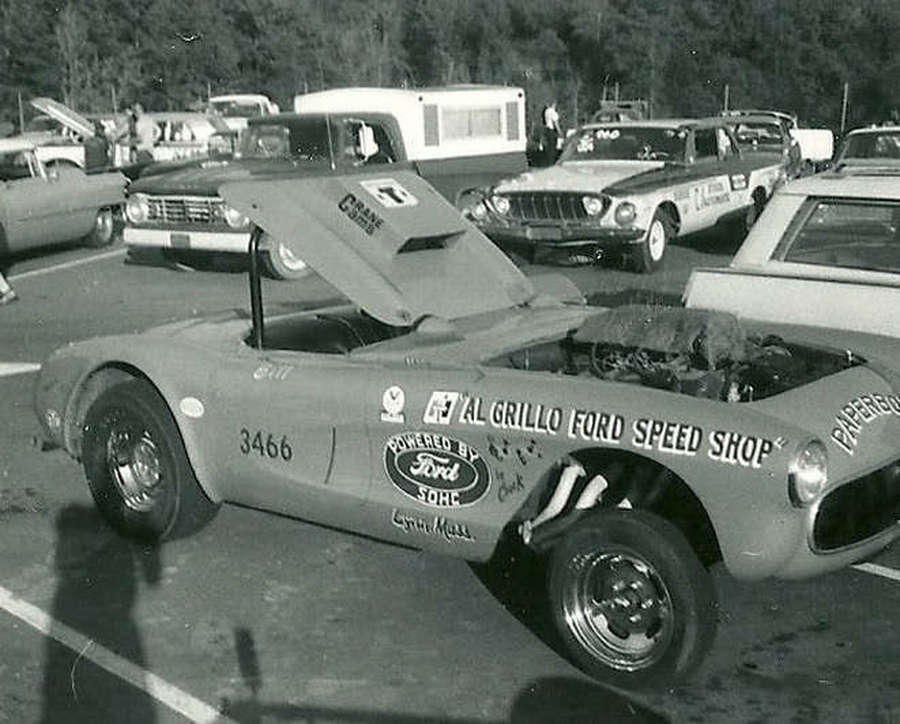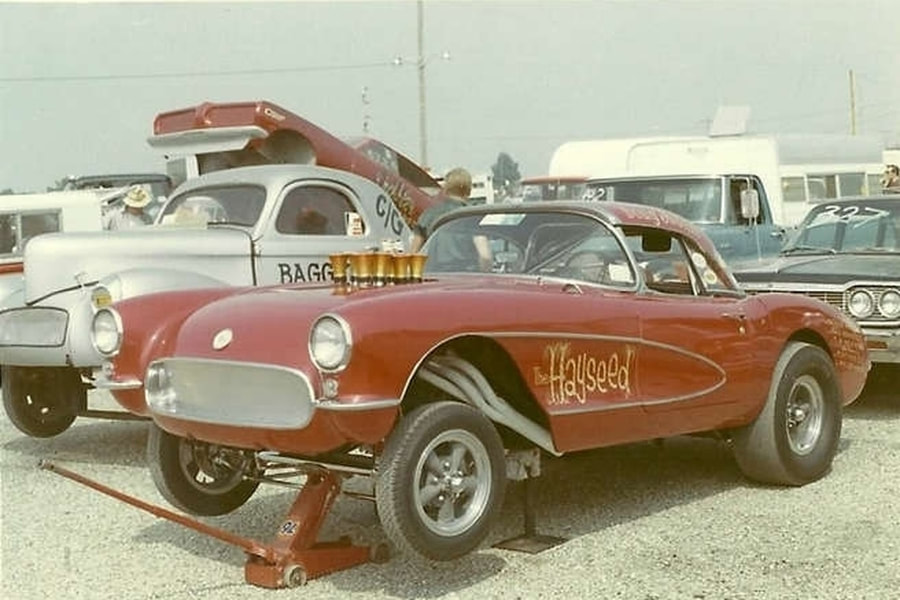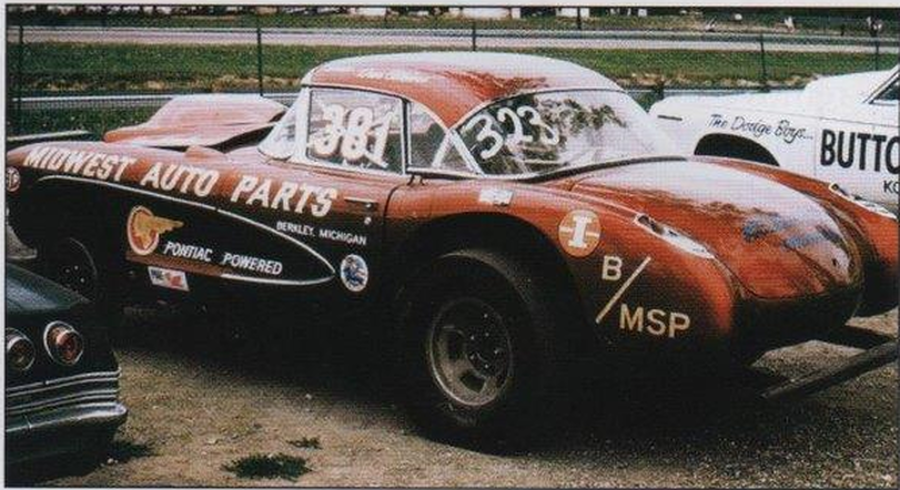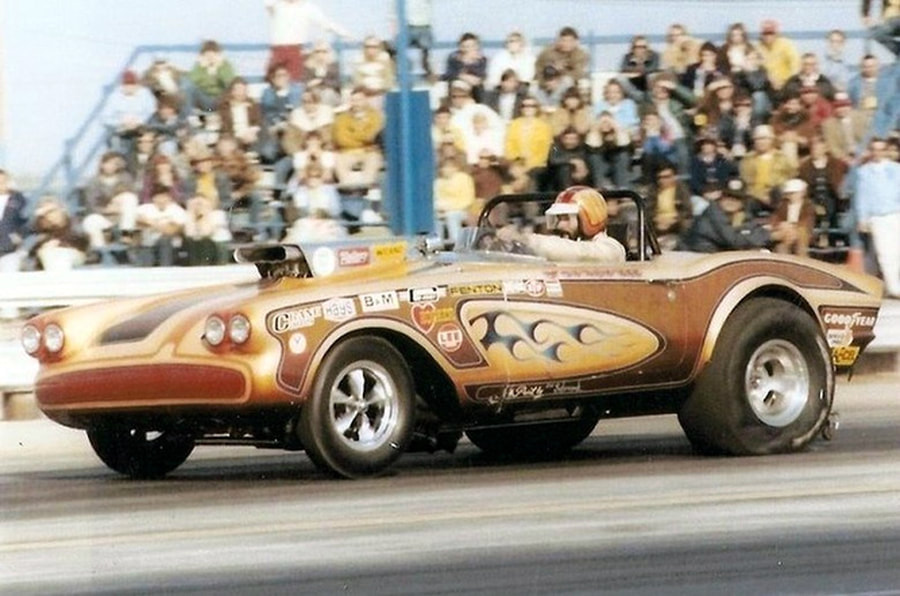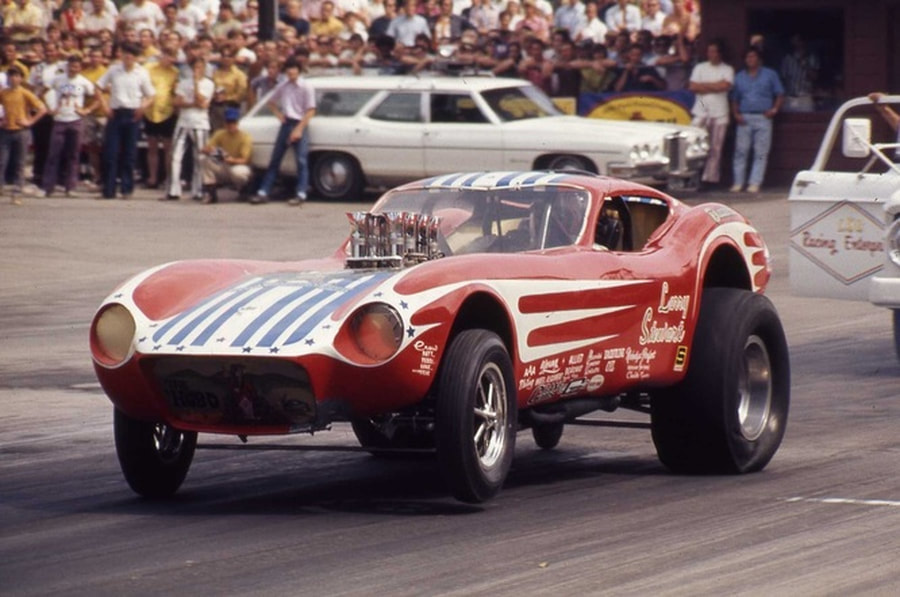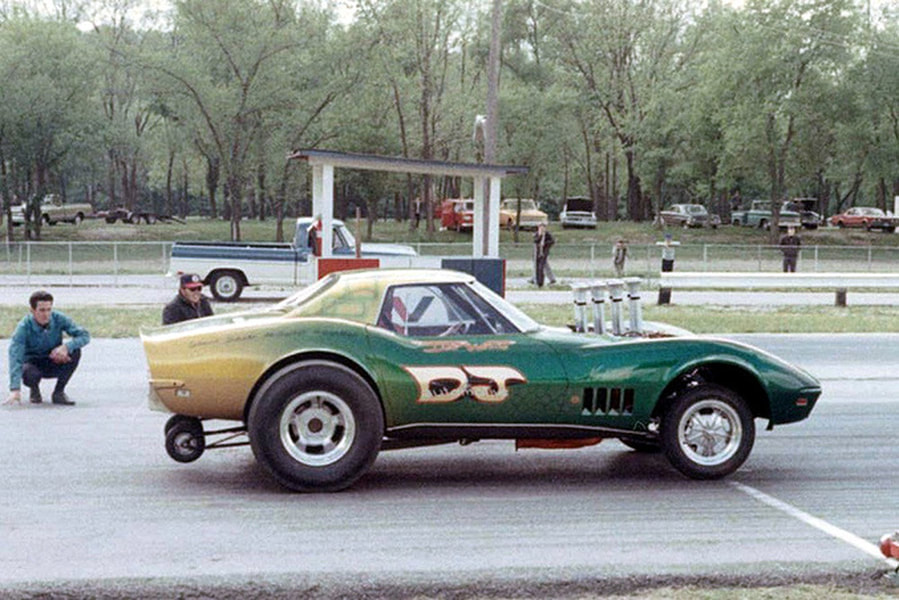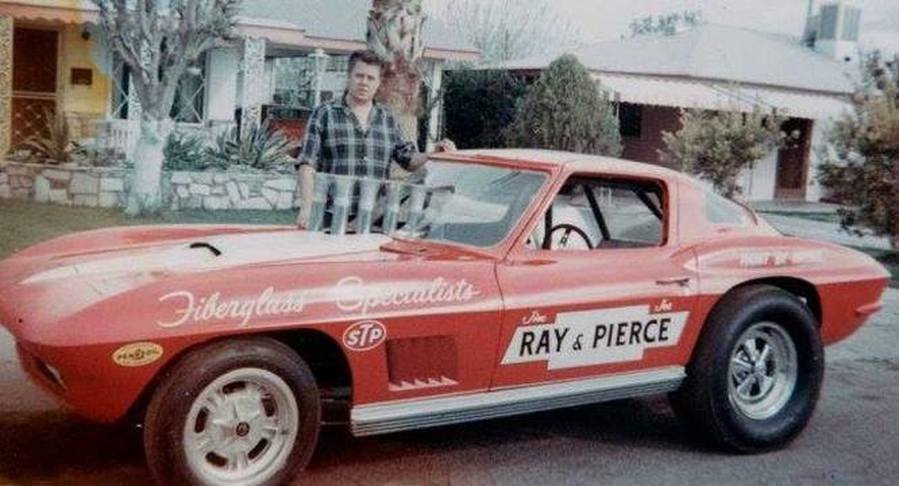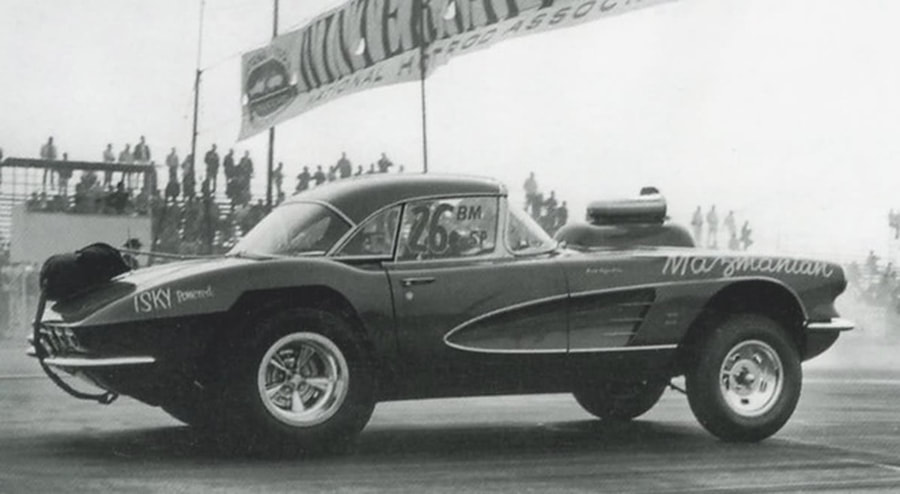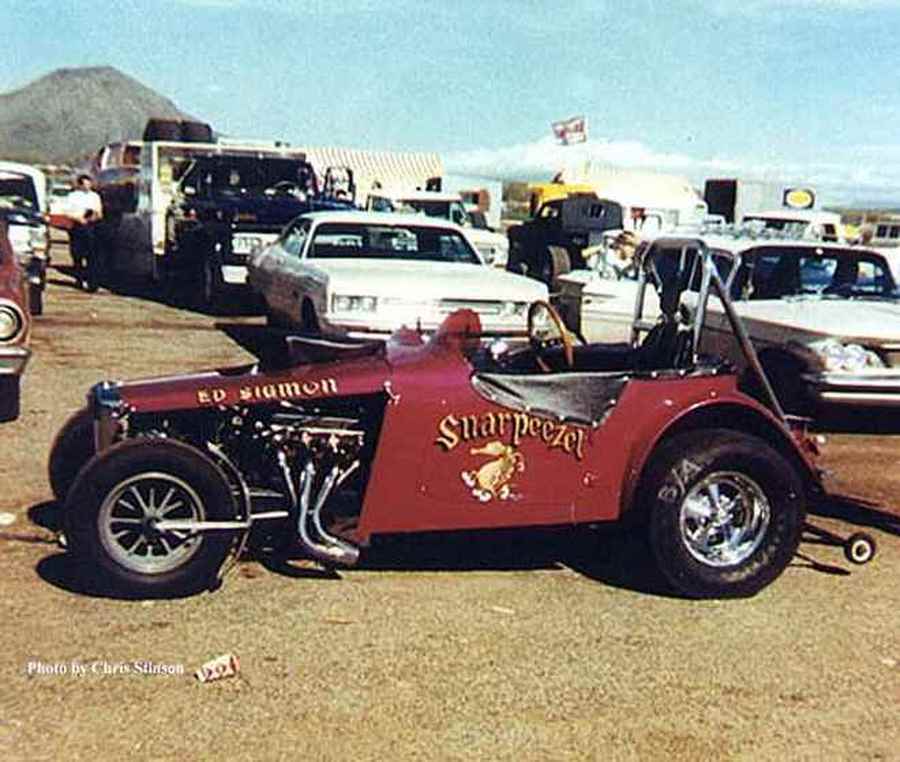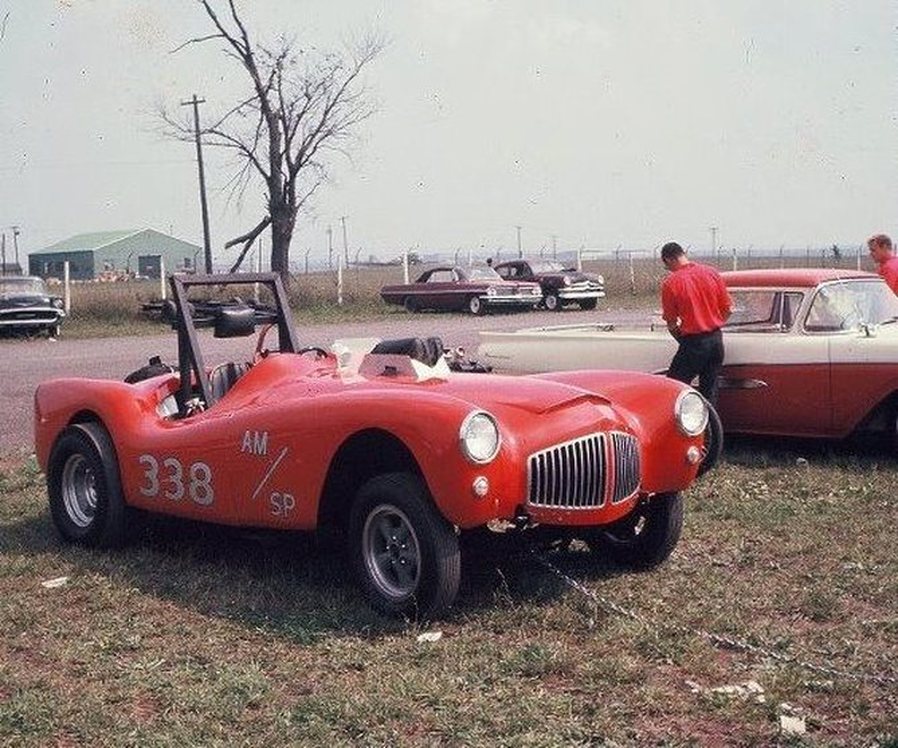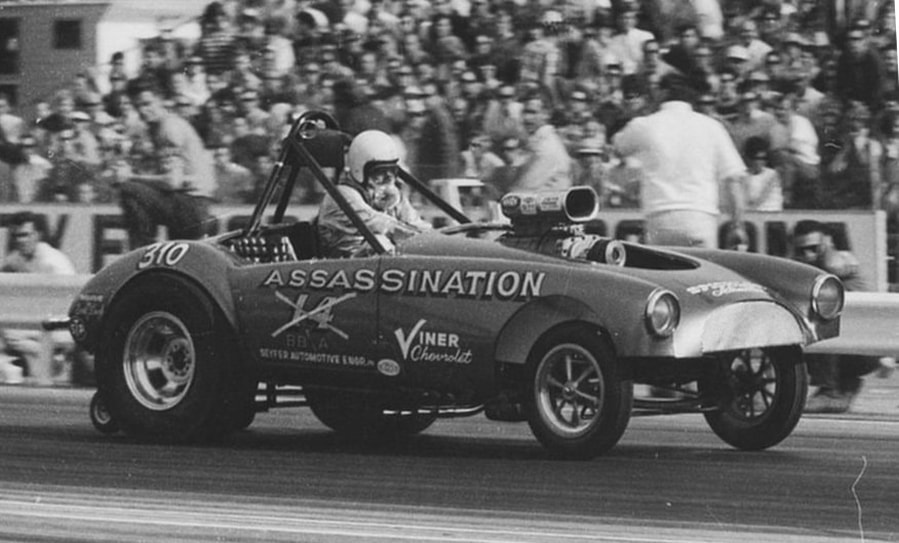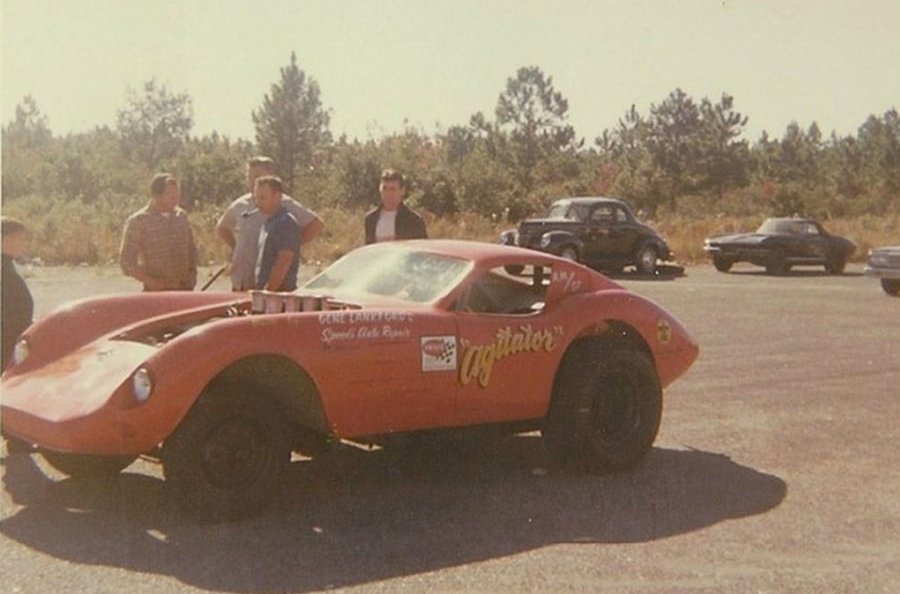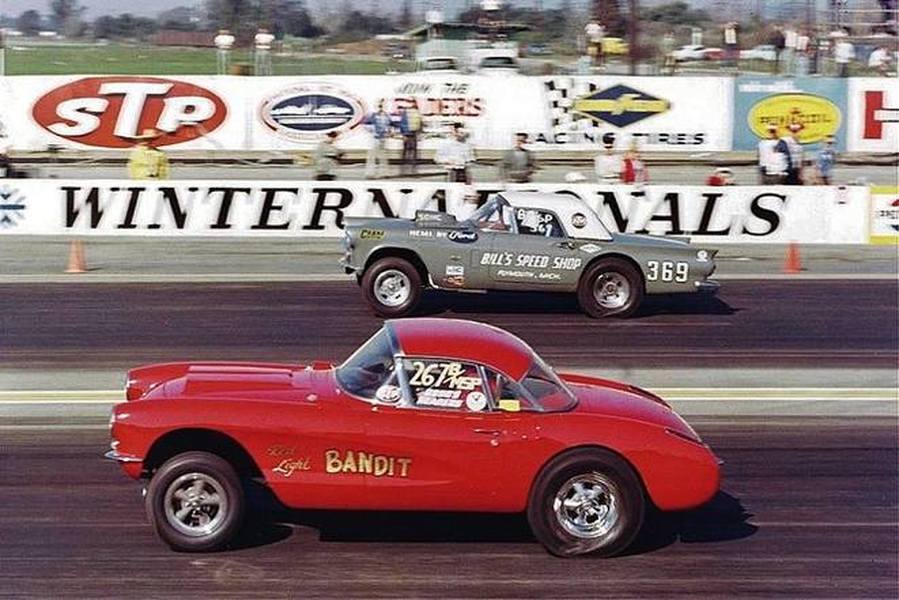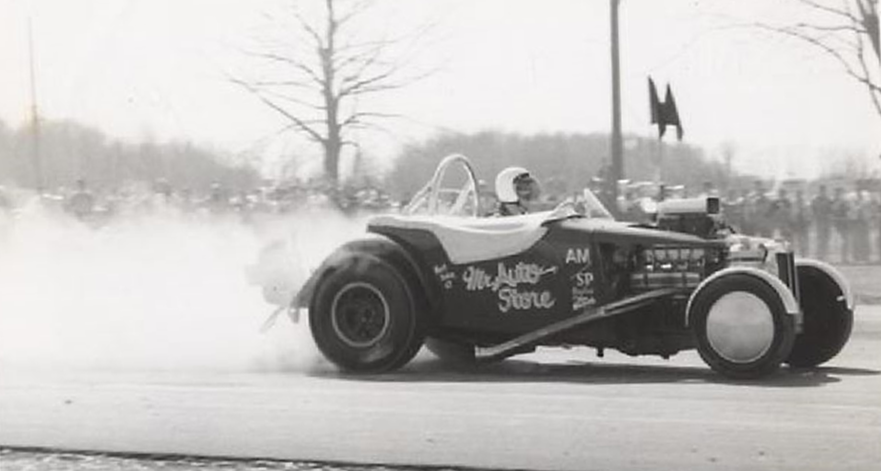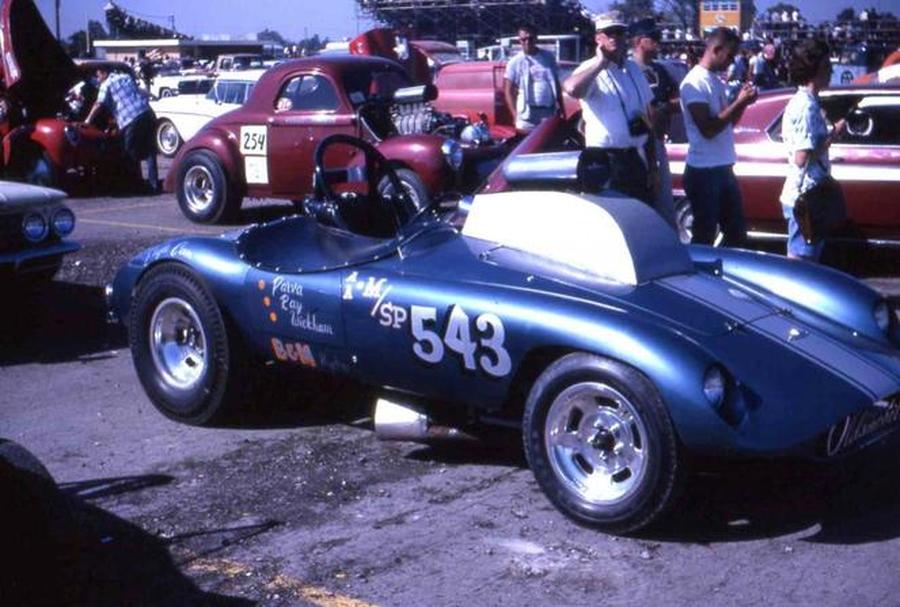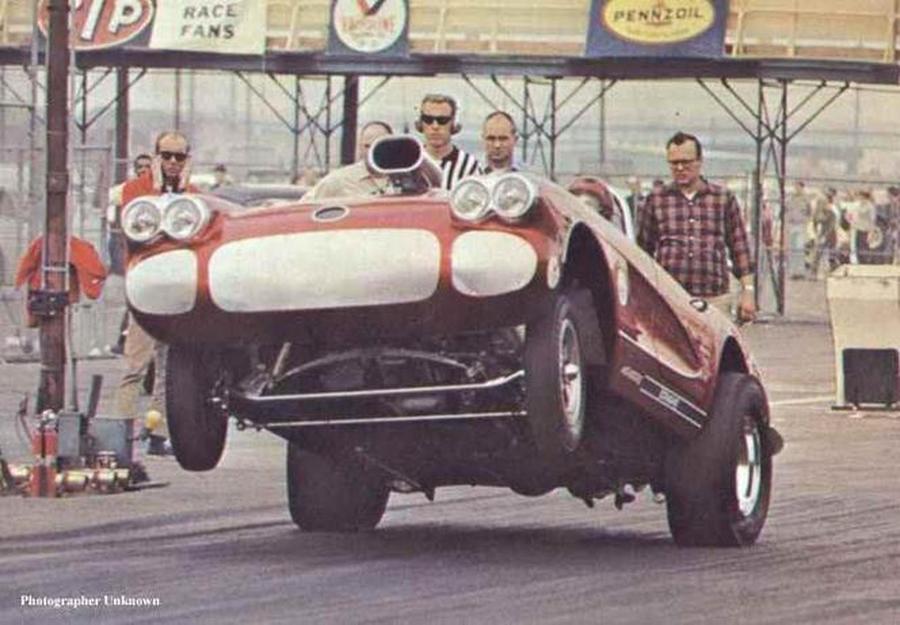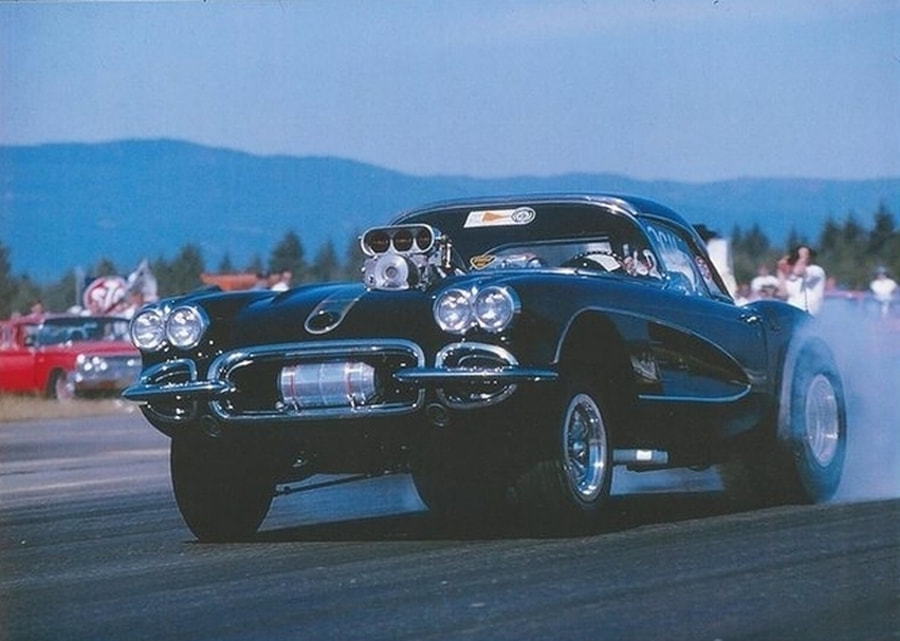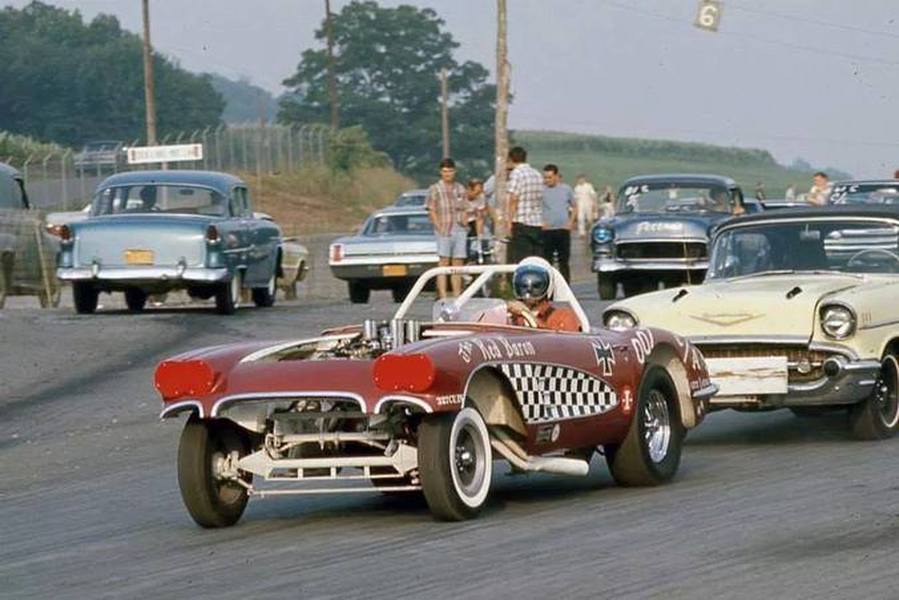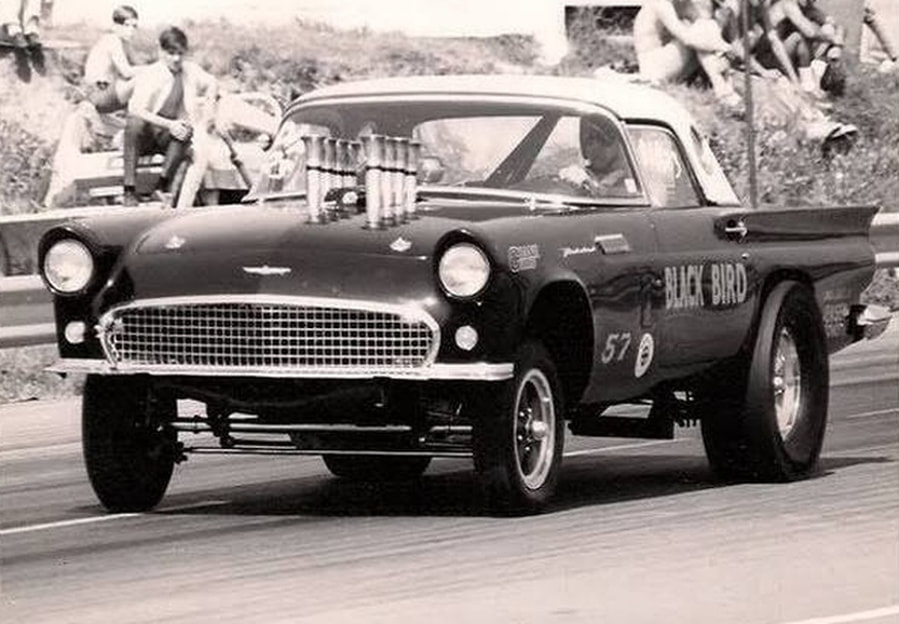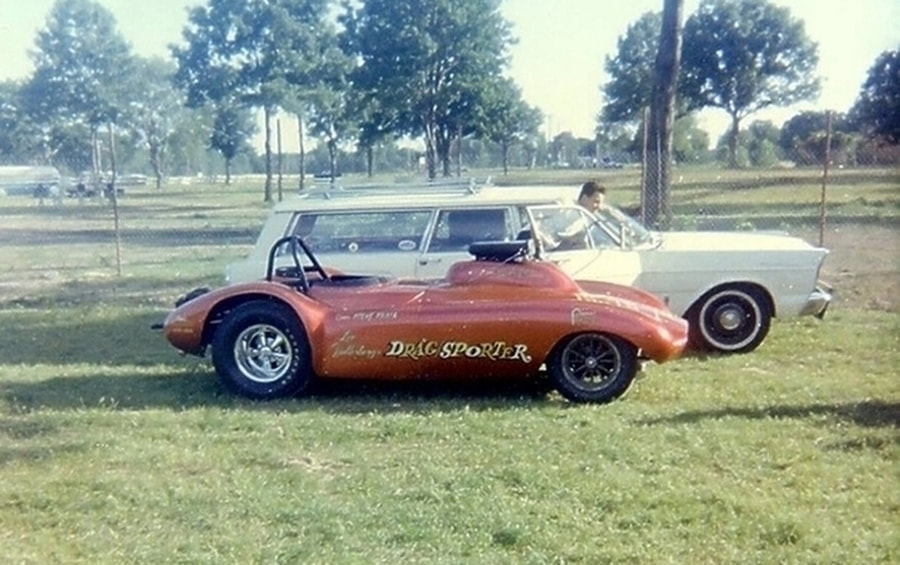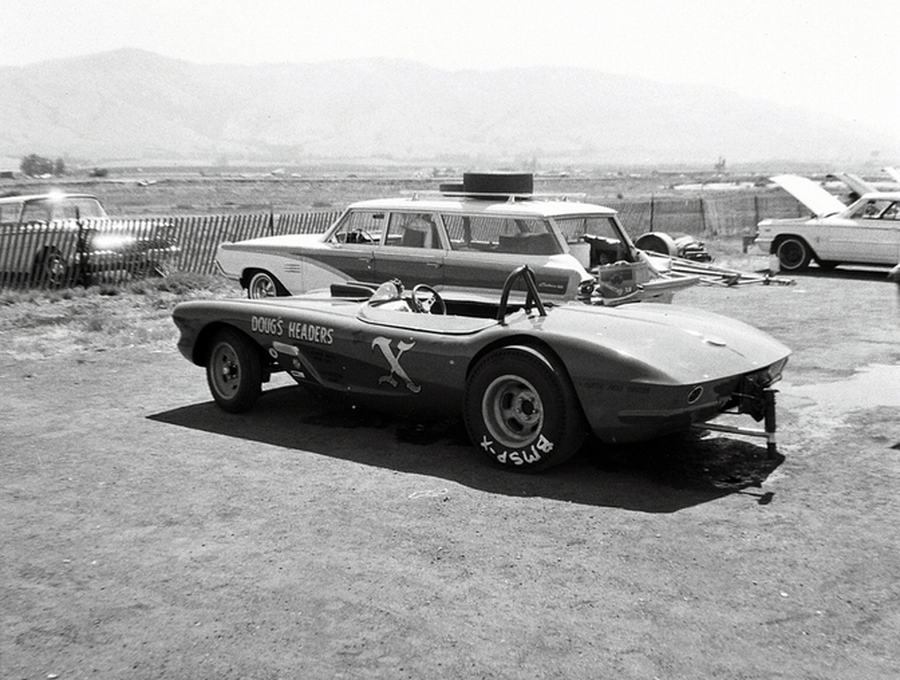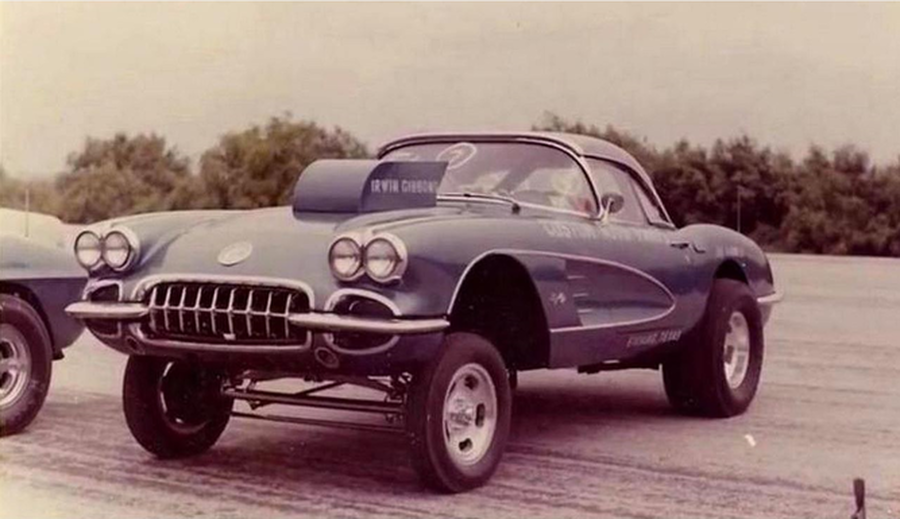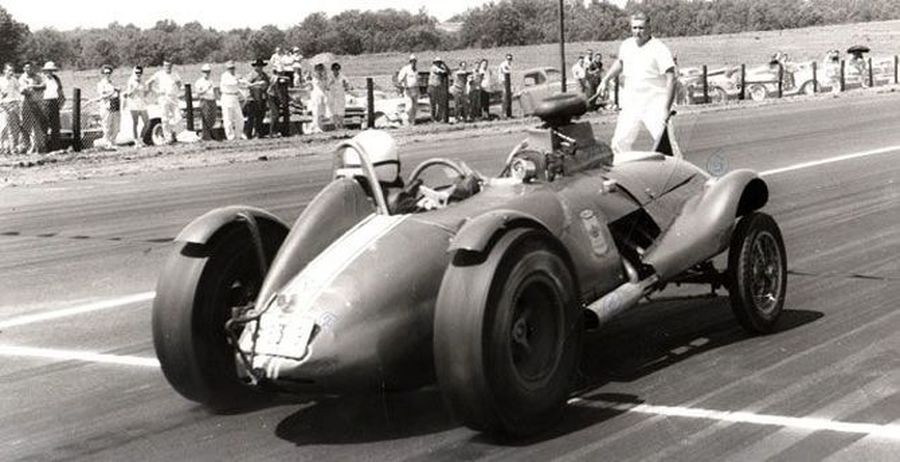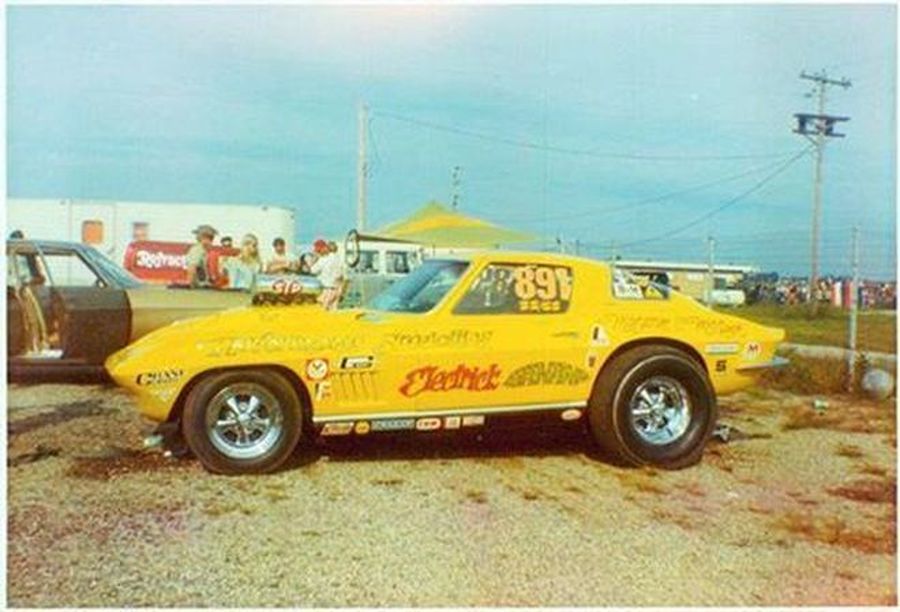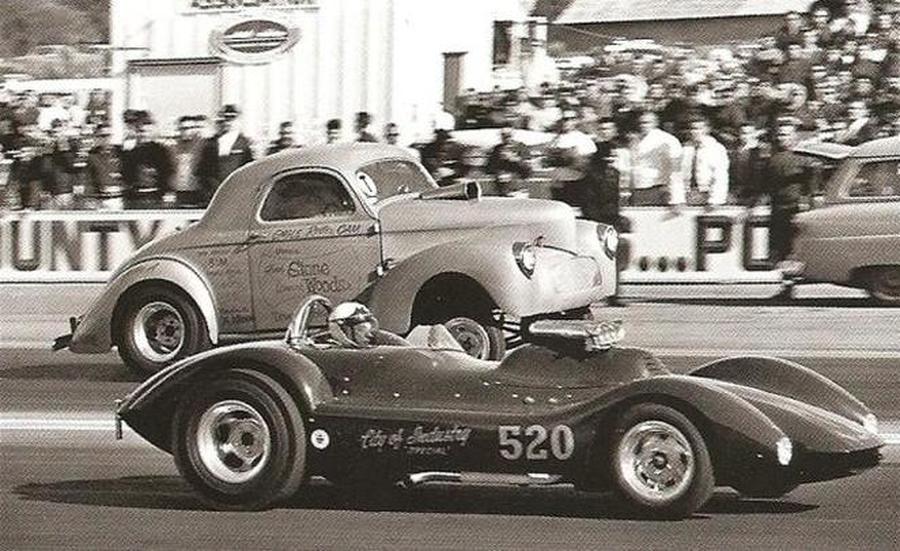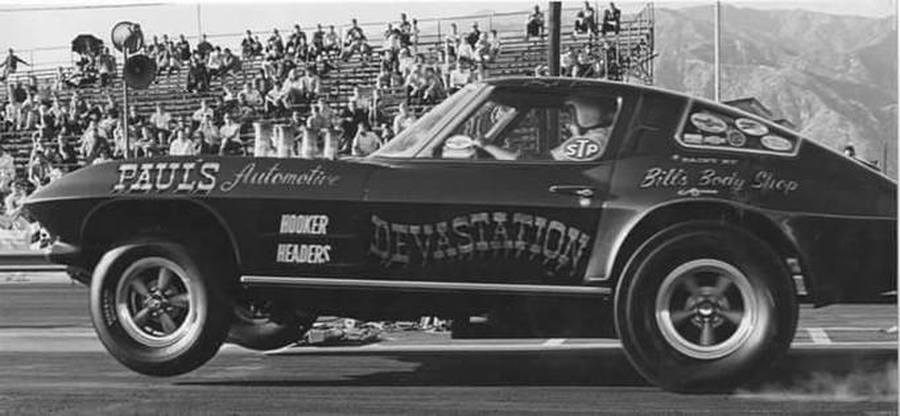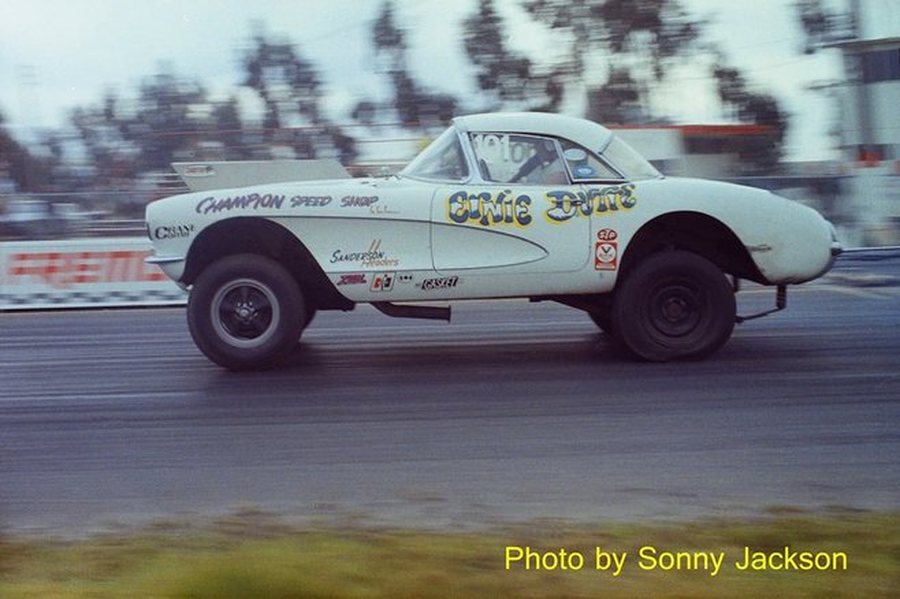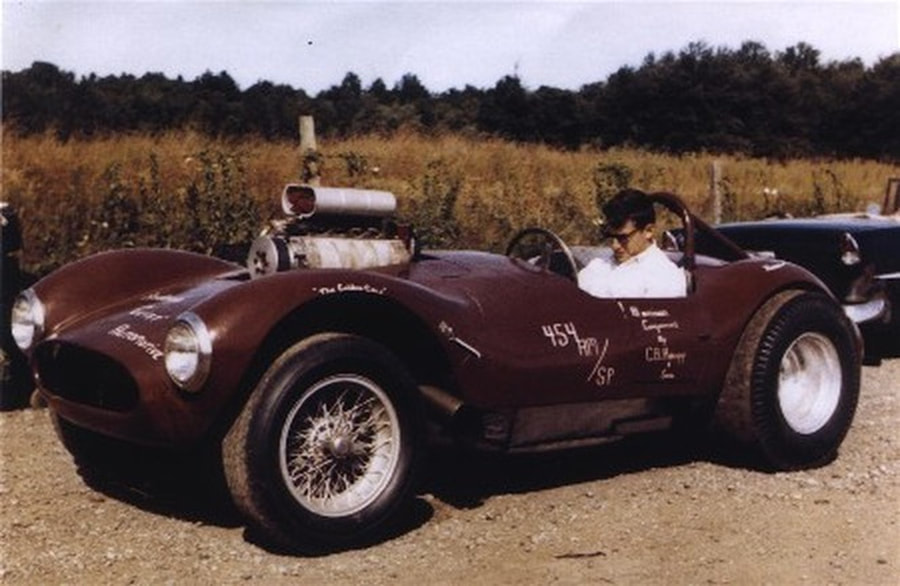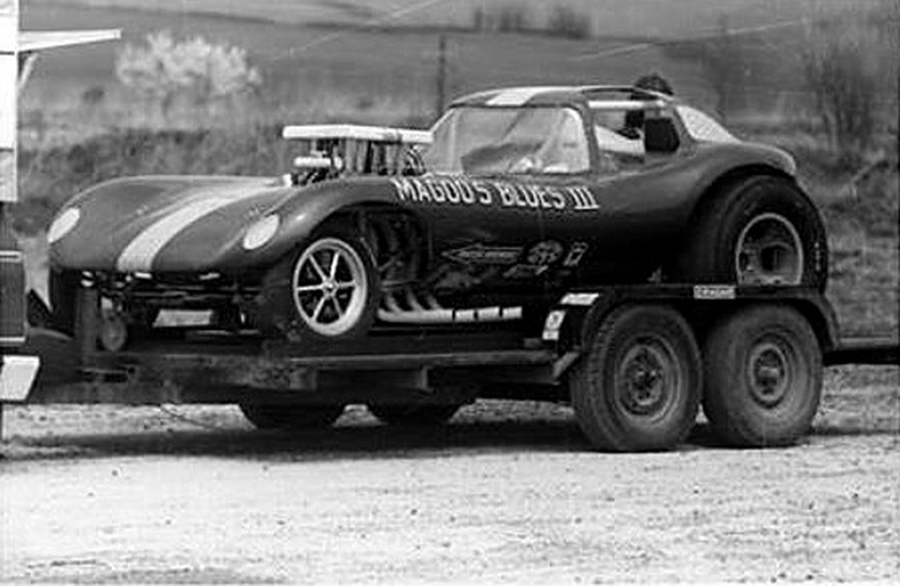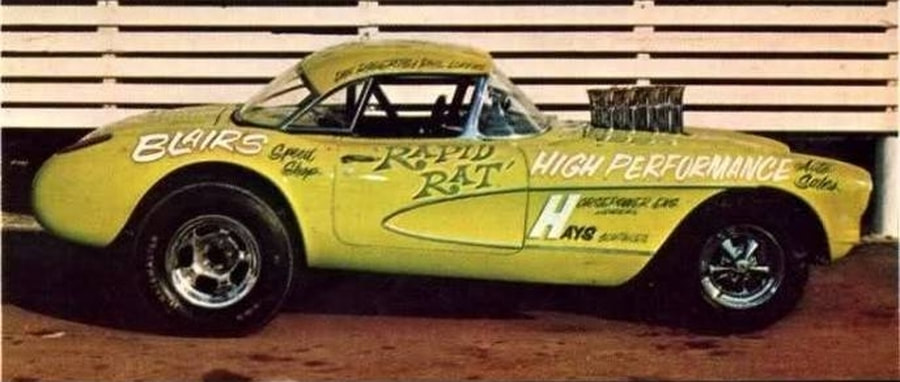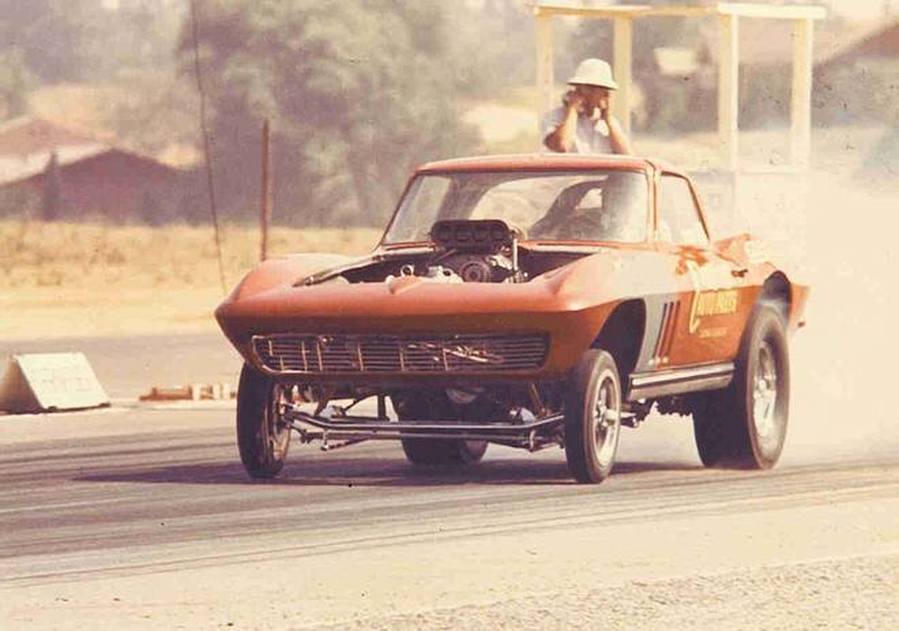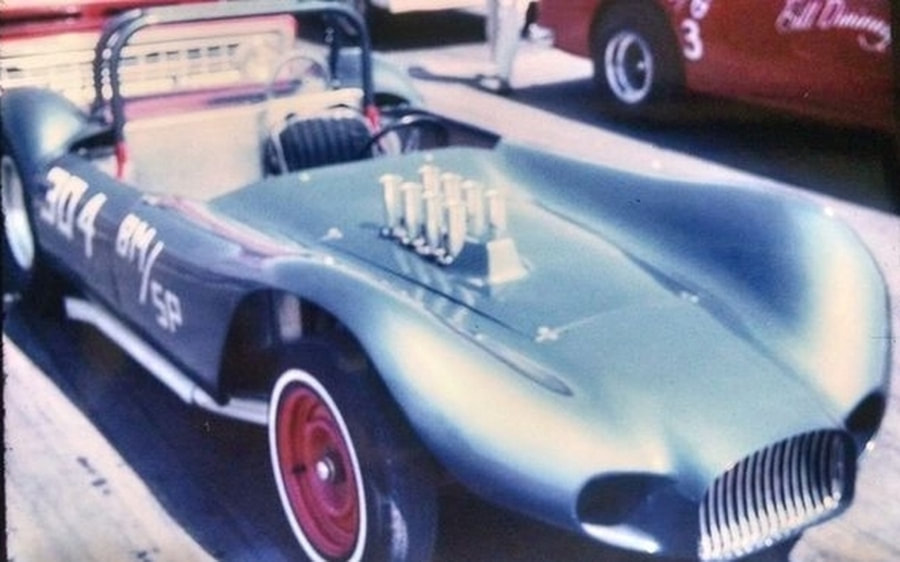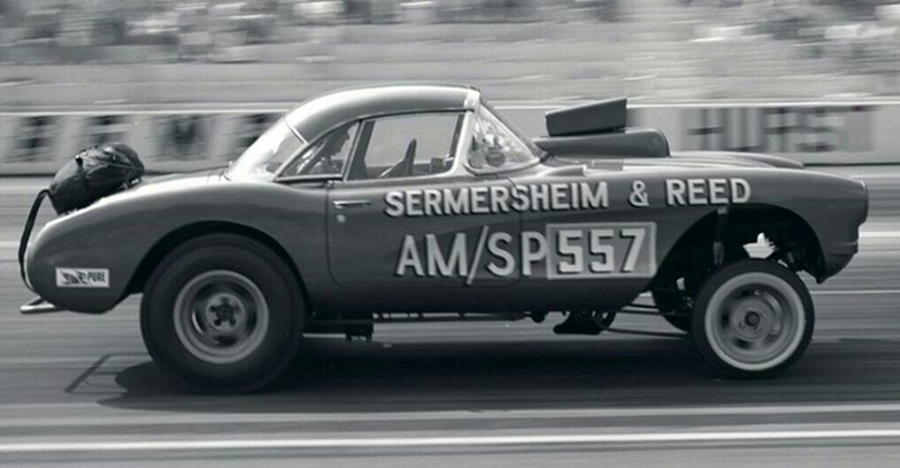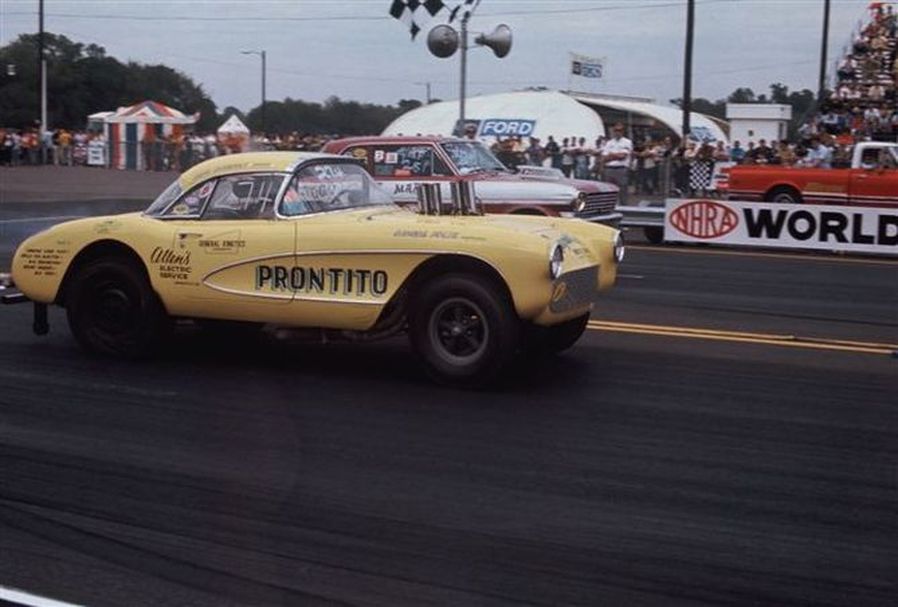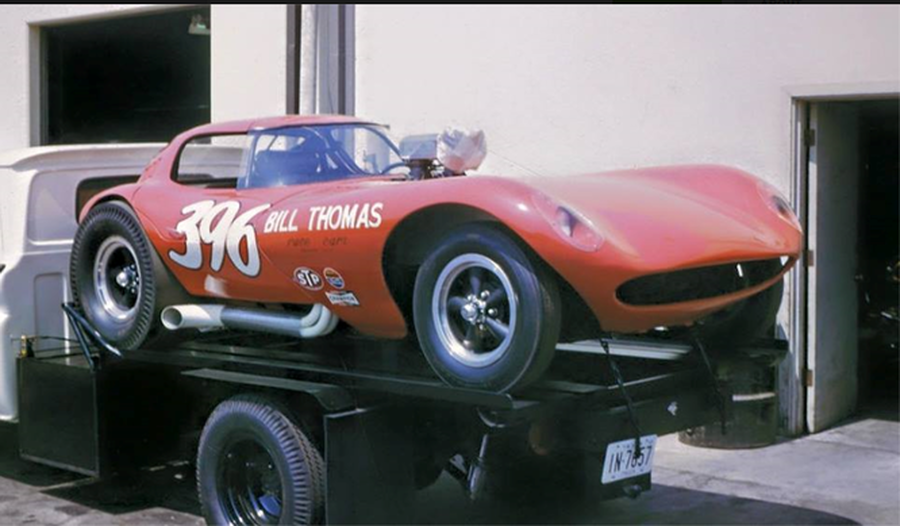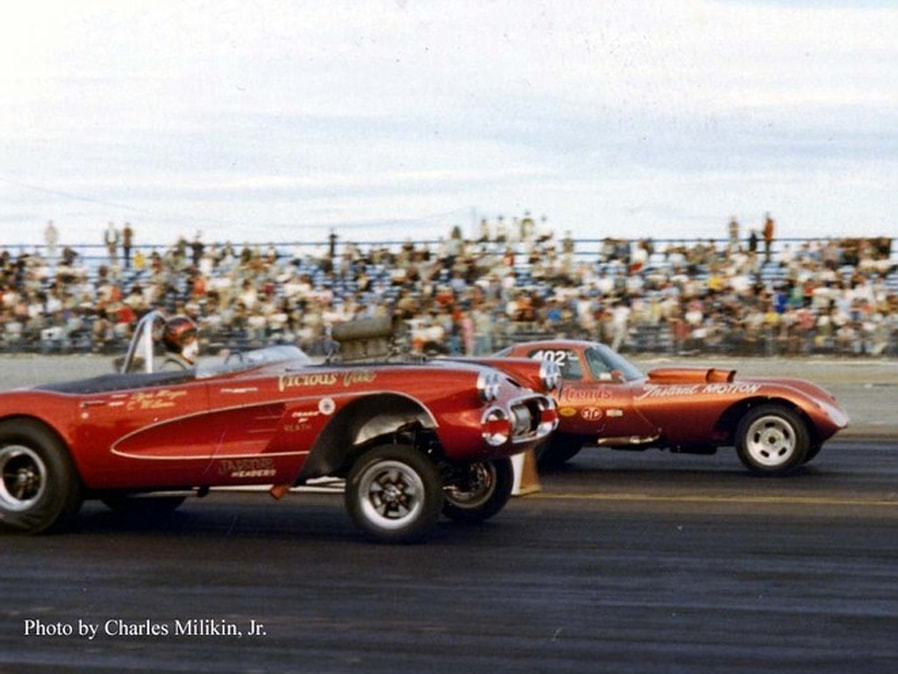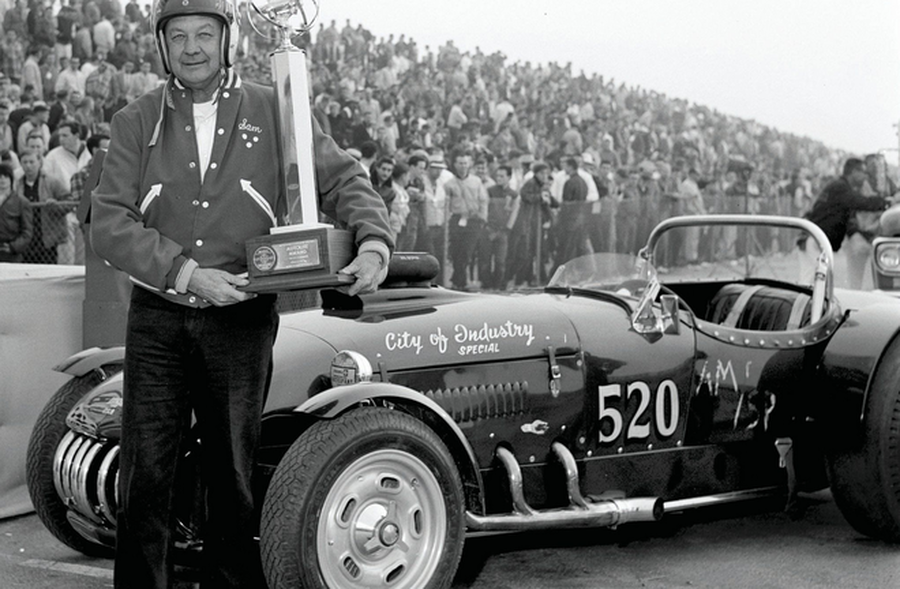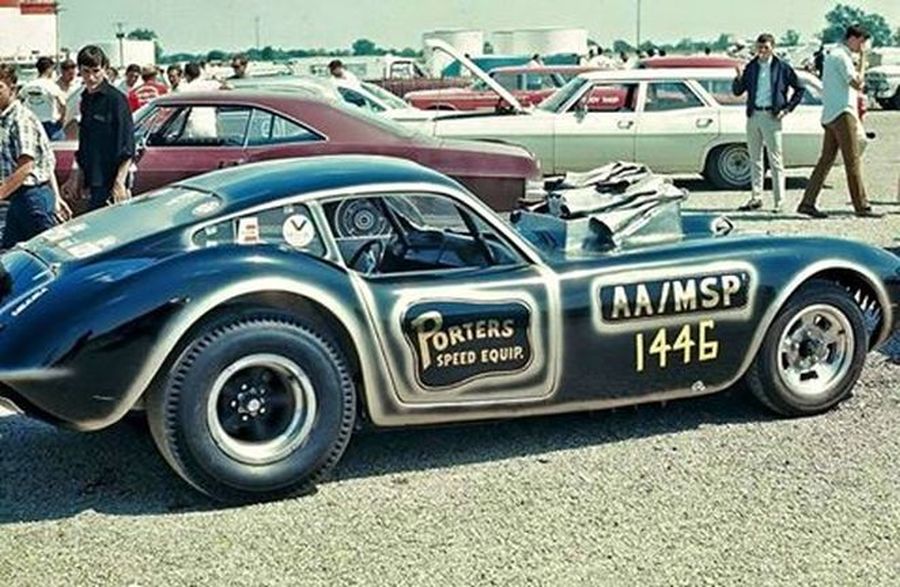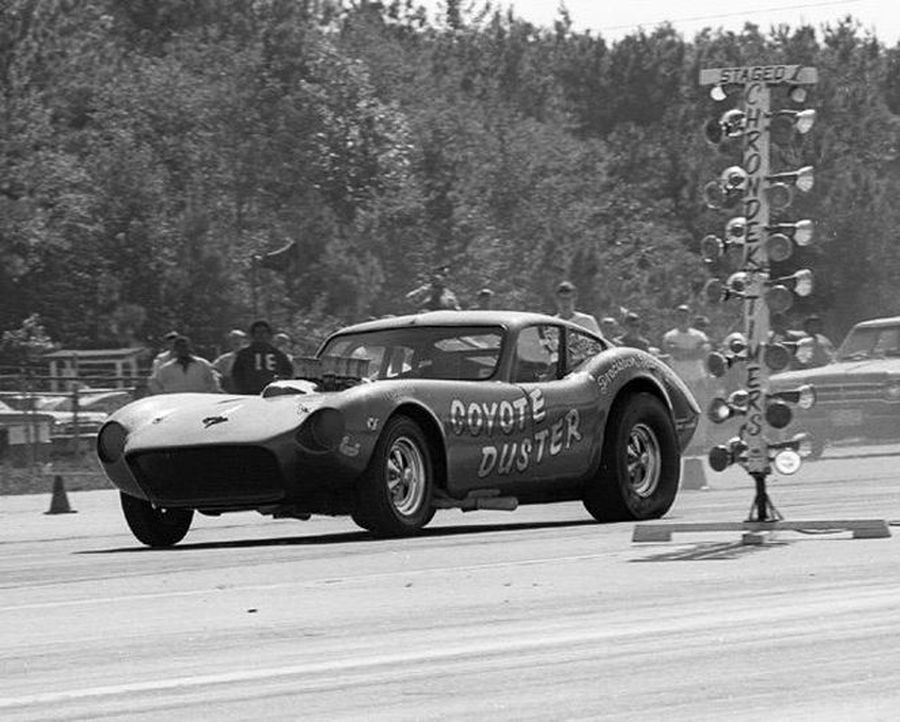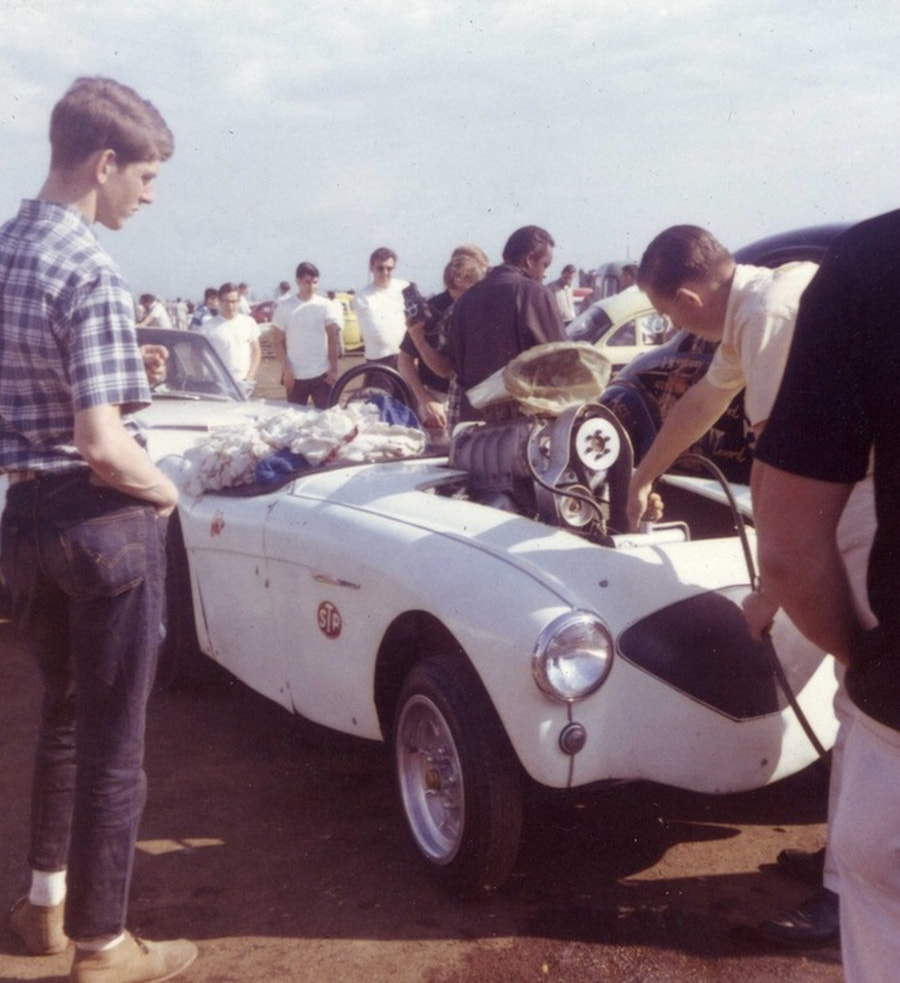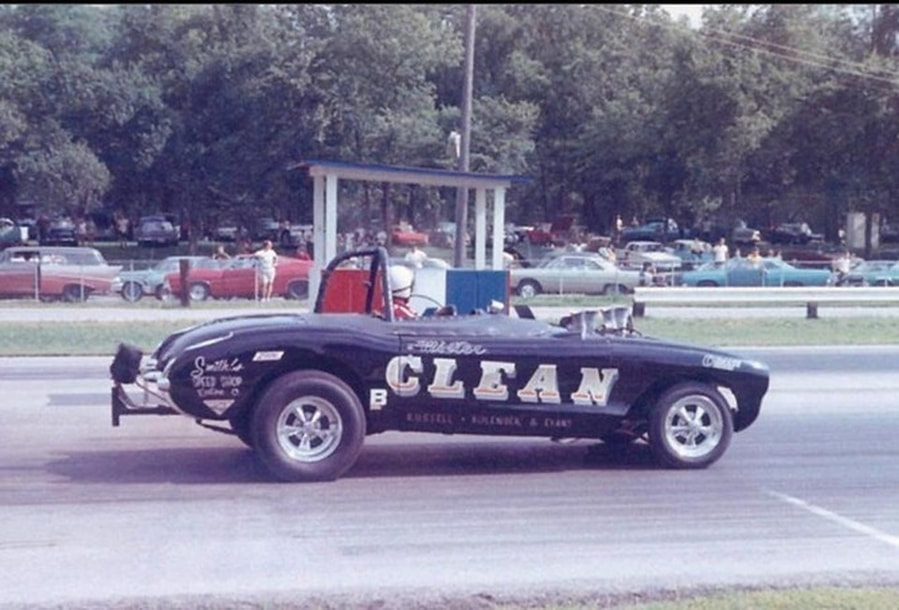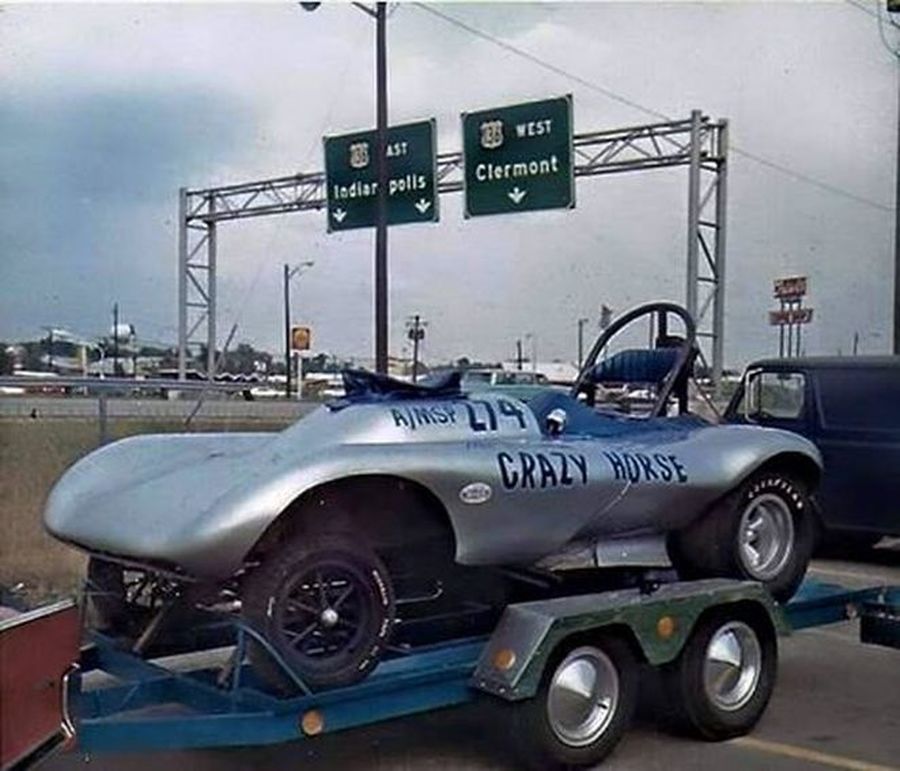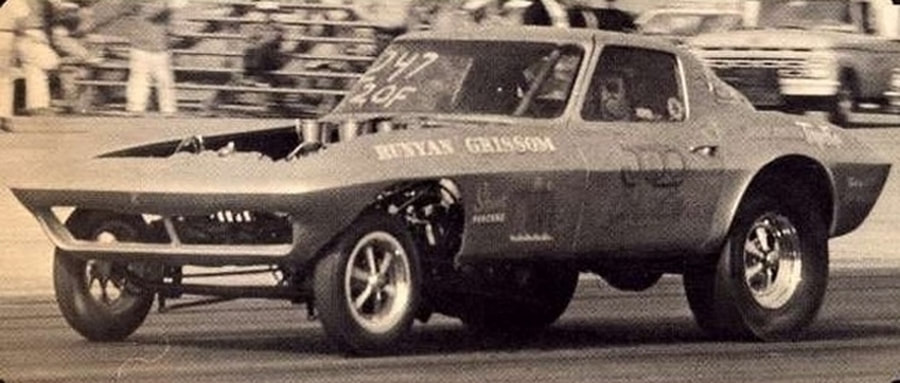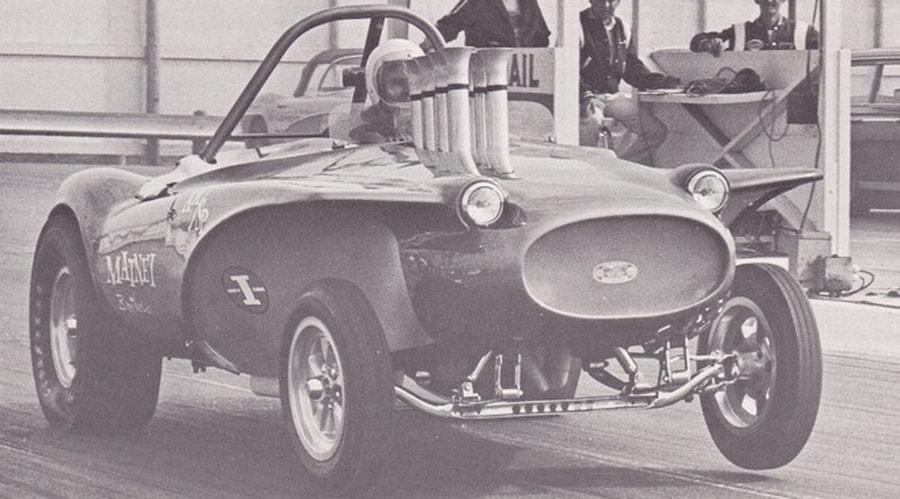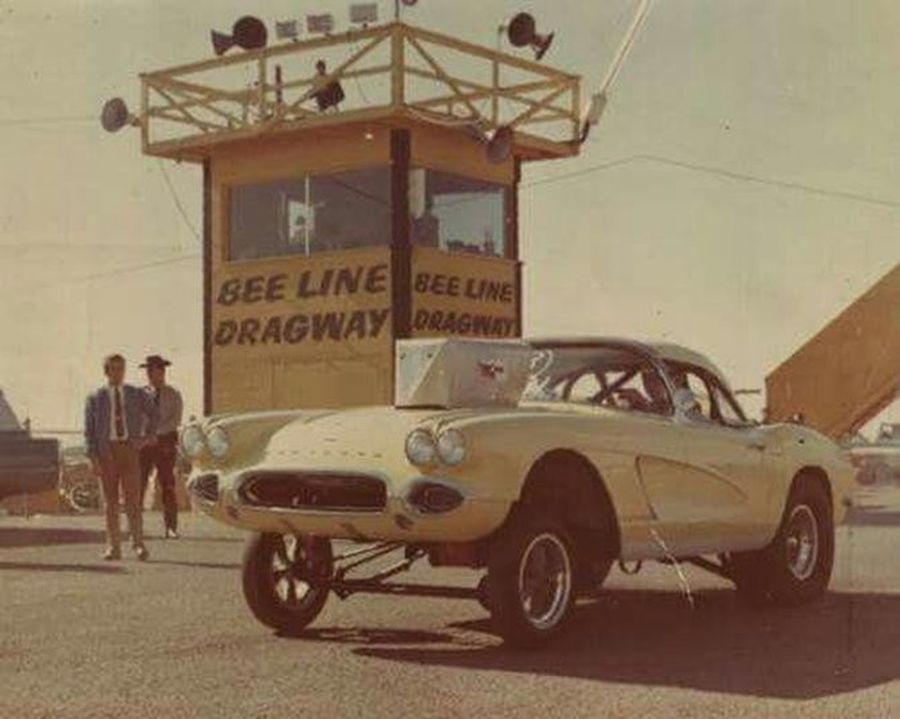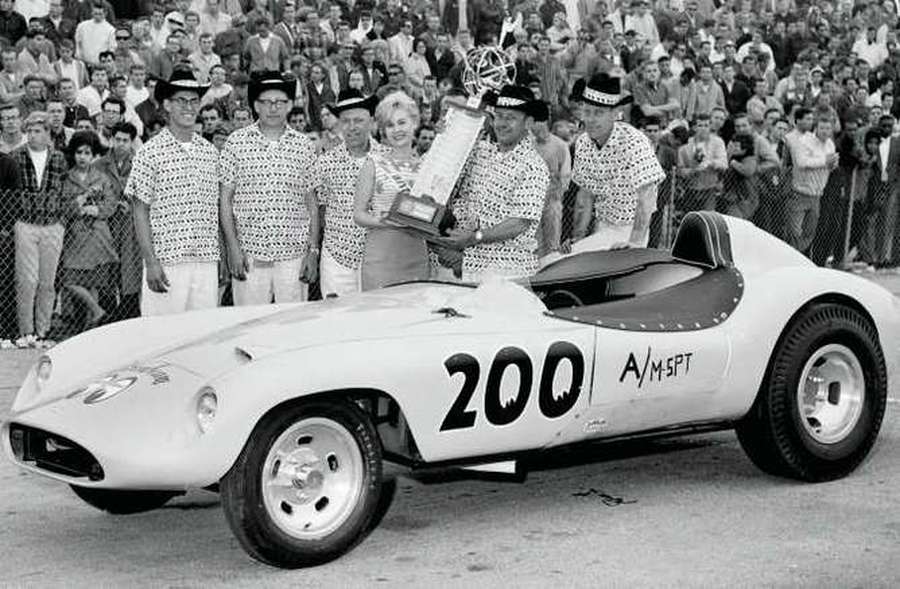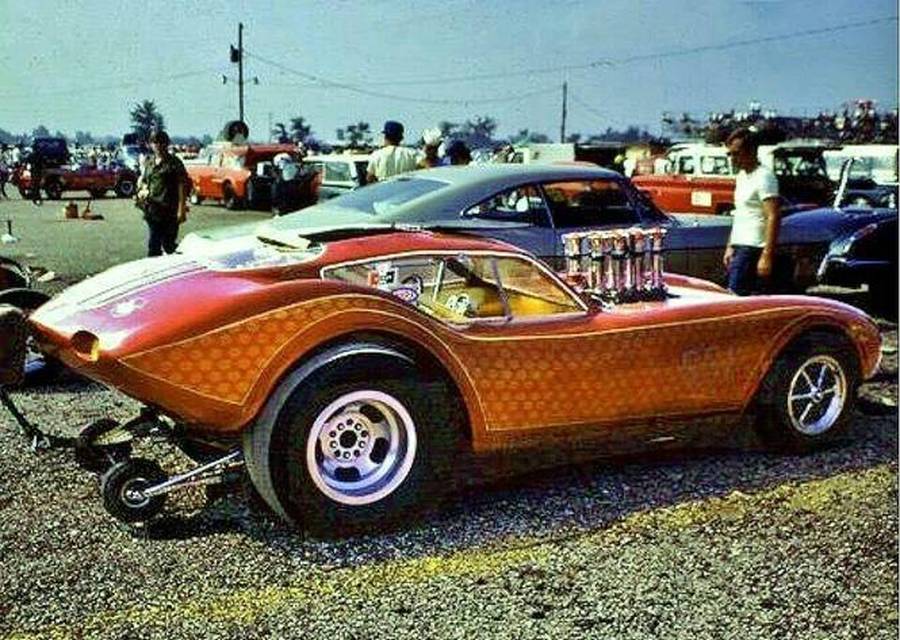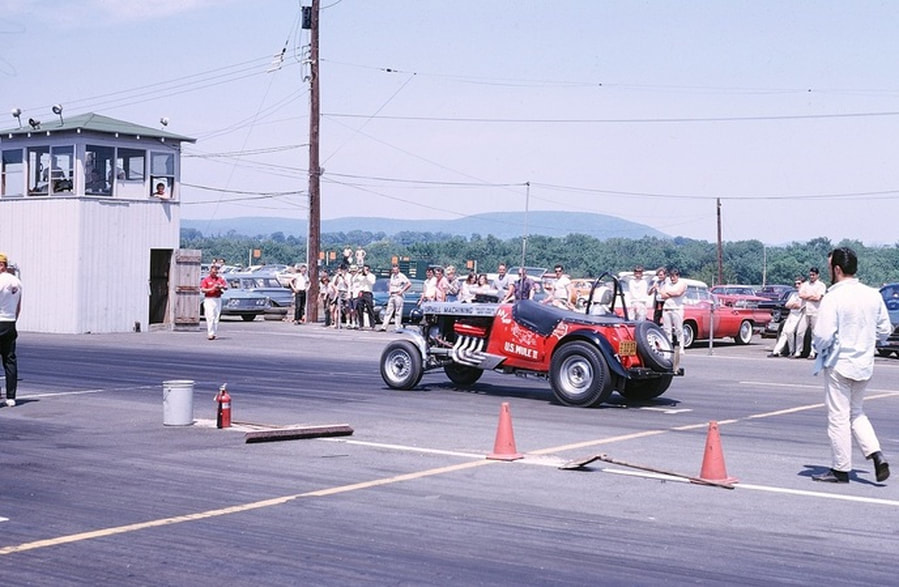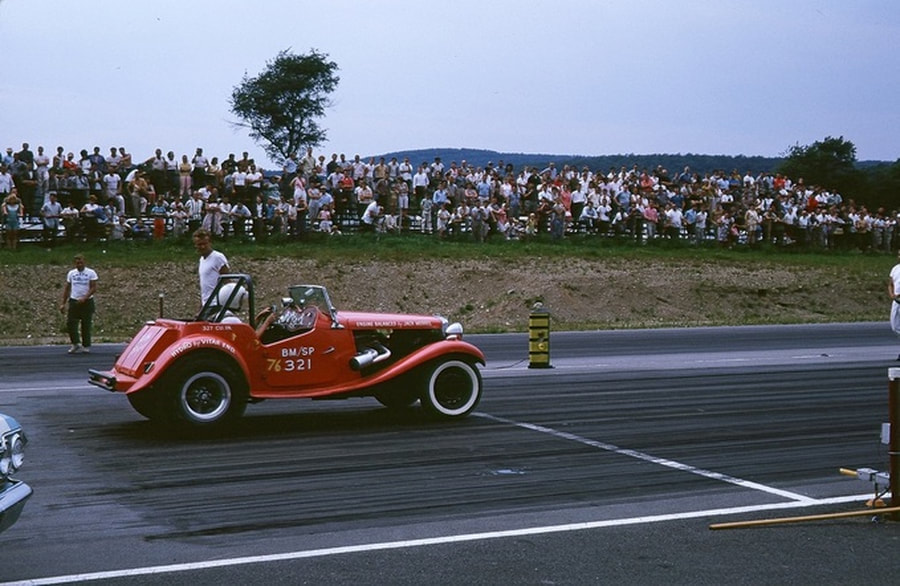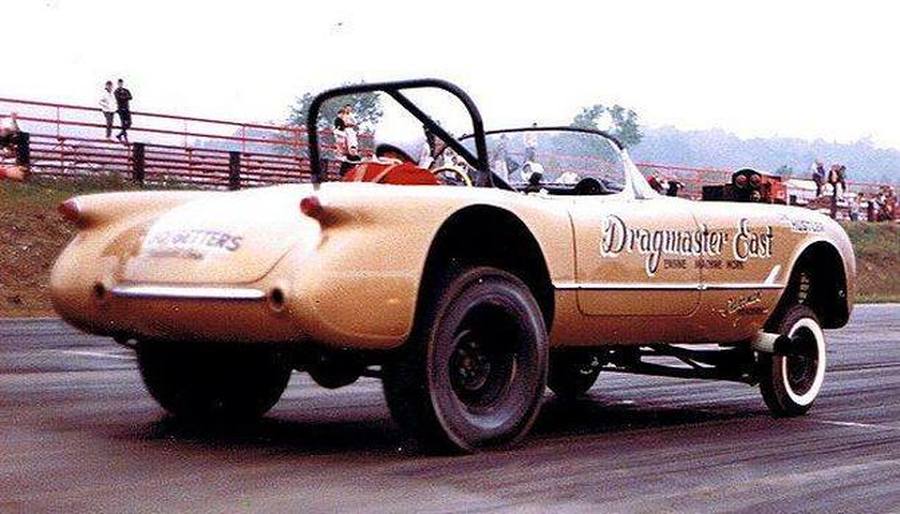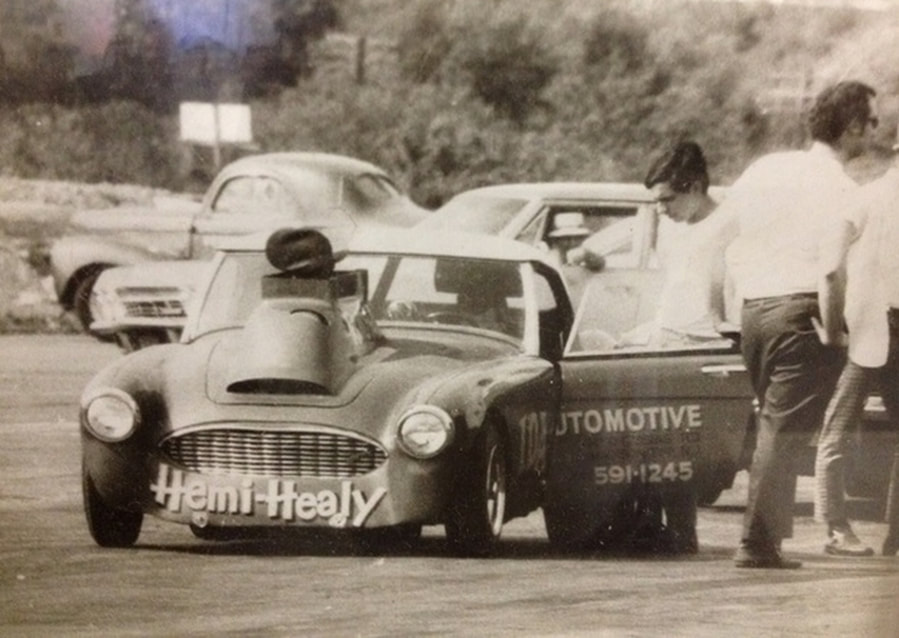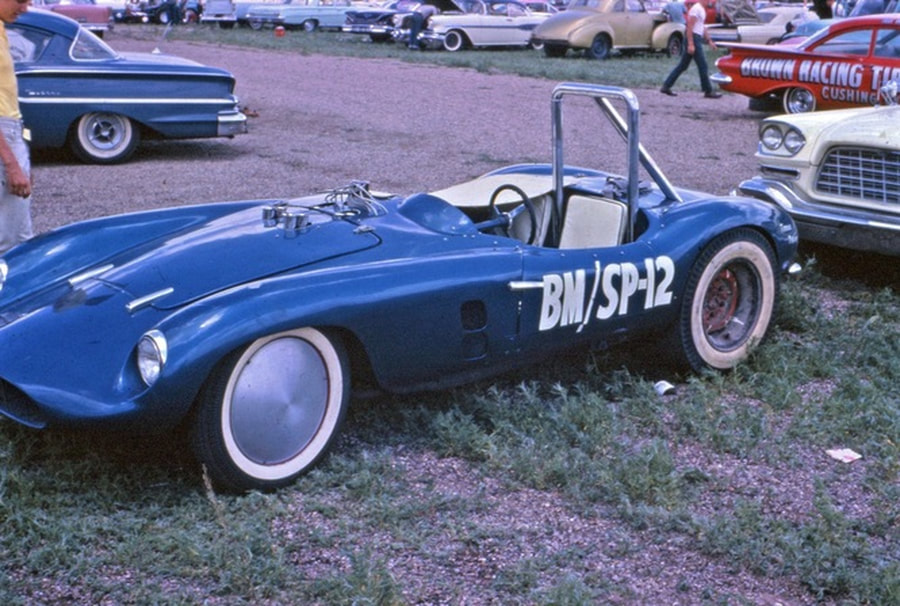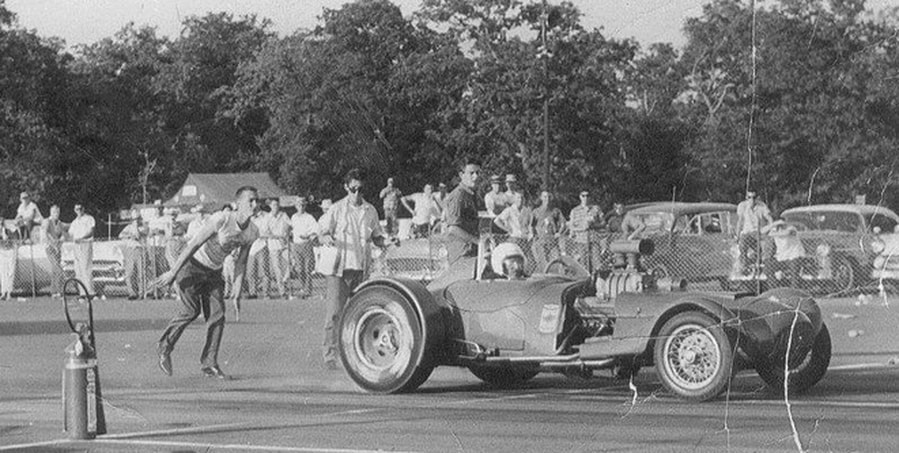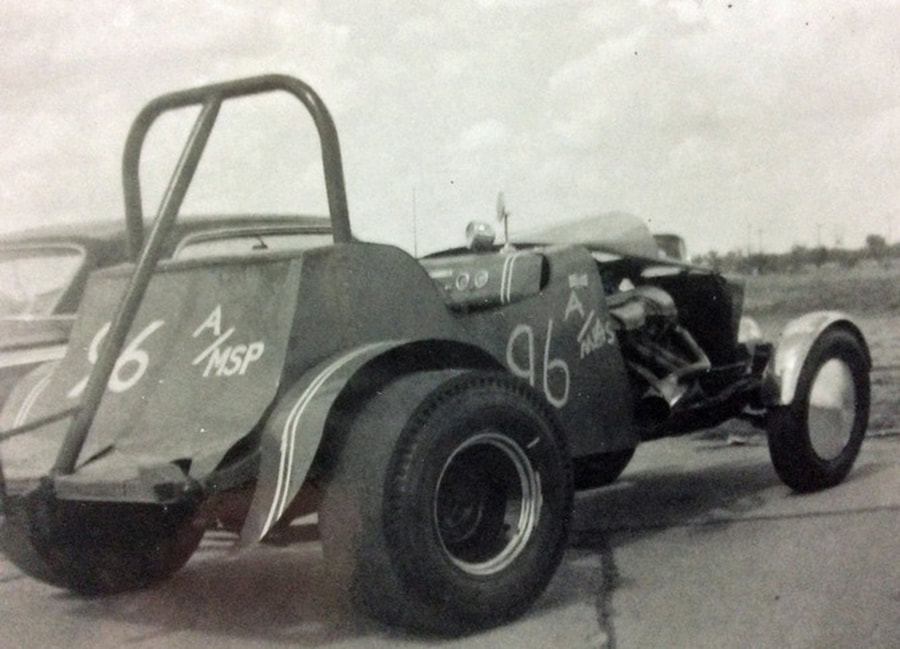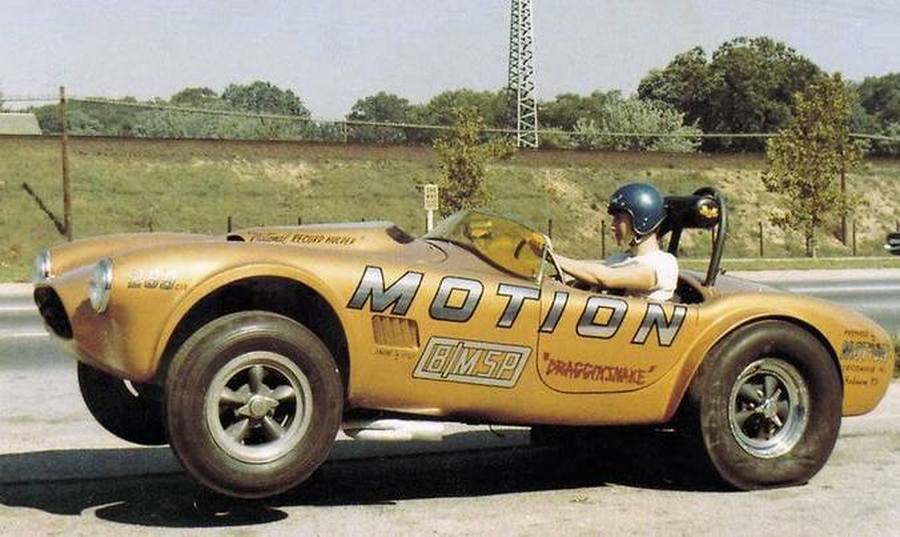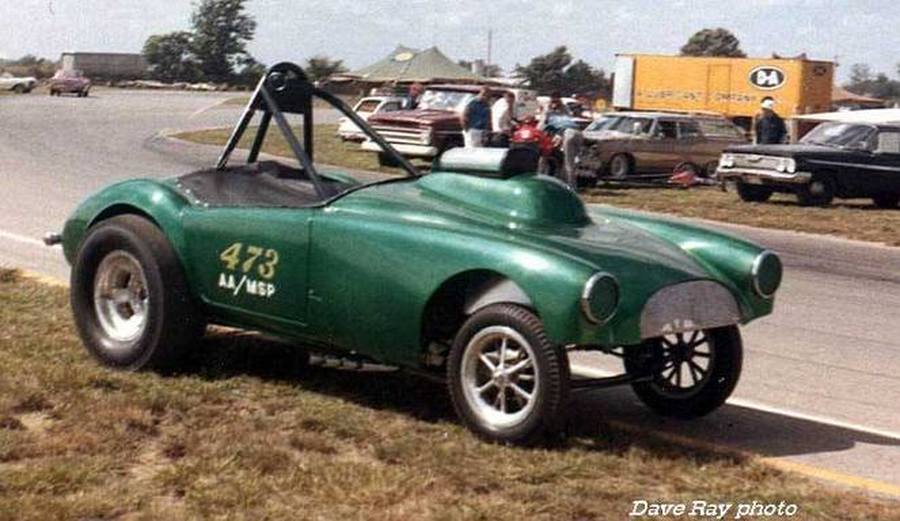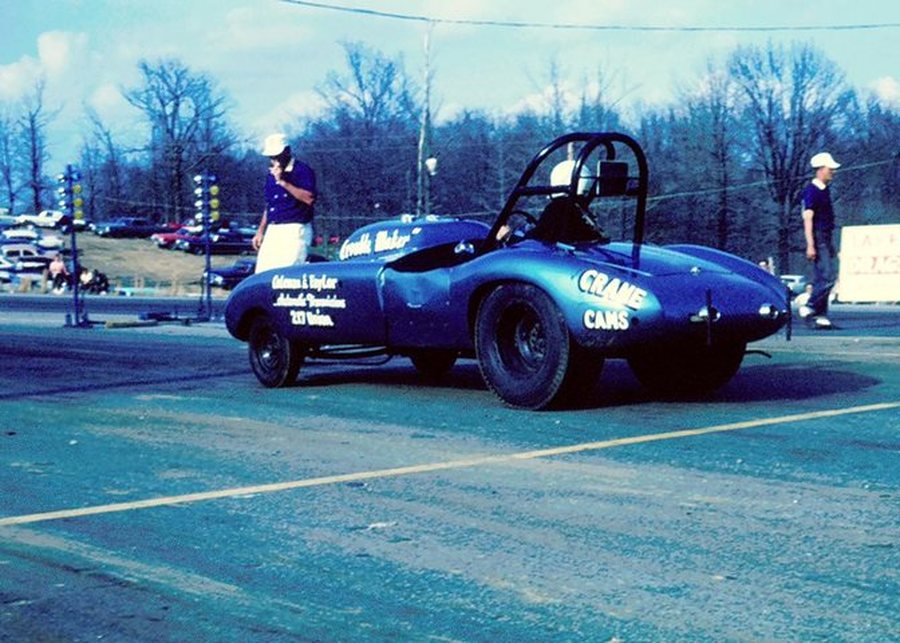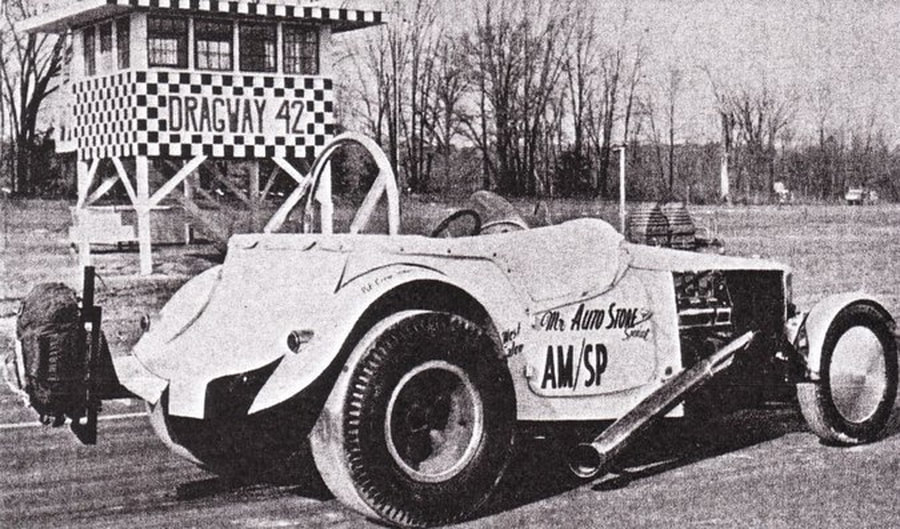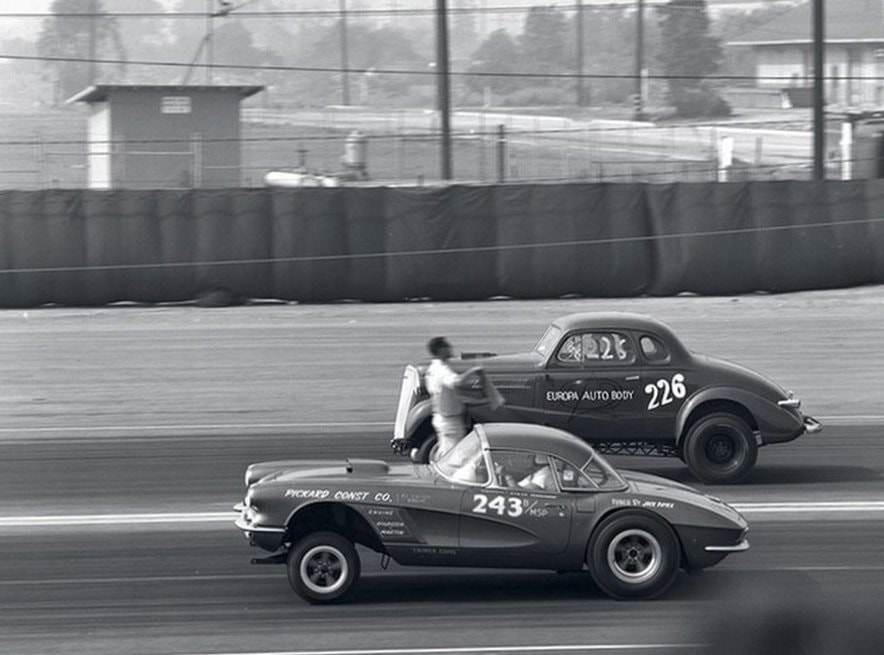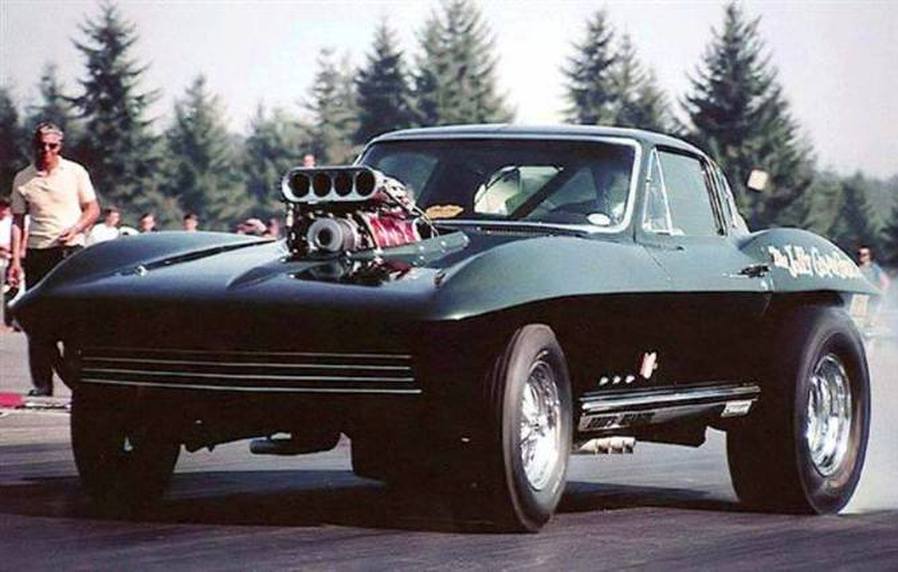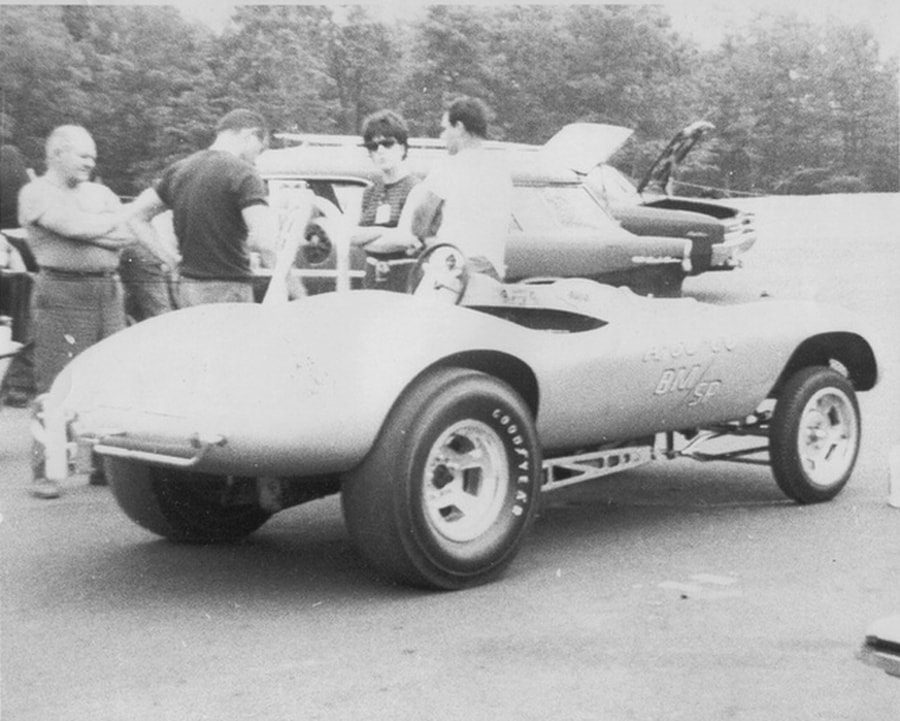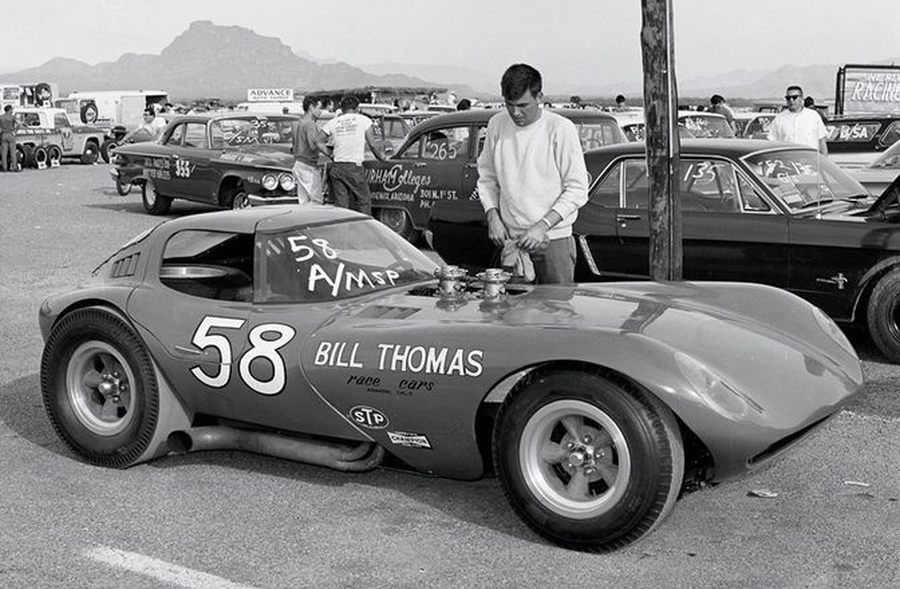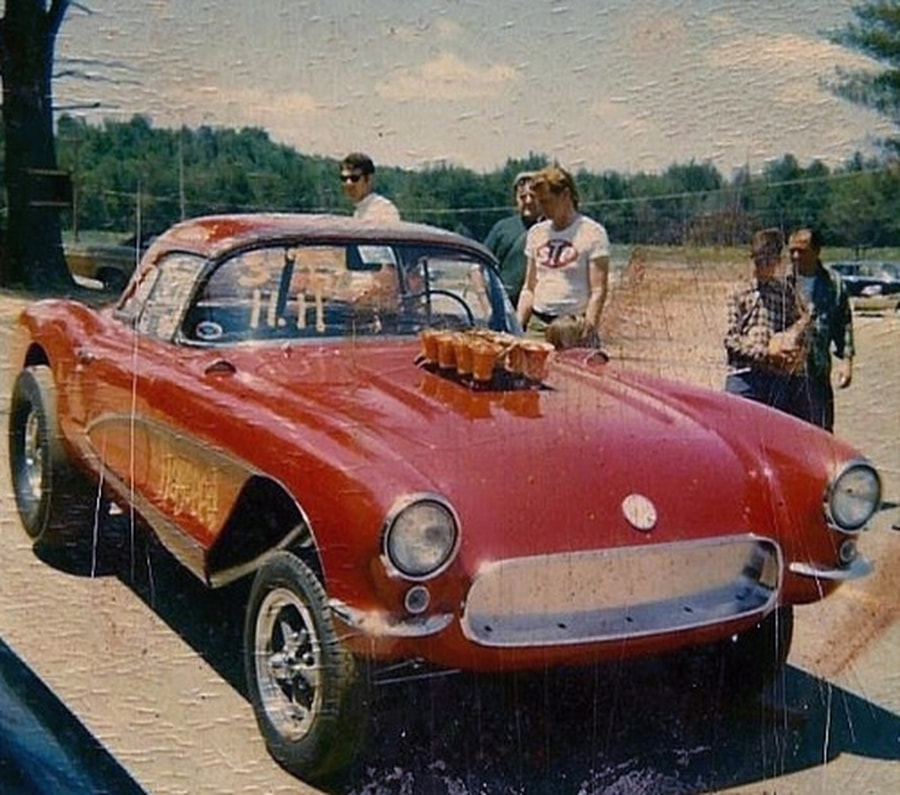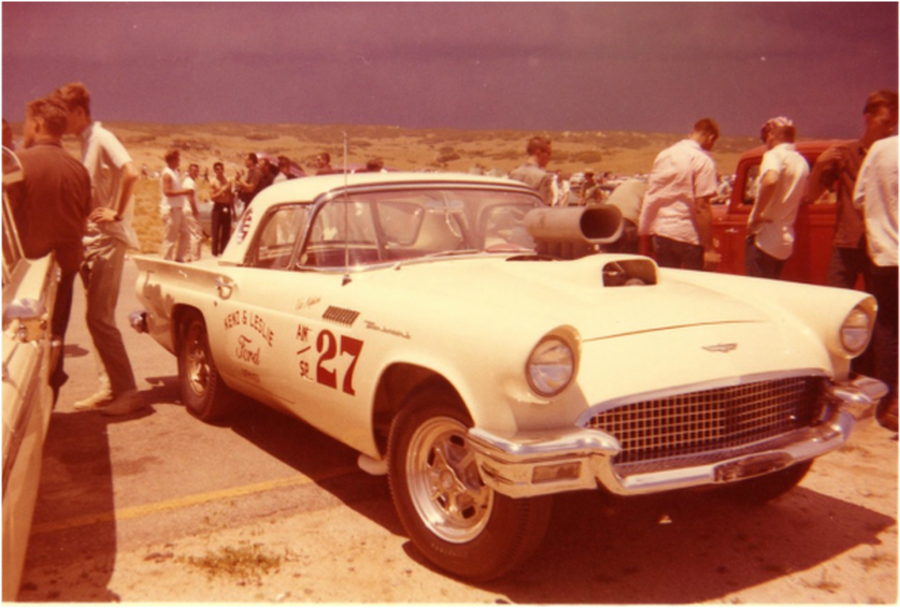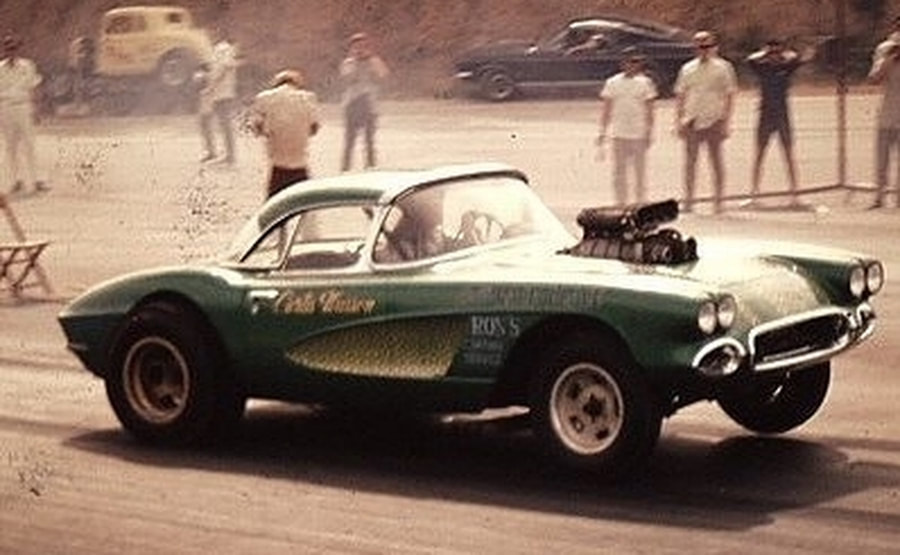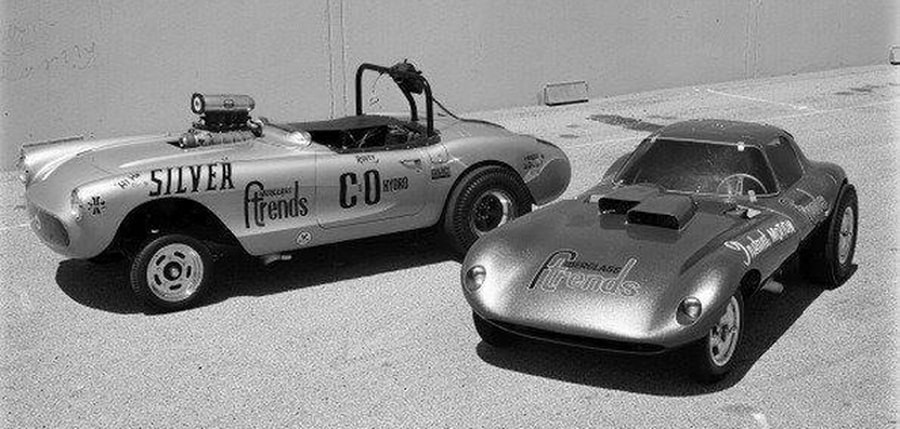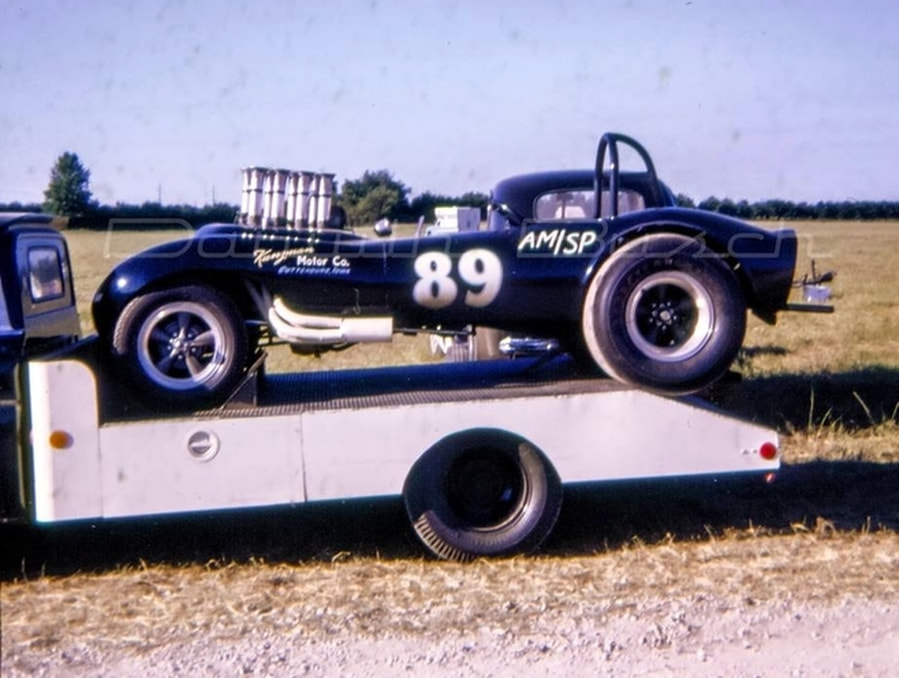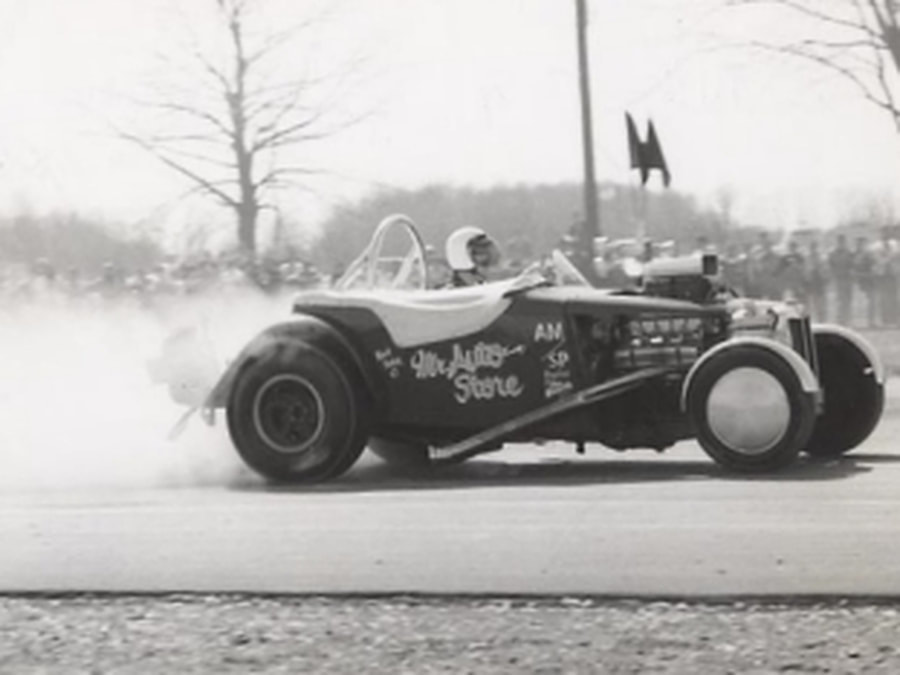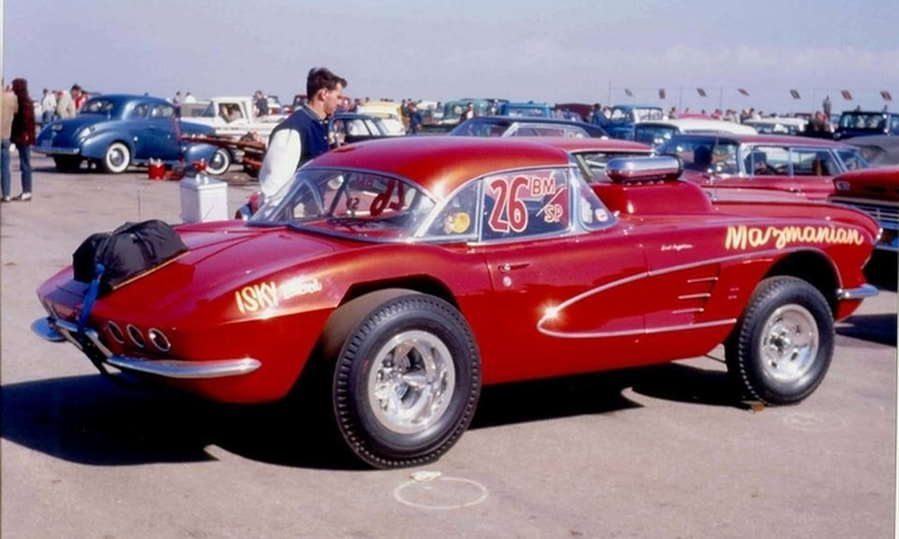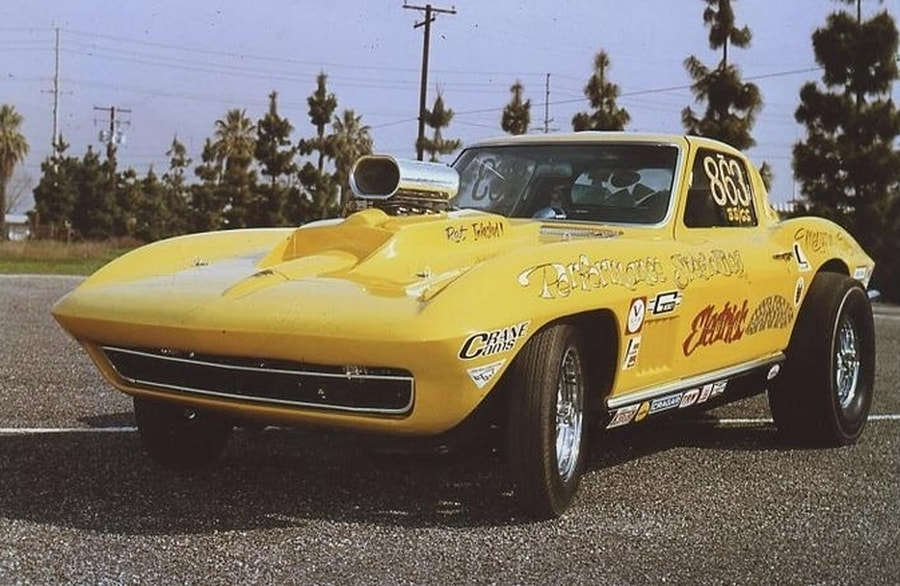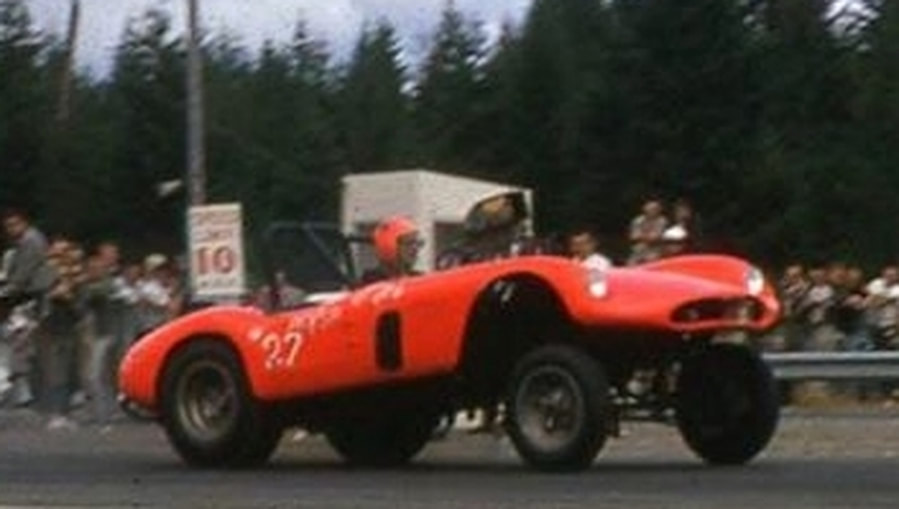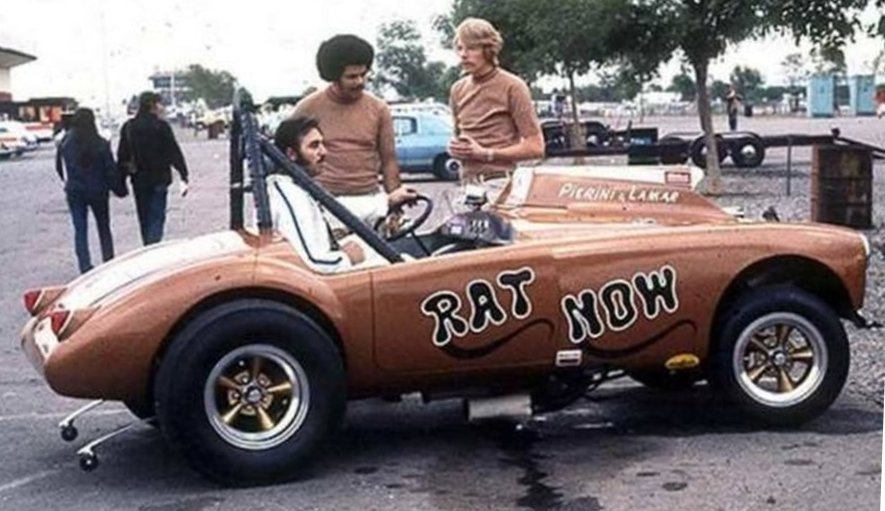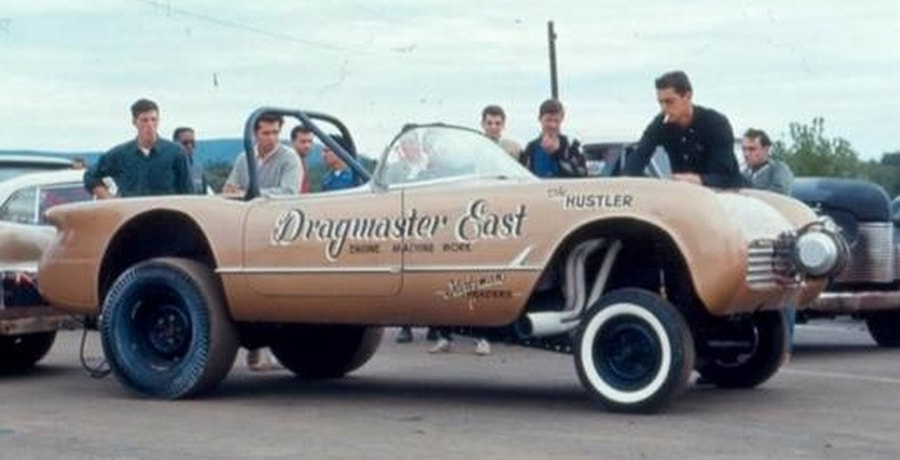MODIFIED SPORTS CARS
I think it's finally time to give the Modified Sports Cars their own page. Since this site came on line in 2013, I had the Modified Sports Cars imbedded into the Gasser class page. But, it was a popular class and there were plenty of neat cars in the class, and so now it's time to pull them off the Gasser page and let them stand alone. In this way, we can showcase the class and at the same time, speed up the load time of the Gasser page.
The class rules for Modified Sports Cars were very similar to the Gasser class rules and in fact, many of these cars could legally run in either class if they so chose. Open cars with non stock engines and other non OEM components usually were required to run in one of the Modified Sports Cars classes but in many cases, sports cars with tops could switch back and forth between a Gasser Class or one of the Modified Sports Cars classes.
Regardless of whether the class designation on the photos below showed that they were running in one of the Gasser classes, they were by my definition, Modified Sports Cars first and foremost.
The class rules for Modified Sports Cars were very similar to the Gasser class rules and in fact, many of these cars could legally run in either class if they so chose. Open cars with non stock engines and other non OEM components usually were required to run in one of the Modified Sports Cars classes but in many cases, sports cars with tops could switch back and forth between a Gasser Class or one of the Modified Sports Cars classes.
Regardless of whether the class designation on the photos below showed that they were running in one of the Gasser classes, they were by my definition, Modified Sports Cars first and foremost.
At the time this photo was taken, this 'Vette was not competing at a NHRA National Event. Just looking at the background can tell us that. This track probably did not have a Modified Sports Car class, so the car owner put the car into an Altered class instead...
Yeah, I know. Another 'Vette...
A Kaiser-Darrin, with a Big Block Injected Chevy. This is the only one I have ever seen set up for Drag Race competition...
Some serious engine set-back on this B/MS Sports Car...
Austin-Healy's were pretty popular with the Modified Sports Car racers. Yank out the original 4-cylinder engine and install a V-8. In looking at this photo, it shows one of two possibilities. Either the Sports Car was late, or the Gasser left early...
I suspect that some of you are tired of all the Corvettes in this section. If such is the case, this T-Bird may help a little...
A naturally aspirated Small Block powers this 'Vette...
At my age, there would be no way for me to even get into a car with the roof as low as it is...
I know nothing about this car, other than it's equipped with an aftermarket fiberglass body. I do think that it was a local (as in SoCal area) race car. The UDRA (United Drag Racers Assoc.) was pretty much created in the L.A. area. I have to laugh at the X drawn through the NHRA decal, with a "thumbs down" over it...
Here is another V8 powered MG Sports Car, set up for drag racing in the Modified Sports Car class. Most of the ones that I have seen used the Small Block Chevy engine, so I assume this one does too. Note the headlights, rotated to aim to the rear. I'm sure that is to gain some aerodynamics since the back of the headlight buckets are more pointed...
Not every Modified Sports Car was supercharged, this light weight Devin bodied B/MS car powered by a Small Block injected Chevy engine...
If you take this taxi home from the airport, you can forget about your luggage...
Joe Lunati...
A British MG. Well, it is a Sports Car, and it is Modified. End of story... (Photo from Petersen Archive)
Although this 1957 T-Bird is running in the Altered class, I have little doubt that it would not also be eligible to race as a Modified Sports Car...
A British MG, Chevy powered...
An early 'Vette. I do hope the driver straightens the front wheels out before the front end settles down on the track...
An interesting situation with the Modified Sports Car Class. It was probably the only NHRA class that had vehicles that would also be able to mix it up with Match Racing cars that were sweeping the nation in the early 1960's. You have to remember, Modified Sports Cars was a class that only ran at NHRA National Events. Local or regional events rarely had specific classes for these kinds of cars. The first NHRA National Event was the NHRA Nationals, created in 1955. That was it until the NHRA Winternationals was created in 1961. After that, it wasn't until 1965 that the NHRA Spring Nationals was introduced. So technically, from 1955 up to 1960, there was only one NHRA National Event every year. And from 1961 until 1964, there were only two NHRA National events a racer could attend every year. Mod Sports Car racers were not about to leave their race cars in the garage all year long, so when the world of Match Racing took hold, they had a place to race all over the county, and they could also make some money...
Two of the most dominant supercharged Corvette's to ever go down the track. Pomona, California, with Big John Mazmanian's on the left, and J&J Muffler in the near lane...
Norm Cowdrey and his incredible Austin-Healey, storming off the starting line at Lions Drag Strip...
An interesting fiberglass sports car body offered by Logghe Stamping, out of Detroit, Michigan. Big block Chevy power for owner Ron Farkas...
From across the pond, a British MG sports car, makes a nice street roadster race car. The spare tire is a nice touch. I bet that tire has more than just air in it, maybe a few small blocks of lead. Also note the license plate. I'm thinking that it might be a little too noisy as a street cruiser...
A duplicate of the Cheetah sports car, the Fiberglass Trends G.T.R...
This swoopy body is not a fiberglass design, it's an English MG-A. These cars were manufactured between 1955 and 1962. The owners, Art Ward and Roger Guzman, out of Colorado, turned it into a serious AA/Modified Sports race car...
A 1958 Corvette, owned by Nick Marshall. Not as much sparkle or chrome as John Mazmanian's bright red 'Vette, but with "Bones" Balough in the driver's seat, this was the only sports car in the neighborhood (SoCal) that could challenge Big John. "Bones" built the engine, too, a little 283 inch small block Chevy with a windmill on top...
You didn't need a blown Chrysler engine to race in the Modified Sports Car Class. This early 'Vette (a '54 or '55) is running in E/Modified Sports class. Based on the off-set air scoop on the hood, I would bet that the engine is a hopped-up Straight-6 Chevy (or GMC)...
The class is called Modified Sports Car. No one can say this Corvette has not been "modified"...
In the right lane, a Thunderbird with a lot of horsepower. In the left lane, a Devin bodied sports car with less horsepower. More HP and more weight in the right lane, less HP and less weight in the left lane. That's the way it works...
A Modified Sports Car. The NHRA rules were basically the same as the rules for the Street Roadster Class, except that the frames did not need to look like a "stock" sports car. The faster and quicker cars used one-piece fiberglass bodies...
Singer Motors Limited was a British motor vehicle manufacturing business, originally a bicycle manufacturer founded by George Singer, in 1874 in Coventry, England. By 1901, Singer began to make cars and commercial vehicles. This roadster was produced in the early 1950's. The company eventually folded in 1970...
The Shelby Cobras were popular in the NHRA Sports Car classes, but almost non-existent in the Modified Sports Car class. Here is one of the exceptions...
"His Honor", the Mayor of the City of Industry. A Kurtis 500 Sports Car, and licensed for the street...
A fiberglass replica of a Bill Thomas "Cheetah"...
My first thought on this car was that it was built out of an Austin Healy sports car. But the more I look at it, now I'm not so sure. Maybe it was a foreign sports car that I've never heard of, I don't know. But it's pretty neat, don't you think?
The popular Devin fiberglass body came in several different lengths, depending on which chassis you wanted to use. I have no idea on this car which chasisis was under the body, but I do know that it was powered by a 409 Chevy engine...
The big difference between a Hemming Bird and a Humming Bird is that the Hemming Bird does not stand still and flap it's fenders real fast...
Sorry, I have no clue about the body on this car...
I've been asked how come I post so many photos of Corvettes in this section? The reason is simple. For every Devin Bodied Austin Healy and Kellison Bodied something else, or Kurtis 500 (I'm aware of only three that were drag cars) there were litterally hundreds and hundreds of 'Vettes in this class. In the NHRA Stock Classes, there were classes for Stock Sports Cars, 98% of which were Corvettes. Almost any modifications you made to a Corvette automatically put you in one of the Modified Sports Car classes. Plus, I like Corvettes...
This is also a Corvette...
An Astra fiberglass body over a customized chassis. This brand of body was manufactured in Sacramento, CA...
Yes, it's another Corvette. Saved from becoming a very valuable collector car for someone in the future by turning it into a race car. If we only knew back then what we know now..
This 'Vette appears to be less modified than the one above. The license plate and the rear view mirror might mean that it still saw some street service when the drag strip was closed during the week...
This one caught me by surprise, I didn't know if it was a Sports Car or a tractor. As it turns out, it is a Bantam Roadster and that is the original grille. I don't know about the engine although, to fit into the D/MSP class, I'm guessing the engine displacement is small (or maybe a 4-cylinder). I'm also guessing that the driver is rather tall, judging by the height of the roll bar...
The Devin bodied sports car "Moonbeam", owned by Dean Moon, the founder of Moon Speed Equipment. Devin bodies were produced by Bill Devin, from SoCal, between 1955 through 1964. They were primarily replacement body kits, suitable for mounting on various stock chassis. At one time (1957), Devin built complete sports cars for a company located in Ireland. These were powered by small block Corvette engines and called Devin Super Sports (or S/S) or sometimes called "Super Shillelagh" (pronounced shi-lay-lee). Dean Moon's car was a built over a square-tube frame and powered by a Potvin crank driven supercharged Chevy small block, and designed to be competitive in the A/MSP drag class and also for Dry Lakes and Salt Flats competition.
As a side note, famed spots car racer Ken Miles once took me for a ride in a factory fresh Super Shillelagh through the streets of North Hollywood, and had we been apprehended by the police (Ken had the car over 140 mph on Lankersham Blvd.), we would both have been in jail. The memory of that ride is still one of the highlights of my life...
As a side note, famed spots car racer Ken Miles once took me for a ride in a factory fresh Super Shillelagh through the streets of North Hollywood, and had we been apprehended by the police (Ken had the car over 140 mph on Lankersham Blvd.), we would both have been in jail. The memory of that ride is still one of the highlights of my life...
Who wouldn't love to have a 'Bird like this to play with today?
There had always been some controversy as to what constituted a "production" body in the Modified Sports Car Class". Even a totally custom, hand made, one of a kind body had to be "produced" by someone. Not the case with L.C. Kirby's supercharged Caddy engined Bandini bodied race car, it was a well known (in Italy) sports car body built for racing (with a tiny 4-cylinder engine)...
No getting around it, this is one tough looking Vette...
Yes, it's another modified Corvette. There are some guys that are not satisfied at having a Corvette sports car to drive around on the weekends, or to use to pick up chicks. They would rather go drag racing instead. (I have never completely understood guys like that.)...
A big block Ford FE engine under the hood. And speaking of the hood (a lift-off hood), it looks a little "thin" doesn't it?
The fiberglass sports car body market must have been a huge back in the day, because there were so many companies that offered these bodies, in all shapes and styles. Some were great looking, and some not so much, but any of them made for great bodies for the Modified Sports Car classes. This car is Gordon Matney's 427-inch big block Chevy powered A/MSP. I have seen the body design of this one before but I can't remember the name of the company, sorry...
The Cheetah Sports Car. Originally built by Bill Thomas from Anaheim, CA with assistance from General Motors, for sports car racing, between 1963 and 1966, several were also used for drag racing. The bodies were fiberglass and a couple other companies duplicated the design, so I can't tell if this car was an original Bill Thomas car or not...
I can't identify the body, but it makes for a pretty sleek race car. Roger Denney, who I believe hailed from Iowa, was also known for racing a Pro Stocker a few years later...
Although it looks like a Corvette, I'm pretty sure it's actually a light weight replica body, manufactured by Fiberglass Trends...
Well, it's a Modified Sports Car, don't know who's it is or the manufacturer of the body...
Purists may say that Thunderbirds were never truly a sports car. I say phooey on that, I think they fit right in with anything else in the Modified Sports Car classes. This 'Bird looks kind of nasty, don't you think?
The Corvette first appeared in 1953, powered by a straight-6 engine. I'm guessing that the engine in this 'Vette is a V-8. If I remember, the '53 'Vette was the first production vehicle to have a full fiberglass body...
The lightweight fiberglass bodies that were typically used in some of the Modified Sports Car classes were so small, it appeared as if the drivers were sitting ON the cars instead of IN the cars. Must have felt like they were driving a very high horsepower potato chip...
A purist would cringe, but this Thunderbird makes a great Modified Sports Car. Of course, the day of using it as a street car is long gone...
Standing next to his '58 Corvette is Robert Balogh (better known as "Bones"). Power came from a 6-71 supercharged 327-inch small block Chevy. This car won it's class in 1960 at the NHRA Nationals in Indy, and then repeated that feat over the next few years, before Bones joined up with the "Big John" Mazmanian team...
A couple of Kurtis 500 Roadsters. These were not inexpensive sports cars and they were used more often for sports car racing. The only two that I knew of that were converted into drag cars were Sam Parriot's from SoCal (#520) and one Art Hocking from somewhere else (#642). So, what were the chances that they would wind up racing each other, at the 1960 NHRA Nationals, held at the Detroit Dragway? Sam won...
Neil "Pappy" Ellis and his nasty Modified Sports Car. The chassis was built by Logge but there has always been some question about the one-piece fiberglass body. Some people felt it was a cut-down Cheetah, or maybe a custom piece by the chassis builder, but I think it was a Kellison body...
Over the years, many people have replaced the stock 4-cylinder engine in MG's with small block (Ford or Chevy) engines to give the little cars new life. Some became all out race cars, like this MGA. The MGA was produced from 1955 through 1962, so they were plentiful. I don't know what engine powered this car out of Texas, but whatever it is, it sure does make a great Modified Sports Car...
Kellison offered some swoopy sports car bodies. I'm going out on a limb here but I'm betting this car is powered by a Chevy 409 engine...
Yup, another Corvette. You could say that this car has a pretty nasty looking engine under the hood, if it had a hood. Although I understand the reasoning for mounting the fuel tank in front of the engine, having it stick out like this, where it could be ruptured if the car ever nosed into the guard rails, is flat-out unsafe...
Modified Sports Cars do not have to be super radical, they just need to be modified. The installation of the 409 Chevy engine makes this a Modified Sports Car...
Not every Modified Sports Car class racer had an exotic one of a kind, super trick, race car. An MG with a V-8 engine qualified for the class, as well as an early 'Vette ('53 to "55) with a non-stock windshield...
Modified Sports Car or Match Race car, tough to tell. The body is a Kellison Astra all fiberglass coupe. This killer car (the "Stinger") is a team effort of Roger Hardcastle and sometimes driver Pat Akins. Gary Sutherland also drove. I have heard that this car was capable of running 200 MPH in the quarter mile...
The description of the body on this Modified Sports Car would be "swoopie"...
A lightweight Devin fiberglass body and a Chevy engine for power...
Not as prolific as the "Vette, many Ford Thunderbirds found their way into the Modified Sports Car classes too. I don't know if this car was powered by the Ford Wedge engine or the SOHC mill...
Not sure what to make of this 'Vette. The windshield has been modified to facilitate a drastic engine set back, but the engine looks to be in the normal location (I believe the engine could only be moved back about 10% in this class). And then there is the roll bar mounted behind the top. At any rate, it does look kind of nasty, doesn't it?
Looks like a '55 Thunderbird to me...
Not a whole lot of MG left on this race car. Big Block Chevy for power. Cars like this could find a home in the Modified Sports Car Class or even the Altered Class. Damn, I miss this track, and I sure as hell miss the burgers from that snack bar. The people that ran that snack bar went on to form the In-and-Out Hamburger chain, but I liked eating my burgers and watching the cars go down the track at the same time...
So, what's the difference between the Modified Sports Car class and the Street Roadster class? Not much, really, especially with the open body sports cars. If I recall, I think that the NHRA rules for the chassis were slightly more "open" in the M/SP class, but that's about it. In reality, the open Modified Sports Cars could be called "street roadsters" with curves...
An Austin Healy. The body and engine kicked up for better weight transfer (along with poorer handling and higher drag at the top end)...
An early Corvette, '53-'55 model. It's riding a little high but traction being what it was back then, racers did what they had to do to get more weight transfer to the back tires. Fuel tanks sticking out in front of the car like this eventually got NHRA's attention as a potential safety issue and they mandated some kind of "frame" around the tanks to "protect" then in the event the car tangled with a guard rail, or a tree if there were no guard rails. Many of the frames around the tanks that I saw would bend if you just leaned on them...
An injected Modified Sports Car running in the C/Altered class...
The A/MS "Hobo", running as an Altered at this event...
From this perspective, you can see just how small some of the Modified Sports Cars were. It makes it look like Joe Lunati is wearing the car rather than driving it...
Sometimes it was easier, less costly and quicker to build a Modified Sports Car out of an existing sports car, like this English MG. A small block Chevy under the hood, a beefy rear end and a hunk of channel iron for a push-bar/ballast...
Speaking of MG's, here is another one...
What was most likely the race of the day in the Modified Sports Car class that day, Howard Weaver in his '53 MG (blown Chevy power) takes a slight lead out of the hole over Sam Parriot and his blown Cadillac powered Kurtis sports car. At the time, Sam was the Mayor of the City of Industry in SoCal...
X marks the spot. Doug Thorley's Corvette. This car was originally built for the Salt Flats and then re-fabbed into a drag car. It was driven by Doug himself and sometimes by Terry Hedrick.
Now, you see that little white building? That's the hamburger shack at Irwindale Raceway and the couple that operated that little shack are the couple that started the In-N-Out Hamburger chain in SoCal...
Now, you see that little white building? That's the hamburger shack at Irwindale Raceway and the couple that operated that little shack are the couple that started the In-N-Out Hamburger chain in SoCal...
One of the best things about the early years of drag racing is that most of the cars in the Gasser, Street Roadster, and Modified Sports Car classes were not purpose-built race cars, they evolved from regular street driven machines. Such is the case with this 1957 Fuelie 283 Corvette, owned by Dick Taylor. Dr. Taylor was a dentist in Pasadena, CA, which gave him the opportunity to stop by Service Chevrolet (also in Pasadena) for an occasional tune-up, where he met the guy running the in-house chassis dyno, one Don Nicholson. Every time that "Dyno Don" found a little more power in the Fuelie engines, all the local 'Vette guys would bring their cars in for another tune, and Dr. Taylor was usually first in line. Through Don, Dr. Taylor met other racers, like Dick Bourgeois and Earl Wade. This neat C/MS raced at the NHRA Winternationals and also at the Nationals, taking class wins several times, sometimes driven by Dr. Taylor and sometimes by Earl Wade. The engine evolved into a 331-inch, Hilborn injected engine built by Earl Wade, a race car that included license plates, radio antenna and side mirrors, just the way it started life...
Looks like a Devin bodied sports car with an injected engine and a super tall roll bar...
Not just another pretty 'Vette, this was a high profile, kick-ass car owned by the "Marrs Boys", brothers Mel and Walt Marrs. A regular at the SoCal drag strips, eventually sold to a racer in Ohio...
Could this be a street/strip sports car? It's possible, looks like a full windshield and possible mufflers. This is a Logghe Brothers built car. The first one was built in 1959 for Road racing and the body molds were used in the mid 1960's to build a few Modified Sports drag cars for racers in the Detroit area... (thank you Ralph Pitlock for the information)
A right-hand drive MG. For those of you that might be asking about the weird headers, before NHRA relented and permitted independent primary tubes, they required some kind of a collector at the end of the headers for the Gasser and Modified Sports Car classes. Drag racers, being the clever lot they were, knew how to get around the "collector rules" with ease...
Looks like a pretty formidable Modified Sports Car combination. A supercharged Chrysler hemi and a light weight fiberglass body (possibly a Devin). The owner-driver is Les Barath, who raced a Simca Gasser before building this beast. This photo was taken at Irwindale Raceway. The reason we never heard much about this car is that at some time after this photo was taken, it was stolen and never recovered. What a shame...
Why look, it's another blown Corvette. Of course, being pretty much the only true American built sports car did give them an edge in that regard...
The J&D Corvette, run by Runyan & Grissom, wheels-up at Lions. Although you can't see it in this photo, there's a big supercharger sticking up through the hood. Cars like this were not actually built to fit into NHRA's Modified Sports Car class, and I don't know for sure if this car would even fit into that category (engine set-back may be too far back). It was built for the match race circuit. However, it is a sports car and it is modified, and it was fast as hell, and that's good enough for me...
Although this car looks like it might be a Gasser, it was originally built to fit into the Modified Sports car class. It's a 1953 French built Simca Sport, and it is very rare. There are only a very few left in the world. Power comes from a blown 392 hemi Chrysler. The car is named "Freedom Fighter", an appropriate name since the car owner, Les Barath, of Pasadena, CA, is a Hungarian immigrant. I understand that Mr. Barath still has this car and it's NOT for sale...
A little diversity in the Modified Sports Car class. A supercharged '57 Thunderbird going up against a naturally aspirated Devin bodied car...
When it came to the Modified Sports Car class, it seemed as if the majority of cars were Corvettes. In many cases, a legal car for this class could also run as a legal Gasser class car, too...
In 1962, NHRA made a change in the rules for the Modified Sports class that would preclude many cars from crossing over into a Gasser class. Gassers were required to use the stock frame, where as the Modified Sports cars could utilize any frame, meaning they could use a light weight tube chassis...
A "little red Corvette", just like the song goes, complete with a factory windshield...
Even before the nice green paint job, this Austin-Healy was a nasty looking car. The engine is jacked up high to improve weight transfer, which improved traction. Back in the day there was no such thing as a "prepared track". A prepared track in the '50's and '60's meant that the rain had stopped and we could get back to racing...
The Cheetah was a sports car designed and engineered entirely with American components, and built from 1963 to 1966 by Chevrolet performance tuner Bill Thomas. It also made a great drag car...
It may be running in the C/D class, but it's a Modified Sports Car at heart...
There was always a lot of leeway as to what constituted a production sports car. Almost any of the aftermarket fiberglass body shells that were available at the time qualified as legal for the Modified Sports car class...
Okay, I had better start with this car. This class was full of Corvettes, and some Thunderbirds, and a few British sports car. There were also a ton of fiberglass body cars by many different manufacturers. A few of them I can recognize, like the Devin bodied cars, but there are many that I just can't place. This is not a fiberglass body, this one is based on a Crosley Hot Shot...
Well, everyone knows what kind of car this is, right? Right? Of course, it's L.C Kirby's Italian Bandini with a blown Cad under the, ugh, well, it's a blown Cad...
Another killer Austin Healy...
In a sea of Corvettes, a '55 Ford Thunderbird...
Big John Mazmanium's 'Vette...
Kenz & Lesley's '57 T-Bird...
In the far lane is Sam Parriot's Kurtis-Kraft 500, with a supercharged Caddy under the hood. And in the near lane is.......I don't have a clue...
Joe Lunati's Devin bodied sports car, a very popular body style...
The left lane at San Fernando Drag Strip. No guard rails of course, just a chain-link fence and sometimes some hay bales. Going off the track on that side usually resulted in dropping down 30 feet or so to the bottom of a concrete river bed. I have raced down that side of the track numerous times, and it never once crossed my mind...
A very rare blown Cadillac powered Kurtis sports car, driven by his honor, Sam Parriot, the Mayor of the City of Industry, a town in Los Angeles County. Kurtis was a major builder of Indy 500 cars...
I believe this is a Kellison fiberglass body...
A dragster versus a Modified Sports Car. Unfair? Well, the Sports Car is supercharged, and the dragster isn't...
I believe this is a Simca, a French built sports car, or possibly an Allied fiberglass body car...
A fiberglass Glasspar bodied car...
A couple of full fenderd English MG's, V-8 power of course...
I have to say something about this roll bar. In the early days, I saw a lot of open cars with square cornered roll bars, there was nothing illegal about them. Perhaps there was nowhere in some of the smaller towns to find someone with a tube bender for heavy wall tubing. The problem was that there were only a few tracks with guard rails in those early days, and if you went off the track and turned over, the square corners would dig into the dirt or grass and the car would barrel roll many, many, many times before coming to a rest. Winding up with a bad headache was the least of your worries...
A couple of "partially" fenderd MG...
The spare tire is a nice touch. Do you think it might contain some disguised ballast?
I'm not really up on early sports cars, but I think this is a Simca, too...
The "Assasination", a British MG-A sports car...
A beautiful Devin bodied car, "Mooneyes"...
The tower side spectators bleachers at Lions Drag Strip. Spectators could sit close to the track. I mean they could sit VERY close to the track...
Well, I don't know what car or body this is, but I know it has license plates so it's a street/strip sports car. The track is Paradise Mesa Drag Strip, near National City, CA. The track opened in 1951 and closed for good in 1959...
Purple...
A Jaguar XKE...
Raising the engine up, as shown on this Devin bodied sports car, did increase traction. But it got to a point where NHRA stipulated that the height of the front of the crank shaft could not exceed 24-inches above the ground...
The story going around was that the tax payers in the City of Industry were apparently (and secretly) subsidizing Sam's race car. This did not go over too well from what I've heard...
An early Corvette, '53-'55 model...
Could be a Bocar Stilleto...
Here's something you don't see every day at a drag strip, a 1954 Maserati A6GCS. This photo was taken at Island Dragway, NJ, in 1963. The car left the factory in Italy on 9/28/54 and was displayed at the 1954 Paris (France) Salon Auto Show and then sold to a dealer in the U.S.
Harry Mark of Riverton, NJ owned the car from 1958 through May, 1960. It was raced in SCCA races at Virginia International Raceway in 1958 and 1959.
James Kinsler bought the car in 1960 for $1,450, including the trailer. The car was complete less engine (it had dropped a valve). Kinsler installed a Hillborn injected small block Chevy and raced the car in regional SCCA events at Bridgehampton, Marlboro, VIR, Courtland and at the Chimney Rock Hill Climb in North Carolina. He crashed the car at VIR in 1962, wiping out the front end. He made a tip-up, lift-off fiberglass front body clip. Set up for drag racing in 1963, Kinsler installed a 6-71 supercharger with Hillborn injection. He won Middle Eliminator bracket every weekend at Island Dragway in 1963, and was the Runner-Up at the NHRA Summer Nationals.
Kinsler installed twin intercooled turbos with Kinsler Injection in 1965. The car reverted back to road racing at Mid Ohio and at the Empire Hill Climb in MI, between 1965 and 1966. It became inactive after that.
Kinsler sold the car to a gentleman in St. Louis, MO in 1984 who eventually sold it to a gentleman in England. An original A6GCS engine, transmission and rear end were acquired and the car was restored to it's original specifications and sold to Rudy Pas in early 1986. It was sold again to Jean Jacques in Leon, France where it resides today...
Harry Mark of Riverton, NJ owned the car from 1958 through May, 1960. It was raced in SCCA races at Virginia International Raceway in 1958 and 1959.
James Kinsler bought the car in 1960 for $1,450, including the trailer. The car was complete less engine (it had dropped a valve). Kinsler installed a Hillborn injected small block Chevy and raced the car in regional SCCA events at Bridgehampton, Marlboro, VIR, Courtland and at the Chimney Rock Hill Climb in North Carolina. He crashed the car at VIR in 1962, wiping out the front end. He made a tip-up, lift-off fiberglass front body clip. Set up for drag racing in 1963, Kinsler installed a 6-71 supercharger with Hillborn injection. He won Middle Eliminator bracket every weekend at Island Dragway in 1963, and was the Runner-Up at the NHRA Summer Nationals.
Kinsler installed twin intercooled turbos with Kinsler Injection in 1965. The car reverted back to road racing at Mid Ohio and at the Empire Hill Climb in MI, between 1965 and 1966. It became inactive after that.
Kinsler sold the car to a gentleman in St. Louis, MO in 1984 who eventually sold it to a gentleman in England. An original A6GCS engine, transmission and rear end were acquired and the car was restored to it's original specifications and sold to Rudy Pas in early 1986. It was sold again to Jean Jacques in Leon, France where it resides today...
